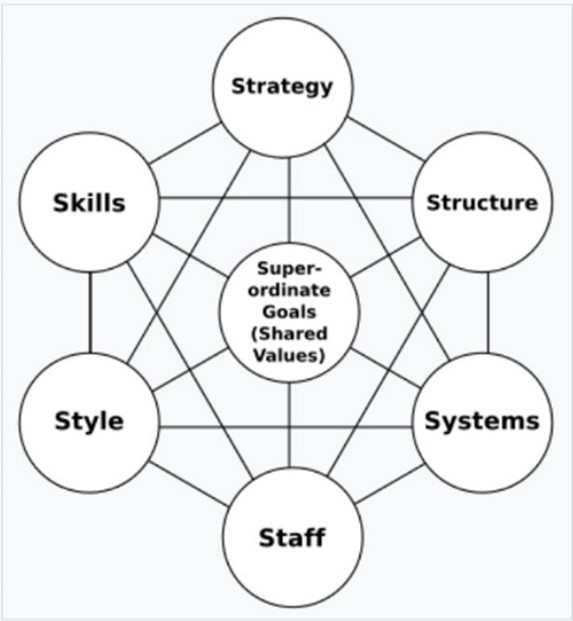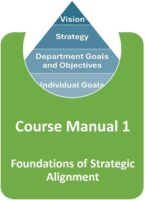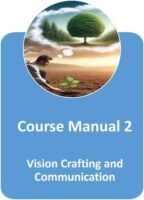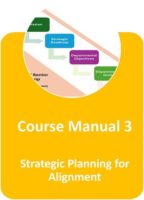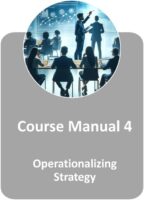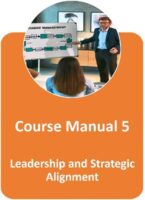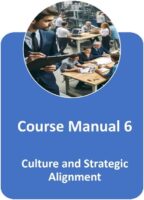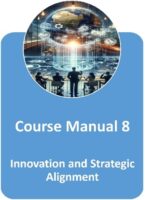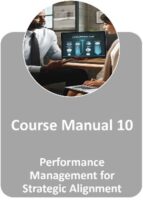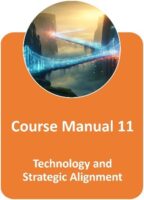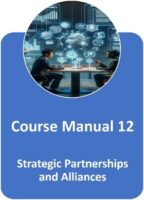Business Operational Excellence- Workshop 2 (Strategic Alignment)

The Appleton Greene Corporate Training Program (CTP) for Business Operational Excellence is provided by Mr. Cody Certified Learning Provider (CLP). Program Specifications: Monthly cost USD$2,500.00; Monthly Workshops 6 hours; Monthly Support 4 hours; Program Duration 18 months; Program orders subject to ongoing availability.
If you would like to view the Client Information Hub (CIH) for this program, please Click Here
Learning Provider Profile

Mr. Cody is a Certified Learning Provider (CLP) at Appleton Greene. He is a highly professional and accomplished individual with diverse skills and expertise. This enabled him to start a reputable consultancy business offering a comprehensive suite of business growth-enabling services across a range of diverse industries. These services encompass Engineering, Lean & Operational Excellence, Leadership Development, and Training Programs.
With a proven track record of success, Mr. Cody has demonstrated his exceptional leadership abilities and strategic acumen while fostering strategic partnerships to execute departmental and organizational initiatives and drive change. His coaching, mentoring, and training capabilities have empowered talent to develop their technical and professional capabilities, resulting in improved performance.
Mr. Cody’s proficiency in financial forecasting and budgetary strategy has played a crucial role in creating and managing business strategies, including goal-setting at individual and departmental levels. He has overseen and led numerous high-value projects, encompassing technical, operational (lean), quality, validation, logistical, and behavioral aspects.
With a strong focus on Operational Excellence, Mr. Cody has spearheaded cultural engagement initiatives, driving Lean, Six Sigma, SPC, 5S, standard work, and visual management practices. He excels in resolving complex engineering problems, implementing technical process improvements, and reducing waste through data-driven improvement methodologies.
Throughout his career, Mr. Cody has been instrumental in developing and executing operational policies and procedures, particularly in the areas of quality and regulatory compliance. He has taken ownership of multiple CAPA events, quality risk management, GMP, and quality documentation, ensuring adherence to the highest standards.
Mr. Cody’s extensive professional experience extends beyond his consultancy business. His previous roles include leadership at Abbott Laboratories, an American multinational medical devices and health care company, where he demonstrated his project management skills and successfully executed multifaceted projects. He had similar success in the automotive industry.
Education-wise, Mr. Cody holds a Bachelor of Science Honors Degree in Computer-Aided Manufacturing, together with educational awards in Leadership, Digitization of Manufacturing, Manufacturing Technology, Mechanical Engineering, and Agriculture. These qualifications and his continuous pursuit of knowledge have equipped him with a well-rounded skill set.
Furthermore, Mr. Cody has authored several white papers on topics related to the manufacturing industry, covering subjects such as Operational Excellence, Product and Process Lifecycle, Cost Reduction Opportunities, Effective Design Solutions, Leadership Effectiveness, and more. He is also Six-Sigma Greenbelt certified and has actively mentored other employees on their journey to certification.
Mr. Cody has participated in various professional programs and courses, including the Mindful Leader, Six-Sigma, Financial and Supervisory Excellence Programs in addition to Abbott-specific courses such as the “Fast Track 50 Program” for high-potential future leaders and the Abbott Leadership Excellence Program (LEP). He possesses extensive experience in utilizing Microsoft applications and has a passion for travel, having visited over 50 countries.
With a solid foundation of experience, knowledge, and a results-driven approach, Mr. Cody is well-equipped to contribute to the success of any business.
MOST Analysis
Mission Statement
Welcome to “Strategic Alignment: Uniting Vision and Action,” a pivotal workshop for global corporate business change agents. This workshop is dedicated to merging strategic vision’s foresight with daily operations’ practicality, forging a path toward holistic organizational effectiveness and agility.
Our mission is to transform each participant into a strategic architect who can design, communicate, and execute strategies that seamlessly align with their organization’s long-term goals. We aim to equip you with an intricate understanding of how strategic alignment can catalyze sustained organizational success.
Through this workshop, you will gain insights into the complexities of formulating and communicating a clear vision, developing strategic plans that resonate with this vision, and translating them into actionable operational steps. We provide a comprehensive blend of theory, practical tools, and hands-on experiences to foster a robust strategic alignment framework within your business.
This workshop will challenge you to think critically about how your organization’s vision aligns with its operational tactics and cultural dynamics. You will be empowered with the skills to drive innovation, make strategic decisions, manage performance, and leverage technology, all while fostering strategic partnerships that enhance your competitive edge.
As we delve into the diverse dimensions of strategic alignment, we will focus on nurturing your leadership qualities to enhance engagement, culture, and communication within your organization. We strive to create a dynamic learning environment where you can share experiences, explore innovative solutions, and collaborate on real-world applications that reflect your newfound expertise in strategic alignment.
By the end of this workshop, you will have mastered the art of aligning vision with action and be prepared to lead your organization through the evolving landscapes of industry and technology. This workshop is your stepping stone to becoming a visionary leader capable of shaping a future where strategic goals and operational realities converge to create exceptional organizational value.
Objectives
01. Foundations of Strategic Alignment: This course will equip participants with a robust understanding of how to align organizational resources and operations with strategic visions and goals, enhancing effectiveness and goal attainment.
02. Vision Crafting and Communication: Train leaders to develop and articulate a clear, inspiring organizational vision that motivates stakeholders and aligns with overarching strategic goals.
03. Strategic Planning for Alignment: Provide participants with the tools to create actionable strategic plans that connect long-term goals with everyday operations and adapt to changing environments.
04. Operationalizing Strategy: Teach how to translate strategic objectives into operational actions, optimizing resource allocation and process efficiency to achieve strategic aims.
05. Leadership and Strategic Alignment: Develop leaders who can effectively integrate strategic thinking with leadership practices to align organizational goals with the strategic vision.
06. Culture and Strategic Alignment: Participants should be enabled to harness organizational culture as a powerful tool for achieving strategic alignment and enhancing competitive advantage.
07. Communication for Alignment: Empower leaders with advanced communication strategies to ensure organizational alignment, manage crises, and foster a feedback-rich environment.
08. Innovation and Strategic Alignment: Equip participants with the skills to manage and drive innovation in alignment with strategic objectives, fostering sustainable growth and maintaining competitive edges.
09. Strategic Decision-Making: Provide insights and frameworks for making informed strategic decisions that navigate complex business scenarios and enhance organizational agility.
10. Performance Management for Strategic Alignment: Teach how to set, measure, and achieve performance targets that directly support and enhance strategic alignment and organizational effectiveness.
11. Technology and Strategic Alignment: Develop expertise in aligning technology initiatives with business strategies to ensure technology investments directly contribute to strategic goals.
12. Strategic Partnerships and Alliances: Instruct on effectively selecting and managing strategic partners that align with and support the organization’s strategic objectives and business goals.
Strategies
01. Empowers new managers with practical leadership tools and broader strategic alignment techniques, focusing on aligning entire organizational resources and operations with strategic visions through real-world applications and personal development exercises.
02. Guides leaders in crafting and communicating a compelling organizational vision, fostering a unified direction, and inspiring all stakeholders by deeply engaging them through interactive workshops and reflective exercises.
03. Provides participants with the skills to connect strategic goals to actionable plans, equipping them with comprehensive strategic planning tools and real-world case studies to enhance business outcomes.
04. Equips participants with the ability to translate strategic objectives into operational successes, using detailed case studies and exercises that link theoretical concepts to practical application in workplace settings.
05. Develops participants’ capabilities to drive strategic change and innovation through practical tools and interactive learning, ensuring alignment with organizational goals.
06. Transforms organizational culture into a strategic asset, focusing on alignment, engagement, and competitive advantage through participatory and reflective activities.
07. Enhances strategic communication skills to align messages with organizational goals, effectively engage stakeholders, and manage crises through dynamic, participatory exercises.
08. Equips participants with strategies to foster innovation that aligns with strategic goals, using a blend of technological insights and practical applications to stimulate sustainable growth.
09. Educates participants on strategic decision-making using interactive scenarios and practical exercises encompassing various business functions, enhancing agility, and aligning decisions with broad organizational goals.
10. Equips participants with strategies and tools to set and measure performance goals aligned with organizational strategy, fostering overall performance enhancement.
11. Develop participants’ ability to integrate technology with business strategy, ensuring investments in tech drive competitive advantage through practical examples and road mapping exercises.
12. Guides participants through forming and managing strategic partnerships aligned with business goals, using case studies and interactive negotiations to enhance understanding and application.
Tasks
01. Each participant maps one operational process from their department to a strategic goal, identifies misalignments, and proposes a practical alignment solution to be implemented within a month.
02. Organize a vision statement drafting session where participants develop a clear and concise vision statement. This is followed by a feedback and revision process involving representatives from different levels of their organization to ensure alignment and commitment.
03. Participants will select a case study relevant to their industry. They will use the strategic planning tools provided to develop a one-page strategic outline connecting a long-term goal from the case study to specific, actionable plans within their department.
04. Each participant will choose an operational goal and link this goal back to a strategic objective. They will then draft a brief action plan outlining the steps, resources needed, and timelines to achieve this operational goal.
05. Each participant is required to keep a daily log of at least three decisions per day until our next workshop. They should individually assess how each decision aligns with the organization’s strategic objectives. Weekly meetings will be held where each participant presents the following to the remainder of the group:
• An example of a decision from the past week that demonstrates improved strategic thinking compared to their approach before the workshop.
• A decision from the past week that could have been more aligned with strategic goals.
• An action they plan to take in the coming week to foster strategic thinking within their department.
During these meetings, the group will discuss each participant’s examples to explore further improvements.
06. Facilitate a culture audit session where participants use surveys and interviews to assess the organizational culture against desired strategic objectives. Each participant will then create a brief report on their findings and propose one cultural change initiative that promotes better strategic alignment.
07. (A) Complete a stakeholder mapping exercise for the business’s strategic vision.
(B) Develop a “Communication Playbook” that outlines standard operating procedures for crisis communication. This playbook should include templates for press releases, stakeholder emails, and social media posts, each tailored to different crisis scenarios identified in your risk assessment (see task 9 for risk assessment task).
08. Organize an “Innovation Day” where team members pitch new ideas that align with strategic goals. Each participant should prepare a short presentation on an innovative concept, how it aligns with the company’s strategic goals, and the potential business impact.
09. Conduct a comprehensive risk assessment for a strategic initiative in your organization.
10. Revise current performance metrics to better align with strategic goals. Each participant should create SMART (Specific, Measurable, Achievable, Relevant, Time-bound) goals for their teams that directly support strategic objectives. They should also create a monthly performance meeting to review these goals.
11. Conduct a technology audit, during which participants review current technology use and propose new tools or software to enhance efficiency or strategic capabilities. Proposals should include a cost-benefit analysis and alignment with strategic goals.
12. Facilitate a partnership assessment exercise where participants evaluate current or potential partners against strategic alignment criteria.
Introduction
Introduction
Strategic alignment is critical for organizational success in today’s fast-paced business environment. This workshop will explore the multifaceted nature of strategic alignment, its vital role in contemporary organizations, and the consequences of misalignment through notable case studies. By understanding these principles, organizations can enhance operational efficiency, adapt to market changes, and sustain long-term growth.
Overview
Strategic alignment ensures that an organization’s operations, from daily activities to long-term strategies, align with its overarching vision and goals. This continuous process integrates functions across the enterprise, directing efforts toward a cohesive direction, enhancing performance, and securing a competitive edge.

The benefits of strategic alignment are manifold. Primarily, it optimizes resource utilization, which in turn maximizes efficiency and effectiveness in achieving business goals. Companies can respond more adeptly to market changes and opportunities through improved decision-making processes that resonate with the core strategic objectives. Moreover, strategic alignment fortifies organizational agility, allowing businesses to swiftly adapt to technological advancements and market disruptions while maintaining their strategic focus. This agility is crucial for sustaining a competitive advantage and securing long-term success.
Strategic alignment involves several key components, including integrating business strategies with operational processes and aligning these strategies with workforce capabilities. Effective implementation requires a thorough understanding of the organization’s vision, a clear articulation of strategic goals, and a detailed mapping of these goals to specific operational tactics and workforce competencies. Leaders must also foster a culture that embraces alignment principles, encouraging collaboration across departments and levels to ensure that all organizational activities support the central strategic aims.
The Critical Role of Strategic Alignment in Modern Organizations
Strategic alignment is about setting goals and synchronizing these objectives with day-to-day operations across all organizational levels. Real-world applications, like the LEGO turnaround story, illustrate how strategic realignment can address issues and drive significant improvements.
Consider the case of a well-known global retailer that recently restructured its strategic initiatives to better align with its operational capabilities. Historically, despite having a clear strategic vision to enhance customer experience and digital integration, the company struggled with implementation due to a disconnect between its corporate strategy and in-store execution. This misalignment led to underwhelming customer service experiences and a lag in adopting e-commerce solutions, causing notable market share and customer loyalty declines. By reassessing and realigning their strategic plans with operational realities — including training, technology upgrades, and store operations adjustments — they enhanced their customer engagement, resulting in a significant turnaround in sales and customer satisfaction ratings.
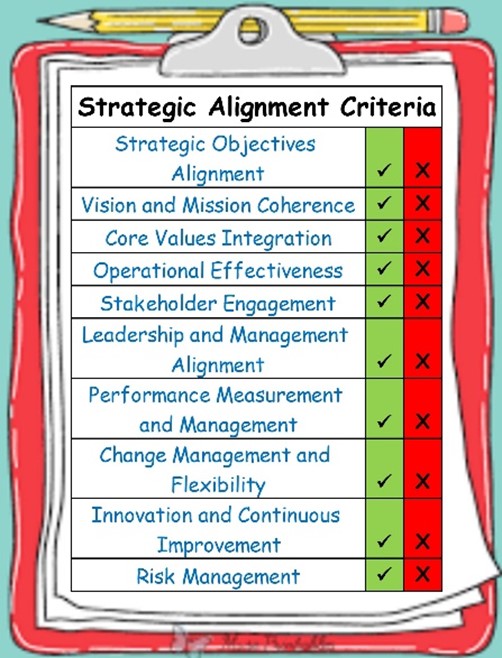
This example underscores the transformative power of strategic alignment and poignantly reminds us why it is critical for today’s organizations. Aligning strategic goals with operational processes maximizes efficiency and enhances the ability to swiftly adapt to market changes and technological advancements, securing a competitive edge and driving sustainable growth.
In this workshop, we delve deep into the principles of strategic alignment, ensuring that leadership teams understand how to integrate their vision with actionable plans effectively. By the end of our sessions, participants will be equipped with the tools and insights necessary to ensure that every department and individual within their organizations contributes positively to the overarching strategic objectives.
Consequences of Strategic Misalignment
Strategic misalignment occurs when an organization’s operations, resources, and initiatives are not adequately coordinated with its stated strategic goals. This disconnect can manifest across various levels of an organization, from top leadership to front-line employees, affecting everything from corporate culture to customer satisfaction. The implications of not maintaining strategic alignment are profound and varied:
Operational Inefficiencies: Misalignment often leads to inefficiencies in day-to-day operations. For instance, if departmental goals are not aligned with the overall strategic direction, this can lead to duplicated efforts or resources being allocated to non-priority areas, ultimately wasting time and money.
Reduced Employee Morale and Engagement: Employees must understand how their roles contribute to the broader company objectives. Employees may feel disconnected without clear alignment, leading to lower engagement and morale. This disconnection is often exacerbated by inconsistencies in communication and leadership direction, leaving employees needing clarification about priorities and expectations.

Inability to Effectively Respond to Market Changes: Strategic alignment includes the flexibility to adapt to market or technological changes. A misaligned organization may struggle to pivot, missing out on critical opportunities or failing to mitigate emerging threats. This rigidity can leave a company lagging behind its competitors, who leverage their aligned strategies to capitalize on the same trends.
Customer Dissatisfaction and Loss of Market Share: When internal strategies are misaligned, it can affect product development, customer service, and marketing. This misalignment can lead to products that do not meet market needs or poor customer service, resulting in customer dissatisfaction and eventual loss of market share.
The journey of LEGO underscores a critical lesson for every organization striving to excel in today’s dynamic business environment: understanding and addressing the causes and consequences of strategic misalignment is not merely beneficial—it is imperative for survival and growth. This case vividly illustrates how successful, well-established companies can suffer when their strategies diverge from their core strengths and market demands. However, it demonstrates that thoughtful realignment and adherence to a well-defined strategic core can revitalize a company’s prospects.
As workshop participants, you are equipped to identify and mitigate risks associated with strategic misalignment within your organizations. By applying the principles and strategies discussed, such as continuous strategic review, focusing on core competencies, and fostering robust communication channels, you can ensure that all aspects of your organization are synchronized toward common goals. This alignment is crucial for enhancing operational efficiency and employee morale, adapting effectively to market changes, and improving customer satisfaction.

Implementing what you’ve learned in this workshop will help you establish a framework for ongoing strategic alignment. This involves regularly revisiting and reassessing corporate strategies to align with internal capabilities and external market conditions, much like LEGO’s pivotal strategic shift. By doing so, your organization can avoid the pitfalls of misalignment, such as resource wastage, market opportunity losses, and diminished morale, which can derail even the most promising companies.
Moreover, by embedding the principles of strategic alignment into your organizational culture, you create an environment where continuous improvement is the norm and strategic agility is a competitive advantage. This proactive stance on alignment ensures that your company remains resilient, responsive, and ready to capitalize on new opportunities.
This workshop will highlight the importance of understanding strategic alignment and provide the tools and insights necessary to apply these lessons effectively. As you move forward, remember that strategic alignment is a dynamic, ongoing process that requires commitment across all levels of the organization. By fostering a culture that embraces these principles, you ensure that your company remains aligned with its strategic goals, driving sustainable growth and maintaining a formidable stance in a competitive landscape.
Connecting the Dots: Strategic Alignment and Operational Excellence
Strategic alignment is not merely about aligning an organization’s vision and actions; it is fundamentally about enhancing operational excellence through meticulous organization and execution of business processes. Operational excellence is achieved by optimizing processes, reducing waste, and improving quality and efficiency—goals directly supported by effective strategic alignment.

Optimizing Processes: Strategic alignment ensures that all processes are designed and executed to directly contribute to the organization’s strategic goals. By aligning operations with strategy, processes are streamlined, and resources are better utilized, leading to significant enhancements in efficiency and productivity.
Reducing Waste: One key benefit of strategic alignment is identifying and eliminating wasteful practices within the organization. Companies can minimize unnecessary time, resources, and effort expenditures by ensuring that every action and decision supports the overarching strategic objectives, optimizing operational outcomes.
Improving Quality and Efficiency: Strategic alignment focuses on setting clear objectives for quality and operational performance that are understood and embraced across the organization. This shared understanding helps maintain high quality and operational efficiency standards, as every organization unit works cohesively towards common goals. The synergy between strategy and operations fosters an environment of continuous improvement where quality enhancements are consistently pursued.
A Roadmap to Mastery: Structuring Your Learning Experience
This workshop is structured around 12 comprehensive course manuals that delve into various aspects of Strategic Alignment. Each manual addresses a unique component yet is intricately linked to provide a comprehensive learning experience. By progressing through these manuals, participants will gain a holistic understanding of Strategic Alignment—from its foundational theories to applying advanced strategic models in real-world scenarios. This structure ensures that while each session can stand alone with its independent topic, collectively, they form a cohesive curriculum that empowers participants to implement effective strategic alignment practices in their organizations.
What will this Workshop Achieve?
This workshop will equip participants with the theoretical knowledge and practical skills necessary to drive organizational operational excellence. By the end of this training, participants will thoroughly understand how to align strategic initiatives with operational activities to enhance overall organizational performance. This means improved efficiency, reduced costs, and enhanced business competitive advantage. For personal and professional development, participants will gain valuable leadership skills, enhanced decision-making capabilities, and increased confidence in managing complex projects and initiatives. The workshop aims to transform theoretical concepts into actionable insights that participants can apply professionally.
The LEGO Story
LEGO, the world-renowned Danish toy manufacturer, faced a severe crisis in the early 2000s. After decades of steady growth, the company saw a significant profit decline. By 2003, LEGO was underperforming and on the brink of bankruptcy. This financial distress was primarily due to an unclear strategic direction, leading to over-diversification and a move away from its core building blocks business.

The Crisis
During the late 1990s and early 2000s, LEGO began diversifying its product line to include apparel, watches, theme parks, and video games. This strategy was intended to make LEGO a broad-based children’s entertainment brand, but it moved the company away from its core strength: high-quality, creative building toys. Additionally, the company expanded into little-understood markets and invested in new manufacturing processes that yielded little expected returns.
The result was a complicated and misaligned product portfolio that confused customers and diluted the brand’s value proposition. LEGO faced intense competition from video games and other digital products that were more appealing to its core market of young boys. By 2003, LEGO reported a loss of DKK 1.4 billion (approximately USD 200 million), the largest in its history.
Strategic Realignment
In 2004, Jørgen Vig Knudstorp, a former McKinsey consultant, was appointed CEO. Recognizing the need for drastic change, Knudstorp initiated a comprehensive strategic review. The new strategy focused on “getting back to the brick” and aimed to realign all aspects of the business around LEGO’s core product.
• Product Focus: LEGO dramatically reduced its product range by discontinuing 70% of its existing products, focusing instead on proven lines and classic LEGO themes such as LEGO City and LEGO Technic. This move was designed to reinforce the brand’s identity around creativity and learning through play.
• Operational Efficiency: LEGO restructured its manufacturing processes, closed down non-performing units, and outsourced to more cost-effective locations. These changes helped reduce costs and complexity, bringing focus back to quality and design, which were critical to LEGO’s value proposition.
• Market Engagement: Knudstorp also revamped marketing efforts to better engage with core users—children and their parents. This was supported by community-building initiatives such as the LEGO Club and the LEGO Ideas platform, which involved fans in the product development process.
• Strategic Partnerships: LEGO formed strategic alliances to co-create branded content that complemented its core products, such as the highly successful LEGO Star Wars line and later collaborations with Hollywood for the LEGO movie franchise. These partnerships helped LEGO leverage external expertise and market presence while staying true to its revamped strategic focus.
Outcomes
The strategic realignment paid off. By 2005, LEGO returned to profitability, and by 2010, it had not only recovered but had also become the world’s most profitable toymaker, surpassing rivals like Mattel and Hasbro. Focusing on core competencies and aligning every part of the organization with strategic objectives led to a remarkable turnaround. LEGO’s resurgence highlighted the crucial alignment between strategy and operations, demonstrating that even well-established brands must continually reassess and realign their strategies to maintain relevance and profitability.

Conclusion
LEGO’s experience is a powerful testament to the importance of strategic alignment. It illustrates that clear, focused strategic execution aligned with core strengths and market demands is essential for long-term success. This case study underscores that even the most iconic brands can falter without strategic alignment; conversely, they can achieve remarkable turnarounds with effective alignment.
The Nokia Story
Once a dominant force in the mobile phone industry, Nokia’s decline is a prime example of how strategic misalignment can lead to the downfall of a leading company. In the late 1990s and early 2000s, Nokia was the world’s top cell phone manufacturer, known for its robust, user-friendly handsets. However, with the advent of smartphones, Nokia failed to align its strategy with market shifts, ultimately leading to significant losses in market share and relevance.
The introduction of smartphones significantly transformed the mobile phone industry. Companies like Apple and Samsung quickly adapted to this change by developing operating systems (OS) that supported advanced features like touchscreens, apps, and high-speed internet connectivity. Nokia, however, continued to focus on its Symbian OS, which was not optimized for the new generation of smartphones.

Strategic Missteps
Nokia’s leadership underestimated the importance of software and the consumer shift towards smartphones with more robust ecosystems. This misjudgment was part of a broader strategic misalignment:
• Overemphasis on Hardware: Nokia prioritized hardware development over software, failing to recognize that smartphone user experience was dictated mainly by software capabilities and app ecosystems.
• Slow Response to Market Trends: Nokia was slow to adopt the touchscreen technology that had made iPhones popular, sticking to its design philosophy centered around physical keyboards and limited touch interfaces.
• Misreading Consumer Demand: Nokia misread the market’s direction, underestimating the appeal of smartphones as multifunctional devices and overestimating the loyalty to basic phone functionality.
• Partnership Delays: When Nokia finally pivoted to a new operating system, it partnered with Microsoft and used its Windows Phone OS. This partnership was executed too late and did not give Nokia the competitiveness it needed, as the OS failed to attract many app developers and users.
Consequences of Misalignment
The consequences of Nokia’s strategic misalignment were severe:
• Loss of Market Leadership: Nokia’s smartphone market share plummeted from 49.4% in 2007 to just 3.1% by 2013.
• Financial Strains: The company faced severe financial strains, reporting losses in the billions by 2012.
• Brand Devaluation: once synonymous with mobile innovation and market leadership, Nokia’s brand suffered as consumers shifted their loyalty to more innovative brands.
• Acquisition by Microsoft: In 2014, unable to recover from its strategic missteps, Nokia’s mobile phone business was acquired by Microsoft, marking the end of its era as a standalone mobile phone giant.
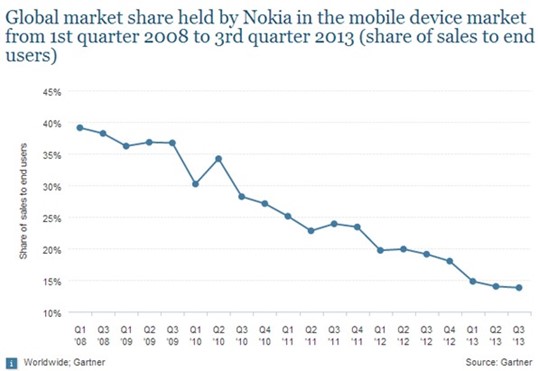
Lessons Learned
Nokia’s story is a cautionary tale about the importance of strategic alignment, especially the need to stay abreast of technological and market trends. It highlights the necessity for companies to:
• Adapt Quickly to Technological Changes: Organizations must remain flexible and willing to pivot their strategies in response to technological innovations and consumer demands.
• Align Product Development with Market Needs: Product strategies must align with current market expectations and consumer behaviors.
• Implement Proactive Partnerships: Strategic partnerships should be formed proactively to bolster competitive edges, not just as a reactionary measure.
For you as training participants, Nokia’s decline demonstrates that maintaining strategic alignment is crucial for thriving and essential for surviving. Companies must ensure that their strategies evolve in tandem with or ahead of market trends, consumer preferences, and technological advancements. By doing so, they can avoid Nokia’s fate and sustain long-term growth and market relevance.
Historical Evolution of Strategic Alignment
Strategic alignment evolved from the rigid, formulaic approaches of the Industrial Age to flexible frameworks that recognize modern organizational complexities. Initially focused on systematic organization and efficiency, early theories emphasized top-down management. This approach aimed to optimize performance but often ignored changing market conditions and internal dynamics like employee motivation and culture.
As the business landscape grew in complexity through the latter half of the 20th century, sparked by globalization, technological advancements, and evolving market dynamics, it became clear that the old models needed to be revised. The introduction of tools like the Balanced Scorecard in the early 1990s marked a significant shift. Developed by Robert Kaplan and David Norton, this framework went beyond traditional financial metrics to include areas like customer perspective, business process, and learning and growth. This broader view helped organizations link their strategic objectives with tangible actions and performance measures, fostering a more holistic approach to alignment.
Similarly, the McKinsey 7S Framework, introduced in the 1980s, provided another robust model for examining strategic alignment. It stressed the importance of aligning seven key elements: strategy, structure, systems, shared values, skills, style, and staff. This model recognized that strategic alignment must transcend the mere structural components of an organization to include the soft elements that significantly influence behavior and performance. For instance, shared values became a focal point, suggesting that for a strategy to be truly effective, it must resonate with and be supported by the underlying beliefs and attitudes of the organization’s members.
These modern theories underscore the need for an adaptive strategy to respond to rapid changes and complexities within the business environment. They also highlight the importance of integrating an organization’s hard and soft elements to achieve strategic goals. This integration ensures that strategy is not just a plan on paper but a lived reality that evolves with the organization’s context and the external environment.
Today, strategic alignment is seen not just as a static line of fit between strategy and structure but as a dynamic, ongoing process of adjustment and learning. It involves continuously realigning the organization’s resources and capabilities with market realities and opportunities driven by technological innovation and changing consumer expectations. This adaptability is crucial in today’s fast-paced, uncertain business world, where organizations must be nimble enough to pivot quickly yet remain steadfastly guided by their core strategic vision.
In conclusion, the evolution of strategic alignment from a rigid, structured focus to a dynamic, holistic approach reflects broader shifts in business theory and practice. It underscores the importance of agility, forward-thinking, and a deep understanding of internal and external business environments. As businesses navigate the complexities of the 21st century, strategic alignment remains a critical, ever-evolving discipline that ensures organizations survive and thrive.
Strategic Planning and Roadmapping
A strategic plan involves setting a company vision and mission, creating a strategic roadmap, and breaking the strategy down into departmental objectives, goals, and individual goals. With appropriate visibility of this plan, it can be demonstrated how each individual in the organization contributes to the overall vision.
The roadmap is essential for visualizing and planning an organization’s steps to achieve its long-term goals. More than just a chart, it acts as a dynamic blueprint that illustrates the key milestones and objectives crucial for success. By laying out a clear path from the present situation to future aspirations, a strategic roadmap serves multiple functions:
• Guidance and Clarity: It provides a structured visual outline of the strategic process, ensuring that every stakeholder understands the direction and phases of implementation.
• Resource Allocation: The roadmap specifies how resources should be distributed among various initiatives, guaranteeing that all efforts are adequately supported and strategically deployed.
• Timeline Specification: It sets realistic timelines for achieving each milestone, facilitating a paced and disciplined approach to strategic execution.
• Alignment of Actions: The roadmap ensures that all departmental and individual efforts are synchronized towards a unified goal by linking each action with overarching strategic objectives.
• Enhanced Collaboration and Efficiency: The roadmap’s visual nature fosters better communication and collaboration across different parts of the organization, improving overall efficiency and integration.
In this workshop, participants will explore creating and utilizing strategic roadmaps tailored to their organizational contexts. Starting with the foundations of strategic planning, you will learn to identify critical success factors and effectively translate broad goals into actionable steps. We will explore various techniques for crafting roadmaps that reflect your company’s unique challenges and opportunities and drive innovation and adaptability.
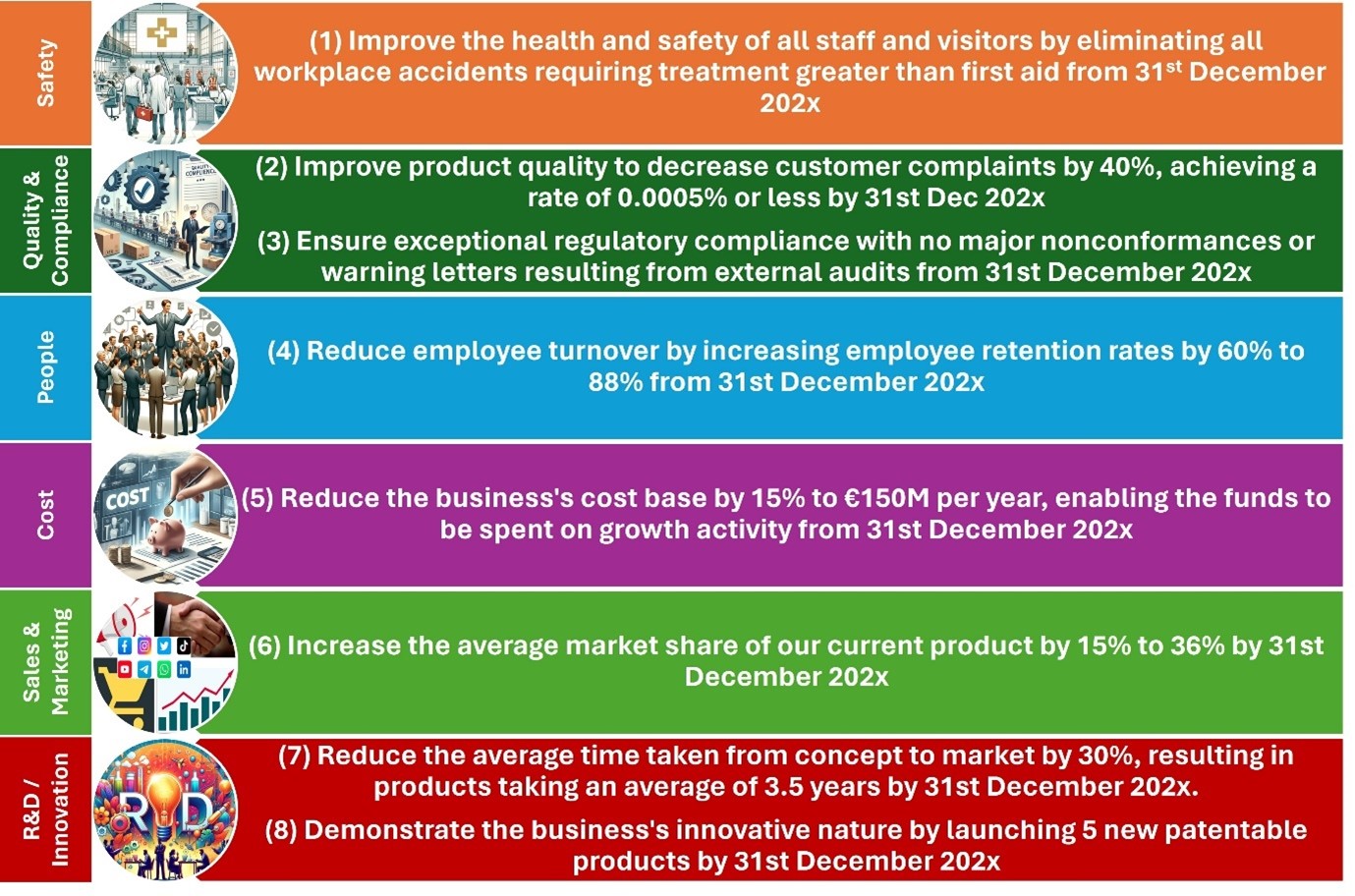
Modern Approaches, Trends, and Innovations
Strategic alignment has become more crucial and complex in today’s fast-evolving business landscape. Modern approaches, trends, and innovations in this field shape how organizations harmonize their strategies with operational realities, ensuring they remain agile and competitive. Let’s explore some of the cutting-edge developments that define strategic alignment today.
Agility and Flexibility: Modern strategic alignment emphasizes agility and the ability to pivot quickly in response to changing market conditions. This approach is epitomized by methodologies like Agile and Lean, which originated in software development but have since permeated various business sectors. These methodologies focus on iterative progress through short planning, execution, and evaluation cycles, allowing organizations to adapt rapidly. This agility ensures that strategies remain relevant and are consistently refined to meet the evolving needs of the market and the organization.
Data-Driven Strategy: In the age of big data, strategic alignment increasingly relies on analytics to drive decision-making. Organizations use sophisticated data collection and analysis tools to glean insights that inform strategy development and implementation. This trend enhances the precision of strategic initiatives and aligns them more closely with real-time market and internal performance data. By leveraging predictive analytics and AI, companies can forecast future trends and align their strategies proactively rather than reactively.

Cross-Functional Integration: Modern businesses recognize that strategic alignment must be balanced within individual departments. Instead, there is a growing trend towards cross-functional teams that work collaboratively across business units to ensure that strategy implementation is cohesive and comprehensive. This integration enables a unified approach to achieving strategic objectives, enhancing communication, and sharing insights across different parts of the organization, often leading to more innovative and effective solutions.
Sustainability and Corporate Responsibility: Today, strategic alignment is increasingly intertwined with sustainability and corporate social responsibility (CSR). Businesses realize that long-term success depends on aligning their strategic objectives with environmental stewardship and social responsibility. Both ethical considerations and consumer demand for responsible business practices drive this trend. Companies are integrating green technologies, ethical supply chains, and community engagement into their core strategies, making them central to their business models rather than peripheral concerns.

Employee Engagement and Culture: Modern strategic alignment also involves aligning the organization’s culture and employee engagement with strategic objectives. Recognizing that motivated, engaged employees are crucial for successful strategy implementation, companies focus on creating cultures aligning with their strategic vision. This includes training programs, career development opportunities, and corporate values that resonate with employees’ values and aspirations, thereby fostering an environment where employees feel genuinely invested in the company’s goals.
Digital Transformation: At the heart of many modern strategic alignment efforts is digital transformation. Organizations must continuously align their strategies with new digital capabilities as digital technology evolves. This includes adopting cloud computing, artificial intelligence, and automation to enhance efficiency and competitiveness. Digital transformation allows businesses to streamline operations, improve customer experiences, and innovate product offerings aligned with strategic goals.
In conclusion, the modern landscape of strategic alignment is dynamic and multifaceted, blending traditional strategic planning with innovative practices that reflect the complexities of the contemporary business environment. These trends enhance an organization’s responsiveness and effectiveness and ensure that it can thrive amid the uncertainties of the global market. As we look to the future, strategic alignment will continue to evolve, incorporating new technologies and methodologies to meet emerging challenges and opportunities.
Contemporary Challenges and Innovative Solutions
In the fast-paced world of modern business, strategic alignment confronts many challenges that can disrupt even the most well-laid plans. Digital transformation and globalization are two of the most formidable challenges today, requiring innovative solutions and a rethinking of traditional approaches. Additionally, cutting-edge technologies can be a considerable advantage, but capitalizing on them can be challenging.
Digital Transformation: A Double-Edged Sword
Digital transformation is revolutionizing industries by enabling faster, more efficient, and more customer-focused operations. However, it also presents a significant challenge for strategic alignment. The rapid integration of technologies such as artificial intelligence (AI), machine learning, and data analytics into business processes creates a dynamic where business strategies must continually evolve to keep pace with technological advancements. Traditional strategic plans, which may have been developed on annual or biennial cycles, now need to be flexible and responsive to technology shifts that can render them obsolete almost overnight.
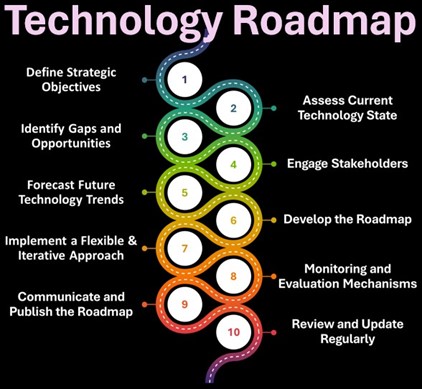
So, what’s the solution? Many companies are turning to real-time strategic planning to combat the challenges posed by digital transformation. This approach involves continuous, dynamic planning processes that can adapt to changes as they occur. Utilizing AI and data analytics, companies can now predict trends and model potential future scenarios in real time, allowing them to make strategic adjustments on the fly. This agile planning technique ensures that strategies remain relevant and aligned with current and future technology landscapes.
Globalization: Navigating Cultural and Regulatory Complexity
As companies expand their operations globally, they encounter varied and complex cultural and regulatory environments. Each market has unique characteristics, from consumer behavior and preferences to government regulations and business practices. Strategic alignment in this context means understanding these differences and integrating them into the organization’s core strategy. This is crucial to avoid legal pitfalls and ensure that the company’s operations are culturally sensitive, which enhances brand reputation and customer loyalty.
One effective solution is the development of localized strategic frameworks. Instead of applying a one-size-fits-all strategy across all markets, companies are creating flexible methods that can be adapted to meet local needs and conditions. This might involve setting up local strategic teams, including native professionals who intimately understand the cultural and regulatory landscape. These teams can tailor the company’s strategies to align with local expectations and requirements, ensuring more effective implementation and reducing the risk of misalignment.
Technological Leverage for Competitive Advantage
Integrating AI, machine learning, and data analytics offers more than just challenges—it also provides powerful tools for enhancing competitive advantage. These technologies can be harnessed to improve decision-making, optimize operations, and personalize customer experiences. For instance, by using data analytics, companies can gain insights into customer behaviors and preferences, allowing them to develop more targeted marketing strategies and product offerings better aligned with customer needs.

Many organizations establish innovation hubs and participate in collaborative ecosystems to fully capitalize on these technologies. These hubs focus on developing new solutions that integrate advanced technologies into strategic alignment efforts. By collaborating with startups, technology providers, and academic institutions, companies can stay at the forefront of innovation, continually adapting their strategies to leverage emerging technologies effectively.
In conclusion, the contemporary challenges of strategic alignment in a digitally transforming and globalizing world demand innovative thinking and adaptable strategies. By embracing real-time strategic planning, localized frameworks, and the strategic use of advanced technologies, organizations can overcome these challenges and turn them into opportunities for growth and competitive advantage. As the landscape continues to evolve, so must the strategies that guide businesses toward success in an interconnected digital age.
Future Outlook
As we gaze into the future of strategic alignment, a clear trend emerges toward embedding sustainability and ethical governance at the heart of corporate strategies. This transformative shift acknowledges businesses’ critical role in tackling the world’s most pressing challenges, such as climate change, social inequality, and environmental degradation. The evolution of strategic alignment in this context is not just about enhancing profitability and market share; it’s about ensuring that growth is achieved in a manner that is sustainable, equitable, and beneficial for all stakeholders.
Sustainability: The New Strategic Imperative
Sustainability is increasingly becoming a core component of corporate strategies, driven by ethical considerations and business imperatives. Consumers, investors, and regulatory bodies demand greater transparency and responsibility from businesses regarding their environmental and social impacts. In response, companies are adopting greener practices and integrating sustainability goals into the fabric of their strategic planning processes.

Ethical Governance: Building Trust and Integrity
Alongside sustainability, ethical governance is another area gaining prominence. This involves adopting fair business practices that promote equality, diversity, and inclusion at all levels of the organization. By ensuring decisions are made with integrity and accountability, companies can build trust with their customers, employees, and the wider community. This trust is essential for long-term success and resilience, especially in a digital age where corporate missteps are quickly amplified.
Navigating Complexity with Advanced Tools and Approaches
Companies will increasingly turn to advanced technologies and innovative methodologies to navigate the complexities of integrating sustainability and ethics into business strategies. Tools like AI and big data analytics will provide deeper insights into business operations’ environmental and social impacts, enabling more informed decision-making. Moreover, frameworks such as ESG (Environmental, Social, and Governance) criteria are becoming standard for assessing corporate performance beyond traditional financial metrics.
Collaboration and Stakeholder Engagement
Strategic alignment will also involve more extensive collaboration between businesses and their stakeholders, including governments, NGOs, and the public. This collaborative approach is vital for addressing global challenges that no single entity can solve alone. By working together, businesses and stakeholders can develop more comprehensive strategies that account for diverse perspectives and expertise, leading to more effective and sustainable outcomes.
The Role of Innovation in Sustainable Strategies
Innovation will be pivotal in enabling strategic alignment with sustainability and ethical governance. New business models, such as circular economy principles that redesign resource life cycles for maximum utility, will become more prevalent. Additionally, companies will invest in innovative technologies that reduce carbon footprints, enhance resource efficiency, and improve social impacts.

Adaptation and Continuous Learning
Finally, strategic alignment will require an ongoing adaptation and learning process as the external environment changes. Organizations must remain agile, continuously updating their strategies to reflect new risks, opportunities, and regulatory requirements. This adaptive approach will ensure that companies can maintain alignment between their strategic objectives and the evolving landscape of global challenges.
In conclusion, the future outlook of strategic alignment centers on a profound integration of sustainability and ethical practices into organizations’ core strategic framework. As businesses increasingly act as stewards of societal and environmental well-being, the principles of strategic alignment will become crucial in guiding them toward responsible and sustainable growth. This evolution marks a significant shift from profit-centered views to a more holistic perspective that values long-term viability and ethical prosperity.
Conclusion
Strategic alignment is not merely theoretical but a practical necessity for modern organizations aiming to thrive in competitive environments. Through the detailed exploration of principles, historical evolution, case studies, and contemporary approaches, this workshop provides a comprehensive guide for leaders to implement effective strategic alignment. Embracing these strategies will ensure organizations are well-equipped to achieve their goals, embrace innovation, and maintain a competitive edge.
Executive Summary
Chapter 1: Foundations of Strategic Alignment
“Foundations of Strategic Alignment” is meticulously designed to provide participants with a robust understanding of effectively aligning operational resources and activities with an organization’s strategic vision and goals. This course ensures participants grasp the essential methods and theories to foster alignment across various organizational layers, significantly enhancing overall performance and achieving competitive advantages in their respective markets. By engaging with this course, participants will be equipped to apply strategic alignment concepts practically and effectively, leading to transformative organizational change.
Understanding Strategic Alignment
The course begins by exploring the definition and critical importance of strategic alignment. Participants will learn about the dynamic nature of aligning operational practices with strategic objectives, ensuring that every department and team member is strategically synchronized with overarching goals. This section is crucial for appreciating how strategic alignment can steer an organization toward unified and successful outcomes. Real-world examples will illustrate the tangible benefits and shifts that strategic alignment brings, making it easier for participants to visualize its impact.
Components of Strategic Alignment
Next, we delve into the key components of strategic alignment, focusing on crafting coherent and inspiring vision and mission statements, defining SMART strategic objectives, and the pivotal role of core values. This comprehensive overview empowers participants to construct and foster elements that support and enhance strategic alignment within their organizations. Discussions and exercises will further explore how these components are interlinked and how they can be practically applied to improve organizational coherence and effectiveness.
Challenges to Achieving Strategic Alignment
Addressing potential obstacles is critical for any strategic initiative. This part of the course identifies common challenges such as resistance to change, misaligned incentives, and cultural barriers. Participants will engage in problem-solving exercises to understand these challenges deeply and explore practical strategies for overcoming them to maintain alignment integrity. This section also emphasizes the importance of leadership in navigating these challenges and fostering a culture conducive to strategic alignment.
Measuring Strategic Alignment
To cap off the course, we discuss methods to measure and ensure the effectiveness of strategic alignment initiatives through Key Performance Indicators (KPIs), alignment audits, and feedback loops. This section is vital for participants to learn how to monitor and refine strategic alignment processes in their organizations continuously. Practical tools and methodologies will be introduced to help participants effectively track and optimize the alignment strategies they implement.
In conclusion, “Foundations of Strategic Alignment” is an essential guide for leaders and change agents aiming to harmonize their operational efforts with strategic goals. This course enlightens and equips participants with practical tools and insights necessary to foster and maintain strategic alignment, driving their organizations to flourish in today’s dynamic business environment. Engaging with this manual will empower participants to become proactive architects of alignment, which is essential for navigating modern organizational landscapes’ complexities.
Chapter 2: Vision Crafting and Communication
“Vision Crafting and Communication” equips leaders with essential skills to develop and effectively communicate a compelling vision that resonates with all organizational stakeholders, fostering a unified culture directed towards strategic goals. This course will guide participants through a series of transformative processes, from understanding the organization’s foundational values to articulating a vision that inspires and strategically aligns with long-term objectives. Participating in this course empowers leaders to craft a vision as a central guiding star for their organizational strategy and operations.
Developing a Compelling Vision
The course opens with a deep dive into the foundational steps of crafting an organizational vision, emphasizing the importance of understanding an organization’s unique history and core values. Participants will explore methods to integrate these insights into a compelling vision statement reflecting their organization’s aspirations and practical capabilities. Through a blend of lectures and interactive workshops, leaders will learn to distill complex ideas into clear and motivational vision statements that inspire and drive organizational change.
This segment discusses the critical components that make a vision compelling and memorable: clarity, inspiration, and a forward-looking perspective. By examining successful vision statements and dissecting their composition, participants will gain the skills to create powerful visions that captivate and motivate stakeholders while providing a clear direction for the future. Also detailed is the process of crafting a vision involving stakeholder engagement and iterative feedback processes to refine and perfect the vision statement. Participants will engage in practical exercises designed to simulate real-world vision crafting, including stakeholder analysis and strategic brainstorming sessions, ensuring the resulting vision is robust and widely supported within the organization.
Effective Communication Strategies
Effective communication is critical for embedding a new vision within an organization. This section covers strategic communication techniques to ensure the vision is clearly understood and embraced across all levels of the organization. Participants will learn to tailor their messaging to different audience segments, ensuring relevance and resonance. They will explore various communication channels, from digital platforms to traditional meetings, to disseminate the vision effectively.
Vision as a Guiding Star
This crucial part of the course focuses on integrating the vision into the organization’s strategic planning and daily operations. Leaders will explore aligning departmental and individual goals with the vision, ensuring that every action and decision supports the overarching objectives. This alignment is critical for maintaining strategic direction and fostering a culture of unity and purpose.
Aligning Individual Goals with Vision
The course’s final section addresses how to cascade the vision to individual levels, ensuring all team members align with the organization’s goals. Through case studies and role-playing exercises, participants will learn how to set SMART objectives that align with the vision and understand the importance of performance management in maintaining strategic alignment.
“Vision Crafting and Communication” provides leaders with the tools and insights to develop and communicate a strategic vision effectively. The course emphasizes the transformative power of a well-crafted vision and strategic communication in driving organizational success. Participants will leave equipped to foster a culture of strategic alignment and inspired action, propelling their organizations toward achieving their most ambitious goals.
Chapter 3: Strategic Planning for Alignment
“Strategic Planning for Alignment” is crafted to equip participants with the necessary skills to bridge the gap between high-level strategic goals and actionable plans. This course focuses on translating broad organizational objectives into specific, achievable strategies and actions that align with desired business outcomes. By engaging in this course, participants will understand how to perform environmental scans, conduct strategic planning processes, and effectively link strategy to operational actions.
Environmental Scanning and Analysis
The course introduces environmental scanning as a critical initial step in strategic planning. This process thoroughly analyzes external and internal environments, helping participants identify the organization’s strengths, weaknesses, opportunities, and threats. This comprehensive overview sets the stage for informed strategic decision-making, utilizing tools like PESTLE and Porter’s Five Forces to enhance understanding of the broader market and competitive landscape.
Strategic Planning Process
Following environmental analysis, participants will delve into the strategic planning process. This segment teaches how to formulate vision and mission statements that encapsulate the organization’s purpose and aspirations, providing a clear direction for future growth. Participants will learn to craft a strategic roadmap, outlining key steps and strategies that align with the organization’s long-term goals, thus ensuring all efforts are coherent and purpose-driven.
Linking Strategy to Action
This critical part of the course addresses translating strategic plans into concrete operational actions. Through detailed case studies and interactive exercises, participants will explore breaking down strategic objectives into manageable actions across various organizational levels, ensuring alignment and effective implementation. This section also covers the essential skills needed to monitor and adjust strategies in response to changing conditions and maintain strategic agility.
Monitoring and Adjusting Strategies
This course emphasizes the importance of continuous monitoring and dynamic adjustments to ensure that strategic initiatives remain relevant and practical. Participants will use various performance management tools and learn to set and evaluate Key Performance Indicators (KPIs). This ongoing assessment allows for timely adjustments in strategies, ensuring they continue to meet the organizational goals despite external changes or internal challenges.
“Strategic Planning for Alignment” provides participants with a toolkit to connect strategic goals with actionable plans, fostering alignment throughout the organization. This course is crucial for leaders seeking to ensure that their strategic visions are clearly communicated, successfully implemented, and sustained over time. Participants will leave equipped with the knowledge to foster a culture of strategic alignment, driving their organizations toward successful outcomes in a competitive business environment.
Chapter 4: Operationalizing Strategy
“Operationalizing Strategy” provides participants with a deep dive into the practical application of strategic plans within organizational operations. This course is designed to enhance organizational effectiveness by translating strategic objectives into daily operations, ensuring a seamless execution that drives towards achieving the set goals. Participants will explore a variety of tools and methodologies that bridge the gap between strategy formulation and operational implementation.
Understanding Strategic Objectives
The course begins by establishing a solid understanding of strategic objectives and their importance in guiding organizational direction. Participants will learn to break down strategic goals into measurable operations aligning with the organization’s mission and vision. This section highlights each department’s and individual’s crucial role in contributing to these goals, promoting a cohesive effort toward strategic success.
From Strategy to Operations
Participants will explore the transformation of high-level strategies into operational actions. This segment focuses on identifying operational levers such as process improvements, technology enhancements, and workforce management, which can be adjusted to achieve strategic goals effectively. Through practical exercises and case studies, participants will learn to map these levers into detailed action plans that cater to the dynamic needs of their organization.
Resource Allocation for Strategic Initiatives
Effective resource allocation is critical for the success of strategic initiatives. This part of the course teaches how to prioritize and allocate financial, human, and technological resources in alignment with strategic objectives. Participants will engage in exercises that simulate budgeting and resource planning, enhancing their ability to make informed decisions that maximize organizational impact.
Process Optimization for Strategic Goals
Optimizing processes to meet strategic goals is another key focus of this course. Participants will be introduced to Lean Management and Six Sigma methodologies, which help streamline operations and enhance efficiency and quality. Technology integration in process optimization will also be discussed, providing insights into how digital tools can facilitate more efficient operations.
Change Management for Strategic Initiatives
Change management is essential when implementing new strategies. This section covers the strategy for managing change effectively within an organization, including communicating change, overcoming resistance, and aligning the workforce with new strategic directions. Through role-playing and group discussions, participants will practice these skills, preparing them to lead change initiatives successfully.
“Operationalizing Strategy” arms leaders and managers with the necessary skills to ensure that strategic plans are not just visionary statements but are translated into actionable steps that lead to tangible results. By the end of this course, participants will be proficient in linking strategy with operation, optimizing resources, and managing change, thus driving their organizations toward successful outcomes.
Chapter 5: Leadership and Strategic Alignment
“Leadership and Strategic Alignment” is designed to develop visionary leaders adept at aligning their organization’s strategies with actionable goals. This course empowers leaders with the necessary tools and mindset to ensure their team’s efforts are synchronized with the broader organizational objectives, fostering a culture of strategic execution and success.
Leadership Roles in Strategic Alignment
The course begins by defining leaders’ roles in strategic alignment, focusing on the importance of visionary leadership. Participants will learn how to craft and communicate a clear and compelling vision that motivates and guides the entire organization. This module emphasizes using effective communication strategies, including storytelling and regular reinforcement, to embed this vision within the organizational culture.
Building a Strategic Leadership Team
Participants will explore building a cohesive and powerful leadership team well-equipped to drive and sustain strategic initiatives. This section covers selecting team members who demonstrate strong leadership qualities and a deep understanding of strategic alignment. The course addresses the importance of diversity and inclusivity in leadership teams, recognizing the value of varied perspectives in enhancing decision-making and innovation.
Empowering Leaders for Alignment
This part of the course focuses on empowering leaders with the right tools and authority to execute strategy effectively. It covers essential aspects such as setting clear roles, delegating authority, and fostering an environment of trust and transparency. Participants will engage in activities highlighting the importance of giving leaders the autonomy to make strategic decisions and the resources to implement them successfully.
Cultivating a Strategic Mindset
A significant component of the course is dedicated to cultivating a strategic mindset across all levels of the organization. Participants will learn techniques to promote strategic thinking among all employees, not just those in leadership positions. This includes integrating strategic planning into daily operations, setting strategic performance indicators, and encouraging a culture of continuous learning and adaptability.
“Leadership and Strategic Alignment” equips participants with the skills to transform strategic plans into reality by aligning leadership roles, team dynamics, and individual actions with organizational goals. Graduates of this course will leave with a toolkit to foster an environment where strategic alignment permeates every aspect of the organization, driving it toward its long-term objectives.
Chapter 6: Culture and Strategic Alignment
“Culture and Strategic Alignment” focuses on harnessing organizational culture as a dynamic asset to achieve strategic goals, enhance overall performance, and secure a competitive advantage. This course equips leaders with the insights and tools needed to mold a culture that supports and actively propels strategic objectives.
Organizational Culture as a Strategic Asset
The course begins by defining organizational culture and its components—values, norms, and practices—that collectively influence the behaviors within the organization. Participants will learn how to assess and understand their existing culture and its impact on their organization’s effectiveness. This section underscores the importance of culture in driving employee engagement and organizational success.
Aligning Culture with Vision and Strategy
Participants will explore methodologies for aligning organizational culture with the company’s vision and strategic goals. This module emphasizes the role of leadership in modeling cultural alignment and provides strategies for embedding desired cultural attributes into daily operations and organizational practices. Through case studies and interactive exercises, leaders will learn to weave strategic objectives into the fabric of their organizational culture effectively.
Cultural Change for Strategic Success
This part of the course addresses the process of cultural transformation required to meet evolving strategic demands. It covers the stages of cultural change, from awareness and understanding to acceptance and integration, providing participants with a roadmap for managing cultural shifts. Techniques for building a change-ready culture that embraces flexibility and continuous learning will be discussed, preparing leaders to smoothly guide their organizations through transitions.
Measuring Cultural Alignment
Effective measurement of cultural alignment is critical for diagnosing misalignments and tracking progress toward cultural integration with strategic goals. This module will introduce practical tools and techniques for assessing cultural alignment, including surveys, interviews, and observational methods. Participants will develop and implement a cultural assessment plan, which will equip them with the ability to refine their culture continuously in alignment with their strategic objectives.
“Culture and Strategic Alignment” provides leaders with the necessary framework to leverage organizational culture as a strategic lever for achieving business goals. The course highlights the profound influence of a well-aligned culture on organizational performance and competitive positioning, offering leaders the tools to shape a culture that not only supports but actively advances their strategic aims.
Chapter 7: Communication for Alignment
“Communication for Alignment” is strategically crafted to equip participants with essential communication skills that fortify organizational alignment and enhance stakeholder engagement. By diving into the nuances of strategic communication, this manual prepares participants to manage crises effectively and primes them for continuous improvement through constructive feedback. This course empowers each participant to become a pivotal communicator, adept at nurturing robust connections across all organizational levels.
Strategic Communication Planning
This section underscores the significance of aligning communication objectives with the overarching strategic goals of an organization. Through a detailed exploration of the SMART criteria, participants learn to set specific, measurable, achievable, relevant, and time-bound objectives that drive meaningful action. Interactive exercises like the ‘Spin the Bottle: Objective Edition’ encourage participants to apply these concepts creatively, enhancing their strategic thinking in real-time scenarios.
Engaging Stakeholders in Strategy
Effective stakeholder engagement is critical for strategic success. This part of the manual focuses on mapping and prioritizing stakeholders according to their influence and interests. Techniques such as transparent communication and active listening are discussed to foster trust and rapport. Participants engage in role-plays and simulations to refine their stakeholder engagement strategies, ensuring they can build and maintain beneficial relationships.
Feedback Loops for Strategic Improvement
This section introduces robust feedback mechanisms as a tool for continuous strategic alignment and improvement. Participants learn to establish and utilize these systems to gather and act on feedback effectively. Practical examples and case studies illustrate how feedback is transformed into actionable insights integral to iterating and refining strategic processes within their organizations.
Crisis Communication and Strategic Stability
Navigating crises requires communication preparedness and agility. This critical manual segment prepares participants to develop comprehensive crisis communication plans and assemble adept response teams. Through case studies and simulations, such as the scenario involving the New Zealand Tourism Board, learners understand the importance of maintaining strategic alignment during crises, ensuring that organizational integrity and operational continuity are upheld.
“Communication for Alignment” delivers a compelling exploration into the power of strategic communication in achieving and maintaining alignment within an organization. Participants who engage with this manual will emerge as strategic communicators capable of influencing positive organizational change, managing crises adeptly, and driving continuous improvement through effective feedback. This course is indispensable for anyone looking to enhance their communicative impact and ensure their organization’s strategic goals are met and exceeded.
Chapter 8: Innovation and Strategic Alignment
“Innovation and Strategic Alignment” is meticulously crafted to provide participants with advanced insights and tools necessary for embedding innovation deeply within the fabric of their organizations. This manual guides participants through the essential techniques for fostering innovation that align with and propels their strategic objectives forward, ensuring sustained growth and a competitive edge. As innovators, participants will learn to balance creativity with operational excellence, thus driving transformative results.
Fostering Innovation within a Strategic Context
This section delves into the dynamics of the innovation ecosystem, emphasizing the synergy between people, processes, and technology as the cornerstone of successful innovation initiatives. Participants will explore cultivating a culture that promotes exploration and embraces diverse ideas, enhancing the organization’s innovative capacity. Engaging activities such as the “Tech Swap Brainstorm” provide practical experience in applying cross-industry technology insights to boost creative problem-solving within their own industries.
Balancing Innovation and Operational Excellence
Operational excellence is presented as a goal and as the foundation supporting sustainable innovation. This manual part teaches participants how to maintain a crucial balance where operational stability enhances innovation capability. It covers strategies for managing the innovation portfolio and integrating new initiatives without disrupting core operations, ensuring that innovation and operational excellence enhance each other.
Innovative Problem-Solving for Strategic Challenges
Participants are equipped to tackle strategic challenges using innovative problem-solving techniques. This section highlights the importance of identifying and prioritizing challenges that can significantly benefit from creative solutions, using approaches like Design Thinking to develop practical and impactful innovations. Collaborative exercises simulate real-world problem-solving, reinforcing the value of diverse perspectives in crafting effective solutions.
Scaling Innovations for Strategic Impact
Scaling innovation is presented as a critical phase where strategic planning meets execution. This segment focuses on navigating the complexities of scaling, from ensuring the scalability of business models to managing change effectively as innovations grow. Case studies, such as Bosch’s implementation of predictive maintenance using IoT, illustrate successful transitions from pilot to full-scale deployment, showcasing the profound impact well-managed innovation can have on operational efficiency and market position.
“Innovation and Strategic Alignment” equips participants with a robust understanding and practical skills to drive and manage innovation aligned with strategic goals. Through theoretical insights and practical activities, this course empowers participants to transform their organizations by making innovation a strategic advantage. Engaging with this manual will prepare them to lead their organizations to new heights of creativity and market leadership, ensuring innovation.
Chapter 9: Strategic Decision-Making
“Strategic Decision-Making” is expertly designed to empower participants with the knowledge and skills necessary to make impactful decisions that navigate the complexities of modern business environments. This manual delves into various decision-making frameworks, integrating data-driven approaches and balancing risk with potential rewards. Participants will learn to apply these concepts to enhance agility and drive their organizations toward strategic objectives.
Frameworks for Strategic Decision-Making
This section introduces participants to decision-making models, such as the Rational Model, Bounded Rationality, and the Garbage Can Model. By exploring these frameworks, learners understand the nuances of strategic decision-making in different contexts. For instance, Spotify’s development of the “Discover Weekly” feature, as discussed in a detailed case study, illustrates the practical application of these models in a real-world, dynamic business setting, emphasizing the importance of adaptability and innovation in strategy formulation.
Data-Driven Decision-Making
This segment highlights the imperative of integrating robust data analytics into decision-making processes. Participants explore descriptive, predictive, and prescriptive analytics, learning how each plays a crucial role in strategic planning. This section stresses the importance of high-quality data and effective data governance, providing tools and techniques for transforming raw data into strategic insights. Practical exercises guide learners through data collection, analysis, and visualization, enhancing their capability to make informed, data-driven decisions.
Risks and Rewards in Strategic Decisions
Understanding and managing risks is as critical in strategic decision-making as recognizing potential rewards. This part of the manual focuses on identifying, assessing, and mitigating risks using tools like SWOT and PESTLE analysis. Cost-benefit analysis is explained as a method to weigh the pros and cons of strategic initiatives, helping participants make choices that align with their organization’s risk tolerance and strategic goals. Learning modules include real-life scenarios that require learners to apply these concepts, fostering a deep comprehension of balancing risk and reward in business decisions.
Decentralizing Decision-Making for Agility
This section discusses the benefits and challenges of decentralizing decision-making to enhance organizational agility. Organizations can respond more swiftly and effectively to market changes and internal challenges by empowering individuals and teams closer to operational activities. The manual covers the necessary cultural, structural, and technological frameworks that support effective decentralized decision-making, ensuring participants can implement these strategies in their workplaces.
“Strategic Decision-Making” provides a comprehensive guide to mastering strategic decision-making in complex business environments. Through a combination of theoretical frameworks, practical data-driven insights, and an understanding of risk management, participants are prepared to make strategic decisions that are informed, agile, and aligned with their organizational goals. Engaging with this manual will enable participants to become strategic leaders capable of steering their organizations through the challenges and opportunities of the modern business landscape, ensuring sustained growth and success.
Chapter 10: Performance Management for Strategic Alignment
“Performance Management for Strategic Alignment” empowers participants with effective strategies and practical tools for crafting, measuring, and achieving performance goals that resonate with their organization’s strategic ambitions. This comprehensive manual walks through the essentials of setting performance objectives, creating effective measurement systems, aligning incentives, and fostering continuous improvement to enhance individual and organizational performance.
Setting Strategic Performance Goals
This core section teaches participants to understand and align their performance goals with their organization’s strategic objectives. It emphasizes the critical role of strategic objectives as they guide an organization’s direction and decisions. The SMART criteria framework is explored to ensure goals are specific, measurable, achievable, relevant, and time-bound. This part of the course also addresses integrating departmental goals to foster a unified approach to organizational achievements. It introduces benchmarking as a tool to set competitive and realistic performance targets.
Performance Measurement and Feedback
This segment delves into developing and using Key Performance Indicators (KPIs) that align with strategic goals. It details how to set up effective performance feedback systems that are constructive and integrated with the organization’s strategic objectives. Regular review meetings and data-driven adjustments are highlighted as crucial practices that ensure continuous alignment and adaptation to evolving business needs. The course encourages establishing a culture where feedback is a developmental tool rather than a formative critique.
Aligning Incentives with Strategic Goals
Effective incentive programs motivate employees and align their efforts with organizational goals. This part of the manual guides participants through designing incentive schemes that directly support strategic objectives, choosing appropriate rewards, and communicating these programs clearly to all employees. It also covers monitoring and adjusting these programs to maintain their relevance and effectiveness over time, supported by a case study from Salesforce. It illustrates the successful strategic realignment of incentive structures to foster customer-centric business practices.
Continuous Improvement for Strategic Performance
This section emphasizes the Kaizen philosophy of continuous improvement and teaches participants how to initiate and sustain incremental changes that lead to significant performance enhancements. It covers the importance of technology in supporting continuous improvement initiatives, engaging employees in the process, and learning from setbacks to foster an environment of persistent advancement and innovation. The course outlines methods for maintaining the momentum of improvements and ensuring that these become entrenched within the organizational culture, promoting long-term success and adaptability.
“Performance Management for Strategic Alignment” equips participants with a holistic view and actionable insights on performance management that are deeply integrated with strategic goals. By engaging with this manual, participants will be prepared to implement robust performance management systems that drive and sustain strategic alignment within their organizations. They will leave the course ready to apply these principles practically, ensuring that every effort contributes positively to their enterprises’ overarching vision and mission.
Chapter 11: Technology and Strategic Alignment
“Technology and Strategic Alignment” provides a comprehensive framework for integrating technology into an organization’s core strategies, ensuring that technological investments align with and drive forward the broader business objectives. This course equips participants with the skills to identify strategic technologies, implement digital transformation, integrate technology for operational efficiency, and manage technological change effectively.
Leveraging Technology for Strategic Advantage
This section emphasizes the importance of identifying and leveraging emerging technologies that align with and enhance the organization’s strategic objectives. It explores how strategic technologies can disrupt or enhance business models, scale to meet future demands and offer a favorable return on investment. Participants learn to use analytical frameworks to evaluate technology options and to stay informed about new developments through continuous industry engagement. Real-world case studies illustrate the transformative potential of successful technology implementations.
Digital Transformation and Strategic Alignment
This part of the manual focuses on the foundations of digital transformation. It discusses integrating digital technology into all business areas, fundamentally changing how organizations operate and deliver value. It stresses the importance of aligning digital strategies with business objectives to ensure that digital initiatives support core business goals and drive competitive advantage. Overcoming resistance to digital change through effective communication and employee engagement strategies is also covered, providing a holistic view of digital transformation’s complexities.
Technology Integration and Operational Efficiency
Participants are guided through assessing current operational processes for technology integration, identifying areas where technology can enhance efficiency, and selecting appropriate technological solutions. This section highlights the significance of automation in streamlining operations and the necessity of ensuring data integrity and system interoperability. Practical exercises help participants understand how to implement technology solutions that enhance operational efficiency while aligning with strategic goals.
Managing Technological Change
This final section deals with the strategic planning necessary for managing technological change, emphasizing the need for foresight and ongoing adaptation to maintain relevance in a rapidly evolving tech landscape. It covers the development of a comprehensive strategy for technological change, from planning and communication to training, support, and evaluation. The course underscores the importance of monitoring the impact of technology changes and adapting strategies to maximize benefits and alignment with business objectives.
“Technology and Strategic Alignment” prepares participants to effectively align technology initiatives with business strategies, enhancing their organizations’ competitive edge and operational efficiency. By the end of this course, participants will be capable of driving forward technological innovations that are strategically aligned and integral to fostering long-term growth and adaptability in their organizations. Engaging with this manual will empower them to become strategic leaders who can harness technology to propel their businesses into the future.
Chapter 12: Strategic Partnerships and Alliances
“Strategic Partnerships and Alliances” aims to equip participants with the necessary skills and insights to identify, evaluate, select, and manage strategic partnerships that align with their company’s business goals. This manual covers essential topics from building strategic partnerships and managing partner and stakeholder relationships to aligning interests for mutual success.
Building Strategic Partnerships
This section emphasizes the importance of forming strategic partnerships that align with an organization’s overarching business goals. It discusses how partnerships like the one between Kohl’s and Amazon can drive strategic advantages, such as increased foot traffic and enhanced customer service. Participants learn to use tools like SWOT analysis to identify potential areas for partnership that address gaps in capabilities or market presence. This section also covers the selection of potential partners, emphasizing the need for alignment in market position, resource availability, compatibility of values, and innovation capabilities. Practical exercises like “Tech Time Travel” encourage participants to predict and align future technological trends with strategic business needs.
Managing Partner and Stakeholder Relationships
This part of the manual focuses on the dynamics of partner and stakeholder relationships and provides strategies for understanding and managing expectations to maintain alignment with the partnership’s strategic goals. Effective communication plans are essential, utilizing tailored messages and varied channels to meet the diverse needs of stakeholders. Proactive conflict identification and resolution techniques are discussed to maintain a healthy partnership atmosphere and ensure collaborative problem-solving. Regular performance monitoring and feedback mechanisms are emphasized as crucial for ongoing partnership health and alignment.
Aligning Interests for Mutual Success
The success of strategic partnerships often hinges on aligning each partner’s interests with the alliance’s shared goals. This section teaches participants to create a shared vision and establish a formal agreement that outlines overarching objectives and performance indicators. It also discusses leveraging each partner’s strengths to create joint value propositions and manage shared risks effectively. Practical tips for setting up incentive and reward systems that align with the partnership’s strategic goals are provided, ensuring that all parties remain motivated and engaged.
“Strategic Partnerships and Alliances” prepares participants to strategically align with the right partners and effectively manage these relationships to maximize individual and shared benefits. By the end of this course, participants will be equipped to foster partnerships that align with their strategic goals and enhance their competitive edge and market presence. Engaging with this manual will enable participants to successfully navigate the complexities of strategic partnerships and alliances, fostering long-term success and stability in their business endeavors.
Curriculum
Business Operational Excellence – Workshop 2 – Strategic Alignment
- Foundations of Strategic Alignment
- Vision Crafting and Communication
- Strategic Planning for Alignment
- Operationalizing Strategy
- Leadership and Strategic Alignment
- Culture and Strategic Alignment
- Communication for Alignment
- Innovation and Strategic Alignment
- Strategic Decision-Making
- Performance Management for Strategic Alignment
- Technology and Strategic Alignment
- Strategic Partnerships and Alliances
Detailed Curriculum
Course Manual 1: Foundations of Strategic Alignment:
Core Objective: Provide participants with a deep understanding of strategic alignment in organizations, highlighting the importance of aligning operations, resources, and activities with the organization’s vision and strategic goals.
• Understanding Strategic Alignment
• Components of Strategic Alignment
• Challenges to Achieving Strategic Alignment
• Measuring Strategic Alignment
Course Manual 2: Vision Crafting and Communication:
Core Objective: Empower leaders with the skills to craft and communicate a compelling organizational vision that aligns with and inspires all stakeholders, fostering a culture of unity and direction toward achieving strategic goals.
• Developing a Compelling Vision
• Effective Communication Strategies
• Vision as a Guiding Star
• Aligning Individual Goals with Vision
Course Manual 3: Strategic Planning for Alignment:
Core Objective: Equip participants with comprehensive strategic planning skills that enable them to connect their organization’s strategic goals to actionable plans, monitor their progress, and make necessary adjustments to align with their desired business outcomes.
• Environmental Scanning and Analysis
• Strategic Planning Process
• Linking Strategy to Action
• Monitoring and Adjusting Strategies
Course Manual 4: Operationalizing Strategy:
Core Objective: Provide participants with the knowledge and skills to enhance organizational effectiveness through operationalizing strategic objectives.
• Understanding Strategic Objectives
• From Strategy to Operations
• Resource Allocation for Strategic Initiatives
• Process Optimization for Strategic Goals
• Change Management for Strategic Initiatives
Course Manual 5: Leadership and Strategic Alignment:
Core Objective: Develop leaders with a strategic mindset who are empowered to effectively align their business’s strategic vision with organizational goals.
• Leadership Roles in Strategic Alignment
• Building a Strategic Leadership Team
• Empowering Leaders for Alignment
• Cultivating a Strategic Mindset
Course Manual 6: Culture and Strategic Alignment:
Core Objective: Provide participants with the knowledge and skills to leverage organizational culture as a strategic asset for aligning with and achieving strategic goals, thereby enhancing overall performance and competitive advantage.
• Organizational Culture as a Strategic Asset
• Aligning Culture with Vision and Strategy
• Cultural Change for Strategic Success
• Measuring Cultural Alignment
Course Manual 7: Communication for Alignment:
Core Objective: Empower participants with advanced strategic communication skills to ensure alignment with organizational goals, enhance stakeholder engagement, effectively manage crises, and continuously improve through feedback.
• Strategic Communication Planning
• Engaging Stakeholders in Strategy
• Feedback Loops for Strategic Improvement
• Crisis Communication and Strategic Stability
Course Manual 8: Innovation and Strategic Alignment:
Core Objective: Enable participants with the knowledge and tools to embrace and manage innovation to align with strategic goals for sustained growth and competitive advantage.
• Fostering Innovation within a Strategic Context
• Balancing Innovation and Operational Excellence
• Innovative Problem-Solving for Strategic Challenges
• Scaling Innovations for Strategic Impact
Course Manual 9: Strategic Decision-Making:
Core Objective: Furnish participants with practical and theoretical insights into strategic decision-making, enhancing their ability to navigate complex business environments effectively.
• Frameworks for Strategic Decision-Making
• Data-Driven Decision-Making
• Risks and Rewards in Strategic Decisions
• Decentralizing Decision-Making for Agility
Course Manual 10: Performance Management for Strategic Alignment:
Core Objective: Equip participants with comprehensive strategies and practical tools for setting, measuring, and achieving performance goals aligned with their organization’s strategic objectives, enhancing overall performance and strategic alignment.
• Setting Strategic Performance Goals
• Performance Measurement and Feedback
• Aligning Incentives with Strategic Goals
• Continuous Improvement for Strategic Performance
Course Manual 11: Technology and Strategic Alignment:
Core Objective: Develop mastery in aligning technology initiatives with broader business strategies, ensuring that technological investments contribute directly to organizational goals and competitive advantage.
• Leveraging Technology for Strategic Advantage
• Digital Transformation and Strategic Alignment
• Technology Integration and Operational Efficiency
• Managing Technological Change
Course Manual 12: Strategic Partnerships and Alliances:
Core Objective: Deliver the necessary skills and knowledge to participants to identify, evaluate, select, and manage the right strategic partners aligned with their company’s business goals.
• Building Strategic Partnerships
• Managing Partner and Stakeholder Relationships
• Aligning Interests for Mutual Success
Distance Learning
Introduction
Welcome to Appleton Greene and thank you for enrolling on the Business Operational Excellence corporate training program. You will be learning through our unique facilitation via distance-learning method, which will enable you to practically implement everything that you learn academically. The methods and materials used in your program have been designed and developed to ensure that you derive the maximum benefits and enjoyment possible. We hope that you find the program challenging and fun to do. However, if you have never been a distance-learner before, you may be experiencing some trepidation at the task before you. So we will get you started by giving you some basic information and guidance on how you can make the best use of the modules, how you should manage the materials and what you should be doing as you work through them. This guide is designed to point you in the right direction and help you to become an effective distance-learner. Take a few hours or so to study this guide and your guide to tutorial support for students, while making notes, before you start to study in earnest.
Study environment
You will need to locate a quiet and private place to study, preferably a room where you can easily be isolated from external disturbances or distractions. Make sure the room is well-lit and incorporates a relaxed, pleasant feel. If you can spoil yourself within your study environment, you will have much more of a chance to ensure that you are always in the right frame of mind when you do devote time to study. For example, a nice fire, the ability to play soft soothing background music, soft but effective lighting, perhaps a nice view if possible and a good size desk with a comfortable chair. Make sure that your family know when you are studying and understand your study rules. Your study environment is very important. The ideal situation, if at all possible, is to have a separate study, which can be devoted to you. If this is not possible then you will need to pay a lot more attention to developing and managing your study schedule, because it will affect other people as well as yourself. The better your study environment, the more productive you will be.
Study tools & rules
Try and make sure that your study tools are sufficient and in good working order. You will need to have access to a computer, scanner and printer, with access to the internet. You will need a very comfortable chair, which supports your lower back, and you will need a good filing system. It can be very frustrating if you are spending valuable study time trying to fix study tools that are unreliable, or unsuitable for the task. Make sure that your study tools are up to date. You will also need to consider some study rules. Some of these rules will apply to you and will be intended to help you to be more disciplined about when and how you study. This distance-learning guide will help you and after you have read it you can put some thought into what your study rules should be. You will also need to negotiate some study rules for your family, friends or anyone who lives with you. They too will need to be disciplined in order to ensure that they can support you while you study. It is important to ensure that your family and friends are an integral part of your study team. Having their support and encouragement can prove to be a crucial contribution to your successful completion of the program. Involve them in as much as you can.
Successful distance-learning
Distance-learners are freed from the necessity of attending regular classes or workshops, since they can study in their own way, at their own pace and for their own purposes. But unlike traditional internal training courses, it is the student’s responsibility, with a distance-learning program, to ensure that they manage their own study contribution. This requires strong self-discipline and self-motivation skills and there must be a clear will to succeed. Those students who are used to managing themselves, are good at managing others and who enjoy working in isolation, are more likely to be good distance-learners. It is also important to be aware of the main reasons why you are studying and of the main objectives that you are hoping to achieve as a result. You will need to remind yourself of these objectives at times when you need to motivate yourself. Never lose sight of your long-term goals and your short-term objectives. There is nobody available here to pamper you, or to look after you, or to spoon-feed you with information, so you will need to find ways to encourage and appreciate yourself while you are studying. Make sure that you chart your study progress, so that you can be sure of your achievements and re-evaluate your goals and objectives regularly.
Self-assessment
Appleton Greene training programs are in all cases post-graduate programs. Consequently, you should already have obtained a business-related degree and be an experienced learner. You should therefore already be aware of your study strengths and weaknesses. For example, which time of the day are you at your most productive? Are you a lark or an owl? What study methods do you respond to the most? Are you a consistent learner? How do you discipline yourself? How do you ensure that you enjoy yourself while studying? It is important to understand yourself as a learner and so some self-assessment early on will be necessary if you are to apply yourself correctly. Perform a SWOT analysis on yourself as a student. List your internal strengths and weaknesses as a student and your external opportunities and threats. This will help you later on when you are creating a study plan. You can then incorporate features within your study plan that can ensure that you are playing to your strengths, while compensating for your weaknesses. You can also ensure that you make the most of your opportunities, while avoiding the potential threats to your success.
Accepting responsibility as a student
Training programs invariably require a significant investment, both in terms of what they cost and in the time that you need to contribute to study and the responsibility for successful completion of training programs rests entirely with the student. This is never more apparent than when a student is learning via distance-learning. Accepting responsibility as a student is an important step towards ensuring that you can successfully complete your training program. It is easy to instantly blame other people or factors when things go wrong. But the fact of the matter is that if a failure is your failure, then you have the power to do something about it, it is entirely in your own hands. If it is always someone else’s failure, then you are powerless to do anything about it. All students study in entirely different ways, this is because we are all individuals and what is right for one student, is not necessarily right for another. In order to succeed, you will have to accept personal responsibility for finding a way to plan, implement and manage a personal study plan that works for you. If you do not succeed, you only have yourself to blame.
Planning
By far the most critical contribution to stress, is the feeling of not being in control. In the absence of planning we tend to be reactive and can stumble from pillar to post in the hope that things will turn out fine in the end. Invariably they don’t! In order to be in control, we need to have firm ideas about how and when we want to do things. We also need to consider as many possible eventualities as we can, so that we are prepared for them when they happen. Prescriptive Change, is far easier to manage and control, than Emergent Change. The same is true with distance-learning. It is much easier and much more enjoyable, if you feel that you are in control and that things are going to plan. Even when things do go wrong, you are prepared for them and can act accordingly without any unnecessary stress. It is important therefore that you do take time to plan your studies properly.
Management
Once you have developed a clear study plan, it is of equal importance to ensure that you manage the implementation of it. Most of us usually enjoy planning, but it is usually during implementation when things go wrong. Targets are not met and we do not understand why. Sometimes we do not even know if targets are being met. It is not enough for us to conclude that the study plan just failed. If it is failing, you will need to understand what you can do about it. Similarly if your study plan is succeeding, it is still important to understand why, so that you can improve upon your success. You therefore need to have guidelines for self-assessment so that you can be consistent with performance improvement throughout the program. If you manage things correctly, then your performance should constantly improve throughout the program.
Study objectives & tasks
The first place to start is developing your program objectives. These should feature your reasons for undertaking the training program in order of priority. Keep them succinct and to the point in order to avoid confusion. Do not just write the first things that come into your head because they are likely to be too similar to each other. Make a list of possible departmental headings, such as: Customer Service; E-business; Finance; Globalization; Human Resources; Technology; Legal; Management; Marketing and Production. Then brainstorm for ideas by listing as many things that you want to achieve under each heading and later re-arrange these things in order of priority. Finally, select the top item from each department heading and choose these as your program objectives. Try and restrict yourself to five because it will enable you to focus clearly. It is likely that the other things that you listed will be achieved if each of the top objectives are achieved. If this does not prove to be the case, then simply work through the process again.
Study forecast
As a guide, the Appleton Greene Business Operational Excellence corporate training program should take 12-18 months to complete, depending upon your availability and current commitments. The reason why there is such a variance in time estimates is because every student is an individual, with differing productivity levels and different commitments. These differentiations are then exaggerated by the fact that this is a distance-learning program, which incorporates the practical integration of academic theory as an as a part of the training program. Consequently all of the project studies are real, which means that important decisions and compromises need to be made. You will want to get things right and will need to be patient with your expectations in order to ensure that they are. We would always recommend that you are prudent with your own task and time forecasts, but you still need to develop them and have a clear indication of what are realistic expectations in your case. With reference to your time planning: consider the time that you can realistically dedicate towards study with the program every week; calculate how long it should take you to complete the program, using the guidelines featured here; then break the program down into logical modules and allocate a suitable proportion of time to each of them, these will be your milestones; you can create a time plan by using a spreadsheet on your computer, or a personal organizer such as MS Outlook, you could also use a financial forecasting software; break your time forecasts down into manageable chunks of time, the more specific you can be, the more productive and accurate your time management will be; finally, use formulas where possible to do your time calculations for you, because this will help later on when your forecasts need to change in line with actual performance. With reference to your task planning: refer to your list of tasks that need to be undertaken in order to achieve your program objectives; with reference to your time plan, calculate when each task should be implemented; remember that you are not estimating when your objectives will be achieved, but when you will need to focus upon implementing the corresponding tasks; you also need to ensure that each task is implemented in conjunction with the associated training modules which are relevant; then break each single task down into a list of specific to do’s, say approximately ten to do’s for each task and enter these into your study plan; once again you could use MS Outlook to incorporate both your time and task planning and this could constitute your study plan; you could also use a project management software like MS Project. You should now have a clear and realistic forecast detailing when you can expect to be able to do something about undertaking the tasks to achieve your program objectives.
Performance management
It is one thing to develop your study forecast, it is quite another to monitor your progress. Ultimately it is less important whether you achieve your original study forecast and more important that you update it so that it constantly remains realistic in line with your performance. As you begin to work through the program, you will begin to have more of an idea about your own personal performance and productivity levels as a distance-learner. Once you have completed your first study module, you should re-evaluate your study forecast for both time and tasks, so that they reflect your actual performance level achieved. In order to achieve this you must first time yourself while training by using an alarm clock. Set the alarm for hourly intervals and make a note of how far you have come within that time. You can then make a note of your actual performance on your study plan and then compare your performance against your forecast. Then consider the reasons that have contributed towards your performance level, whether they are positive or negative and make a considered adjustment to your future forecasts as a result. Given time, you should start achieving your forecasts regularly.
With reference to time management: time yourself while you are studying and make a note of the actual time taken in your study plan; consider your successes with time-efficiency and the reasons for the success in each case and take this into consideration when reviewing future time planning; consider your failures with time-efficiency and the reasons for the failures in each case and take this into consideration when reviewing future time planning; re-evaluate your study forecast in relation to time planning for the remainder of your training program to ensure that you continue to be realistic about your time expectations. You need to be consistent with your time management, otherwise you will never complete your studies. This will either be because you are not contributing enough time to your studies, or you will become less efficient with the time that you do allocate to your studies. Remember, if you are not in control of your studies, they can just become yet another cause of stress for you.
With reference to your task management: time yourself while you are studying and make a note of the actual tasks that you have undertaken in your study plan; consider your successes with task-efficiency and the reasons for the success in each case; take this into consideration when reviewing future task planning; consider your failures with task-efficiency and the reasons for the failures in each case and take this into consideration when reviewing future task planning; re-evaluate your study forecast in relation to task planning for the remainder of your training program to ensure that you continue to be realistic about your task expectations. You need to be consistent with your task management, otherwise you will never know whether you are achieving your program objectives or not.
Keeping in touch
You will have access to qualified and experienced professors and tutors who are responsible for providing tutorial support for your particular training program. So don’t be shy about letting them know how you are getting on. We keep electronic records of all tutorial support emails so that professors and tutors can review previous correspondence before considering an individual response. It also means that there is a record of all communications between you and your professors and tutors and this helps to avoid any unnecessary duplication, misunderstanding, or misinterpretation. If you have a problem relating to the program, share it with them via email. It is likely that they have come across the same problem before and are usually able to make helpful suggestions and steer you in the right direction. To learn more about when and how to use tutorial support, please refer to the Tutorial Support section of this student information guide. This will help you to ensure that you are making the most of tutorial support that is available to you and will ultimately contribute towards your success and enjoyment with your training program.
Work colleagues and family
You should certainly discuss your program study progress with your colleagues, friends and your family. Appleton Greene training programs are very practical. They require you to seek information from other people, to plan, develop and implement processes with other people and to achieve feedback from other people in relation to viability and productivity. You will therefore have plenty of opportunities to test your ideas and enlist the views of others. People tend to be sympathetic towards distance-learners, so don’t bottle it all up in yourself. Get out there and share it! It is also likely that your family and colleagues are going to benefit from your labors with the program, so they are likely to be much more interested in being involved than you might think. Be bold about delegating work to those who might benefit themselves. This is a great way to achieve understanding and commitment from people who you may later rely upon for process implementation. Share your experiences with your friends and family.
Making it relevant
The key to successful learning is to make it relevant to your own individual circumstances. At all times you should be trying to make bridges between the content of the program and your own situation. Whether you achieve this through quiet reflection or through interactive discussion with your colleagues, client partners or your family, remember that it is the most important and rewarding aspect of translating your studies into real self-improvement. You should be clear about how you want the program to benefit you. This involves setting clear study objectives in relation to the content of the course in terms of understanding, concepts, completing research or reviewing activities and relating the content of the modules to your own situation. Your objectives may understandably change as you work through the program, in which case you should enter the revised objectives on your study plan so that you have a permanent reminder of what you are trying to achieve, when and why.
Distance-learning check-list
Prepare your study environment, your study tools and rules.
Undertake detailed self-assessment in terms of your ability as a learner.
Create a format for your study plan.
Consider your study objectives and tasks.
Create a study forecast.
Assess your study performance.
Re-evaluate your study forecast.
Be consistent when managing your study plan.
Use your Appleton Greene Certified Learning Provider (CLP) for tutorial support.
Make sure you keep in touch with those around you.

Tutorial Support
Programs
Appleton Greene uses standard and bespoke corporate training programs as vessels to transfer business process improvement knowledge into the heart of our clients’ organizations. Each individual program focuses upon the implementation of a specific business process, which enables clients to easily quantify their return on investment. There are hundreds of established Appleton Greene corporate training products now available to clients within customer services, e-business, finance, globalization, human resources, information technology, legal, management, marketing and production. It does not matter whether a client’s employees are located within one office, or an unlimited number of international offices, we can still bring them together to learn and implement specific business processes collectively. Our approach to global localization enables us to provide clients with a truly international service with that all important personal touch. Appleton Greene corporate training programs can be provided virtually or locally and they are all unique in that they individually focus upon a specific business function. They are implemented over a sustainable period of time and professional support is consistently provided by qualified learning providers and specialist consultants.
Support available
You will have a designated Certified Learning Provider (CLP) and an Accredited Consultant and we encourage you to communicate with them as much as possible. In all cases tutorial support is provided online because we can then keep a record of all communications to ensure that tutorial support remains consistent. You would also be forwarding your work to the tutorial support unit for evaluation and assessment. You will receive individual feedback on all of the work that you undertake on a one-to-one basis, together with specific recommendations for anything that may need to be changed in order to achieve a pass with merit or a pass with distinction and you then have as many opportunities as you may need to re-submit project studies until they meet with the required standard. Consequently the only reason that you should really fail (CLP) is if you do not do the work. It makes no difference to us whether a student takes 12 months or 18 months to complete the program, what matters is that in all cases the same quality standard will have been achieved.
Support Process
Please forward all of your future emails to the designated (CLP) Tutorial Support Unit email address that has been provided and please do not duplicate or copy your emails to other AGC email accounts as this will just cause unnecessary administration. Please note that emails are always answered as quickly as possible but you will need to allow a period of up to 20 business days for responses to general tutorial support emails during busy periods, because emails are answered strictly within the order in which they are received. You will also need to allow a period of up to 30 business days for the evaluation and assessment of project studies. This does not include weekends or public holidays. Please therefore kindly allow for this within your time planning. All communications are managed online via email because it enables tutorial service support managers to review other communications which have been received before responding and it ensures that there is a copy of all communications retained on file for future reference. All communications will be stored within your personal (CLP) study file here at Appleton Greene throughout your designated study period. If you need any assistance or clarification at any time, please do not hesitate to contact us by forwarding an email and remember that we are here to help. If you have any questions, please list and number your questions succinctly and you can then be sure of receiving specific answers to each and every query.
Time Management
It takes approximately 1 Year to complete the Business Operational Excellence corporate training program, incorporating 12 x 6-hour monthly workshops. Each student will also need to contribute approximately 4 hours per week over 1 Year of their personal time. Students can study from home or work at their own pace and are responsible for managing their own study plan. There are no formal examinations and students are evaluated and assessed based upon their project study submissions, together with the quality of their internal analysis and supporting documents. They can contribute more time towards study when they have the time to do so and can contribute less time when they are busy. All students tend to be in full time employment while studying and the Business Operational Excellence program is purposely designed to accommodate this, so there is plenty of flexibility in terms of time management. It makes no difference to us at Appleton Greene, whether individuals take 12-18 months to complete this program. What matters is that in all cases the same standard of quality will have been achieved with the standard and bespoke programs that have been developed.
Distance Learning Guide
The distance learning guide should be your first port of call when starting your training program. It will help you when you are planning how and when to study, how to create the right environment and how to establish the right frame of mind. If you can lay the foundations properly during the planning stage, then it will contribute to your enjoyment and productivity while training later. The guide helps to change your lifestyle in order to accommodate time for study and to cultivate good study habits. It helps you to chart your progress so that you can measure your performance and achieve your goals. It explains the tools that you will need for study and how to make them work. It also explains how to translate academic theory into practical reality. Spend some time now working through your distance learning guide and make sure that you have firm foundations in place so that you can make the most of your distance learning program. There is no requirement for you to attend training workshops or classes at Appleton Greene offices. The entire program is undertaken online, program course manuals and project studies are administered via the Appleton Greene web site and via email, so you are able to study at your own pace and in the comfort of your own home or office as long as you have a computer and access to the internet.
How To Study
The how to study guide provides students with a clear understanding of the Appleton Greene facilitation via distance learning training methods and enables students to obtain a clear overview of the training program content. It enables students to understand the step-by-step training methods used by Appleton Greene and how course manuals are integrated with project studies. It explains the research and development that is required and the need to provide evidence and references to support your statements. It also enables students to understand precisely what will be required of them in order to achieve a pass with merit and a pass with distinction for individual project studies and provides useful guidance on how to be innovative and creative when developing your Unique Program Proposition (UPP).
Tutorial Support
Tutorial support for the Appleton Greene Business Operational Excellence corporate training program is provided online either through the Appleton Greene Client Support Portal (CSP), or via email. All tutorial support requests are facilitated by a designated Program Administration Manager (PAM). They are responsible for deciding which professor or tutor is the most appropriate option relating to the support required and then the tutorial support request is forwarded onto them. Once the professor or tutor has completed the tutorial support request and answered any questions that have been asked, this communication is then returned to the student via email by the designated Program Administration Manager (PAM). This enables all tutorial support, between students, professors and tutors, to be facilitated by the designated Program Administration Manager (PAM) efficiently and securely through the email account. You will therefore need to allow a period of up to 20 business days for responses to general support queries and up to 30 business days for the evaluation and assessment of project studies, because all tutorial support requests are answered strictly within the order in which they are received. This does not include weekends or public holidays. Consequently you need to put some thought into the management of your tutorial support procedure in order to ensure that your study plan is feasible and to obtain the maximum possible benefit from tutorial support during your period of study. Please retain copies of your tutorial support emails for future reference. Please ensure that ALL of your tutorial support emails are set out using the format as suggested within your guide to tutorial support. Your tutorial support emails need to be referenced clearly to the specific part of the course manual or project study which you are working on at any given time. You also need to list and number any questions that you would like to ask, up to a maximum of five questions within each tutorial support email. Remember the more specific you can be with your questions the more specific your answers will be too and this will help you to avoid any unnecessary misunderstanding, misinterpretation, or duplication. The guide to tutorial support is intended to help you to understand how and when to use support in order to ensure that you get the most out of your training program. Appleton Greene training programs are designed to enable you to do things for yourself. They provide you with a structure or a framework and we use tutorial support to facilitate students while they practically implement what they learn. In other words, we are enabling students to do things for themselves. The benefits of distance learning via facilitation are considerable and are much more sustainable in the long-term than traditional short-term knowledge sharing programs. Consequently you should learn how and when to use tutorial support so that you can maximize the benefits from your learning experience with Appleton Greene. This guide describes the purpose of each training function and how to use them and how to use tutorial support in relation to each aspect of the training program. It also provides useful tips and guidance with regard to best practice.
Tutorial Support Tips
Students are often unsure about how and when to use tutorial support with Appleton Greene. This Tip List will help you to understand more about how to achieve the most from using tutorial support. Refer to it regularly to ensure that you are continuing to use the service properly. Tutorial support is critical to the success of your training experience, but it is important to understand when and how to use it in order to maximize the benefit that you receive. It is no coincidence that those students who succeed are those that learn how to be positive, proactive and productive when using tutorial support.
Be positive and friendly with your tutorial support emails
Remember that if you forward an email to the tutorial support unit, you are dealing with real people. “Do unto others as you would expect others to do unto you”. If you are positive, complimentary and generally friendly in your emails, you will generate a similar response in return. This will be more enjoyable, productive and rewarding for you in the long-term.
Think about the impression that you want to create
Every time that you communicate, you create an impression, which can be either positive or negative, so put some thought into the impression that you want to create. Remember that copies of all tutorial support emails are stored electronically and tutors will always refer to prior correspondence before responding to any current emails. Over a period of time, a general opinion will be arrived at in relation to your character, attitude and ability. Try to manage your own frustrations, mood swings and temperament professionally, without involving the tutorial support team. Demonstrating frustration or a lack of patience is a weakness and will be interpreted as such. The good thing about communicating in writing, is that you will have the time to consider your content carefully, you can review it and proof-read it before sending your email to Appleton Greene and this should help you to communicate more professionally, consistently and to avoid any unnecessary knee-jerk reactions to individual situations as and when they may arise. Please also remember that the CLP Tutorial Support Unit will not just be responsible for evaluating and assessing the quality of your work, they will also be responsible for providing recommendations to other learning providers and to client contacts within the Appleton Greene global client network, so do be in control of your own emotions and try to create a good impression.
Remember that quality is preferred to quantity
Please remember that when you send an email to the tutorial support team, you are not using Twitter or Text Messaging. Try not to forward an email every time that you have a thought. This will not prove to be productive either for you or for the tutorial support team. Take time to prepare your communications properly, as if you were writing a professional letter to a business colleague and make a list of queries that you are likely to have and then incorporate them within one email, say once every month, so that the tutorial support team can understand more about context, application and your methodology for study. Get yourself into a consistent routine with your tutorial support requests and use the tutorial support template provided with ALL of your emails. The (CLP) Tutorial Support Unit will not spoon-feed you with information. They need to be able to evaluate and assess your tutorial support requests carefully and professionally.
Be specific about your questions in order to receive specific answers
Try not to write essays by thinking as you are writing tutorial support emails. The tutorial support unit can be unclear about what in fact you are asking, or what you are looking to achieve. Be specific about asking questions that you want answers to. Number your questions. You will then receive specific answers to each and every question. This is the main purpose of tutorial support via email.
Keep a record of your tutorial support emails
It is important that you keep a record of all tutorial support emails that are forwarded to you. You can then refer to them when necessary and it avoids any unnecessary duplication, misunderstanding, or misinterpretation.
Individual training workshops or telephone support
Please be advised that Appleton Greene does not provide separate or individual tutorial support meetings, workshops, or provide telephone support for individual students. Appleton Greene is an equal opportunities learning and service provider and we are therefore understandably bound to treat all students equally. We cannot therefore broker special financial or study arrangements with individual students regardless of the circumstances. All tutorial support is provided online and this enables Appleton Greene to keep a record of all communications between students, professors and tutors on file for future reference, in accordance with our quality management procedure and your terms and conditions of enrolment. All tutorial support is provided online via email because it enables us to have time to consider support content carefully, it ensures that you receive a considered and detailed response to your queries. You can number questions that you would like to ask, which relate to things that you do not understand or where clarification may be required. You can then be sure of receiving specific answers to each individual query. You will also then have a record of these communications and of all tutorial support, which has been provided to you. This makes tutorial support administration more productive by avoiding any unnecessary duplication, misunderstanding, or misinterpretation.
Tutorial Support Email Format
You should use this tutorial support format if you need to request clarification or assistance while studying with your training program. Please note that ALL of your tutorial support request emails should use the same format. You should therefore set up a standard email template, which you can then use as and when you need to. Emails that are forwarded to Appleton Greene, which do not use the following format, may be rejected and returned to you by the (CLP) Program Administration Manager. A detailed response will then be forwarded to you via email usually within 20 business days of receipt for general support queries and 30 business days for the evaluation and assessment of project studies. This does not include weekends or public holidays. Your tutorial support request, together with the corresponding TSU reply, will then be saved and stored within your electronic TSU file at Appleton Greene for future reference.
Subject line of your email
Please insert: Appleton Greene (CLP) Tutorial Support Request: (Your Full Name) (Date), within the subject line of your email.
Main body of your email
Please insert:
1. Appleton Greene Certified Learning Provider (CLP) Tutorial Support Request
2. Your Full Name
3. Date of TS request
4. Preferred email address
5. Backup email address
6. Course manual page name or number (reference)
7. Project study page name or number (reference)
Subject of enquiry
Please insert a maximum of 50 words (please be succinct)
Briefly outline the subject matter of your inquiry, or what your questions relate to.
Question 1
Maximum of 50 words (please be succinct)
Maximum of 50 words (please be succinct)
Question 3
Maximum of 50 words (please be succinct)
Question 4
Maximum of 50 words (please be succinct)
Question 5
Maximum of 50 words (please be succinct)
Please note that a maximum of 5 questions is permitted with each individual tutorial support request email.
Procedure
* List the questions that you want to ask first, then re-arrange them in order of priority. Make sure that you reference them, where necessary, to the course manuals or project studies.
* Make sure that you are specific about your questions and number them. Try to plan the content within your emails to make sure that it is relevant.
* Make sure that your tutorial support emails are set out correctly, using the Tutorial Support Email Format provided here.
* Save a copy of your email and incorporate the date sent after the subject title. Keep your tutorial support emails within the same file and in date order for easy reference.
* Allow up to 20 business days for a response to general tutorial support emails and up to 30 business days for the evaluation and assessment of project studies, because detailed individual responses will be made in all cases and tutorial support emails are answered strictly within the order in which they are received.
* Emails can and do get lost. So if you have not received a reply within the appropriate time, forward another copy or a reminder to the tutorial support unit to be sure that it has been received but do not forward reminders unless the appropriate time has elapsed.
* When you receive a reply, save it immediately featuring the date of receipt after the subject heading for easy reference. In most cases the tutorial support unit replies to your questions individually, so you will have a record of the questions that you asked as well as the answers offered. With project studies however, separate emails are usually forwarded by the tutorial support unit, so do keep a record of your own original emails as well.
* Remember to be positive and friendly in your emails. You are dealing with real people who will respond to the same things that you respond to.
* Try not to repeat questions that have already been asked in previous emails. If this happens the tutorial support unit will probably just refer you to the appropriate answers that have already been provided within previous emails.
* If you lose your tutorial support email records you can write to Appleton Greene to receive a copy of your tutorial support file, but a separate administration charge may be levied for this service.

How To Study
Your Certified Learning Provider (CLP) and Accredited Consultant can help you to plan a task list for getting started so that you can be clear about your direction and your priorities in relation to your training program. It is also a good way to introduce yourself to the tutorial support team.
Planning your study environment
Your study conditions are of great importance and will have a direct effect on how much you enjoy your training program. Consider how much space you will have, whether it is comfortable and private and whether you are likely to be disturbed. The study tools and facilities at your disposal are also important to the success of your distance-learning experience. Your tutorial support unit can help with useful tips and guidance, regardless of your starting position. It is important to get this right before you start working on your training program.
Planning your program objectives
It is important that you have a clear list of study objectives, in order of priority, before you start working on your training program. Your tutorial support unit can offer assistance here to ensure that your study objectives have been afforded due consideration and priority.
Planning how and when to study
Distance-learners are freed from the necessity of attending regular classes, since they can study in their own way, at their own pace and for their own purposes. This approach is designed to let you study efficiently away from the traditional classroom environment. It is important however, that you plan how and when to study, so that you are making the most of your natural attributes, strengths and opportunities. Your tutorial support unit can offer assistance and useful tips to ensure that you are playing to your strengths.
Planning your study tasks
You should have a clear understanding of the study tasks that you should be undertaking and the priority associated with each task. These tasks should also be integrated with your program objectives. The distance learning guide and the guide to tutorial support for students should help you here, but if you need any clarification or assistance, please contact your tutorial support unit.
Planning your time
You will need to allocate specific times during your calendar when you intend to study if you are to have a realistic chance of completing your program on time. You are responsible for planning and managing your own study time, so it is important that you are successful with this. Your tutorial support unit can help you with this if your time plan is not working.
Keeping in touch
Consistency is the key here. If you communicate too frequently in short bursts, or too infrequently with no pattern, then your management ability with your studies will be questioned, both by you and by your tutorial support unit. It is obvious when a student is in control and when one is not and this will depend how able you are at sticking with your study plan. Inconsistency invariably leads to in-completion.
Charting your progress
Your tutorial support team can help you to chart your own study progress. Refer to your distance learning guide for further details.
Making it work
To succeed, all that you will need to do is apply yourself to undertaking your training program and interpreting it correctly. Success or failure lies in your hands and your hands alone, so be sure that you have a strategy for making it work. Your Certified Learning Provider (CLP) and Accredited Consultant can guide you through the process of program planning, development and implementation.
Reading methods
Interpretation is often unique to the individual but it can be improved and even quantified by implementing consistent interpretation methods. Interpretation can be affected by outside interference such as family members, TV, or the Internet, or simply by other thoughts which are demanding priority in our minds. One thing that can improve our productivity is using recognized reading methods. This helps us to focus and to be more structured when reading information for reasons of importance, rather than relaxation.
Speed reading
When reading through course manuals for the first time, subconsciously set your reading speed to be just fast enough that you cannot dwell on individual words or tables. With practice, you should be able to read an A4 sheet of paper in one minute. You will not achieve much in the way of a detailed understanding, but your brain will retain a useful overview. This overview will be important later on and will enable you to keep individual issues in perspective with a more generic picture because speed reading appeals to the memory part of the brain. Do not worry about what you do or do not remember at this stage.
Content reading
Once you have speed read everything, you can then start work in earnest. You now need to read a particular section of your course manual thoroughly, by making detailed notes while you read. This process is called Content Reading and it will help to consolidate your understanding and interpretation of the information that has been provided.
Making structured notes on the course manuals
When you are content reading, you should be making detailed notes, which are both structured and informative. Make these notes in a MS Word document on your computer, because you can then amend and update these as and when you deem it to be necessary. List your notes under three headings: 1. Interpretation – 2. Questions – 3. Tasks. The purpose of the 1st section is to clarify your interpretation by writing it down. The purpose of the 2nd section is to list any questions that the issue raises for you. The purpose of the 3rd section is to list any tasks that you should undertake as a result. Anyone who has graduated with a business-related degree should already be familiar with this process.
Organizing structured notes separately
You should then transfer your notes to a separate study notebook, preferably one that enables easy referencing, such as a MS Word Document, a MS Excel Spreadsheet, a MS Access Database, or a personal organizer on your cell phone. Transferring your notes allows you to have the opportunity of cross-checking and verifying them, which assists considerably with understanding and interpretation. You will also find that the better you are at doing this, the more chance you will have of ensuring that you achieve your study objectives.
Question your understanding
Do challenge your understanding. Explain things to yourself in your own words by writing things down.
Clarifying your understanding
If you are at all unsure, forward an email to your tutorial support unit and they will help to clarify your understanding.
Question your interpretation
Do challenge your interpretation. Qualify your interpretation by writing it down.
Clarifying your interpretation
If you are at all unsure, forward an email to your tutorial support unit and they will help to clarify your interpretation.
Qualification Requirements
The student will need to successfully complete the project study and all of the exercises relating to the Business Operational Excellence corporate training program, achieving a pass with merit or distinction in each case, in order to qualify as an Accredited Business Operational Excellence Specialist (APTS). All monthly workshops need to be tried and tested within your company. These project studies can be completed in your own time and at your own pace and in the comfort of your own home or office. There are no formal examinations, assessment is based upon the successful completion of the project studies. They are called project studies because, unlike case studies, these projects are not theoretical, they incorporate real program processes that need to be properly researched and developed. The project studies assist us in measuring your understanding and interpretation of the training program and enable us to assess qualification merits. All of the project studies are based entirely upon the content within the training program and they enable you to integrate what you have learnt into your corporate training practice.
Business Operational Excellence – Grading Contribution
Project Study – Grading Contribution
Customer Service – 10%
E-business – 05%
Finance – 10%
Globalization – 10%
Human Resources – 10%
Information Technology – 10%
Legal – 05%
Management – 10%
Marketing – 10%
Production – 10%
Education – 05%
Logistics – 05%
TOTAL GRADING – 100%
Qualification grades
A mark of 90% = Pass with Distinction.
A mark of 75% = Pass with Merit.
A mark of less than 75% = Fail.
If you fail to achieve a mark of 75% with a project study, you will receive detailed feedback from the Certified Learning Provider (CLP) and/or Accredited Consultant, together with a list of tasks which you will need to complete, in order to ensure that your project study meets with the minimum quality standard that is required by Appleton Greene. You can then re-submit your project study for further evaluation and assessment. Indeed you can re-submit as many drafts of your project studies as you need to, until such a time as they eventually meet with the required standard by Appleton Greene, so you need not worry about this, it is all part of the learning process.
When marking project studies, Appleton Greene is looking for sufficient evidence of the following:
Pass with merit
A satisfactory level of program understanding
A satisfactory level of program interpretation
A satisfactory level of project study content presentation
A satisfactory level of Unique Program Proposition (UPP) quality
A satisfactory level of the practical integration of academic theory
Pass with distinction
An exceptional level of program understanding
An exceptional level of program interpretation
An exceptional level of project study content presentation
An exceptional level of Unique Program Proposition (UPP) quality
An exceptional level of the practical integration of academic theory
Preliminary Analysis
Books
(1) “Good Strategy Bad Strategy: The Difference and Why It Matters” by Richard Rumelt.
Rumelt’s work offers critical insights into distinguishing between real strategic thinking and mere buzzwords, crucial for understanding and achieving true strategic alignment.
(2) “Start with Why: How Great Leaders Inspire Everyone to Take Action” by Simon Sinek.
This book emphasizes the importance of understanding the ‘why’ behind actions, crucial for leaders looking to craft and communicate a compelling organizational vision.
(3) “Playing to Win: How Strategy Really Works” by A.G. Lafley and Roger L. Martin.
This book provides a practical approach to strategic planning, focusing on decision-making and how to apply these strategies within organizational contexts.
(4) “The Execution Premium: Linking Strategy to Operations for Competitive Advantage” by Robert S. Kaplan and David P. Norton.
This work is essential for understanding how to translate strategic objectives into operational actions.
(5) “Leadership on the Line: Staying Alive through the Dangers of Leading” by Martin Linsky and Ronald A. Heifetz.
This book explores leadership challenges, especially those related to aligning an organization strategically with its vision and goals.
Websites
(1) Harvard Business Review (hbr.org) hosts a variety of articles and case studies on strategic alignment, providing practical advice and the latest thinking from experts in the field.
(2) The Project Management Institute (PMI.org) provides resources, tools, and certifications in project management, which are vital for effectively operationalizing strategies.
Online Articles
(1) McKinsey & Company regularly publishes strategic planning and alignment insights, offering robust resources and thought leadership for applying these concepts in various industries.
(2) Forbes features numerous articles on leadership development and strategic alignment, offering strategies and personal accounts from successful leaders.
Online Course
(1) Udemy offers strategic communication and leadership courses that guide leaders in articulating and sharing their vision effectively.
Course Manuals 1-12
Foundations of Strategic Alignment
Core Objective: This course manual aims to provide participants with a deep understanding of strategic alignment in organizations, highlighting the importance of aligning operations, resources, and activities with the organization’s vision and strategic goals.

Understanding Strategic Alignment
Definition and Importance
Strategic alignment refers to the process of aligning an organization’s operations, resources, and activities with its overarching vision and strategic objectives. It is a dynamic and continuous process that requires careful planning, execution, and adjustment. The significance of strategic alignment lies in its capacity to steer all organizational efforts toward achieving long-term goals, ensuring that every department and employee is working in harmony toward the same objectives. This alignment is crucial for enhancing organizational performance, driving growth, and securing a competitive advantage in the marketplace. By aligning their strategies with operational activities, organizations can optimize resource utilization, improve decision-making processes, and increase agility in responding to market changes. Thus, strategic alignment is not just a management concept but a critical business imperative that underpins organizational success and sustainability.
Historical Perspective
The concept of strategic alignment has evolved significantly over the years, influenced by various management theories and practices. Initially, the focus was primarily on structuring organizations in a way that facilitated efficient task execution, with little emphasis on aligning these structures with strategic objectives. However, as the business environment became more complex and competitive, the need for a more integrated approach became apparent. The introduction of Total Quality Management (TQM) in the mid-20th century marked a shift toward aligning operational activities with broader strategic goals to improve quality and performance. Subsequent theories, such as the Resource-Based View (RBV) and the emergence of strategic management frameworks in the late 20th century, further emphasized the importance of aligning internal capabilities with external opportunities and threats. Today, strategic alignment encompasses a holistic approach, integrating aspects of organizational culture, technology, processes, and people with the strategic vision to achieve optimal performance.
Alignment Models
Several models have been developed to help organizations achieve strategic alignment, each offering unique insights and tools for bridging the gap between vision and action. The Balanced Scorecard, introduced by Kaplan and Norton, is one of the most widely used frameworks. It advocates for measuring organizational performance from four perspectives: financial, customer, internal business processes, and learning and growth, thereby ensuring a comprehensive approach to strategic alignment. Another influential model is the McKinsey 7S Framework, which focuses on aligning seven critical elements of an organization: strategy, structure, systems, shared values, skills, staff, and style. This model underscores the importance of coherence among these elements to achieve effective alignment. Both models serve as valuable tools for organizations seeking to align their operational activities with strategic objectives, providing a structured approach to analyze and optimize different aspects of organizational performance.

Case Study
Zara exemplifies strategic alignment through its fast fashion model, integrating quick response systems with consumer trends. By aligning operations, from design to distribution, with its strategy to deliver the latest trends quickly, Zara achieves a competitive edge, leading to high customer satisfaction and loyalty. Zara’s model allows it to bring designs from the drawing board to store shelves in just two weeks.
Role of Leadership
Leadership plays a pivotal role in fostering and maintaining strategic alignment within an organization. Influential leaders are visionaries who set strategic directions and enablers who inspire and guide their teams toward achieving these objectives. They cultivate a culture of alignment by communicating the vision clearly, ensuring that strategic goals are understood and embraced at all levels of the organization. Leadership styles that promote strategic alignment include transformational leadership, which motivates employees to exceed their personal interests for the greater good of the organization, and servant leadership, which focuses on empowering and uplifting team members. By modeling behaviors that reflect the organization’s strategic objectives, leaders can instill a sense of purpose, encourage collaboration, and drive collective effort toward shared goals. Moreover, leaders must be adept at navigating change, managing resources effectively, and fostering an environment that supports continuous learning and adaptation.
Impact on Organizational Performance
The impact of strategic alignment on organizational performance is profound and multifaceted. Aligning operational activities with strategic objectives enhances productivity by ensuring that resources are allocated and utilized efficiently. It also improves efficiency by minimizing redundancies and streamlining processes, enabling organizations to respond more swiftly and effectively to market demands. Furthermore, strategic alignment positively affects employee satisfaction and engagement. When employees understand how their work contributes to the organization’s strategic goals, they are more likely to feel valued and motivated, leading to higher levels of commitment and performance. Moreover, strategic alignment enhances organizational agility, allowing companies to adapt to changing market conditions and seize new opportunities. Ultimately, by fostering a cohesive and focused approach to strategy execution, strategic alignment drives superior performance, ensuring long-term success and competitive edge in the increasingly complex and volatile business environment.

Components of Strategic Alignment
Vision and Mission
Defining a clear, actionable, and inspiring vision and mission is the cornerstone of strategic alignment in any organization. The vision statement should articulate a compelling future state that the organization aspires to achieve. It serves as a beacon, guiding the organization’s long-term direction. Crafting a vision involves engaging with key stakeholders to ensure it resonates on a broad scale, reflecting both aspirations and realistic goals.

The mission statement, on the other hand, defines the organization’s purpose, outlining how it intends to serve its key stakeholders. It translates the vision into actionable terms, detailing the organization’s core functions, target market, and key commitments. A mission statement should be specific enough to provide direction yet flexible enough for innovation and growth.
Core Values
Core values are the ethical principles that guide an organization’s internal conduct as well as its relationship with the external world. They are fundamental beliefs that dictate behavior and can help people understand the difference between right and wrong. Core values underpin strategic alignment by ensuring that every aspect of the organization, from decision-making to customer service, is driven by these foundational principles. They influence the organizational culture, molding the behaviors and mindset of its members. Establishing strong core values promotes ethical practices, fosters a positive work environment, and builds a reputation of trustworthiness and reliability among stakeholders.

Case Study
Patagonia’s environmental activism and sustainable business practices are central to its strategic alignment. They resonate deeply with its customer base and drive brand loyalty and advocacy. Patagonia pledges 1% of sales to the preservation and restoration of the natural environment.
Strategic Objectives
Strategic objectives are specific, measurable, achievable, relevant, and time-bound (SMART) goals that align daily operations with the organization’s long-term vision and mission. The process of setting these objectives begins with a thorough analysis of the organization’s strengths, weaknesses, opportunities, and threats (SWOT analysis). This insight allows for the identification of key areas where strategic objectives can be set to drive improvement, innovation, and competitive advantage. Each objective should be clear to ensure understandability across the organization, measurable to track progress, achievable to maintain motivation, relevant to the overarching goals, and time-bound to ensure timely achievement. Strategic objectives serve as a roadmap, guiding the organization toward its envisioned future.
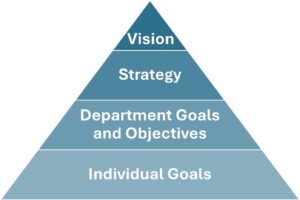
The Role of Stakeholders
Stakeholders include anyone with a vested interest in the success of the organization, such as employees, customers, suppliers, investors, and the community. Aligning the interests of various stakeholders with the organization’s strategic goals is crucial for sustained success. This involves understanding their needs, expectations, and the impact of organizational decisions on their well-being. Engaging stakeholders in open dialogue, seeking their feedback, and incorporating their insights into strategic planning helps build strong relationships and ensure their support in achieving the organization’s goals. Effective stakeholder alignment enhances organizational reputation, fosters loyalty, and drives collaborative success.

Exercise: The Stakeholder Showdown
• Divide the class of 10 participants into five groups of two participants each.
• To experience the challenges and benefits of aligning stakeholder interests.
• In pairs, role-play scenarios where one person is a company representative, and the other is a stakeholder. Discuss a strategic decision and negotiate alignment.
• A discussion among all participants on the learnings and how they may be applied to their workplace follows.
• Builds empathy and understanding of stakeholder perspectives, highlighting their importance in strategic alignment.
• Demonstrates the challenges of gaining strategic alignment.
• Prepares the participants to put it into practice within their organization.
Communication Strategy
An effective communication strategy is vital for promoting strategic alignment within an organization. It ensures that the vision, mission, core values, and strategic objectives are clearly understood and embraced at all levels. Communication should be two-way, allowing for feedback and dialogue to ensure alignment and engagement. Different stakeholders may require tailored communication approaches to ensure the message is relevant and impactful. Regular updates on progress toward strategic objectives and transparent sharing of challenges and successes help maintain trust and motivation. An effective communication strategy fosters a culture of openness, aligns efforts toward common goals, and ensures everyone moves in the same direction.

Challenges to Achieving Strategic Alignment
Resistance to Change
Organizational inertia is a common obstacle to strategic alignment. Employees often resist change due to fear of the unknown, potential loss of job security, or comfort with the current state of affairs. To manage and mitigate resistance, it’s essential to engage in transparent communication, explaining the reasons for change and how it will benefit both the organization and its members. Leadership should foster a supportive environment, offering training and resources to ease the transition.
Implementing change in phases can also help individuals adjust more comfortably. Additionally, involving employees in the planning process can increase buy-in and reduce resistance, as people are more likely to support changes they’ve helped shape.

Case Study
A traditional manufacturing company failed to adapt to the digital age, leading to a decline in market share. Despite its previous success, the company’s resistance to adopting digital transformation technologies resulted in operational inefficiencies and a loss of competitiveness. Competitors who embraced technology gained a competitive edge, illustrating the dangers of resisting change and the impact on strategic alignment and long-term success.
In contrast, another company facing similar market demands was strategically aligned in choosing to adapt by embracing digital transformation. Through a comprehensive change management strategy, the company overhauled its operations, culture, and customer interactions. Leadership communicated the benefits of this shift and involved employees in the transition, offering training to skill them for the digital era. The result was a significant improvement in operational efficiency, market competitiveness, and the ability to innovate. This strategic alignment not only bolstered the company’s market position but also laid the groundwork for sustainable growth and innovation, demonstrating the benefits of adapting to change and aligning strategies with evolving market demands.
These two stories highlight a fundamental truth in today’s business environment: resistance to change can lead to strategic misalignment and decline, while embracing change and aligning strategies with evolving market demands can lead to success and sustainability. The tale of STAR emphasizes the importance of leadership, employee engagement, and a forward-looking mindset in navigating the digital transformation journey, proving that strategic alignment with change is not just beneficial but essential for thriving in the modern business landscape.
Misaligned Incentives
When incentives are not aligned with strategic objectives, efforts toward strategic alignment can be significantly derailed. For instance, if employees are rewarded based on individual performance metrics that conflict with team or organizational goals, they may prioritize personal success over collective achievement. To realign incentives, organizations must first conduct a thorough review of existing reward systems to identify discrepancies. Next, redesign incentives to support strategic objectives, such as team-based rewards for collaborative achievements or bonuses tied to customer satisfaction. Clear communication about how and why incentives are changing is crucial to ensure understanding and acceptance across the organization.

Case Study
A company’s incentive structure focused solely on individual sales volume inadvertently promoted competition over collaboration, limiting potential revenue and damaging customer relationships. By prioritizing personal sales targets, sales representatives missed opportunities for cross-selling and building customer loyalty, leading to dissatisfaction and eroding trust.
Conversely, another company successfully aligned its incentives with its strategic goal of comprehensive customer service. By shifting from individual to team-based rewards and linking bonuses to customer satisfaction scores, the company encouraged collaborative efforts to enhance customer experience. This change led to improved cross-selling, deeper customer relationships, and increased loyalty, demonstrating that aligning incentives with strategic objectives can transform sales approaches, boost revenue, and strengthen customer trust. Notably, this approach also resulted in higher bonuses for sales representatives, illustrating that aligning team efforts with company goals can benefit both the organization and individual employees.
Cultural Barriers
Organizational culture plays a pivotal role in strategic alignment. A culture that is resistant to change, lacks trust, or promotes siloed departments can severely impede alignment efforts. Overcoming these barriers requires deliberately cultivating a culture that values adaptability, collaboration, and open communication. Leaders must model the behaviors they wish to see, such as making decisions that reflect the strategic vision or acknowledging and learning from failures. Engaging employees in conversations about the kind of culture they want to create can also generate valuable insights and foster a sense of ownership and commitment to cultural transformation.

Case Study
Uber’s efforts to reform its company culture and leadership practices under Dara Khosrowshahi, after facing criticism for a toxic work environment, showcase the impact of culture on strategic alignment. Post-reform, Uber saw a reduction in employee turnover and an improvement in brand perception.
Lack of Communication
Poor communication can lead to misinterpretations of strategic goals, resulting in misaligned efforts and initiatives. Effective communication is critical to ensuring that everyone in the organization understands the strategic vision and their role in achieving it. This involves not only disseminating information from the top down but also encouraging feedback and dialogue across all levels. Utilizing multiple communication channels, such as town hall meetings, newsletters, and digital platforms, can enhance transparency. Regular updates about strategic initiatives’ progress and how individual contributions are making an impact can motivate and align efforts across the organization.

Exercise: The Great Miscommunication Escape
• Divide the class of 10 participants into two groups of five participants each.
• To demonstrate how easily a message can be distorted as it passes through multiple points of communication, mirroring real-world organizational communication challenges.
• To illustrate the consequences of poor communication on strategic alignment.
• The first half of the group is tasked with creating a concise message that outlines a strategic goal. This message should be relevant to the topics discussed in the workshop and could be something like, “Increase our market share by 10% in the next fiscal year by improving product quality and customer service.”
• Once the message is created, it’s whispered to the first person in the “communication chain.” This chain consists of the participants in the second group lined up or seated in a row. The message is passed from one person to the next, with each individual whispering what they heard to the person next to them. This continues until the message reaches the last person in the chain.
• The last person in the chain then shares out loud the message they received.
• This message is compared to the original message created by the first group.
• The final message will likely differ significantly from the original. This distortion showcases how easily information can be misunderstood or altered as it moves through different levels or departments within an organization.
• Encourage participants to think about how such communication breakdowns can be prevented in their workplaces and how ensuring clear communication can aid in better strategic alignment across departments.
Rapid Environmental Changes
In today’s fast-paced world, external factors such as technological advancements, market shifts, and regulatory changes can disrupt strategic alignment. Organizations must remain agile, constantly scanning the external environment and being prepared to adapt strategies as necessary. This requires a flexible planning process, where long-term goals are pursued alongside short-term adaptability. Encouraging a culture of innovation, where employees are empowered to seek out and propose adjustments in response to external changes, can also support strategic alignment. Furthermore, developing contingency plans for various scenarios ensures that the organization can pivot quickly and effectively when changes occur.

Measuring Strategic Alignment
Key Performance Indicators (KPIs)
Key Performance Indicators (KPIs) are quantifiable measures used to evaluate an organization’s success in achieving its key business objectives. For strategic alignment, KPIs must be meticulously chosen to ensure they accurately reflect progress toward achieving the organization’s vision and strategic goals. Effective KPIs have several characteristics: they are relevant, actionable, measurable, time-bound, and directly linked to strategic objectives.
Examples of common KPIs include:
• Financial metrics like revenue growth rate and net profit margin.
• Customer metrics such as customer satisfaction scores and net promoter scores.
• Process metrics (e.g., cycle time, defect rates).
• People metrics often encompass employee engagement levels, turnover rates, etc.
When used correctly, KPIs guide the organization toward its strategic objectives by providing clear indicators of performance and areas needing improvement.
Alignment Audits
Alignment audits are comprehensive evaluations designed to assess the degree of harmony between an organization’s strategies, processes, and operations. These audits help identify misalignments or gaps that may hinder the achievement of strategic objectives. Conducting alignment audits involves reviewing strategic plans, operational processes, resource allocations, and organizational culture to ensure they are all pulling in the same direction.
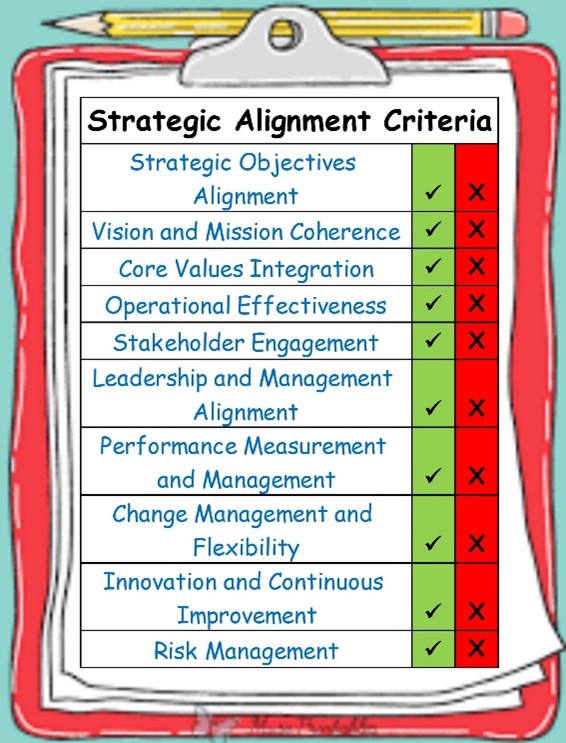
The process typically includes stakeholder interviews, document reviews, and performance analysis. The outcome of an alignment audit is a detailed report highlighting areas of strength, potential risks, and recommendations for realignment. By periodically performing alignment audits, organizations can proactively manage their strategic alignment, ensuring that they are always positioned for optimal performance and competitive advantage.
Feedback Loops
Feedback loops are critical for maintaining strategic alignment within an organization. They provide a mechanism for continuous monitoring and real-time adjustments to strategies based on performance data and external changes. Establishing effective feedback loops involves collecting data from various sources, analyzing this data to extract actionable insights, and using these insights to inform decision-making.
Feedback loops enable organizations to be agile, adapting quickly to new challenges and opportunities. They foster a culture of continuous improvement, where decisions are data-driven and aligned with strategic objectives. For feedback loops to be effective, they must be well-designed, with clear processes for data collection, analysis, and action. Additionally, they should promote open communication and learning across the organization.
Benchmarking
Benchmarking is the practice of comparing an organization’s processes, performance metrics, and strategies against industry standards or leading competitors. This comparison provides valuable insights into an organization’s relative position and the effectiveness of its strategic alignment efforts. Benchmarking can reveal areas of excellence to be celebrated and areas of weakness that require attention.
In order to conduct benchmarking effectively, organizations must first identify relevant benchmarks or competitors against which to compare. Then, they collect data on key performance indicators and perform a gap analysis to identify areas for improvement. Benchmarking not only highlights performance gaps but also helps uncover best practices and innovative strategies that can be adapted to enhance strategic alignment.
Adaptive Strategies
Adaptive strategies are essential in today’s fast-paced and ever-changing business environment. They allow an organization to remain flexible and responsive to changes, ensuring that strategic alignment is maintained even when external conditions shift. Adaptive strategies involve continuously monitoring the external environment and internal performance, being prepared to pivot or adjust strategic objectives and actions accordingly.
The ability to adapt relies on having robust feedback mechanisms, a deep understanding of the competitive landscape, and a willingness to challenge assumptions and experiment with new approaches. Adaptive strategies require leaders to be forward-thinking, embrace change, and foster a culture of agility and innovation. By anticipating changes and adapting strategies proactively, organizations can maintain strategic alignment and sustain long-term success.

Exercise: The Strategic Alignment Triathlon
• The class is divided into three groups as evenly as possible.
• To drive a considered approach to measuring strategic alignment.
• Each group picks one of the following topics: Feedback Loops, Benchmarking, or Adaptive Strategies. No topic should be selected by more than one group.
• The group discusses how that topic might work in their organization.
• Each group presents their learnings.
• The group has considered and practiced some of the lesser-used methods for measuring strategic alignment that they can bring back to their organization.

Course Manual 2: Vision Crafting and Communication
Core Objective: To empower leaders with the skills to craft and communicate a compelling organizational vision that aligns with and inspires all stakeholders, fostering a culture of unity and direction toward achieving strategic goals.

Developing a Compelling Vision
Understanding Organizational Aspirations
In the journey of vision crafting, the initial step is to delve deep into the essence of the organization. This process begins with a thorough reflection on the organization’s history, its foundational values, and the core strengths that set it apart. It’s essential to recognize that a compelling vision statement is not created in isolation but is deeply rooted in the organization’s identity and heritage.
Engaging in this reflective process allows leaders and stakeholders to appreciate the organization’s unique journey and acknowledge its triumphs and tribulations. This understanding is crucial because it informs the future direction by highlighting what has worked well and identifying areas of challenge that need to be addressed or transformed.
Leaders should encourage an analysis of past successes and challenges, fostering an environment where these insights are discussed openly. This analysis serves as a fertile ground for envisioning the future. It’s about connecting the dots between where the organization has been and where it aspires to go, ensuring that the vision is not only forward-looking but also rooted in the reality of the organization’s experiences and capabilities.
Vision Statement Components
A compelling vision statement is a beacon that guides an organization toward its future, and crafting such a statement requires an understanding of its critical components. These elements include clarity, inspiration, and a forward-looking orientation.

• Clarity: The vision statement should be easily understandable and articulate a clear and concise picture of the desired future state. It must avoid ambiguity to ensure that every organization member can grasp the direction and purpose.
• Inspiration: Beyond clarity, the vision needs to inspire. It should evoke emotion and passion, compelling employees, stakeholders, and customers to rally behind it. An inspiring vision pulls people forward, motivating them to overcome obstacles and strive for excellence.
• Future Orientation: A vision is inherently about the future. It should paint a picture of what the organization aspires to become, stretching beyond current capabilities and market positions to articulate a bold and aspirational yet achievable future.
Examples of effective vision statements can illustrate how these components combine to create a powerful and guiding statement. These examples serve as benchmarks, inspiring participants to think big while grounding their aspirations in strategic clarity and inspiration.
The Process of Crafting a Vision
Developing a compelling vision is a structured process that requires thoughtful engagement and input from various stakeholders within the organization. This process can be broken down into several key steps:
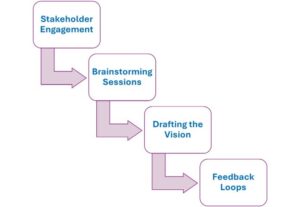
• Stakeholder Engagement: Begin by identifying and engaging key stakeholders across the organization. This includes leadership, employees, and possibly even customers or partners. Their perspectives and insights are invaluable in shaping a vision that resonates across the organization.
• Brainstorming Sessions: Facilitate brainstorming sessions with these stakeholders to generate ideas and perspectives on the organization’s future direction. These sessions should encourage open and creative thinking, allowing participants to dream about what is possible.
• Drafting the Vision: Draft a preliminary vision statement using the insights gathered from brainstorming and analysis. This draft should encapsulate the aspirations and values identified during the earlier stages.
• Feedback Loops: Share the draft vision with a broader group of stakeholders for feedback. This iterative feedback and refinement process is crucial to ensure the vision resonates with and is embraced by the entire organization. It’s about creating a sense of ownership and alignment across all levels.

Case Study
Starting with the idea of “Belong Anywhere,” Airbnb’s vision was crafted through extensive stakeholder engagement, reflecting the desire to create a world where anyone can feel at home anywhere. This vision drove Airbnb to diversify its offerings, introducing experiences that allow travelers to immerse themselves in local cultures. This case illustrates the importance of a participatory process in crafting a vision that is both aspirational and grounded in the company’s identity.

Exercise: The Visionary Ladder
• Ten participants as one group.
• To create a playlist that represents the organization’s vision.
• Participants select songs or instrumental tracks that they feel embody the essence of their organization’s vision.
• Each participant explains their choice and how it relates to the vision.
• This exercise encourages participants to think abstractly and emotionally about the organization’s vision, enhancing their connection to it. The shared playlist serves as a unique auditory representation of the vision, fostering unity and deeper emotional engagement.
Testing and Refining the Vision
Once a draft vision is developed, it is important to test its resonance with different organizational stakeholders. This testing phase is not about seeking unanimous approval but rather about ensuring the vision is aspirational, achievable, and aligns with the organization’s values and future direction.
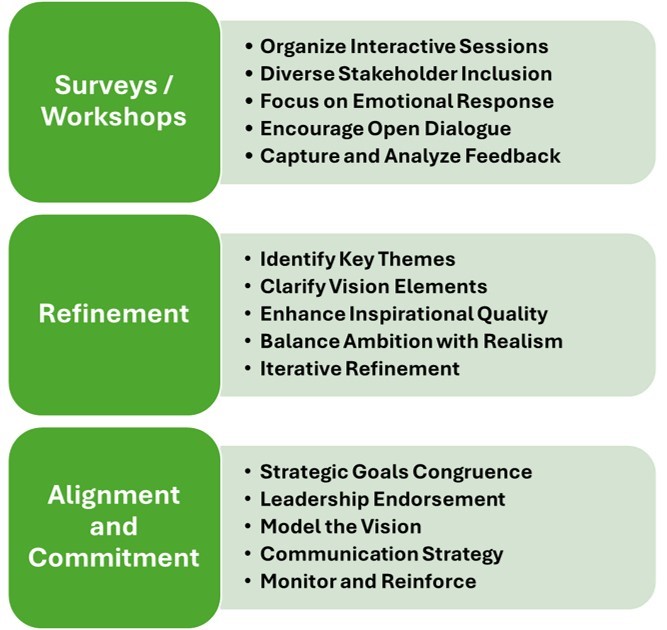
• Surveys and Workshops: Engaging a wide array of stakeholders through thoughtfully planned surveys and workshops is pivotal for breathing life into an organization’s vision statement. These sessions become a melting pot of insights by weaving together a tapestry of perspectives—from front-line employees to the leadership team and external allies.
The heart of these interactions lies in tapping into the emotional currents stirred by the vision statement, as these feelings are the compass guiding deep, meaningful engagement. Creating a sanctuary for open, honest conversations allows these emotional and motivational nuances to surface. The collected feedback, rich in diverse viewpoints and emotional undertones, is then meticulously sifted through to spotlight common themes and emotional touchpoints. This process not only enriches the vision statement but ensures it resonates deeply, echoing the collective heartbeat of the organization.
• Refinement: Transforming feedback into a beacon that guides the refinement of a vision statement is a craft. It’s about tuning into the symphony of voices collected through engaging surveys and workshops, where every level of the organization contributes to a richer understanding of the vision’s impact.
In this inclusive arena, we gather many perspectives, from the vibrant hues of employee insights to the strategic shades of leadership and external partners. The essence of this process is capturing the heartbeats behind the feedback—the emotions and motivations that the vision statement stirs in the soul. It’s about nurturing a space where honesty flows freely, where every piece of feedback is a stepping stone toward a vision that resonates more deeply. This journey of refinement is a dance between ambition and realism, a quest to enhance the vision’s power to inspire while grounding it in achievable aspirations. By carefully analyzing the feedback, we illuminate the common threads that tie our collective dreams to our shared reality, ensuring the vision reaches for the stars and is firmly rooted in the earth beneath our feet.

• Alignment and Commitment: The final step in refining our vision involves ensuring it aligns perfectly with our strategic goals and core values. Our leadership team must not just agree with this vision but fully commit to it. Their support and demonstration of the vision’s principles are key to encouraging its acceptance and implementation across the organization.
To achieve this, we continue our commitment to inclusivity by organizing surveys and workshops that draw in voices from all levels of the organization. We aim for a diverse participation pool involving employees from various departments, leadership, and even external partners to secure a broad spectrum of perspectives.
In these sessions, we give particular attention to the emotional responses the vision statement provokes. We must understand the motivations and feelings tied to the vision, which are critical for genuine engagement. We encourage an environment where everyone feels safe to share honest feedback about the vision statement. By gathering detailed feedback through these discussions and surveys and then analyzing this information, we aim to uncover common themes, concerns, and emotional connections. This process ensures that the final vision is not only aligned with our strategic objectives and values but is also a reflection of our collective aspirations and commitment.

Effective Communication Strategies
Tailoring the Message
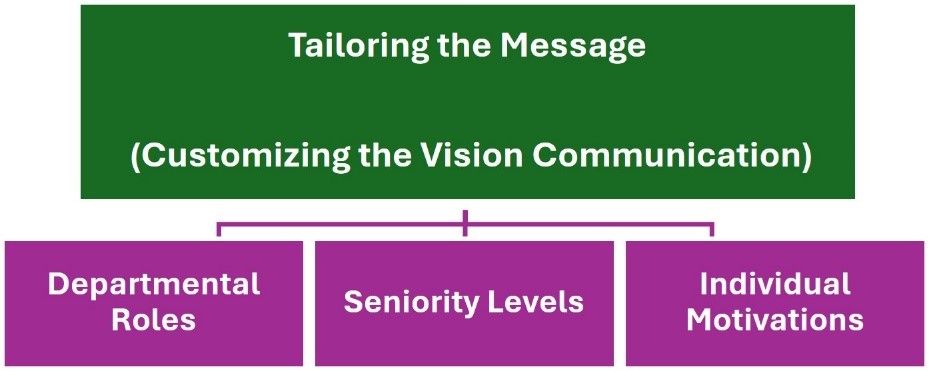
To ensure the vision resonates across all levels of the organization, it’s crucial to tailor the message to meet your audience’s diverse needs and perspectives. Start by segmenting the audience based on departmental roles, seniority levels, and individual motivations. Understand that a one-size-fits-all approach to communication may only effectively convey the vision to some.
• Departmental Roles: Craft messages that link the vision to each department’s specific contributions. For example, in the tech department, emphasize how the vision integrates with technological advancements and innovations.
• Seniority Levels: Adjust the complexity and depth of the message for different seniority levels. Senior executives might require a strategic overview focusing on market positioning and competitive advantage. At the same time, entry-level employees might need more context on how the vision affects their day-to-day tasks.
• Individual Motivations: Identify what drives your employees – career advancement, recognition, personal growth – and tie these motivators back to the vision to make it more relevant and compelling to them.
Channels of Communication
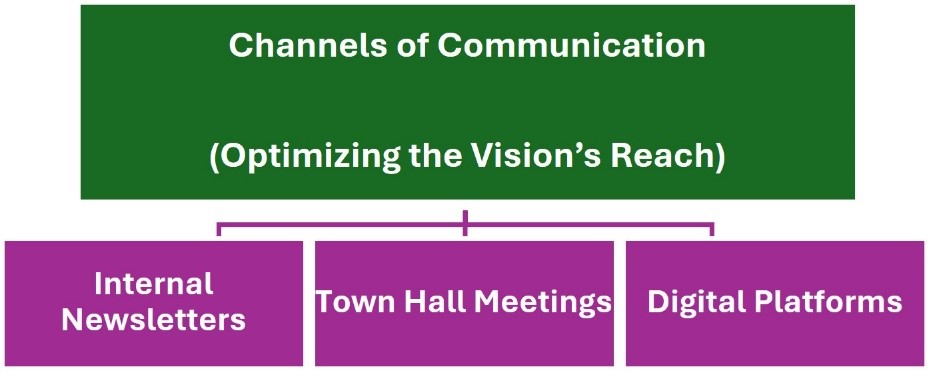
Diversifying the channels of communication ensures that the message of the vision is accessible to everyone in the organization. Consider the following channels, each offering unique advantages:
• Internal Newsletters: These can provide detailed updates on the vision’s progress, allowing for the inclusion of stories, employee achievements related to the vision, and upcoming events.
• Town Hall Meetings: An excellent forum for live, interactive communication. These meetings enable leadership to convey the vision in person, answer questions, and gauge immediate reactions from employees.
• Digital Platforms: To reach employees who are frequently on the move or work remotely, utilize the company’s intranet, social media groups, or a dedicated app. Digital platforms offer the advantage of instant, widespread dissemination and the ability to include multimedia elements to enhance the message.

Case Study
With a massive global workforce, Walmart utilizes an internal communication app that delivers tailored content to employees based on their roles and locations. This strategy ensures that the company’s vision and updates are communicated effectively across all levels of the organization. The “light bulb” moment here is recognizing the power of technology in unifying a diverse workforce under a shared vision.
Storytelling and Emotional Engagement
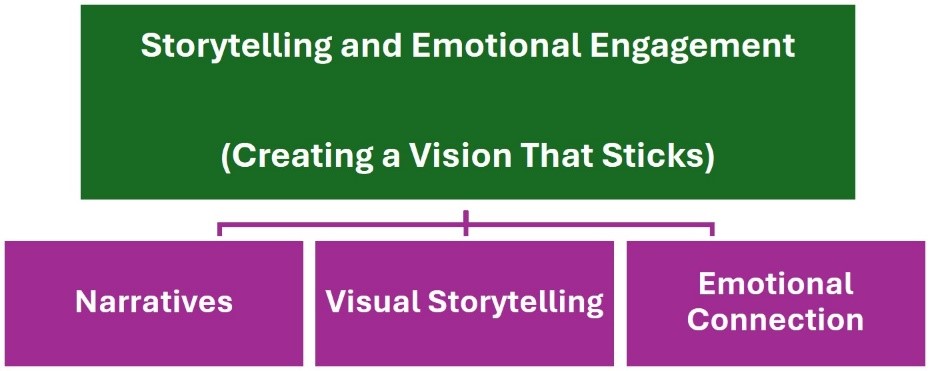
Storytelling is a powerful tool to create a lasting impression of the vision. Stories can humanize the vision, making it relatable and inspiring. Use real-life examples, anecdotes, and hypothetical scenarios that illustrate the vision’s impact on individual employees and the organization as a whole.
• Narratives: Develop narratives that showcase the journey toward the vision, including the challenges faced and how they were overcome. This approach helps employees see their potential role in this journey.
• Visual Storytelling: Incorporate visual elements such as infographics, videos, and compelling imagery to make the vision more memorable and engaging.
• Emotional Connection: Focus on evoking emotions that drive action—pride, belonging, excitement. Communicate how the vision aligns with the employees’ values and aspirations, creating a personal connection.
Measuring Communication Effectiveness
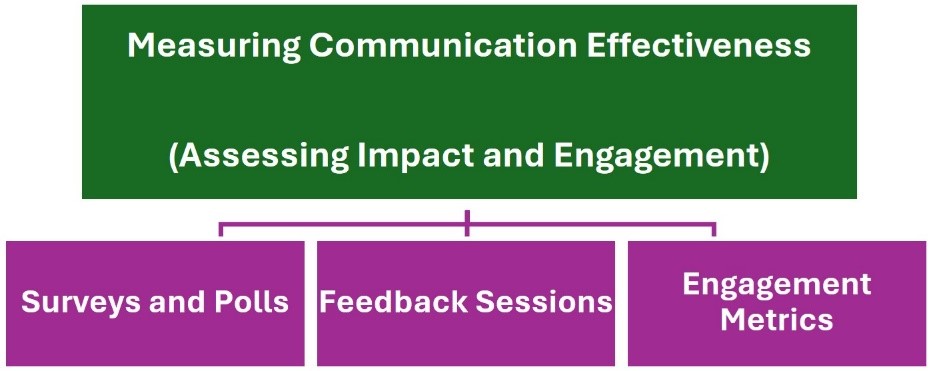
It is essential to measure how well the vision is being communicated to ensure it is understood and embraced across the organization. Employ the following methods to gather insights:
• Surveys and Polls: Regularly distribute surveys or conduct polls to collect feedback on how well the vision is understood and how connected employees feel to it. Questions can range from qualitative feedback on the clarity of the communication to quantitative measures of engagement.
• Feedback Sessions: Organize feedback sessions or focus groups with representatives from different organization segments. These sessions can provide in-depth insights into the effectiveness of the communication strategies and identify areas for improvement.
• Engagement Metrics: Track engagement with digital communications through analytics. Metrics such as newsletter open rates, town hall meeting attendance, and interaction rates on digital platforms can provide valuable data on how effectively the vision is reaching the audience.

Vision as a Guiding Star
Integrating Vision into Strategic Planning
Integrating a vision statement into strategic planning is pivotal for setting an organization’s direction and priorities. A well-articulated vision acts as a beacon, guiding the organization’s ship through the turbulent seas of market changes, technological advancements, and competitive landscapes. It provides a clear image of the desired future state that the organization aims to achieve, serving as a foundation upon which long-term goals and strategies are built.
To effectively integrate vision into strategic planning, organizations must start by ensuring that the vision is not just a statement on a wall but a living document that influences decision-making at all levels. This involves:
• Understanding the Vision: Each member of the strategic planning team must have a deep understanding of the vision – its core values, its aspirations, and the impact it seeks to make.
• Goal Alignment: Long-term goals must directly support the realization of the vision. This involves breaking down the vision into measurable objectives as milestones toward achieving the overarching aim.
• Prioritization: Given limited resources, prioritizing initiatives directly contributing to the vision ensures that efforts are concentrated on what matters most. This may require difficult decisions, such as deprioritizing valuable but less relevant projects.
• Continual Re-evaluation: The strategic planning process is iterative. As the organization progresses, it’s essential to continually reassess goals and strategies to ensure they remain aligned with the vision, adjusting as necessary to reflect internal growth and external changes.

Case Study
IKEA’s vision “to create a better everyday life for the many people” is integrated into every aspect of its strategic planning, from product design to sustainability initiatives. IKEA’s commitment to offering affordable, high-quality products that are sustainably produced demonstrates how a clear vision can guide strategic decisions and operations, inspiring companies to consider how their visions can be reflected in their day-to-day activities.
Decision-Making Aligned with Vision
Aligning all decision-making processes with the vision ensures that every choice, big or small, contributes to the journey toward the envisioned future. This alignment is critical for maintaining consistency in actions and ensuring that the organization makes steady progress toward its goals. To achieve this, organizations should:
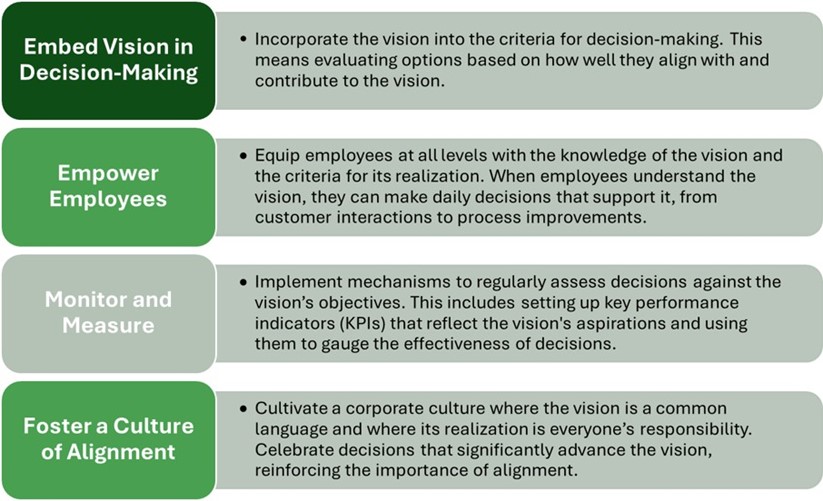

Case Study
Salesforce’s vision of creating a cloud-based platform that revolutionizes how businesses connect with their customers guided its decision to focus on customer relationship management (CRM) software. This strategic focus has made Salesforce a leader in its industry. This case highlights the importance of aligning every decision with the company’s vision to achieve market leadership.
Vision and Organizational Culture
A clear, compelling vision is a cornerstone in building a solid organizational culture where employees’ behaviors and attitudes reflect the core values and aspirations of the vision. Such a culture fosters engagement, commitment, and a sense of purpose among employees, making the vision attainable. To weave the vision into the fabric of organizational culture, consider the following strategies:
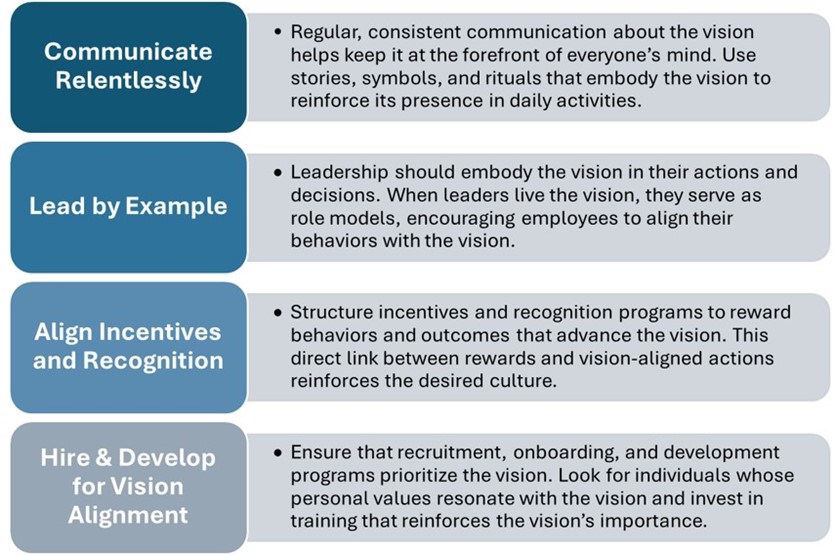
Overcoming Challenges to Vision Implementation
Implementing a vision within strategic planning and daily operations can face numerous obstacles, from resistance to change to misalignment between departments. Overcoming these challenges requires a proactive and strategic approach:
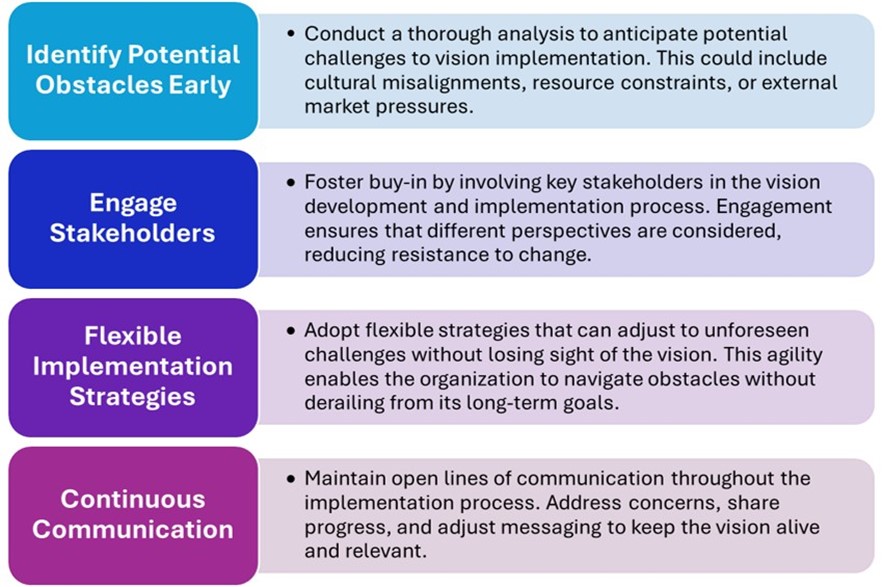

Aligning Individual Goals with Vision
Setting Personal Objectives
To achieve strategic alignment within an organization, each employee must set personal and professional goals that resonate with the organizational vision. This begins with understanding and breaking the broader vision into actionable and relevant objectives. Employees should be encouraged to ask themselves how their roles contribute to the company’s goals and to set specific, measurable, attainable, relevant, and time-bound (SMART) objectives that support these goals.
Engagement in this process can be fostered through workshops and training sessions aimed at helping employees reflect on their strengths, interests, and career aspirations and how these can be aligned with the organizational objectives. This alignment enhances personal motivation by providing a clear sense of purpose and direction and boosts commitment as employees see the value of their contributions to the broader vision.

Case Study
LinkedIn encourages its employees to set personal goals that align with its vision of connecting professionals to make them more successful and productive. Through regular career development conversations, LinkedIn ensures employees see how their work contributes to the company’s vision, enhancing motivation and engagement. This case study can prompt leaders to consider mechanisms for aligning individual goals with the organizational vision.
Performance Management and the Vision
Performance management is pivotal in aligning individual efforts with the organizational vision. It transcends the traditional approach of annual reviews to a more dynamic process involving setting clear Key Performance Indicators (KPIs) that are directly linked to the vision, regular check-ins, and feedback sessions. This ensures that employees remain focused on activities that contribute to the vision, allowing for adjustments based on changes in organizational direction or external factors.
The process should be transparent, with employees fully understanding how their goals align with the organizational vision and how their performance is assessed. Managers play a crucial role in acting as coaches to guide their team members through setting relevant KPIs, providing constructive feedback, and facilitating regular discussions about progress and development needs. This approach enhances alignment and contributes to a culture of continuous improvement and adaptation.
Employee Development and Vision Alignment
Aligning employee development with the organizational vision requires a strategic approach to learning and development programs. This involves creating opportunities for employees to acquire the skills and knowledge needed to contribute effectively to the vision. Development programs should be tailored to support the growth of employees in ways that align with the company’s strategic goals, whether through targeted training, mentoring programs, or planned career path advancements.
Mentoring, in particular, can be a powerful tool for vision alignment, providing employees with role models who embody the organizational values and vision. Additionally, career path planning should be transparent and aligned with the organization’s future needs, allowing employees to see a clear trajectory for growth within the company that supports the overall vision.

Exercise: The Visionary Ladder
• Individually first and then 10 participants as one group.
• To visualize the path of personal development aligned with the organizational vision.
• Each participant draws a ladder on a large piece of paper, with each rung representing a step toward aligning their personal development with the organizational vision.
• Starting from the bottom, they write down current skills and knowledge, moving up to future roles and contributions that align with the vision.
• This exercise concludes with participants sharing their ladders with the group and discussing common themes and aspirations.
• It helps participants map out their professional growth in the context of the organization’s vision.
• Prompts reflection on personal aspirations and how these can be aligned with company goals regarding career development pathways that support individual and organizational success.
Recognizing and Rewarding Alignment
Recognition and reward systems are critical in reinforcing the importance of strategic alignment and motivating employees to incorporate the vision into their daily actions and decisions. Effective recognition goes beyond monetary rewards to include public acknowledgment, opportunities for professional growth, and other non-monetary benefits that signal to employees that their efforts in aligning with the vision are valued.
Such systems should be carefully designed to reward behaviors and achievements that directly contribute to the vision, fostering a culture where employees feel appreciated and engaged. This enhances motivation and builds a sense of community and shared purpose among the workforce, driving collective efforts toward achieving the organizational vision.


Course Manual 3: Strategic Planning for Alignment
Core Objective: To equip participants with comprehensive strategic planning skills that enable them to connect their organization’s strategic goals to actionable plans, monitor their progress, and make necessary adjustments to align with their desired business outcomes.

Environmental Scanning and Analysis
Why Environmental Scanning and Analysis?
Environmental Scanning and Analysis are the cornerstones of strategic planning, providing a comprehensive assessment of an organization’s external and internal facets. The external environment encompasses a broad spectrum of economic, technological, political/legal, and sociocultural factors. Simultaneously, the internal climate delves into the organization’s resources, capabilities, processes, and overall financial performance. This dual-focused analysis is pivotal for delineating the organization’s Strengths, Weaknesses, Opportunities, and Threats (SWOT), setting a robust foundation for strategic insight and direction.

Case Study
Through environmental scanning, Cleveland Clinic identified a shift towards outpatient care and telehealth prompted by technological advances and patient preferences. Following a strategic move toward a telehealth service, the clinic saw a 50% increase in patient engagement.
SWOT Analysis
Following the initial assessment, the SWOT Analysis process comes into play, offering a structured method to integrate and evaluate these findings. The process begins with compiling key data points and insights from the environmental scan. This information is then categorized into four quadrants: Strengths (internal, positive factors), Weaknesses (internal, negative factors), Opportunities (external, positive factors), and Threats (external, negative factors). By comparing and contrasting these elements, organizations can craft strategies that capitalize on internal strengths and external opportunities while mitigating internal weaknesses and external threats. This holistic view fosters informed decision-making, leveraging organizational strengths and buffering against vulnerabilities.
Below is a SWOT Analysis for a small meat-processing business:
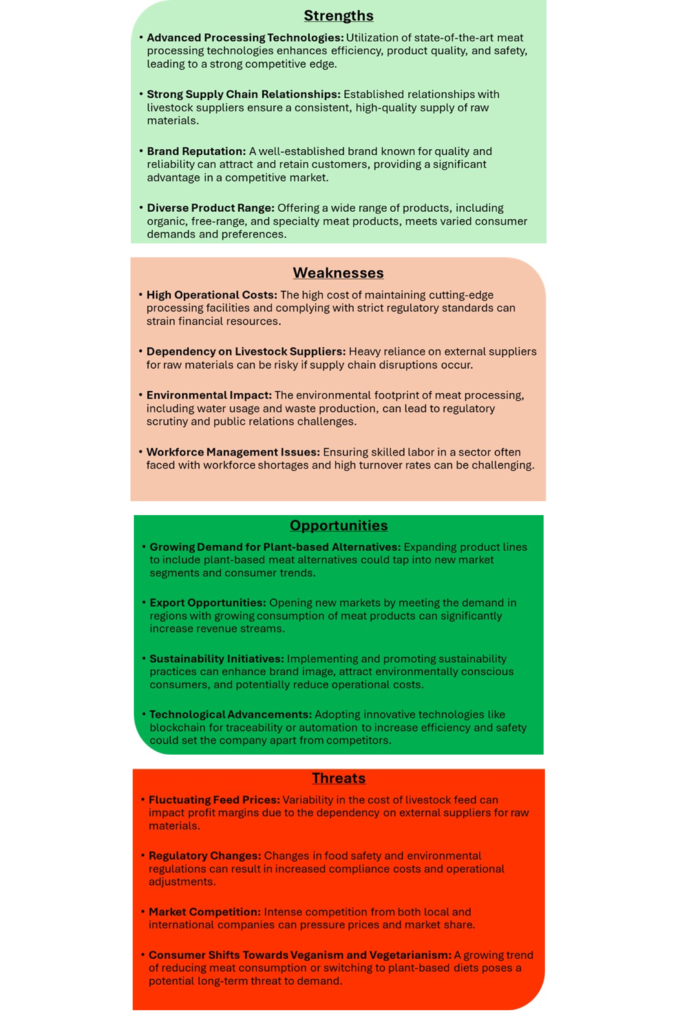
Other Environmental Scanning Tools
For more nuanced External Environment Scanning, there are several additional tools can be utilized:
• PESTLE (Political, Economic, Social, Technological, Legal, and Environmental analysis) is used to evaluate external factors that could systematically impact the organization. This step helps recognize opportunities and threats in the broader market.
• Porter’s Five Forces: This framework evaluates the competitive intensity and attractiveness of an industry. It scrutinizes five key forces: competitive rivalry, bargaining power of suppliers, bargaining power of buyers, threat of new entrants, and threat of substitute products or services.
• Scenario Planning: This involves developing detailed, plausible views of how the business environment might change in the future. It helps organizations prepare for different future scenarios, enhancing strategic flexibility.
• STEEPLE Analysis: This is similar to PESTLE but includes Ethical considerations. It systematically explores Social, Technological, Economic, Environmental, Political, and Ethical factors impacting the organization.
When assessing the Internal Environment, insightful tools for conducting an internal audit focusing on resources, processes, and performance include:
• VRIO (Value, Rarity, Imitability, Organization) framework can be applied to assess the internal capabilities and identify strengths and weaknesses.
• Balanced Scorecard: This strategic planning and management system uses financial and non-financial performance metrics to assess organizational performance against strategic goals comprehensively.
• McKinsey 7S Framework: This framework examines seven interdependent elements of an organization: strategy, structure, systems, shared values, skills, style, and staff. It helps ensure that all parts of the organization are aligned and optimized.
• Resource-Based View (RBV): This view focuses on leveraging an organization’s internal resources. It looks at the uniqueness of resources in value, rarity, inimitability, and organization, similar to VRIO but with a broader lens on how resources can provide competitive advantage.
The outcome of this analysis provides strategic insight that is critical for setting the organization’s direction. It enables leaders to make informed decisions, leverage strengths, address weaknesses, capitalize on opportunities, and mitigate threats.

Exercise: Scanning Speed Dating
• Five pairs.
• To quickly share and learn about various environmental factors impacting their business.
• Each pair spends one minute discussing one key factor (e.g., technological, legal) they believe will impact their business the most in the next year.
• Five new pairs (i.e., nobody stays with the same partner) form and repeat the action.
• Perform this action five times so that all participants have discussed five key factors.
• Rapid exchange of ideas.
• Increased awareness of various environmental factors in the business.

Strategic Planning Process
Vision and Mission Formulation
Formulating vision and mission statements is pivotal in guiding an organization’s strategic direction. Course Manual 2 focused on crafting and communicating a compelling organizational vision. The mission statement defines the organization’s purpose. It explains what the organization does, whom it serves, and how it differentiates itself from competitors. A compelling mission statement aligns with the organization’s values and guides decision-making and strategy formulation.
Together, the vision and mission statements establish a strategic framework for the organization, ensuring that all efforts are aligned with the desired direction and purpose.

Case Study
Adobe redefined its mission and vision to focus on being a cloud-first company, shifting from product sales to a subscription model. The outcome of this was a sustained increase in customer retention and a 60% increase in revenue within two years of implementation.
Crafting the Strategic Roadmap: An Epic Journey
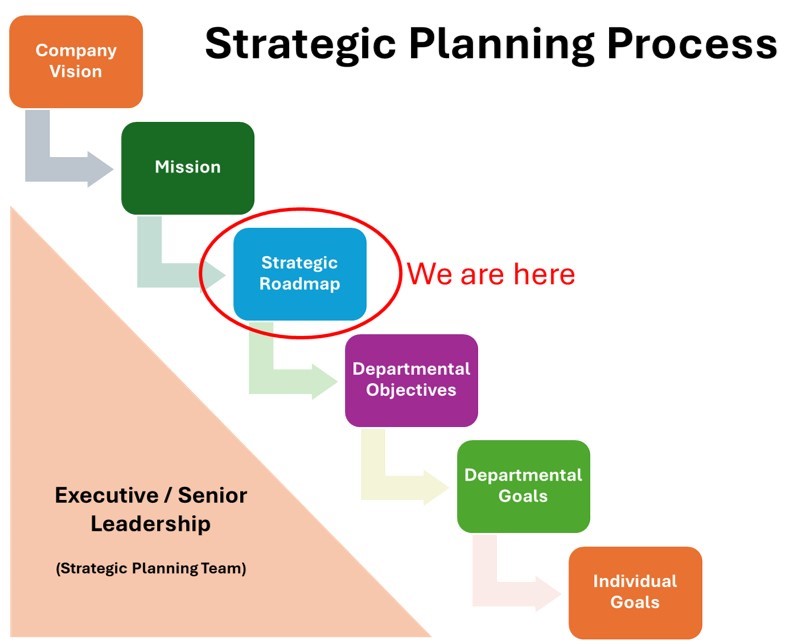
Embarking on creating a Strategic Roadmap is like setting out on a grand adventure where the landscape is your organization’s future, and the destination is realizing its full potential. This journey is not merely about plotting a course; it’s an endeavor to weave together the aspirations embodied in your vision and mission with a series of strategic goals that will guide your path. This intricate process transforms lofty ambitions into tangible steps, crafting a narrative of progress and achievement.
Imagine constructing a Strategic Roadmap as drawing the map for an epic quest. Each strategic pillar acts as a beacon, illuminating the path toward achieving your organization’s destiny. These pillars are the cornerstones of your strategy, representing the fundamental areas where focus and resources will be concentrated to drive success.
The journey begins by identifying the strategic pillars supporting achieving the organization’s vision and mission. These pillars are broad focus areas that encapsulate the key drivers of success. For instance, using the example below of a strategy house for a medical device business, the strategic pillars are:
• Safety
• Quality and Compliance
• People
• Cost
• Sales & Marketing
• R&D / Innovation
The foundational values for this house are Integrity, Compassion, Excellence, and Agility, and the mechanisms that will enable the company to achieve its Vision and Mission are the Processes, Systems, Tools, and Technology it uses. The roof is made up of the company’s:
Vision: To lead in cardiac care innovation by providing advanced, reliable, and accessible medical devices that improve patient outcomes worldwide.
Mission: To be the manufacturer of choice for the customers of our products.
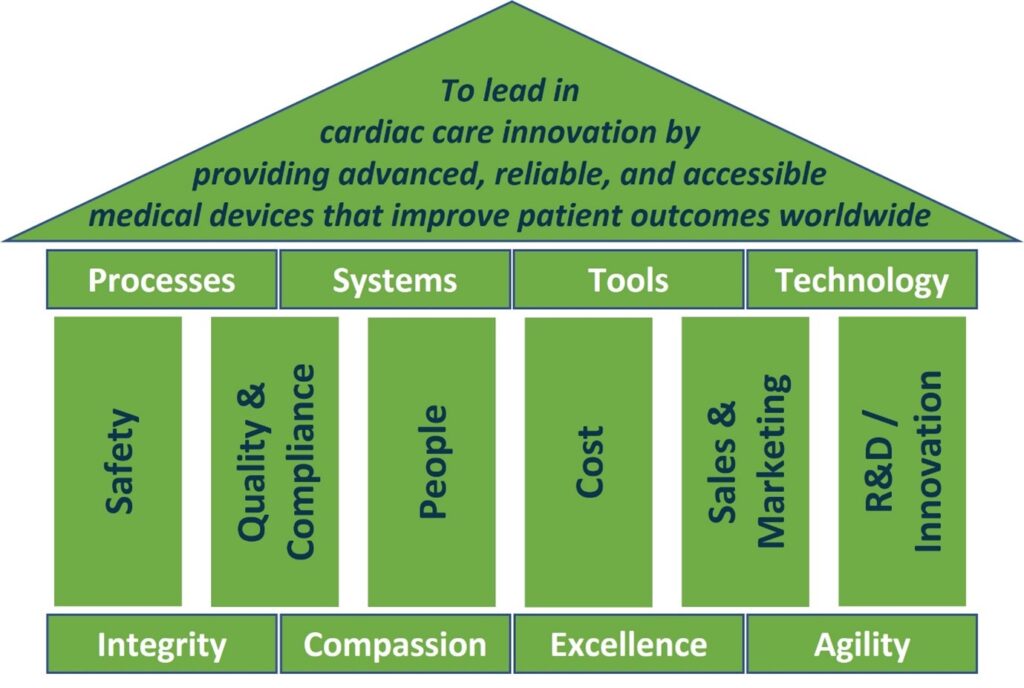
Following the development of your vision and mission statements, having established a comprehensive understanding of both the internal and external environments, and with your strategic pillars in place, the next critical step in your strategic planning process is to set clear, actionable strategic objectives. These objectives will serve as crucial milestones on the journey outlined in the Strategic Roadmap and, when successful, will help you achieve your vision and mission.
We chart the course by setting our strategic objectives. Each pillar has specific, measurable, achievable, relevant, and time-bound (SMART) objectives. This involves a deep dive into each area, identifying where we are, where we want to be, and the key milestones that will mark our progress. For each pillar:
• Set Specific Objectives: Define clear, specific outcomes that success looks like for each pillar.
• Measure Progress: Establish metrics and indicators that will allow us to track our journey and adjust our sails as needed.
• Ensure They’re Achievable: Align objectives with resources and capabilities to ensure they can be realistically achieved.
• Make them Relevant to the Vision and Mission: Ensure that each objective resonates with the organization’s core aspirations, reinforcing the direction set by the vision and mission.
• Time-bound Plans: Set timelines for achieving these objectives, creating a sense of urgency and a roadmap for progress.

Exercise: Strategic Shuffle
• Two groups of five.
• To gain experience in developing a set of strategic objectives.
• Each group of 5 considers the business’s vision, mission, and strategic pillars (if any) and develops a set of strategic objectives based on this.
• Each group presents (on a flipchart/whiteboard) its set of objectives to the other group and explains its rationale.
• Allow a short discussion to take place after each presentation.
• Experience gained in setting strategic objectives.
• Exposure to conflict and other opinions on selected objectives.
Conclusion: Navigating Towards Success
Creating a Strategic Roadmap centered around strategic pillars and setting strategic objectives is an adventure that will transform vision into action and ambition into achievement. It’s about making deliberate choices that chart a course toward organizational success. Vision and mission are no longer just guiding stars; they are the wind in our sails, propelling us forward. Each strategic pillar becomes a chapter in our story of progress, with goals and objectives as the plot points marking our achievements along the way. Every resource allocated and every goal achieved brings us closer to realizing the envisioned future. Through this strategic expedition, we plot a course for success and embark on a journey of growth, resilience, and excellence.

Linking Strategy to Action
Translating Strategies into Operational Plans
Strategic objectives serve as an organization’s compass, guiding its direction towards the envisioned future. However, these objectives must be transformed into tangible, operational plans to effect real change. This transformation involves meticulously deconstructing each strategic objective into smaller, measurable goals that can be assigned to different departments or teams. Each objective should have a timeline, resource allocation, and defined outcomes to ensure clarity and manageability.
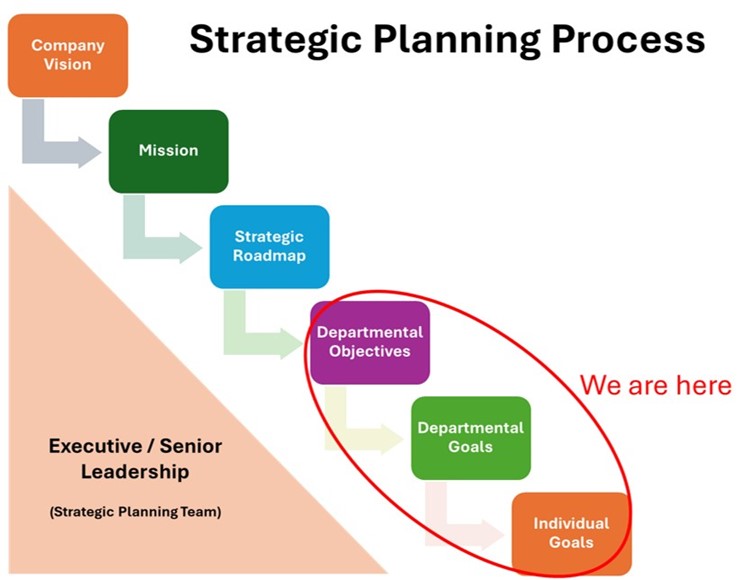
With the departmental objectives now set, the next step is to break these down into departmental goals. These are the goals that the department must achieve, the cumulative effect of which will be that the department achieves its strategic objectives. Regular review and adjustment of these goals are essential as they allow the department to adapt to changes and stay on course.
The final leg of the roadmap is to assign the departmental goals to individuals or teams within the department. A Project Owner should be appointed where a team is assigned to help drive ownership for the goal.
Developing proficiency in project management methodologies, such as Agile or Waterfall, to adapt the planning process to the organization’s needs can be crucial in translating strategies into actionable and achievable plans. Having team members who understand how to use tools like Gantt charts, critical path analysis, and risk management plans can be a huge advantage in planning, supporting, and optimizing such initiatives.
Strategic Objective / Goal Setting at all Levels
Whether setting goals or objectives at an organizational, departmental, or individual level, SMART criteria should ensure that objectives/goals are clear and attainable within a set timeframe.
Alignment of Departments and Teams
Strategic alignment requires a concerted effort to ensure that all departments and teams work towards the same goals. This alignment process begins with clearly articulating the strategic objectives to every part of the organization. Use tools such as strategy maps and balanced scorecards to visualize and communicate how individual team objectives contribute to overall strategic goals.
Facilitate workshops and discussion forums where teams can collaboratively define their objectives and understand their role in the larger strategy. Develop conflict resolution and negotiation skills to handle discrepancies between departmental goals and strategic objectives. Setting up interdepartmental liaison roles or integration units can also help maintain ongoing alignment as strategies evolve.
Communication for Alignment
Effective communication is the linchpin of strategic alignment. It ensures that every stakeholder, from the executive board to frontline employees, understands and buys into the strategic vision and their role in achieving it. This involves a one-time announcement of the strategy and an ongoing dialogue. Master the art of storytelling to make the strategic vision compelling and relatable. Use a variety of communication channels – town hall meetings, internal newsletters, and digital platforms – to reinforce the message and keep the strategy in mind.
To excel in this area, build strong emotional intelligence to tailor communication styles to different audiences. Also, learn to leverage technology for effective knowledge sharing and to create feedback loops that allow for the adjustment of plans based on stakeholder input. This constant flow of information helps keep everyone aligned and engaged with the strategic objectives.
Creating Accountability Structures
Accountability structures are critical for ensuring that translating strategy into action isn’t just a theoretical exercise. Key Performance Indicators (KPIs) are vital, providing a quantifiable measure of progress towards strategic objectives. Each KPI should be closely linked to an operational plan and assigned to specific teams or individuals.
Becoming adept in this domain involves learning to select relevant, measurable, and balanced KPIs across financial, customer, process, and growth perspectives. Mastery of data analysis and performance management systems is essential to tracking these indicators effectively. Additionally, expertise in feedback systems and performance review methods will enable the continuous alignment of actions with strategic goals, fostering a culture of accountability and excellence.
Initiative Launch and Management
Launching and managing strategic initiatives are the culmination of the strategic planning process. This phase involves turning plans into action and managing those actions to achieve the desired outcomes. Successful initiative launch and management rely on thorough planning, stakeholder engagement, and robust governance structures. Start by defining clear roles and responsibilities and establishing a governance framework that includes oversight mechanisms such as steering committees or project management offices (PMOs).

Monitoring and Adjusting Strategies
Establishing Key Performance Indicators (KPIs)
Key Performance Indicators (KPIs) are quantifiable measures used to evaluate the success of an organization, employee, or process in meeting objectives for performance. Establishing effective KPIs is essential to ensure they are closely aligned with strategic goals and objectives. Begin by identifying the critical areas of performance that directly impact the strategic outcomes. Each KPI should be SMART. This involves thoroughly analyzing what drives success in your organization and how these drivers can be quantified. Encourage including leading (forward-looking) and lagging (backward-looking) indicators to provide a comprehensive view of performance. Additionally, the data availability and the feasibility of regular measurement should be considered without causing undue workload.
Performance Review and Analysis
Regular performance reviews and analyses are vital to understanding the impact of your strategic initiatives. This process involves collecting data on each KPI and comparing performance against pre-established benchmarks or targets. Conducting these reviews at scheduled intervals is essential to track progress and identify trends over time. Analytical tools and techniques, such as SWOT analysis (Strengths, Weaknesses, Opportunities, Threats), are used to dissect the performance data. This analysis should focus on where gaps exist and seek to understand the underlying causes of performance variances. Visual representations of data, such as dashboards and charts, can aid in making the information accessible and actionable for all stakeholders.
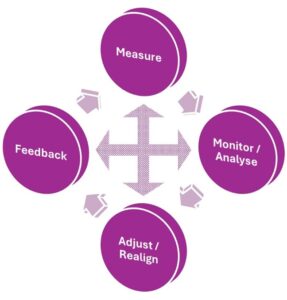
Strategy Adjustment and Realignment
The dynamic nature of business environments necessitates the continuous adjustment and realignment of strategies. Based on the insights gained from performance reviews and analysis, identify areas where strategies are not producing the desired outcomes or new opportunities or threats have emerged. The adjustment process should be systematic and based on evidence from performance data. Involve key stakeholders in discussions on potential strategic shifts to ensure adjustments are feasible and aligned with overall objectives. Maintaining a balance between being responsive to immediate needs and staying committed to long-term strategic goals is crucial. Implement a framework for strategy adjustment that includes criteria for decision-making, steps for implementation, and mechanisms for monitoring the effects of changes.

Case Study
Through continuous monitoring and feedback loops, Singapore Airlines consistently adjusts its service strategies to enhance passenger satisfaction. It maintains the highest customer service ratings in the aviation industry and gains significant repeat customer rates.
Learning from Implementation
Capturing and analyzing lessons learned during the implementation of strategies is a critical component of strategic management. This involves a reflective process where teams discuss what worked well, what did not, and why. Focus on both successes and failures as valuable sources of insight. Documenting these lessons creates a knowledge base to inform future planning cycles and strategy adjustments. Encourage a culture of transparency and continuous improvement where feedback is valued and used constructively. Key areas to explore include the effectiveness of communication channels, stakeholder engagement, resource allocation, and the organization’s adaptability to change.
Engaging Stakeholders in the Adjustment Process
Stakeholder engagement in adjusting strategies is crucial for ensuring transparency, building buy-in, and facilitating the smooth implementation of changes. Identify all relevant stakeholders, which can include employees, customers, suppliers, and investors, and tailor communication strategies to their interests and concerns. Use a mix of communication channels to reach different stakeholder groups effectively. Facilitate forums, workshops, or meetings where stakeholders can voice their opinions, suggestions, and concerns. It’s essential to demonstrate how their input has influenced decision-making processes to reinforce their value in the organization. Finally, the reasons for the changes, the expected outcomes, and how success will be measured and reported should be communicated clearly.


Course Manual 4: Operationalizing Strategy
Core Objective: To provide participants with the knowledge and skills to enhance organizational effectiveness through operationalizing strategic objectives.

Understanding Strategic Objectives
The Link Between Strategic Objectives and Individual Goals
Strategic objectives form the cornerstone of an organization’s direction and focus. These objectives are not just lofty aspirations but are concrete goals set by top management to steer the organization toward its envisioned future. Understanding these objectives requires a deep dive into the organization’s mission, vision, and long-term goals. This process involves analyzing the strategic goals to discern their broader implications for different departments and operations within the organization.
Experts in strategic alignment begin by breaking each strategic objective into its core components to understand the underlying intent and the outcomes it seeks to achieve. This granular analysis helps to identify how each department or operational unit can contribute to these objectives. For instance, let’s take a deeper look at our hypothetical medical device business:
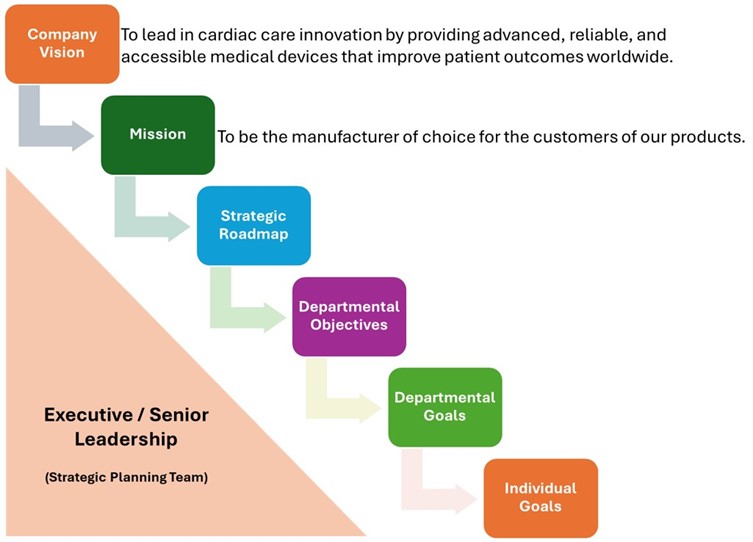
The strategic roadmap for this business has been drawn up. There are eight strategic objectives across the six strategic pillars, as follows. Beneath each are potential departmental goals for various departments within the business.
Strategic Pillar: Safety
1. Strategic Objective: Improve the health and safety of all staff and visitors by eliminating all workplace accidents requiring treatment greater than first aid from 31st December 202x.
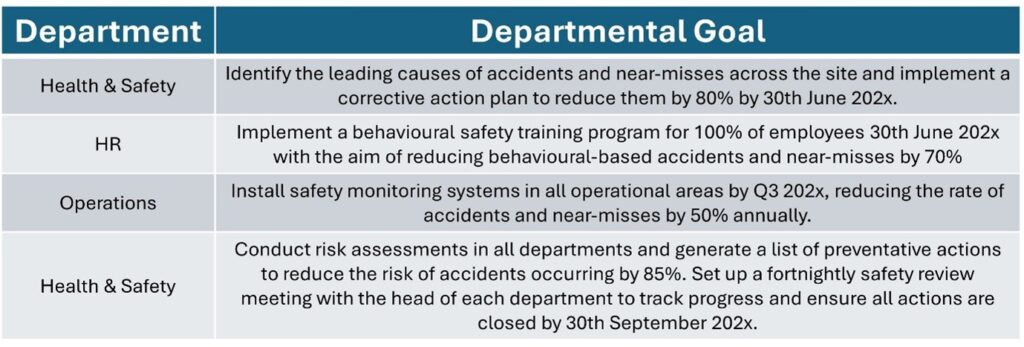
Strategic Pillar: Quality and Compliance:
2. Strategic Objective: Improve product quality to decrease customer complaints by 40%, achieving a rate of 0.0005% or less by 31st December 202x.
3. Strategic Objective: Ensure exceptional regulatory compliance with no major nonconformances or warning letters resulting from external audits from 31st December 202x.

Strategic Pillar: People:
4. Strategic Objective: Reduce employee turnover by increasing retention rates by 60% to 88% from 31st December 202x.

Strategic Pillar: Cost:
5. Strategic Objective: Reduce the business’s cost base by 15% to €150M per year, enabling the funds to be spent on growth activity from 31st December 202x.

Strategic Pillar: Sales & Marketing:
6. Strategic Objective: Increase the average market share of our current product by 15% to 36% by 31st December 202x.

Strategic Pillar: R&D / Innovation:
7. Strategic Objective: Reduce the average time from concept to market by 30%, resulting in products taking an average of 3.5 years by 31st December 202x.
8. Strategic Objective: Demonstrate the business’s innovative nature by launching five new patentable products by 31st December 202x.

After establishing departmental goals, department leaders can align the strengths and skills of their team members with these specific objectives. This alignment should also support each team member’s professional growth and development. When individuals succeed in their targeted goals, this success cascades upwards—enhancing departmental performance and advancing overall organizational objectives. Consequently, these collective achievements are instrumental in realizing the company’s overarching vision and mission, demonstrating the critical role each employee plays in the organization’s strategic success.

Case Study
Habitat for Humanity set a strategic objective to increase the number of homes built annually by 20%. They exceeded their goal by optimizing resource allocation and volunteer management, increasing home construction by 22%, and demonstrating the impact of strategic objectives on community involvement and support.

Exercise: Visionary Voices
• Divide the class of 10 participants into five groups of two participants each.
• To connect individual roles to the company’s strategic objectives.
• Assign each pair a different department or role.
• Pairs discuss and list how their role contributes to the company’s strategic objectives and present their findings.
• Recognition of the interconnectedness of individual roles and strategic objectives.
• Holistic understanding and appreciation of their team’s goals.
• Prepares the participants to put it into practice within their organization.

From Strategy to Operations
Identifying Operational Levers
Operational levers are the tools and mechanisms that an organization can adjust to achieve its strategic goals. These levers encompass various aspects of the business, including process improvements, technology upgrades, workforce management, and organizational structure adjustments. Identifying the right levers and understanding how to manipulate them is crucial for translating strategic objectives into actionable operational plans.
For example, suppose a strategic goal focuses on enhancing customer satisfaction. Potential operational levers might include improving the customer service process, investing in customer relationship management (CRM) software, or implementing training programs for frontline employees. Each lever offers a different pathway to achieving the strategic goal, and the choice of which levers to pull depends on the specific context and capabilities of the organization. Experts in operationalizing strategy identify and prioritize these levers based on their potential impact and feasibility.

Case Study
IKEA set a strategic goal to increase customer engagement through enhanced in-store experiences. By redesigning store layouts to create more interactive spaces and integrating digital tools for product visualization, IKEA saw a 15% increase in in-store visits and customer engagement, demonstrating that retailers can transform strategy into operational excellence by enhancing the customer journey within physical and digital spaces.
Mapping Strategy to Operational Plans
Transitioning from strategy to operations involves mapping strategic objectives to detailed operational plans. This mapping process requires a systematic approach to identify the activities, resources, and timelines needed to achieve strategic goals. Tools such as strategy maps, balanced scorecards, and Gantt charts can be instrumental in this process.
A strategy map, for example, visually links strategic objectives across different perspectives such as financial, customer, internal processes, and learning and growth, showing how each objective supports the others. This helps create a cohesive operational plan aligning with the strategic goals. The balanced scorecard further translates these objectives into specific KPIs and targets, providing a clear framework for measurement and execution. Finally, Gantt charts can outline the timelines for each operational activity, ensuring that the plan is executed in a timely and coordinated manner.
Communication and Alignment
Effective communication is the linchpin in aligning strategic objectives with operational activities. It ensures that every organization member understands the strategic goals, their role in achieving them, and how their daily activities contribute to the larger vision. Communication strategies may include regular briefings, workshops, and collaborative platforms to share updates and feedback.
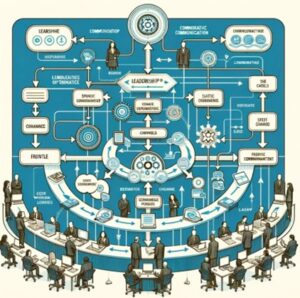
Creating a culture of open communication fosters a sense of ownership and commitment among employees. It enables operational teams to see the big picture and understand the importance of their contributions. Leaders play a crucial role in modeling this communication by consistently reinforcing strategic objectives and highlighting examples of alignment and success. This ongoing dialogue ensures that strategic alignment is not a one-time event but a continuous process of adjustment and reinforcement.
Measuring Success
Measuring the success of operational plans in achieving strategic objectives is critical to ensure that the organization is on the right track. This involves setting clear, quantifiable key performance indicators (KPIs) that align with each strategic objective. These KPIs serve as benchmarks to assess performance and guide decision-making processes.
For instance, if a strategic objective is to improve operational efficiency, relevant KPIs might include metrics such as production time, cost per unit, and resource utilization rates. Regular monitoring of these KPIs allows for real-time assessment of how well operations align with strategic goals. Additionally, it facilitates timely adjustments to operational plans to address any deviations from the expected outcomes.
Measuring success also involves analyzing leading and lagging indicators for a comprehensive performance view. Leading indicators predict future performance, allowing for proactive adjustments, while lagging indicators objectively assess outcomes against objectives. Together, these metrics ensure operational excellence is achieved and sustained over time.

Exercise: Quick-Fire Challenges
• Divide the class of 10 participants into five groups of two participants each.
• To quickly generate operational solutions to unexpected strategic challenges.
• Pairs are given a strategic goal and a sudden challenge (e.g., budget cut).
• Each pair has 3 minutes to brainstorm a quick operational adjustment to stay on track.
• Exposure to the reality that unexpected challenges can impact strategic plans.
• Participants develop agility in adapting operations to meet strategic objectives under pressure.

Resource Allocation for Strategic Initiatives

Case Study
Strategic allocation of financial and human resources can accelerate product development in response to global needs, highlighting the importance of agility in resource allocation. Take the pharmaceutical giant Pfizer. They allocated substantial resources toward the rapid development and distribution of a COVID-19 vaccine. By prioritizing this initiative and effectively managing its budget, Pfizer was able to bring a vaccine to market in record time, significantly impacting global health and securing a solid competitive position.
Principles of Resource Allocation
Resource allocation is distributing available resources effectively to achieve strategic goals. Key principles include:
• Prioritization: Align resources with organizational priorities and strategic importance. Use tools like the Eisenhower Matrix or the MoSCoW method to classify initiatives based on urgency and importance.
• Optimization: Maximize return on investment by using resources efficiently. Balance cost, quality, and time constraints to enhance outcomes.
• Flexibility: Allocate resources flexibly to adapt to changes or strategic shifts. Incorporate buffers and contingencies to handle unforeseen events.
• Alignment: Ensure resource allocation harmonizes with the organization’s vision, goals, and strategic direction. Align efforts at both macro and individual levels toward strategic objectives.
• Monitoring and Adjusting: Continuously monitor resource allocation and adjust based on performance data and evolving organizational needs, directing resources toward the most impactful initiatives.
Budgeting for Strategic Initiatives
Effective financial resource allocation is a cornerstone of successful strategic initiative management. It requires precise and adaptive budgeting techniques to ensure that each dollar spent furthers organizational goals. By embracing various budgeting methods, organizations can enhance their strategic alignment and operational efficiency, facilitating better decision-making across all levels.
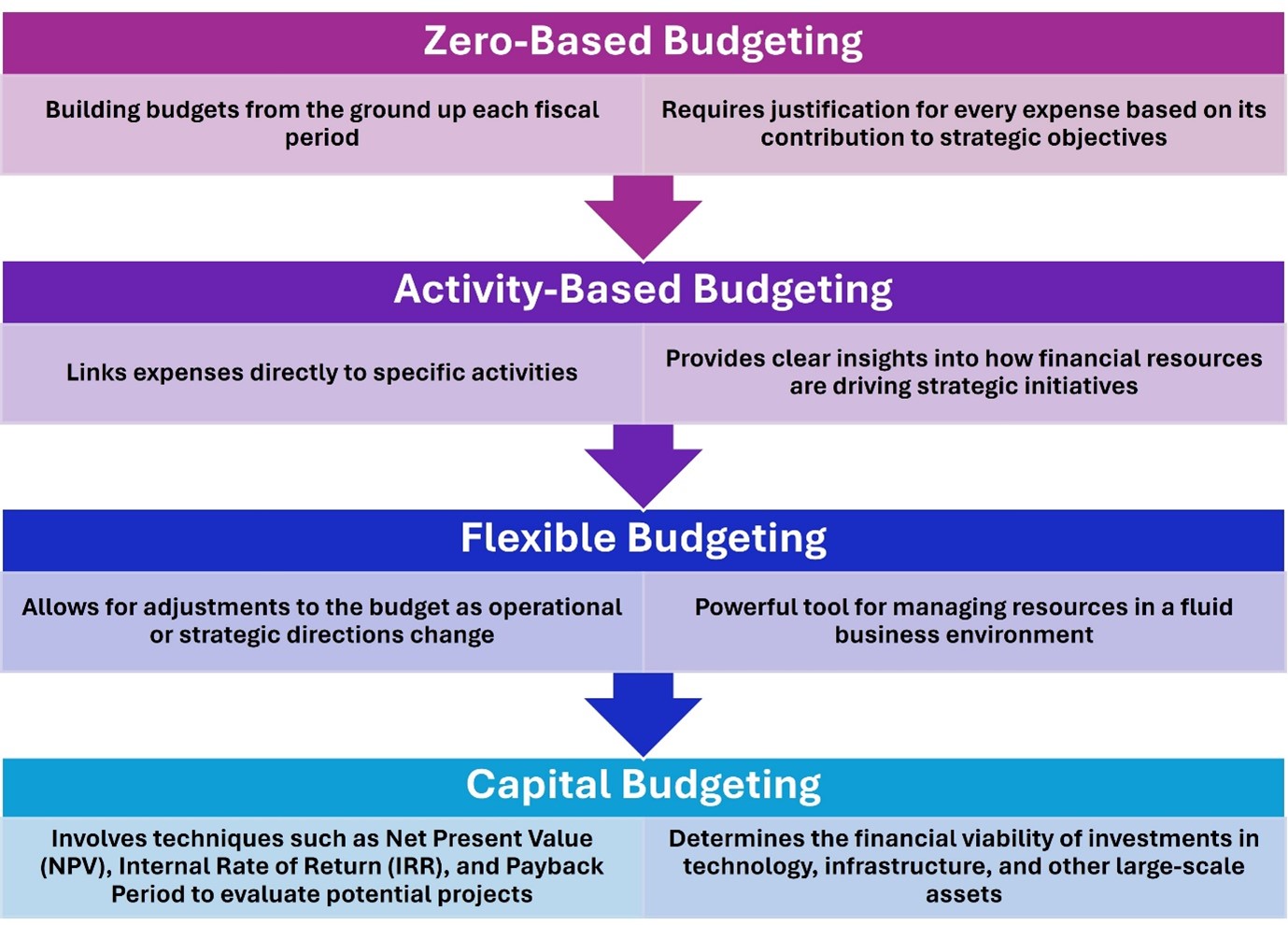
• Zero-Based Budgeting: Promotes fiscal discipline and ensures that all expenditures are directly aligned with strategic priorities, eliminating unnecessary spending and optimizing resource allocation.
• Activity-Based Budgeting: Enhances transparency and accountability in spending, helping managers make more informed decisions about where to allocate resources for maximum impact on strategic goals.
• Flexible Budgeting: Recognizing that business conditions are dynamic, this method ensures that the organization can respond quickly to new opportunities or challenges.
• Capital Budgeting: Essential for planning significant investments in long-term assets, this method ensures alignment with long-term strategic objectives and contributes to sustainable growth.
By employing these diverse budgeting strategies, organizations can create a robust framework for financial planning that supports strategic initiatives and drives overall business success. This approach aligns financial resources with corporate objectives and enhances the ability to navigate economic uncertainties effectively.
Talent and Capability Alignment
Aligning human resources with strategic goals is essential for any organization to achieve long-term success and maintain a competitive edge. This alignment ensures that the workforce is prepared to meet current demands and equipped to handle future challenges. Organizations can optimize their human capital to achieve their overarching objectives through a series of strategic actions.
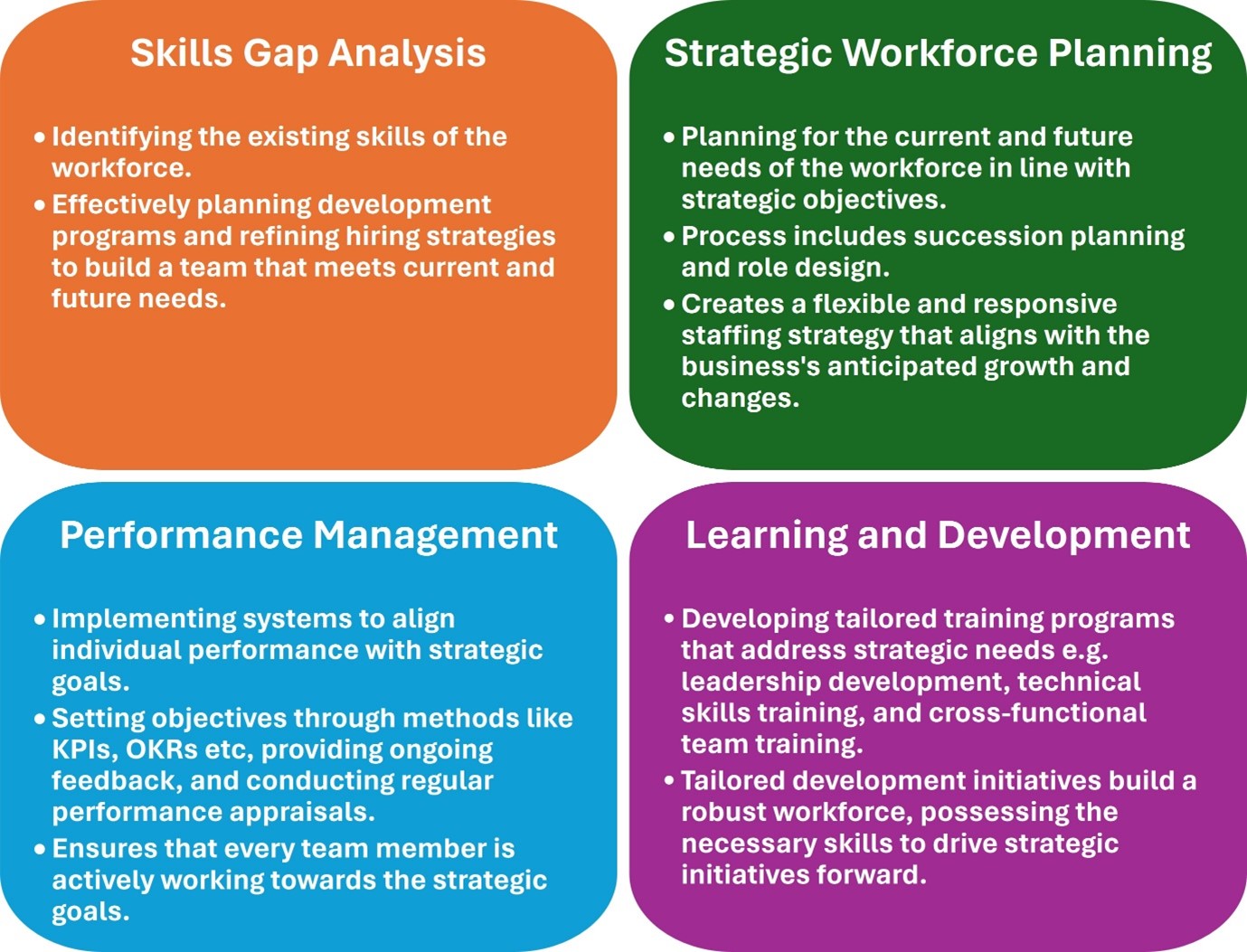
Through these integrated strategies, organizations can harness their human resources to not only meet the immediate needs of the business but also support sustainable growth and strategic success in the long term. Aligning talent and capabilities with strategic goals is a dynamic and ongoing process that requires continual assessment and adjustment to remain effective.
Technology and Infrastructure Investment
Investing strategically in technology and infrastructure is critical for organizations aiming to stay competitive and adaptive in today’s rapidly changing business environment. This strategic focus involves a comprehensive approach to evaluating, enhancing, and securing an organization’s technological foundations. By aligning technology investments with strategic goals, organizations can improve their operational efficiencies, drive innovation, and secure long-term growth.
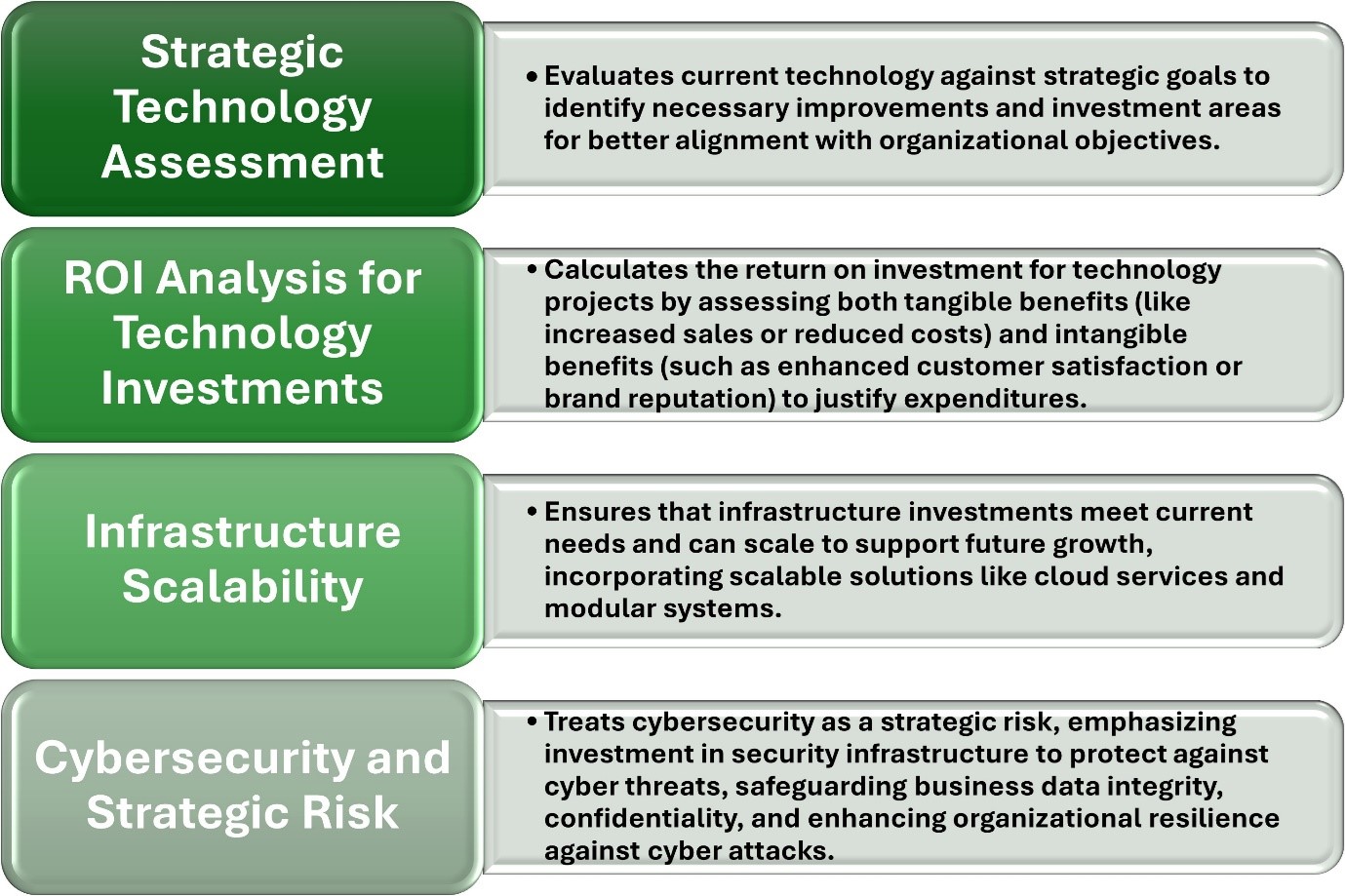
By integrating these elements into their strategic planning, organizations can ensure that their technology and infrastructure investments are robust and aligned with their long-term strategic vision. This alignment is vital to achieving sustained success and maintaining a competitive edge in the marketplace.
Risk Management in Resource Allocation
Effectively managing risks associated with resource allocation is paramount in the realm of strategic initiatives. An organization must systematically identify and address potential risks that could impede the realization of strategic objectives. This proactive approach involves several critical steps to safeguard the organization’s assets and ensure that strategic projects achieve their intended outcomes. By integrating risk management directly into the planning and execution phases of resource allocation, businesses can enhance their ability to navigate uncertainties and maintain operational integrity across all levels.
• Risk Identification and Assessment: This initial phase involves using various techniques to pinpoint and evaluate potential financial, operational, and strategic risks. The goal is clearly understanding where vulnerabilities lie and how they might impact the organization.
• Risk Mitigation Strategies: Once risks are identified, developing tailored strategies to mitigate them becomes essential. Diversifying, securing insurance, and creating contingency plans are employed to manage or offset risks before they can adversely affect the organization.
• Risk Monitoring: Continuous risk monitoring is crucial to assessing the effectiveness of the implemented strategies. This ongoing process ensures that the organization can respond dynamically to changes and make necessary adjustments to risk management plans.
• Integrating Risk Management with Strategic Planning: Incorporating risk management into the fabric of strategic planning ensures that all resource allocation decisions are made with a comprehensive understanding of potential risks. This integration helps align risk management strategies with broader organizational goals, enhancing decision-making processes and strategic outcomes.
By adopting these structured steps, organizations can foster a robust risk management culture that supports sustainable growth and strategic success.

Process Optimization for Strategic Goals
Assessing Process Maturity
Understanding and evaluating the current maturity of organizational processes is crucial to achieving operational excellence. This involves a systematic assessment to determine how well processes are defined, managed, and optimized in alignment with strategic objectives. Maturity models such as the Capability Maturity Model Integration (CMMI) provide a structured framework for evaluating process maturity across five levels—from initial (ad hoc, chaotic) to optimizing (continuous improvement). Organizations should identify key critical processes to achieving strategic goals to assess process maturity. Next, they should evaluate the current performance of these processes using metrics and benchmarks to gauge their effectiveness, efficiency, and alignment with strategic objectives. Organizations can then rate the maturity level of these processes utilizing frameworks like CMMI, pinpointing areas of strength and those requiring improvement. Based on this assessment, organizations should develop and outline action plans to elevate process maturity and ensure better alignment with strategic goals.
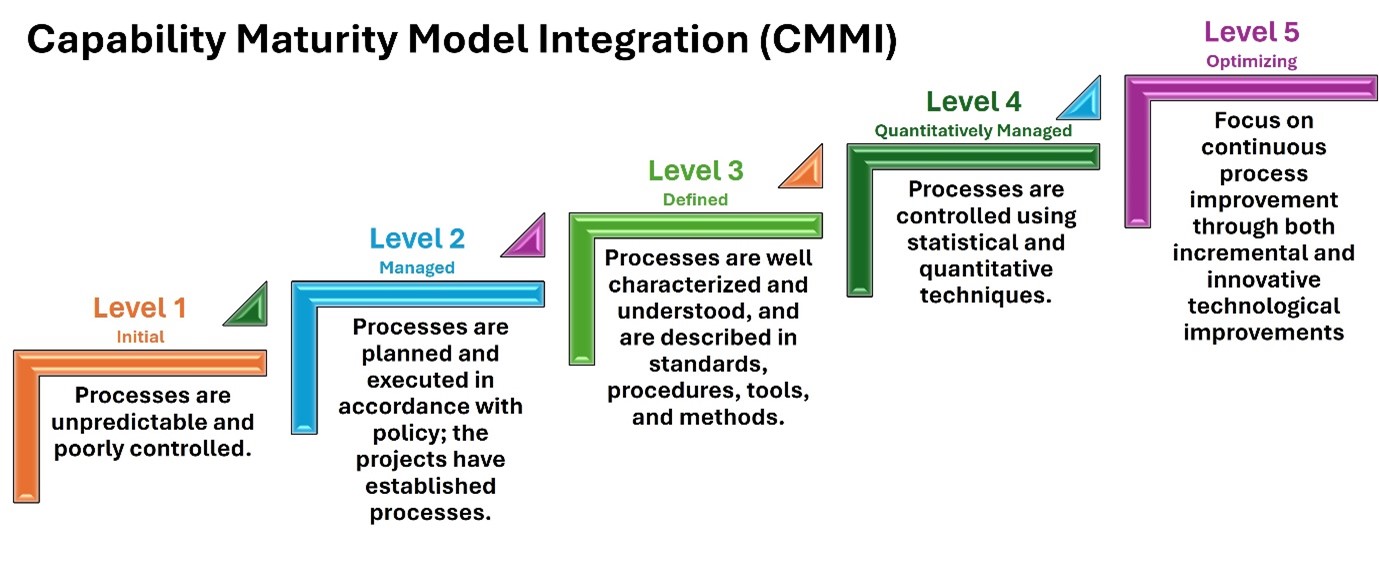
Lean Management and Six Sigma
Lean Management and Six Sigma are pivotal methodologies for process optimization, particularly in aligning operational activities with strategic objectives. Lean Management focuses on minimizing waste within processes (defects, overproduction, waiting, etc.) to enhance customer value. It encourages a culture of continuous improvement and respect for people. Six Sigma, on the other hand, aims to reduce variation and improve process quality through a data-driven approach, utilizing the DMAIC (Define, Measure, Analyze, Improve, Control) framework.

Integrating Lean and Six Sigma methodologies allows organizations to:
• Streamline Processes: Eliminate non-value-added activities, reducing waste and enhancing efficiency.
• Enhance Quality: Reduce process defects and variability, leading to higher quality outcomes.
• Align with Strategic Goals: Focus improvement efforts on areas critical to strategic objectives, ensuring resources are optimally utilized.
Technology in Process Optimization
The role of technology in process optimization cannot be overstated, particularly in the context of digital transformation. Advanced technologies like Artificial Intelligence (AI), automation, and data analytics reshape how processes are designed, monitored, and improved. AI and automation enable the automation of routine tasks, freeing human resources for more strategic activities. Data analytics provides insights into process performance, identifying opportunities for optimization.
Incorporating technology into process optimization involves:
• Identifying Opportunities: Analyze processes to identify where technology can impact most.
• Selecting Appropriate Technologies: Choose technologies that align with the strategic objectives and are scalable.
• Implementing Solutions: Deploy technology solutions, ensuring integration with existing processes and systems.
• Monitoring and Adjusting: Continuously monitor the impact of technology on process performance, adjusting as necessary.
Stakeholder Engagement in Process Redesign
Engaging stakeholders in the process optimization efforts is essential for success. It ensures that changes are accepted and adopted, reducing resistance and enhancing collaboration. Stakeholder engagement involves:
Sustaining Optimized Processes
Maintaining and continuously improving optimized processes is vital to ensure they remain relevant and aligned with evolving strategic goals. This requires establishing a culture of continuous improvement, where feedback is sought, and changes are made proactively. Strategies for sustaining optimized processes include:
• Regular Reviews: Conduct periodic reviews of processes to ensure they remain efficient and aligned with strategic objectives.
• Performance Metrics: Utilize KPIs to monitor process performance and identify areas for further improvement.
• Training and Development: Invest in training programs to enhance employees’ skills and knowledge, fostering a culture of excellence.
• Adapting to Change: Be prepared to adjust processes in response to changes in the strategic environment, ensuring flexibility and resilience.

Change Management for Strategic Initiatives
The Change Management Process
Change management is critical for organizations looking to adapt to new strategies or improve existing processes. The process involves several key stages:
Communicating Change
Effective communication is fundamental to successful change management:
Overcoming Resistance to Change
Resistance to change is a natural human reaction. Addressing this resistance is crucial for the success of strategic initiatives:
• Understanding Resistance: Examine the psychological and organizational factors that contribute to resistance. Recognize that resistance can offer valuable insights into potential issues within the change process.
• Proactive Strategies: Use strategies to anticipate and reduce resistance, such as involving key stakeholders early, providing adequate training, and directly addressing concerns.
• Adaptive Leadership: Empower leaders to recognize and manage resistance at all levels. Train leaders in empathy, active listening, and problem-solving skills to manage resistance effectively.
• Creating a Supportive Environment: Develop support systems and resources to help employees adjust to change, including counseling, training, and mentoring programs.
Role of Leadership in Change Management
Leadership is crucial to the success of change management efforts.
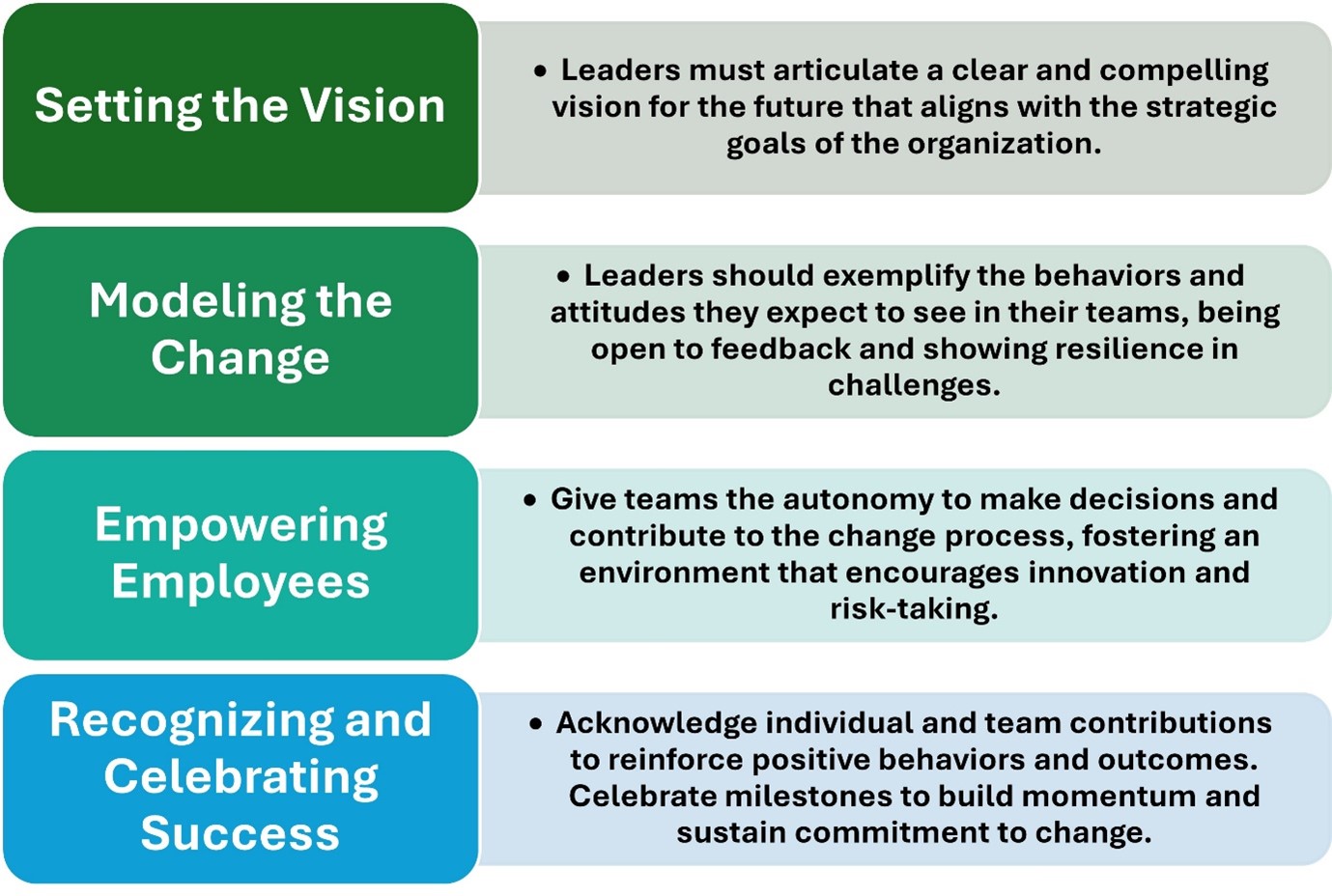
Evaluating Change Impact
Assessing the effectiveness of change management is essential for achieving strategic goals:
• Defining Success Metrics: Set clear, measurable objectives from the start, aligning them with strategic goals. Use these metrics to evaluate the effectiveness of the change.
• Collecting and Analyzing Data: Use both qualitative and quantitative data, including stakeholder feedback, performance metrics, and other relevant indicators, to assess the impact of change.
• Continuous Improvement: Use evaluation insights to inform future change initiatives. Identify successful areas and opportunities for improvement to ensure constant evolution and adaptation.
• Reporting and Communication: Communicate evaluation results to stakeholders transparently, reporting on both successes and challenges to foster trust and support ongoing engagement in the change process.

Exercise: Resistance Roundtable
• Two teams of five.
• To identify and overcome potential resistance to strategic changes.
• Each team develops potential resistance to an actual, live change scenario in their business.
• They present this scenario to the other group.
• Each group works together to find solutions to their challenge.
• Both groups discuss their findings with the entire group.
• Demonstrates the challenges of gaining strategic alignment.
• Participants learn proactive strategies to manage resistance and the importance of preparation in change management.
•
• This type of scenario prepares the participants for facing it within their own organization.


Course Manual 5: Leadership and Strategic Alignment
Core Objective: To develop leaders with a strategic mindset, empowered to effectively align the strategic vision of their business with organizational goals.

Leadership Roles in Strategic Alignment
Visionary Leadership: Crafting and Communicating Vision
In the realm of visionary leadership, the essence lies in not just foreseeing the future but in molding it with a clear, compelling vision that resonates across the entire organization. Leaders must excel in crafting a vision that serves as a guiding star for the organization’s journey. This entails a deep understanding of the organization’s strengths, weaknesses, opportunities, and threats (SWOT analysis), alongside an acute awareness of the external environment.
Effective communication is the linchpin in ensuring all stakeholders understand and embrace the vision. This involves storytelling techniques that make the vision relatable and inspiring. Leaders should employ multiple communication channels to articulate the vision, ensuring consistency in the message while tailoring the delivery to the audience. Regular reinforcement of the vision helps keep momentum and align organizational efforts toward the strategic goals.
Decision-Making in Strategic Alignment
Decision-making in strategic alignment is about ensuring that every decision, no matter how small, is a stepping stone toward achieving the organization’s strategic objectives. This requires a structured decision-making process that incorporates strategic thinking at its core. Leaders must foster a culture where data-driven decision-making prevails, integrating qualitative insights and quantitative analysis.
Aligning decisions with the organizational vision and strategic goals is critical to this process. This requires a clear understanding of the strategic plan and the ability to assess the long-term impacts of decisions. Leaders should also promote transparency in the decision-making process, encouraging input from diverse perspectives to ensure a comprehensive evaluation of options. This collaborative approach enriches the decision-making process and enhances buy-in and commitment to strategic initiatives.
Change Management and Leadership
Leaders play a pivotal role in change management, acting as the catalysts for change while steering the organization through the transition. Successful change management requires leaders to be adept at anticipating resistance and addressing it proactively. This involves understanding the human side of change, including employees’ emotional journey during transitions.
Effective change leadership is characterized by clear communication, empathy, and the ability to connect the change to the organization’s strategic vision. Leaders should employ change management frameworks, such as Kotter’s 8-Step Process, to guide their approach, ensuring that each change step is thoughtfully planned and implemented. Equally important is the leaders’ ability to model the change they wish to see, demonstrating commitment and setting the tone for organizational behavior.
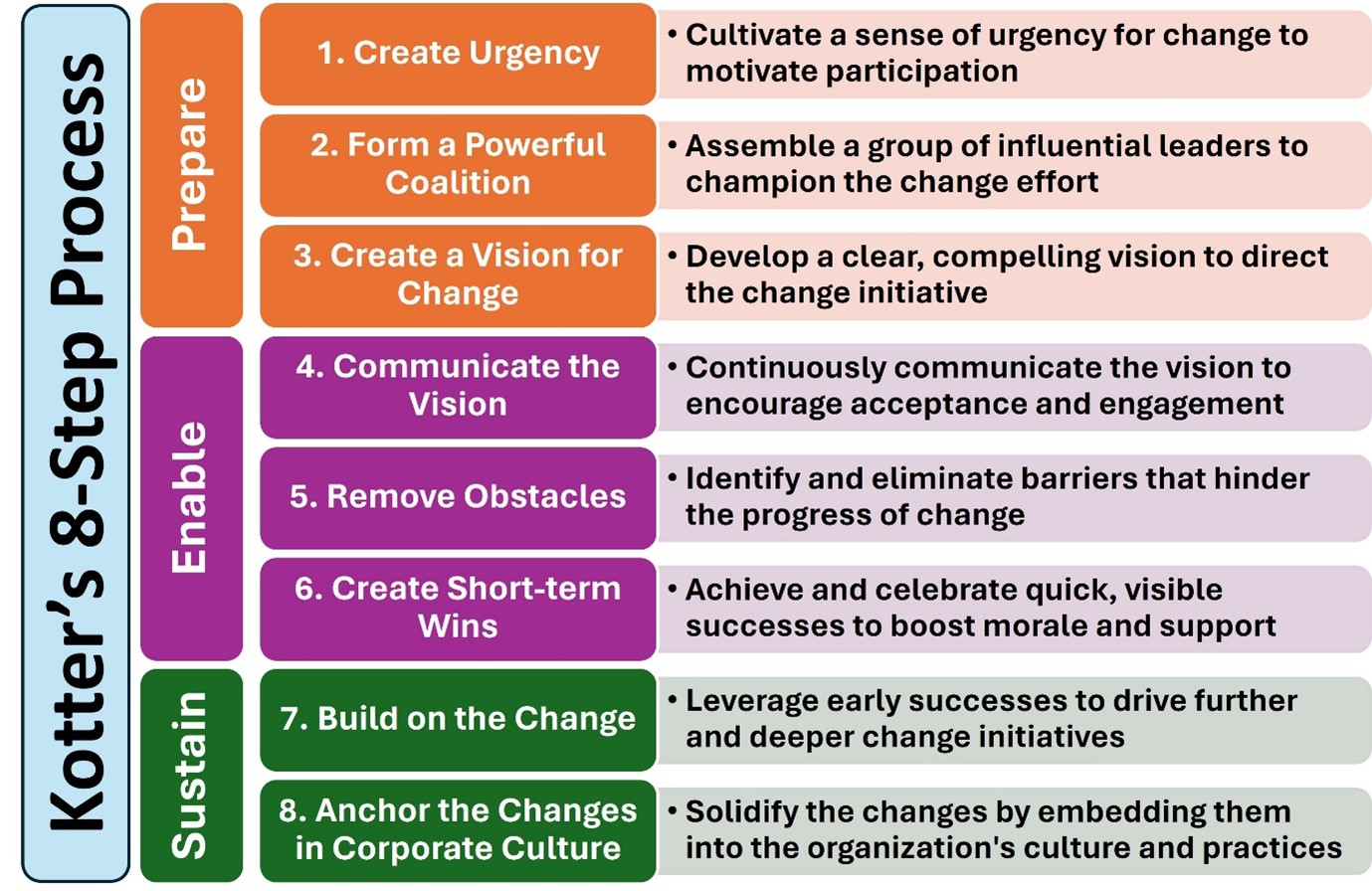
Performance Monitoring and Strategic Feedback
Monitoring performance against strategic goals is essential for ensuring alignment and achieving desired outcomes. This involves setting clear, measurable objectives and key results (OKRs) directly tied to the strategic vision. Leaders must develop a system for regularly tracking these metrics, utilizing dashboards and reporting tools that provide real-time insights into performance.
Feedback is crucial in this process, bridging performance monitoring and continuous improvement. Leaders should cultivate a culture where feedback is seen as a valuable tool for development, providing constructive criticism that focuses on behaviors and outcomes related to strategic goals. This feedback should be timely, specific, and linked to actionable insights, empowering individuals and teams to adjust their efforts in alignment with the organizational objectives.
Building Organizational Resilience
In today’s ever-changing strategic landscapes, resilience has become critical for organizations aiming to survive and thrive. Leaders are at the forefront of building this resilience, which requires fostering a culture of agility, continuous learning, and innovation. This involves creating an environment where experimentation is encouraged and failures are viewed as opportunities for growth.
Organizational resilience also hinges on the ability to adapt to changes in the external environment quickly. This requires a flexible strategic planning process that allows for adjustments as circumstances evolve. Leaders must ensure the organization has robust risk management practices, identifying potential threats and developing contingency plans. By instilling resilience, leaders prepare their organizations to navigate challenges and seize opportunities in a dynamic world.

Exercise: Visionary Voyage
• Two groups of five participants.
• To create and communicate a compelling vision for a hypothetical new product.
• Each group has 5 minutes to brainstorm and create a vision statement for their industry’s new product (or equivalent if there isn’t one).
• The group must then present their vision to the rest of the participants in an inspiring one-minute pitch.
• Participants learn the importance of clarity and enthusiasm in communicating a vision.
• The impact of effective leadership communication is showcased.
• The exercise sparks creativity.

Building a Strategic Leadership Team
Identifying and Selecting Team Members
In forming a strategic leadership team, the focus should be on identifying individuals who possess exemplary leadership qualities and exhibit a clear understanding of strategic vision. Look for markers of strategic insight, such as the ability to anticipate future trends, understand complex market dynamics, and craft innovative solutions. The selection process should incorporate a multi-faceted evaluation technique, including behavioral interviews, leadership assessments, and scenario-based problem-solving tasks. This comprehensive approach ensures that selected team members are aligned with the organization’s vision and capable of steering the team toward its realization.
Diversity and Inclusivity in Leadership
Diversity and inclusivity within a leadership team are not merely ethical imperatives but strategic ones. Diverse teams bring a rich tapestry of perspectives, leading to more innovative solutions and better decision-making. To develop such an environment, it’s crucial to implement policies that actively promote diversity in recruitment, retention, and promotion. Moreover, creating an inclusive culture where every voice is heard and valued is essential. This involves training programs on unconscious bias, creating platforms for open dialogue, and ensuring that inclusivity is embedded in every leadership action. The goal is to create an environment where diverse talents can thrive and contribute to the organization’s strategic objectives.
Strategic Team Development and Training
Developing a strategic leadership team requires a commitment to ongoing learning and skill enhancement. This development should focus on the hard skills related to strategic planning and analysis and the soft skills necessary for leading teams effectively. Customized training programs that incorporate the latest strategic frameworks, coupled with leadership coaching, can accelerate the development of these skills. Encouraging participation in strategic decision-making processes, offering mentorship opportunities, and facilitating access to industry thought leaders can further enrich the team’s expertise. A continuous learning environment fosters a culture of excellence and innovation, which is essential for strategic alignment.
Leadership Team Dynamics and Collaboration
Effective collaboration within a leadership team is pivotal for achieving strategic alignment. It involves cultivating a team dynamic where conflict is not shunned but seen as an opportunity for growth and innovation. Training in conflict resolution strategies, negotiation skills, and emotional intelligence can enhance team collaboration. Encouraging regular strategic alignment sessions where team members openly discuss goals, challenges, and progress can foster a culture of transparency and mutual support. The leadership team should model the way by demonstrating effective collaboration, ensuring these practices cascade through the organization.

Case Study
Google’s investment in leadership development programs like “Project Oxygen” identifies key managerial behaviors that significantly improve team performance. This strategic initiative aligns with cultivating a supportive and innovative work environment and has improved employee engagement and productivity metrics.
Aligning Individual Goals with Organizational Strategy
Aligning individual goals with the organizational strategy ensures that every team member works toward the same strategic objectives. This requires clearly communicating the organization’s vision, strategies, and goals at all levels. Leadership should work closely with team members to identify their personal and professional goals and find synergies with the organization’s strategic objectives. Implementing a goal-setting framework such as OKRs (Objectives and Key Results) can facilitate this alignment by defining clear, measurable goals that connect individual contributions to the broader organizational strategy. Regular review and feedback sessions help maintain this alignment, ensuring that individual efforts contribute to strategic milestones.

Exercise: Goal Grid
• Two groups of five participants.
• To demonstrate the alignment of personal and organizational goals.
• Each participant writes down their personal career goals.
• They discuss how these can align with the organization’s goals as a group.
• They then map these on a grid shared with the group.
• Encourages the integration of personal ambitions with company objectives.
• Participants see how their roles and those of their direct reports, if applicable, contribute to larger strategic goals, fostering engagement and motivation.
• The exercise sparks thought in developing new win-win goals for the participant and the organization.

Empowering Leaders for Alignment
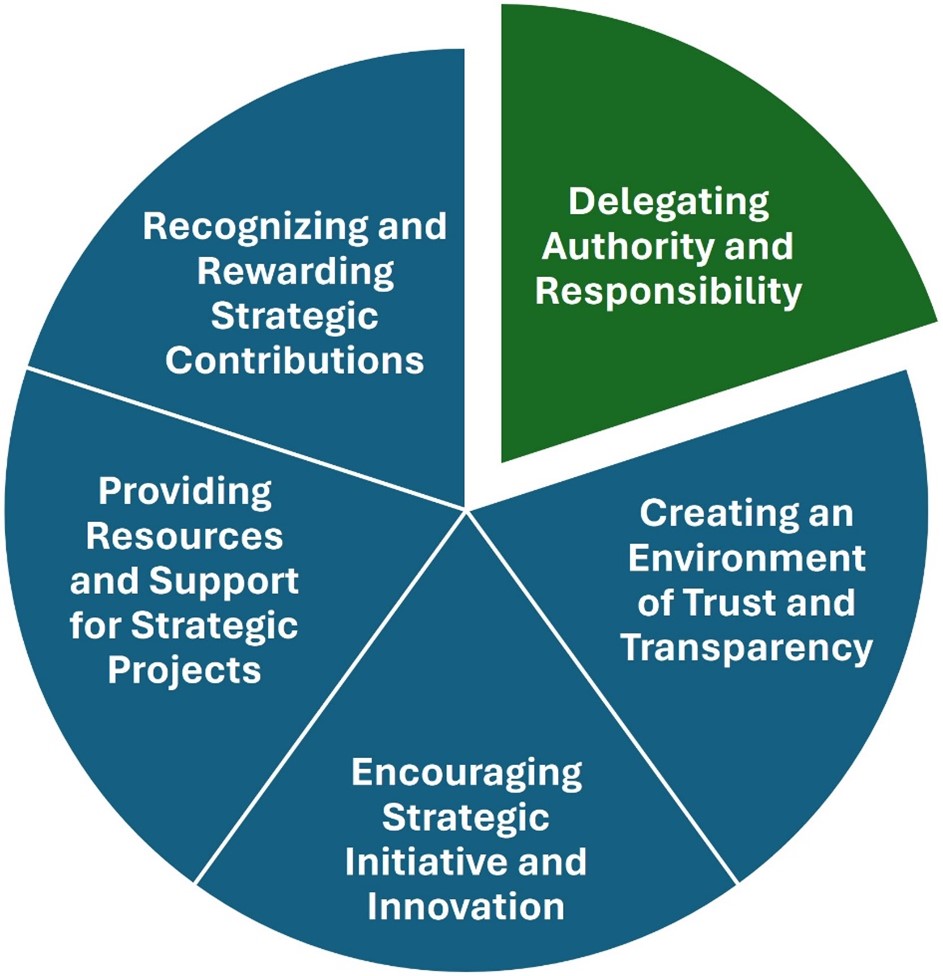
Effective delegation is not merely about assigning tasks; it’s about entrusting leaders with the authority and responsibility necessary to accomplish strategic goals. This involves:
• Clarity in Roles and Expectations: Clearly define each leader’s roles, responsibilities, and scope of authority. This clarity eliminates confusion and sets the stage for accountability.
• Assess Capabilities and Match Tasks Accordingly: Understand your leaders’ strengths and developmental areas. Assign responsibilities that challenge them yet are within their capability to deliver, fostering growth and confidence.
• Providing Decision-Making Autonomy: Allow leaders the freedom to make decisions within their domain. This autonomy encourages ownership, as leaders know they have the trust of senior management to direct their areas effectively.
• Establishing Accountability Frameworks: Accountability is critical in delegation. Establish metrics and regular check-ins to review progress, not as a surveillance measure, but as a support system for addressing challenges and celebrating successes.
• Encouraging Cross-functional Collaboration: Promote a culture where leaders are encouraged to delegate across functions, enhancing team collaboration and leveraging diverse skill sets for strategic projects.
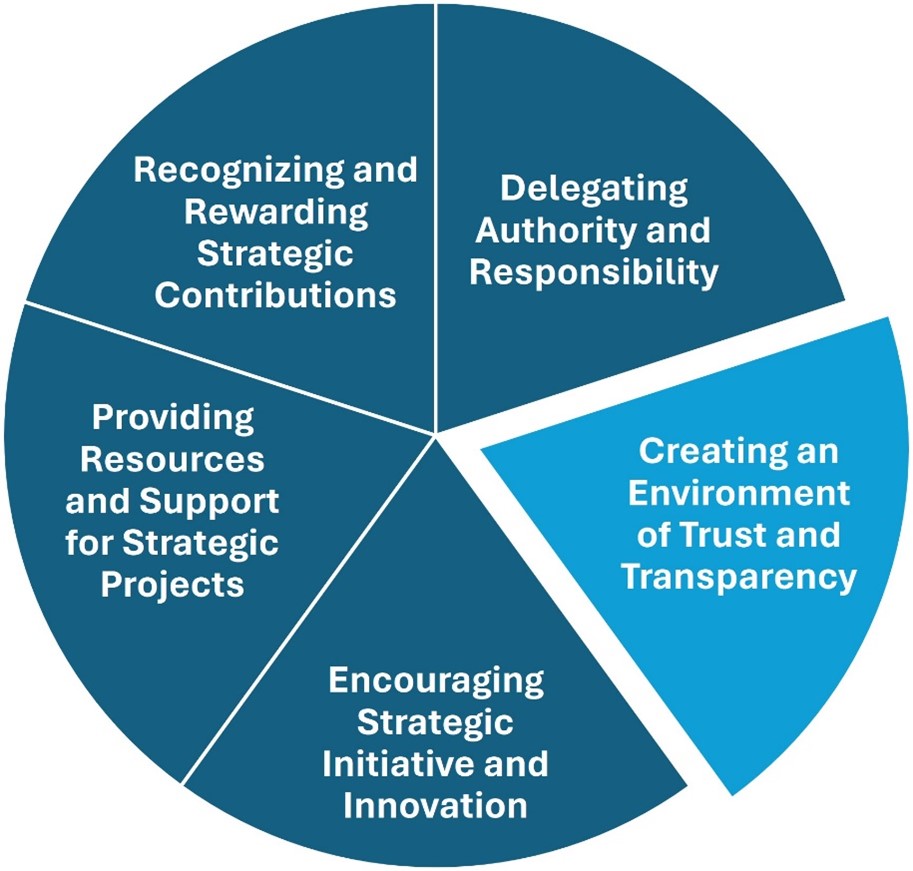
Trust and transparency are the bedrock of a high-functioning strategic alignment. To foster such an environment:
• Lead by Example: Leadership should demonstrate trustworthiness and transparency in their actions and decisions, setting a standard for the entire organization.
• Open Lines of Communication: Encourage open, honest communication. Implement regular forums and platforms where leaders can share ideas, challenges, and feedback without fear of repercussions.
• Promote Psychological Safety: Create a culture where leaders feel safe taking risks, admitting mistakes, and freely expressing their opinions. This is essential for innovation and robust strategic alignment.
• Transparency in Decision-Making: Ensure that the rationale behind strategic decisions is communicated clearly to all leaders. Understanding the ‘why’ behind decisions helps align their actions toward common goals.
• Fostering Mutual Respect: Encourage respect for the diverse viewpoints and expertise each leader brings. This mutual respect is crucial for building trust.
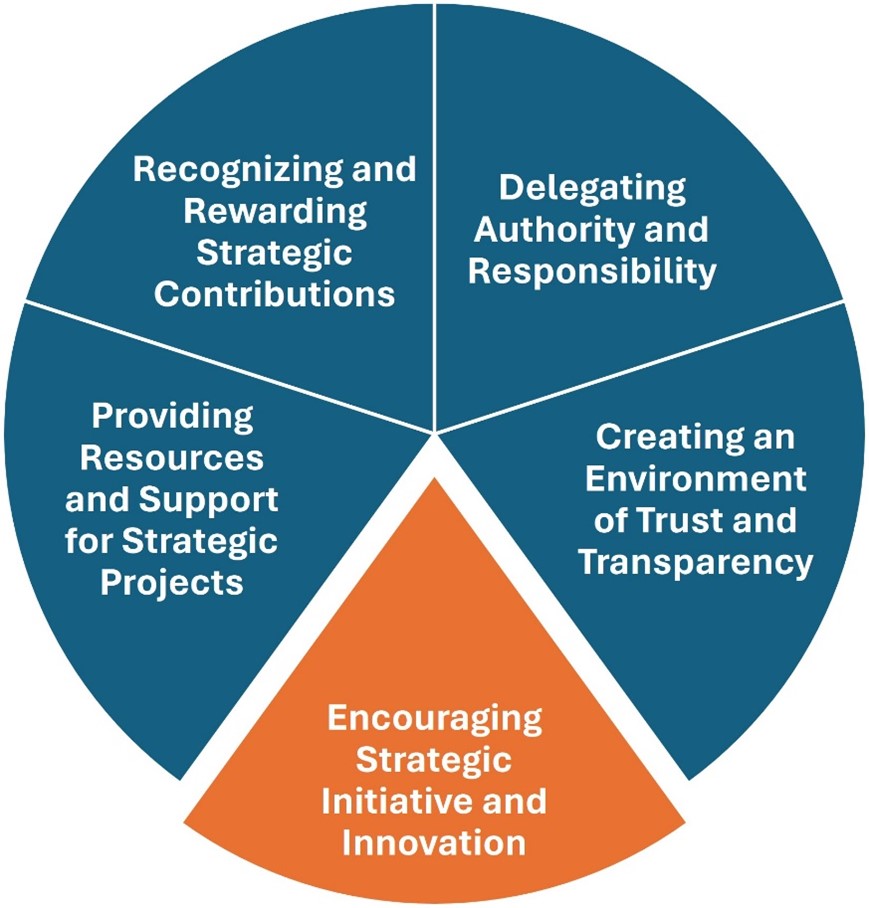
To cultivate a culture where leaders are proactive and innovative:
• Empower Leaders with Strategic Insight: Provide leaders with a deep understanding of the organization’s strategic vision and goals. This insight inspires them to align their initiatives with the larger objectives.
• Foster a Culture of Curiosity: Encourage leaders to question the status quo and explore new ideas. Facilitate forums or think tanks where innovative ideas can be discussed and refined.
• Support Risk-taking: Demonstrate support for taking calculated risks. Not all initiatives will succeed, but learning from those experiences is invaluable for growth and innovation.
• Reward Creative Problem-solving: Recognize and celebrate when leaders find novel solutions to challenges or seize new opportunities that align with strategic objectives.
• Continuous Learning: Promote ongoing learning and development. Equip leaders with the latest field trends, tools, and methodologies to inspire innovation.
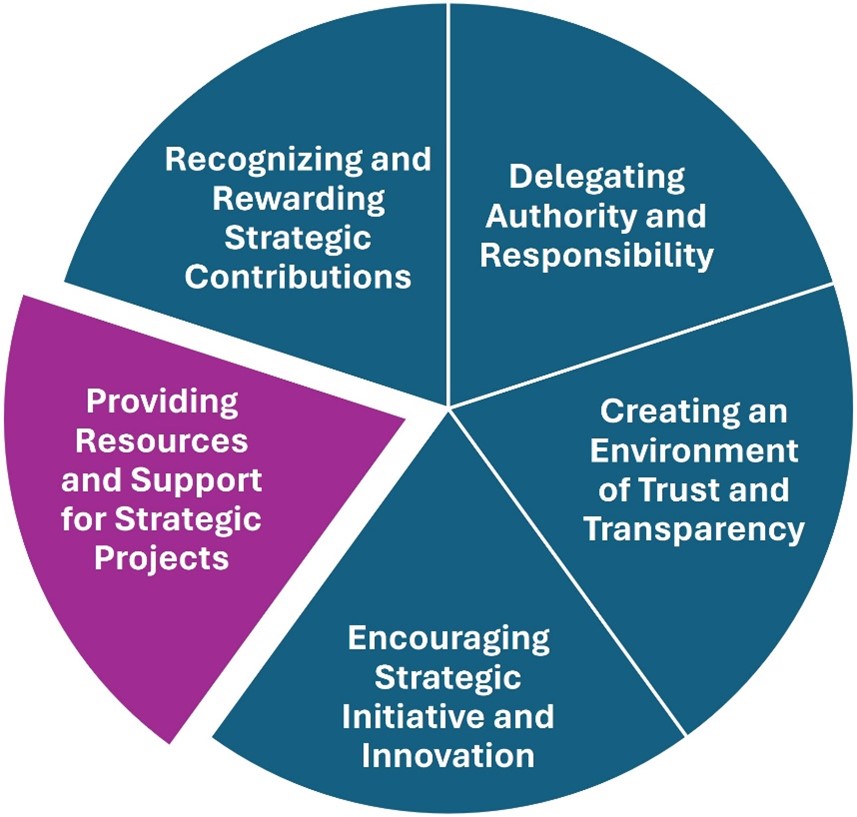
Leaders need the right tools and support to drive strategic projects:
• Adequate Resource Allocation: Ensure leaders have access to the necessary resources—budget, personnel, or technology—to implement their strategic initiatives successfully.
• Training and Development: Offer targeted training programs that equip leaders with project management, strategic planning, and leadership skills to excel in their roles.
• Mentorship and Guidance: Establish mentorship programs where experienced leaders can guide newer ones, sharing insights and lessons learned from past strategic projects.
• Access to Information: Provide leaders with critical information and data for strategic decisions and project planning.
• Supportive Infrastructure: Create an infrastructure that supports collaboration, innovation, and efficient communication, enabling leaders to work effectively on strategic projects.
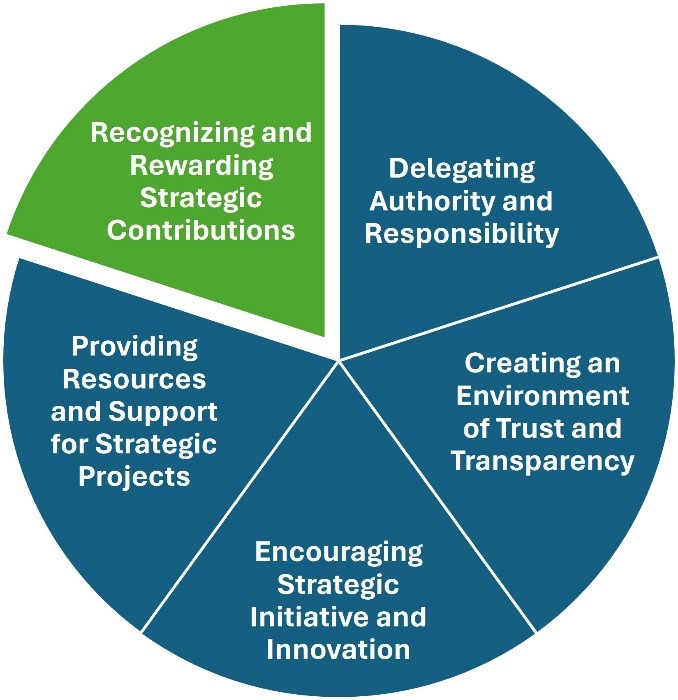
Acknowledging strategic contributions is vital for motivation and alignment:
• Tailored Recognition Programs: Develop recognition programs that highlight and reward strategic contributions in meaningful ways. This could range from public acknowledgments to monetary bonuses or professional development opportunities.
• Celebrating Team Successes: Foster a culture that celebrates individual achievements and team successes, emphasizing collective effort in strategic projects.
• Feedback and Growth Opportunities: Provide constructive feedback alongside recognition. As part of the reward, offer opportunities for further growth and development.
• Visibility to Senior Leadership: Ensure that strategic contributions are made visible to senior leadership, reinforcing the importance of these achievements to the organization’s goals.
• Encouraging Peer Recognition: Implement peer recognition programs that allow leaders to acknowledge each other’s contributions, fostering a supportive and collaborative environment.

Cultivating a Strategic Mindset
Cultivating a Strategic Mindset Throughout Your Organization
Strategic thinking is vital at every level of an organization, not just among the upper echelons of management. It fuels forward-thinking and proactive decision-making across all departments. To cultivate this mindset, it is beneficial to initiate regular Strategic Thinking Workshops that unite employees from various levels and functions. These sessions, centered on real-world scenarios, encourage a deep dive into long-term objectives and the strategies needed to achieve them.
Additionally, tailor-made training sessions can reinforce the importance of aligning with the organization’s vision and understanding the competitive landscape. Such interactive training invites active participation and applies strategic concepts to address specific departmental challenges. Open forums and roundtable discussions further enhance this environment by valuing diverse viewpoints, thus fostering a culture ripe for strategic thinking and innovation.

Case Study
Google’s famous 20% time policy encourages employees to spend 20% of their work hours, or one day a week, working on projects they’re passionate about and believe will benefit Google. These projects can be unrelated to their regular job responsibilities. This innovative policy is a prime example of cultivating a strategic mindset throughout an organization because it inherently promotes exploration, innovation, and ownership among employees. By allowing team members to pursue interests that may fall outside their official job scope, Google not only fosters a sense of empowerment but also taps into the diverse potential of its workforce.
This approach leads to a culture where strategic thinking is encouraged and rewarded, allowing new ideas to emerge organically. Projects developed during this time, such as Gmail and AdSense, have contributed significantly to Google’s growth and demonstrated how giving employees the freedom to explore can align personal passions with corporate objectives. This alignment enhances engagement and drives innovation, making the company more adaptable and forward-thinking. The 20% time policy exemplifies how integrating strategic flexibility into daily operations can significantly impact an organization’s overall success and sustainability, reinforcing the importance of a strategic mindset at all company levels.
Integrating Strategic Planning into Daily Operations
Integrating strategic planning into an organization’s daily operations is not just good practice—it’s essential for ensuring that every action taken aligns with and supports long-term goals. This process transforms the abstract concept of strategy into concrete actions that propel the organization forward.
1. Starting with Alignment: The journey begins with aligning objectives. This means ensuring that the goals set for each department and individual are clear and directly linked to the broader strategic objectives of the organization. Such alignment transforms everyday tasks into steps toward these larger goals. It should be a consistent thread running through performance evaluations, project choices, and resource distribution. This alignment ensures that everyone in the organization understands their role in the bigger picture and is working toward the same overarching outcomes.
2. Strategic Performance Indicators: To truly integrate strategic planning into daily operations, it’s critical to have measurable standards that reflect an organization’s strategic priorities—enter Key Performance Indicators (KPIs). These indicators should be carefully developed and continually monitored to align with the strategic objectives. Regularly reviewing these KPIs with teams reinforces the importance of their daily activities and how these contribute to the organization’s goals. This ongoing measurement and feedback loop tracks progress and highlights areas needing adjustment or reinforcement.
3. Decision-Making with Strategic Impact: A crucial component of this integration is implementing decision-making frameworks that prompt employees to consider the strategic impacts of their choices. This involves more than just training staff in strategic analysis techniques—it’s about creating an environment where access to critical data and insights is readily available, helping inform smarter, strategy-aligned decisions. Such frameworks help embed a strategic mindset into the organization’s fabric, making strategic thinking a routine part of decision-making processes.
4. Bringing It All Together: Integrating strategic planning into daily operations is about making strategy a living, breathing part of every employee’s day-to-day experience. It’s about moving strategy from boardroom discussions and embedding it into the cubicles and offices where the real work happens. This approach not only ensures coherence and synchronicity across the organization but also elevates the contributions of each team member, aligning them with the organization’s vision and goals.
5. A Strategic Organization in Action: By carefully aligning objectives, strategically applying KPIs, and thoughtfully implementing decision-making frameworks, an organization can seamlessly integrate strategic planning into its daily operations. This propels the organization toward its long-term goals and fosters a culture where strategic thinking is the norm, not the exception. The result is an organization that is not only driven by strategy but also adept at adapting its strategy as the business environment evolves.
Encouraging a Culture of Continuous Learning
A thriving organization also fosters continuous learning, which is crucial for sustaining a strategic mindset. By providing access to learning platforms and resources that span industry-specific knowledge to broader strategic thinking skills, employees are encouraged to pursue self-directed learning. Supportive measures like time allocation and financial aid for courses and certifications are beneficial. Organizing regular knowledge-sharing sessions with guest speakers and webinars also enriches this learning culture, as does promoting adaptability and openness to new ideas and methodologies.
Building Resilience Through Strategic Flexibility
Organizational resilience is built through the ability to adapt to change and uncertainty. Scenario planning is one such strategy, preparing teams for future possibilities and fostering a mindset that can pivot as required. Systems for flexible resource allocation are also critical, allowing quick responses to shifting priorities and focusing efforts where they are most impactful. Moreover, cultivating a risk-tolerant culture encourages experimentation and learning from each initiative’s outcomes, whether they succeed or fail.
Fostering Innovation and Creative Problem-Solving
Finally, staying competitive requires an unwavering commitment to innovation and creative problem-solving. Establishing innovation hubs allows employees to step outside their regular roles and collaborate on groundbreaking projects. Cross-functional teams bring diverse perspectives and skills to complex challenges, promoting creative solutions and breakthrough innovations. Recognizing and rewarding these efforts motivates teams and highlights the organization’s commitment to fostering an innovative culture.


Course Manual 6: Culture and Strategic Alignment
Core Objective: This course manual aims to equip participants with the knowledge and skills to leverage organizational culture as a strategic asset for aligning with and achieving strategic goals, thereby enhancing overall performance and competitive advantage.

Organizational Culture as a Strategic Asset
Defining Organizational Culture
Organizational culture embodies the members’ collective values, beliefs, and principles. It manifests through the shared norms and practices that influence the behavior of individuals within the organization. At its core, organizational culture shapes the organization’s identity, guiding how employees interact with each other and with external stakeholders.
Key Components of Organizational Culture:
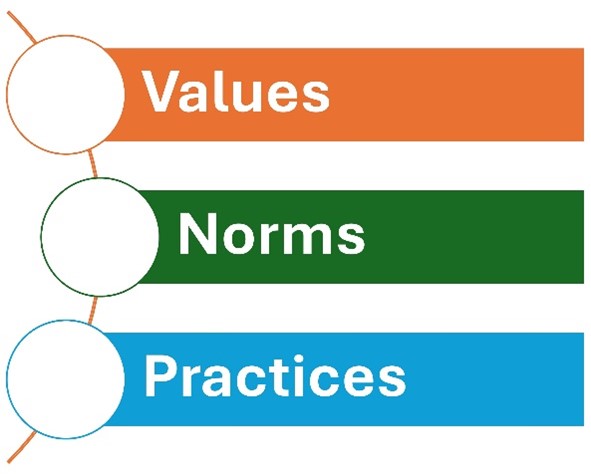
• Values: The fundamental beliefs that guide actions and decisions within the organization. Values are the bedrock of the culture, providing a sense of direction and purpose.
• Norms: The unwritten rules and expectations that govern behavior in the organization. Norms help maintain order and cohesion, facilitating a predictable and secure working environment.
• Practices: The visible actions and rituals regularly performed within the organization. These practices reinforce the values and norms, creating a tangible sense of culture.

Case Study
The Mayo Clinic has established a culture centered on collaborative patient care, known as the ‘Mayo Clinic Model of Care.’ This model emphasizes teamwork across specialties and ranks to deliver optimal patient outcomes. This model has helped Mayo Clinic consistently rank top for patient care, attracting patients globally. Patient satisfaction rates regularly exceed 90%, significantly higher than national averages.

Exercise: Culture Architects
• Two groups of five participants.
• To engage participants in reflecting on their past experiences with organizational cultures.
• To enable a discussion of the psychological impacts of culture.
• To design a culture assessment plan.
• To analyze the competitive advantages influenced by cultural elements.
• Each participant quickly reflects on their past organizational cultures and notes how specific values, norms, and practices influenced their work behavior and attitudes.
• In their groups, participants discuss how alignment or misalignment with these cultural values affected their motivation and job satisfaction.
• Each group selects one example with a significant emotional impact to share with the larger group.
• Groups work together to outline an organization’s basic culture assessment plan, ideally including at least three methods (e.g., surveys, interviews, observations) to understand the organizational culture comprehensively.
• Each group thinks of a real-life example where an organizational culture provided a clear competitive advantage and how these cultural elements contributed to the organization’s market positioning.
• Each group presents their findings and plans.
• Participants will connect emotionally through personal stories, enhancing their understanding of how deeply organizational culture can influence individual behavior and attitudes.
• By designing a culture assessment plan, participants will identify actionable strategies for assessing and shaping their organizational cultures. The competitive analysis discussion will trigger ideas for leveraging cultural strengths to gain a market advantage.
• Collaborative Learning: Group work helps participants learn from each other’s experiences and viewpoints.
• Participants will leave with a clearer understanding of assessing and utilizing their organizational culture to align with strategic goals and improve competitive positioning.
The Role of Culture in Organizational Performance
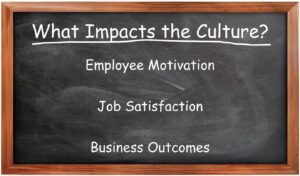 Organizational culture profoundly impacts employee motivation, satisfaction, and overall performance. A positive culture fosters an environment where employees feel valued and engaged, leading to higher levels of job satisfaction. This, in turn, translates to improved performance, as motivated employees are more likely to go above and beyond in their roles.
Organizational culture profoundly impacts employee motivation, satisfaction, and overall performance. A positive culture fosters an environment where employees feel valued and engaged, leading to higher levels of job satisfaction. This, in turn, translates to improved performance, as motivated employees are more likely to go above and beyond in their roles.
• Employee Motivation: A culture that recognizes and rewards effort boosts employee motivation. Employees who see their contributions are valued are more inclined to invest in their work.
• Job Satisfaction: Employees thrive in environments where they feel a sense of belonging and alignment with organizational values. High job satisfaction reduces turnover rates and attracts talent.
• Business Outcomes: Organizations with solid cultures enjoy better performance outcomes, including higher productivity, profitability, and customer satisfaction.
Culture as a Competitive Advantage
A distinct organizational culture can be a powerful tool for strategic differentiation. Companies that leverage their unique cultural attributes can set themselves apart in crowded markets. This differentiation attracts customers and talent who resonate with the organization’s values.

Case Study
Zappos significantly focuses on cultural fit during its hiring process, ensuring all employees share its core values of delivering superior customer service. This focus on culture has resulted in high customer loyalty and repeat business rates of over 75%.
Evaluating Your Organizational Culture
Understanding and assessing your organizational culture is essential for aligning your strategic goals and fostering improvement. A thorough evaluation involves capturing feedback from employees across all levels using various effective methods.
One of the most direct approaches is gathering employee feedback. Insights gleaned from one-on-one interviews, focus groups, or open forums can be incredibly revealing, offering a clear picture of the culture’s health. This direct communication allows employees to express their feelings and observations about the workplace environment.
Surveys are another valuable tool in this process. They are beneficial for collecting quantitative and qualitative data concerning how employees perceive the organizational culture. The anonymity provided by surveys often encourages more candid and forthright responses, thereby offering a more accurate reflection of the internal atmosphere.
Additionally, simple observation can be a powerful method for cultural assessment. By closely watching the day-to-day interactions and practices within the company, much can be learned about the prevailing culture. Key aspects to observe include decision-making processes, conflict resolution, and how achievements are celebrated. Each of these elements reflects the underlying values and norms that define the organizational culture, providing essential clues for areas needing enhancement.
These methods provide a comprehensive view of your organizational culture, serving as a foundation for continuous improvement and alignment with your strategic objectives.

Aligning Culture with Vision and Strategy
Strategies for Cultural Alignment:
The organizational vision and strategy set the direction for future growth and operational excellence. These foundational elements guide our priorities and actions, fostering an environment conducive to achieving our business objectives. Ensuring that your organization’s culture aligns with its vision and strategy is vital for the seamless execution and achievement of business goals. The organizational culture—attitudes, values, and practices—must reflect and enhance the strategic direction.
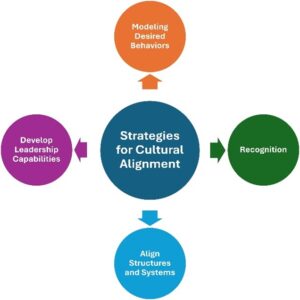
One effective strategy for cultural alignment is modeling desired behaviors. When the values and behaviors that exemplify the strategic vision are consistently demonstrated, they serve as a clear guide for all employees. This approach helps set a practical example that encourages everyone to embody these traits daily.
Recognition also plays a significant role in reinforcing cultural alignment. Acknowledging and rewarding behaviors that support the organizational vision and strategy highlight their importance. Whether through formal reward systems or informal nods in everyday interactions, recognition is a powerful motivator, reaffirming the values that drive the company forward.
Another critical strategy involves aligning organizational structures and systems with the strategic direction. This includes designing performance management systems, communication channels, and decision-making processes that support and promote the desired culture. These elements harmonize with the strategic goals and facilitate a more effective and cohesive operational environment.
Additionally, developing leadership capabilities at all levels can amplify the impact of cultural alignment. By empowering individuals throughout the organization to champion and communicate the vision and strategy, the alignment becomes more deeply ingrained and widespread. This broad-based leadership approach ensures that cultural alignment isn’t just top-down but embraced across all tiers of the organization.

Exercise: Strategy Skit
• Two groups of five participants.
• To creatively demonstrate the alignment or misalignment between culture and strategy.
• Each group decides whether they will portray a scenario of successful or unsuccessful alignment between culture and strategy.
• They briefly outline a simple scenario involving a fictional company, detailing its culture, strategic goal, and the interaction between the two.
• Groups quickly draft a basic script or action sequence that illustrates their chosen scenario, aiming to clearly embody the characteristics of either alignment or misalignment in their performance.
• Groups rehearse their skit, ensuring each member has a role. The roles can range from employees and managers to external stakeholders.
• Each group performs its skit in front of the other group. Performances should be concise and vividly depict the consequences of cultural and strategic alignment or misalignment.
• After each performance, the audience (the other group) discusses and guesses whether the skit demonstrated a successful or failed alignment. The performing group then reveals their intended message and discusses the key elements that informed their portrayal.
• Participants will gain a deeper insight into how cultural elements and strategic objectives interact, which will help them understand the importance of aligning these aspects within their organizations.
• Drama and role-play engage participants creatively, which aids in better retention of the concepts discussed and makes the learning process more enjoyable.
• Discussing and guessing the type of alignment shown in each skit sharpens participants’ analytical skills as they learn to identify subtle cues that indicate successful or problematic alignments.
• Through the enactment and subsequent discussions, participants can identify practical steps and innovations to enhance or correct alignment in their work environments. This leads to potential “light bulb” moments where they conceive actionable organizational improvements.
Communication and Engagement:
Clear, consistent communication is essential for aligning an organization’s culture with its vision and strategy. Every team member must understand the organizational vision, appreciate the strategy’s value, and recognize their role in achieving these objectives.
Leadership transparency is crucial; by openly discussing vision, strategy, and progress, leaders build trust and foster a culture of openness, ensuring all employees feel informed and valued.
Various engagement platforms, such as town halls, intranets, and newsletters, are crucial for effective communication. They provide spaces for dialogue and employee feedback that help shape the company’s direction.
Storytelling and sharing success stories illustrate the real-life benefits of strategic alignment, motivating employees by showing the impact of their efforts.
Additionally, promoting continuous learning through training aligned with the company’s vision helps employees develop skills that support personal growth and organizational objectives. These strategies collectively ensure that the workforce is aligned, informed, and motivated to achieve the organizational vision.
Adapting Culture for Strategic Goals:
Adapting an organization’s culture to align with new strategic objectives is a delicate process that requires time, patience, and careful management. Strategies to facilitate this shift include:
• Assess and Map the Current Culture: Understand the existing cultural landscape and identify aspects that support or hinder the new strategic objectives.
• Develop a Change Management Strategy: Outline a clear plan for managing the transition, including timelines, milestones, and communication plans. Engage change champions across the organization to support and promote the change.
• Address Resistance: Understand the root causes of resistance and address concerns through open dialogue. Provide support and resources to help employees navigate the change.
• Monitor Progress and Adapt: Use feedback mechanisms to monitor the cultural shift and adjust as needed. Celebrating small wins along the way can maintain momentum and commitment to the change.

Cultural Change for Strategic Success
The Change Process
Cultural change within an organization is not a single event but a journey that unfolds in stages. This journey often follows a predictable path, starting with awareness, moving through understanding and acceptance, and culminating in integration. The planning stage is crucial, as it sets the direction and pace of change. Leadership plays a pivotal role throughout this process, not just at the helm but also embedded within every layer of the organization. Leaders must be the champions of change, embodying the values and behaviors that the new culture promotes.

Stages of Cultural Change:
• Awareness: Recognizing the need for change and its implications.
• Understanding: Grasping the vision behind the change and the benefits it promises.
• Acceptance: Embracing the change at an emotional or intellectual level.
• Integration: Adopting new behaviors and practices as part of everyday operations.
Leaders must communicate the vision and rationale behind the change compellingly and clearly, ensuring alignment across all levels of the organization. Planning for change involves setting measurable goals, identifying potential resistance, and strategizing how to address it. The role of leadership is continuous and evolving, requiring constant engagement, support, and reinforcement of the change principles.
Building a Change-Ready Culture
Building a culture that readily adapts to change involves fostering flexibility and resilience within your organization. Such a culture is not incidental but crafted through intentional strategies that promote an openness to new ideas, a willingness to experiment, and an acceptance of failure as part of the learning process.
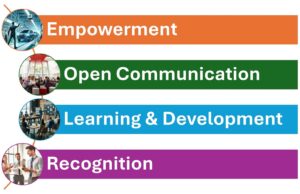
Empowering employees is a fundamental strategy in this endeavor. Giving team members the autonomy to make decisions and take action instills a sense of ownership and deeper engagement with the change process. This empowerment is crucial for cultivating an environment where individuals feel valued and responsible for outcomes.
Maintaining open lines of communication is equally important. A culture that supports feedback and ongoing dialogue helps leaders and managers understand employee concerns and incorporate their suggestions, making the change process a collaborative effort.
Investing in learning and development is another crucial component. Training programs equip employees with the necessary skills to navigate and adapt to changes effectively. This prepares your workforce for the present challenges and future innovations and shifts in the industry.
Recognition plays a vital role in reinforcing a change-ready culture. Celebrating achievements and recognizing milestones encourage and affirm positive behaviors and outcomes, making it clear that progressive change is valued and rewarded.
To effectively cultivate a change-ready culture, leaders must lead by example, demonstrating adaptability and resilience. Additionally, it is essential to create a safe environment where employees feel supported in taking risks and learning from their experiences. This approach ensures that your organization adapts to change and thrives in it.
Implementing Cultural Change
Implementing cultural change requires a structured approach that is both strategic and tactical. Clear objectives set the direction, while communication strategies ensure alignment. Feedback mechanisms are essential for monitoring progress and making necessary adjustments.
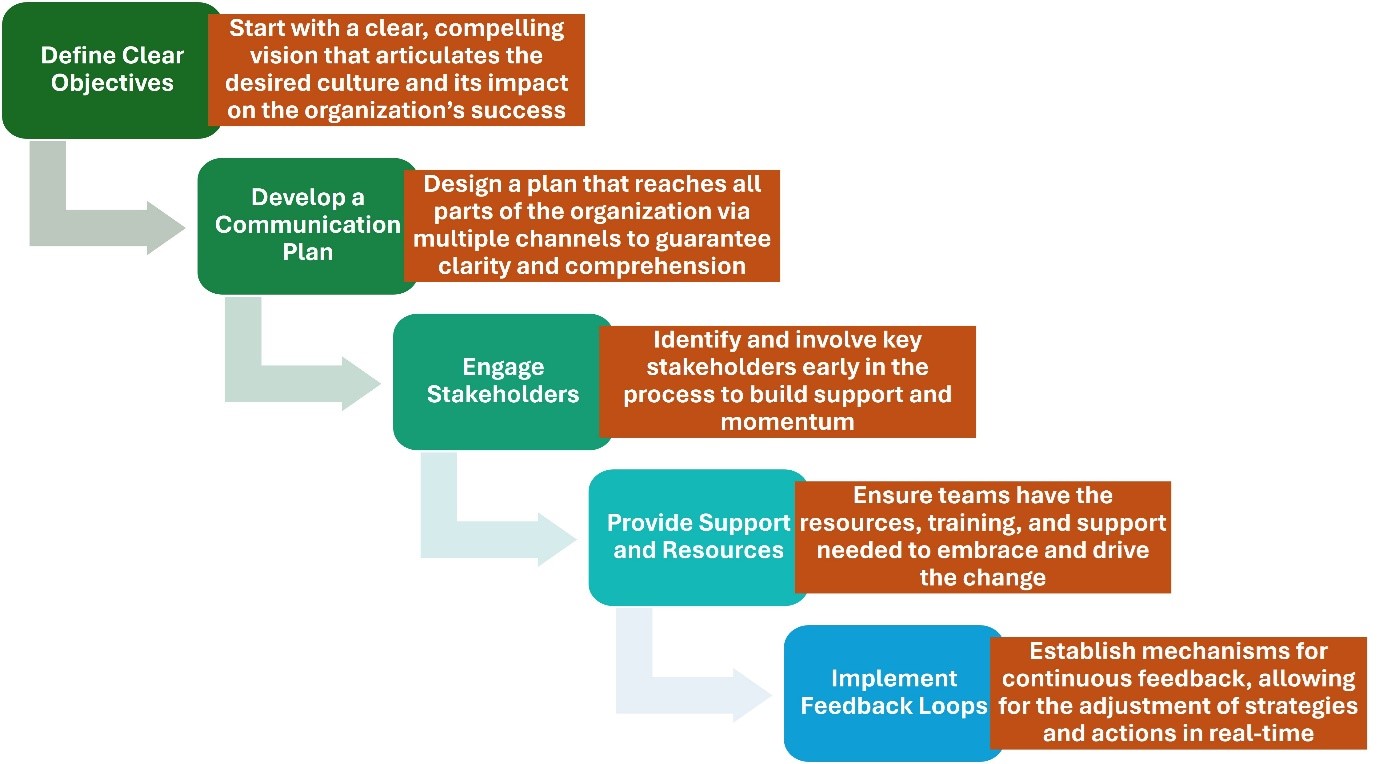
Successfully implementing cultural change requires more than just initial enthusiasm; it requires a commitment to continuous improvement and adaptability. Celebrating quick wins can sustain momentum, build team members’ confidence, and demonstrate the benefits of the new cultural approach. This reinforces the value of the changes made and embeds a culture of resilience and readiness for future adaptations, ensuring the organization remains agile and responsive in a constantly evolving business environment.
Sustaining Cultural Change
Sustaining cultural change is about keeping the momentum alive and making new ways of working and behaviors part of the organizational DNA. This stage is critical for ensuring that the change is not just a temporary shift but a lasting transformation.

Strategies for Sustainability:
• Reinforce the Vision: Regularly communicate the vision and values, making them part of everyday language and decision-making.
• Embed Cultural Values: Integrate the new cultural values into all aspects of the organization, from hiring practices to performance reviews.
• Champion Continuous Improvement: Encourage a mindset of continuous improvement, where feedback is actively sought and used to make incremental changes.
• Monitor and Measure: Use metrics and indicators to track progress and impact. This data can inform ongoing efforts and adjustments.
Sustaining cultural change is an active, ongoing process. It involves a steadfast commitment to nurturing and reinforcing the desired culture, celebrating achievements, and taking lessons from challenges. Leadership is vital in this sustaining phase, as leaders must embody and advocate for the values and behaviors that signify the organization’s cultural aspirations, ensuring that the change becomes deeply rooted and flourishes over time.

Case Study
Adidas restructured its corporate culture to be more inclusive and innovative, aligning closely with its strategic goal of fast fashion and sustainability in sportswear. This cultural realignment has enabled a quicker response to market trends and a more substantial commitment to sustainable practices, resulting in Adidas launching multiple sustainable product lines and growing its eco-friendly product sales year-over-year.

Measuring Cultural Alignment
Cultural Assessment Tools
Employing various assessment tools is essential to gauge how much an organization’s culture aligns with its strategic objectives. These tools enable organizations to gather critical insights about the prevailing culture, identify areas of misalignment, and initiate targeted interventions for strategic alignment.
• Surveys: Surveys are a quantitative method designed to gather broad insights from many employees quickly. When crafting surveys, it’s vital to include questions that assess employees’ understanding and acceptance of the organization’s vision, values, and strategic objectives. The design should allow anonymity to encourage honesty, and the questions should be crafted to minimize bias and elicit clear, actionable responses.
• Interviews: Interviews offer a qualitative approach, providing deep insights into the employees’ perceptions, beliefs, and experiences regarding the organizational culture and strategic alignment. Conducting semi-structured interviews with a cross-section of employees—from leadership to front-line staff—can unveil nuanced understandings of the culture and identify alignment and areas of dissonance with strategic goals.
• Observational Techniques: Observational methods involve directly observing organizational behaviors and practices. This can be done through shadowing employees, attending meetings, and analyzing day-to-day operations. Observations help identify the lived cultural values, which may differ from those formally espoused, offering a real-world perspective on how culture manifests in daily activities.
• Comparing Tools: While surveys provide breadth, interviews offer depth, and observational techniques offer context. A combined approach leveraging all three tools provides a comprehensive understanding of an organization’s cultural alignment with its strategic goals, enabling targeted and effective interventions.
Analyzing Assessment Data
Once data is collected, the next step involves a detailed analysis to extract meaningful insights. This process requires carefully examining the responses and looking for patterns, trends, and outliers in the data.
Analysis should focus on identifying discrepancies between the current culture and the desired state of strategic alignment. This involves comparing the data against the organization’s strategic objectives, values, and vision. Look for areas where employees’ perceptions, beliefs, or behaviors deviate from what is expected or required for strategic success.
It’s crucial to articulate clearly the strategic alignment goals based on the organization’s vision and objectives. These goals will serve as benchmarks for assessing cultural alignment and guide the development of action plans to address identified gaps.

Case Study
IKEA, a global leader in home furnishings, recognized a disconnect between its organizational culture and strategic objectives, particularly in its sustainability initiatives. To address this, IKEA deployed an anonymous survey to its 170,000 employees worldwide, focusing on understanding employees’ awareness and engagement with the company’s sustainability goals. The survey results revealed that while 90% of employees knew of IKEA’s sustainability commitments, only 60% felt equipped to contribute to these goals in their daily roles. This insight led to the development of targeted training programs to enhance employees’ roles in sustainability, resulting in a 25% increase in employee engagement scores related to sustainability within a year.
Action Planning for Alignment
Action planning for alignment requires a clear understanding of the existing cultural state and its deviation from the desired strategic alignment. This phase involves setting priorities, defining measurable (SMART) objectives, and allocating resources effectively to bridge these gaps.
Not all alignment gaps are equally critical; it is crucial to prioritize actions based on their potential impact on strategic success and employee engagement.
Each step in the action plan should have quantifiable objectives to monitor progress accurately. Strategic resource allocation—whether for tools, training, or personnel changes—is essential to support impactful initiatives and ensure each resource contributes toward a more aligned and cohesive organizational culture.
Monitoring Progress and Making Adjustments:
To achieve cultural alignment with strategic goals, it’s essential to maintain a cycle of monitoring progress and fine-tuning actions accordingly.
Set up a regular system to check the pulse of action plan implementations and measure advancements toward objectives. Use tools like surveys, interviews, or observations to understand cultural shifts.
Encourage feedback at all levels, using it to refine strategies and overcome challenges. Be agile in making necessary plan adjustments, ensuring your organization can continuously adapt and enhance cultural alignment with strategic objectives.


Course Manual 7: Communication for Alignment
Core Objective: To empower participants with advanced strategic communication skills to ensure alignment with organizational goals, enhance stakeholder engagement, effectively manage crises, and continuously improve through feedback.

Strategic Communication Planning
Defining Communication Objectives
Effective communication begins with a clear understanding of what you aim to achieve. This starts with aligning your communication objectives with your organization’s strategic goals. To set objectives that are not just aspirational but actionable, employ the SMART criteria.
Setting SMART communication objectives establishes a foundation for strategic alignment that informs all subsequent planning and execution efforts. Consider the difference in the goals in the above image. The same intent was behind both, but the SMART goal is far more likely to drive action. Let’s compare them:
• Specific: Objectives should clearly define your goals and avoid vagueness.
o SMART Example: The goal targets a precise aspect of the manufacturing process, average process yield, and specifies the desired improvement, from a weighted average of 91% to 93%.
o Non-Committal Example: The goal is vague, merely mentioning “cut down on scrap” without any specific targets or areas of focus.
• Measurable: Establish concrete criteria for measuring progress.
o SMART Example: The objective is quantifiable; progress can be tracked through the weighted average percentage of the process yield.
o Non-Committal Example: It lacks clear metrics or ways to measure scrap reduction or process improvement.
• Achievable: While your objectives should be challenging, they must also be attainable. When setting these goals, consider your organization’s resources, capabilities, and constraints.
o SMART Example: The goal assumes a realistic improvement, suggesting an increment of 2 percentage points, typically attainable with focused efforts in process optimization.
o Non-Committal Example: Since the goal is vague, it is achievable through various approaches, including minimal effort or symbolic actions. However, it may not benefit the business.
• Relevant: Ensure that each communication objective directly supports your organization’s strategic goals. For example, if your strategic goal is to increase market share, your communication objective could be to raise awareness of your products among a new demographic by 30%.
o SMART Example: It supports the organization’s strategic goal to reduce costs, as improving process yield will lead to less waste and lower production costs.
o Non-Committal Example: While the goal is presumably relevant because it mentions making things less wasteful, which aligns with efficiency improvements, it doesn’t explicitly connect to a strategic goal.
• Time-bound: Set a timeline for achieving your objectives. A deadline increases the sense of urgency and helps in planning and prioritization.
o SMART Example: A clear deadline is set for achieving this objective (31st December 2026).
o Non-Committal Example: No timeframe is provided for when these improvements should be in place and when benefits should be realized. This leads to a lack of urgency, diminishing the momentum needed for effective implementation and potentially delaying the anticipated advantages of the improvements.

Exercise: Spin the Bottle: Objective Edition
• The entire group is in a circle.
• To creatively define and refine communication objectives.
• A bottle is spun to choose a participant, who must state a specific objective for a given scenario.
• The next participant to whom the bottle points must make it measurable.
• This continues until the objective is SMART.
• The game repeats with new scenarios.
• Reinforces the SMART criteria’s relevance.
• Encourages quick, strategic thinking in a playful, engaging manner.
Audience Analysis
Effective communication begins with a deep understanding of your audience. Recognize their needs, preferences, and methods for receiving information. Think of yourself as a detective uncovering their desires and a mapmaker plotting your audience’s landscape, including employees, management, customers, and partners.
Use tools like surveys, interviews, and data analysis to gather feedback and discover preferred communication channels, desired frequency of contact, and engaging content types. With these insights, segment your audience into groups with similar traits, creating a detailed profile for targeted communication.
As you adjust your strategies to meet the distinct preferences of each subgroup, tailor your messages to resonate effectively. This targeted approach ensures that your communication reaches and impacts your audience effectively, enhancing overall engagement and response.
Choosing the Right Channels
Effective communication is like navigating the high seas; choosing the proper channels ensures your message reaches and resonates with your audience. Start by identifying where your audience prefers to engage, whether in digital or physical spaces. This increases the likelihood of your message being received positively.
The content and nature of your message will guide your choice of channel. For intimate or sensitive information, consider direct methods like personal emails or meetings. Digital platforms like intranets or newsletters might be more appropriate for broader updates.
Also, consider your available resources—time, budget, and workforce. Some channels require more resources and attention, while others are more cost-effective and easier to manage.
Evaluate the effectiveness of each channel in reaching and engaging your audience. It’s crucial to choose channels that not only spread your message far but also effectively engage your audience.
In summary, selecting the proper communication channels involves aligning your audience’s preferences with your message’s needs and managing your resources wisely. This strategic choice ensures that your communication is effective and efficient, reaching your audience’s hearts and minds.

Case Study
Greenpeace launched a global awareness campaign to highlight the impact of plastic pollution. They set a clear objective to “increase global engagement by 200% through interactive online content and local clean-up initiatives within one year.” The campaign dramatically increased volunteer registrations and donations, affirming the power of strategic communication planning in driving action for non-profit causes.
Message Framing and Delivery
Effective communication transcends the words used; it involves crafting a message that captivates your audience. Start by deeply understanding your audience to tailor the language and tone of your message, ensuring it resonates deeply, much like pairing wine with a meal.
Focus on clarity and conciseness to keep your message consequential and direct. Strip away unnecessary jargon and complexity to make your message crystal clear and easily digestible.
Enhance retention by incorporating storytelling or relatable examples, adding engagement and richness to your communication. This approach turns your message from a simple monologue into an interactive exchange that invites participation and feedback.
Conclude with a compelling call to action, clearly defining the next steps for your audience, akin to a satisfying dessert that rounds out a meal.
In summary, effective message delivery combines understanding, brevity, and engaging storytelling with a clear call to action, crafting communication that the audience hears and acts upon.
Monitoring and Adapting the Plan
Effective communication is dynamic, not static, requiring flexibility to adapt to changing audience needs and organizational dynamics. It is an ongoing dance that must evolve to maintain engagement and relevance.
Use key metrics as the tempo of your communication strategy—engagement rates, feedback scores, and progress toward objectives. These indicators help you assess how well your communication resonates.
Regularly review and assess your strategy, using these metrics as a guide to determine if your communications are successful or need adjustment. To gauge audience reactions, incorporate feedback mechanisms like surveys, suggestion boxes, and social media interactions. This feedback is essential for fine-tuning your approach and ensuring your messages hit the right note.
Stay agile, allowing data and feedback to guide adjustments to your communication approach. Changes include shifting messaging tactics, exploring new communication channels, or revising overall goals to align with audience expectations and organizational changes.
In summary, a successful communication strategy requires continual monitoring and adaptation. It functions like a live performance that adjusts to the feedback and rhythms of its audience. This approach ensures sustained engagement and effectiveness in your communication efforts.

Engaging Stakeholders in Strategy
Mapping Stakeholders Relevant to the Strategic Vision
To identify and map key stakeholders relevant to the strategic vision, begin by listing all potential stakeholders, including employees, customers, suppliers, investors, and community members. Next, a stakeholder analysis matrix will prioritize these stakeholders based on their influence over and interest in the strategic vision. This matrix typically categorizes stakeholders into four quadrants.
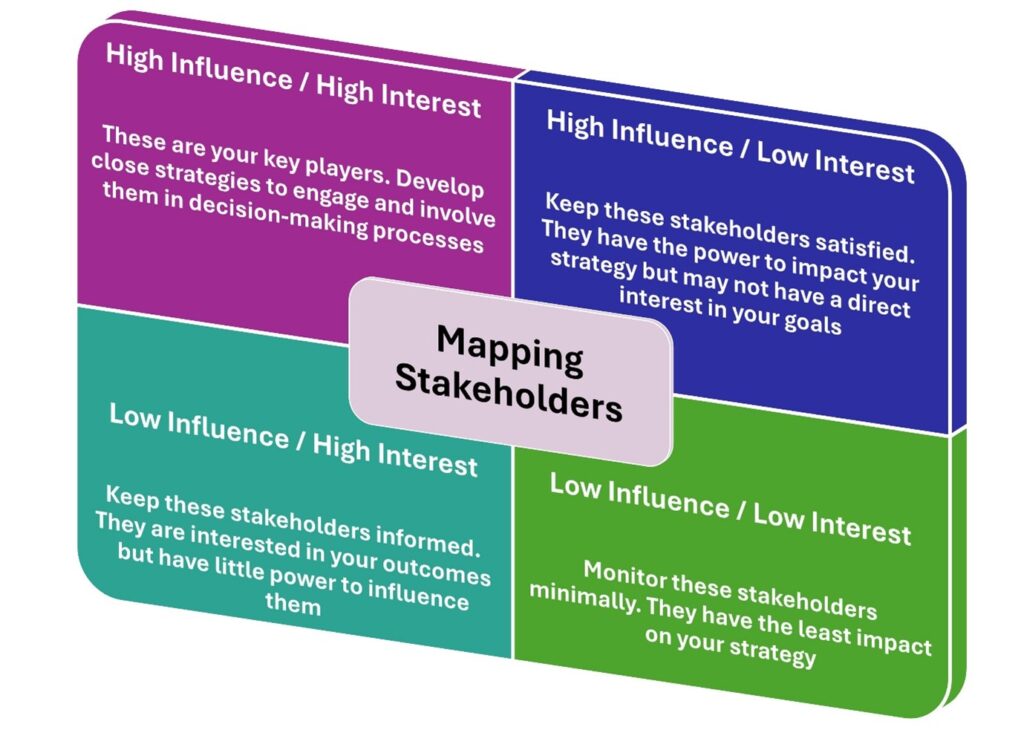
This prioritization helps focus efforts where they are most needed, ensuring that resources are used efficiently in engaging with stakeholders who can significantly impact the strategic vision.
Techniques for Establishing Trust and Rapport
Building trust-based relationships with stakeholders requires consistent effort and genuine engagement. Techniques for establishing trust and rapport include:
• Transparent Communication: Transparency builds trust by making stakeholders feel included and informed.
• Regular Updates: This can be through newsletters, meetings, or informal catch-ups.
• Active Listening: Active listening demonstrates respect and builds rapport.
• Mutual RespectRespect fosters a positive relationship.
• Reliability: Reliability confirms your integrity and builds trust over time.

Case Study
Starbucks implemented a stakeholder engagement strategy by introducing the “Coffee and Farmer Equity (C.A.F.E.) Practices.” These practices were communicated transparently to stakeholders, detailing how Starbucks sources its coffee ethically. This initiative strengthened trust and loyalty among customers and suppliers. The clear communication of ethical sourcing led to a 20% increase in customer loyalty metrics and enhanced supplier cooperation.
Tailoring Engagement Approaches
Developing customized engagement strategies involves understanding each stakeholder group’s unique concerns, needs, and communication preferences. Some strategies include:
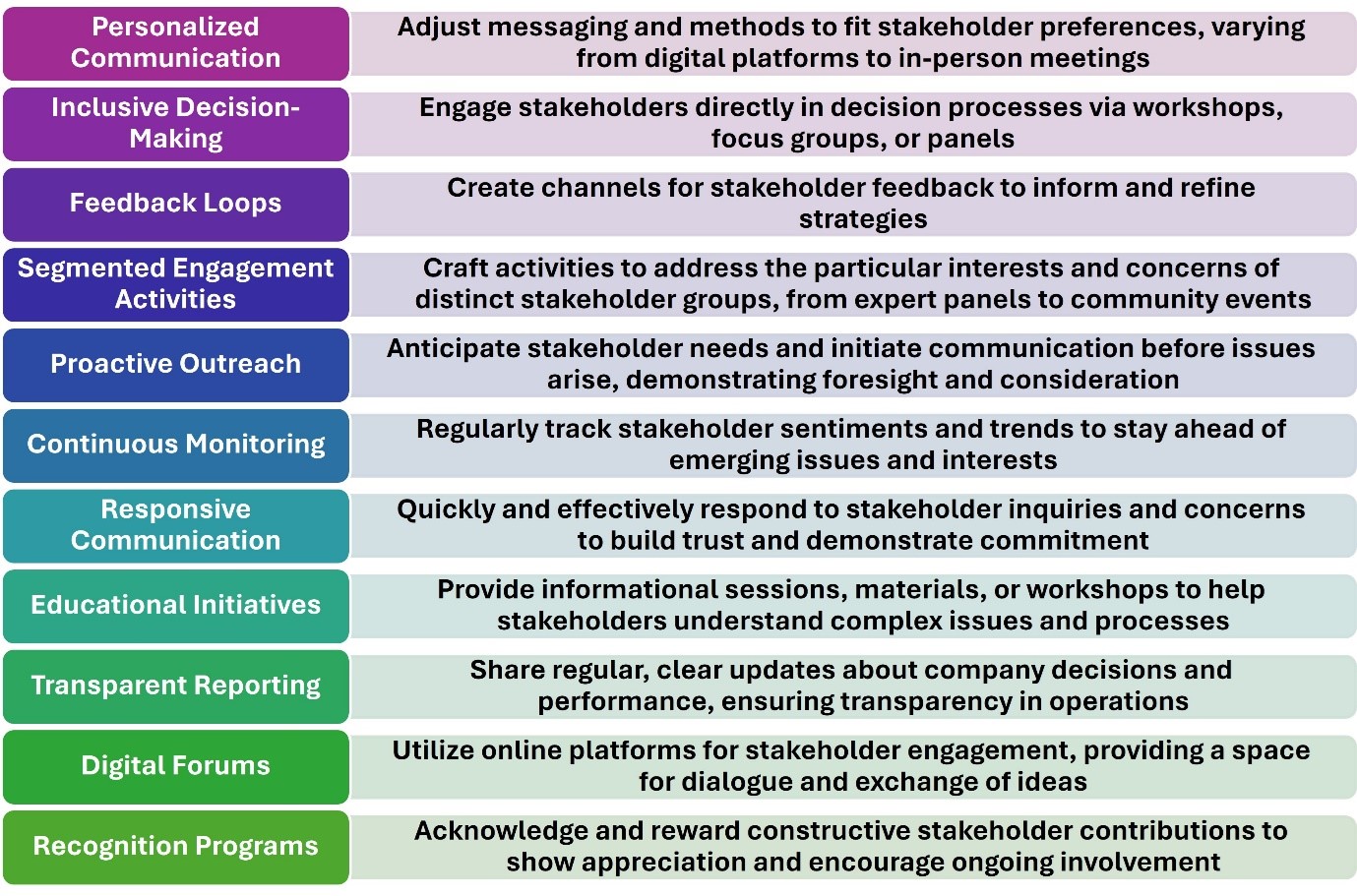
Measuring Engagement Success
Measuring the success of stakeholder engagement efforts is crucial for continuous improvement. Key metrics and feedback mechanisms include:
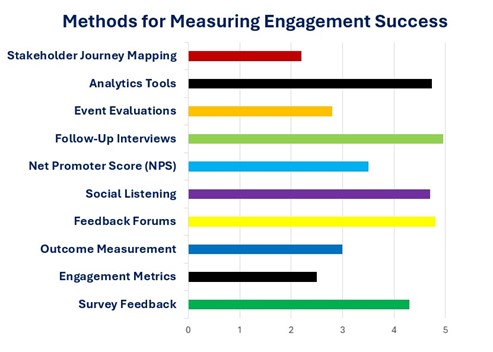

Case Study
During the Ebola outbreak, Humanitarian NGO Doctors Without Borders engaged local communities as crucial stakeholders by employing local leaders to disseminate vital health information. This approach built rapport and enhanced the effectiveness of their strategies. It improved trust and compliance among local populations and increased the effectiveness of health interventions, demonstrating the power of community engagement in crisis situations.

Feedback Loops for Strategic Improvement
Establishing Feedback Mechanisms
To drive continuous improvement and align strategically, establish effective feedback systems that gather relevant, timely, and actionable insights.
• Identify Stakeholders: Determine who will provide feedback, considering perspectives from all organizational levels, customers, suppliers, and partners.
• Choose the Right Tools: Select qualitative and quantitative tools like surveys, interviews, and digital platforms, ensuring accessibility and ease of use.
• Set Clear Objectives: Define the feedback’s purpose to guide collection and align with strategic goals.
• Ensure Anonymity: Provide confidential channels to encourage honest feedback.
• Regular Integration: Make feedback collection a routine part of operations to embed a culture of openness.
Turning Feedback into Actionable Intelligence
Analyzing feedback requires organizing the data, employing analytics to identify patterns, involving cross-functional teams to gain diverse insights, and focusing on actionable intelligence that aligns with strategic objectives.
• Categorize Feedback: Sort by themes, urgency, and impact to prioritize responses.
• Use Data Analytics Tools: Identify underlying issues and opportunities through analytics.
• Engage Teams: Collaborate across departments for comprehensive analysis.
• Identify Actionable Insights: Concentrate on practical, strategic-aligned insights for implementation.
Incorporating Feedback into Strategic Planning
Incorporating feedback into strategic planning involves prioritizing actions that support strategic goals, crafting detailed action plans with clear responsibilities and timelines, maintaining flexibility for adjustments, and monitoring outcomes with KPIs.
• Prioritize Based on Strategy: Align actions with strategic objectives.
• Develop Action Plans: Outline clear implementation steps and accountability.
• Ensure Flexibility: Stay adaptable to new feedback and changing situations.
• Monitor and Measure: Use KPIs to track the effectiveness of feedback-informed changes.
Communicating Feedback Outcomes
To close the feedback loop, communicate the outcomes back to stakeholders, demonstrating the impact of their input and fostering a climate of trust and ongoing engagement.
• Be Transparent: Share feedback, insights, and resultant actions openly.
• Use Multiple Channels: Reach stakeholders through varied communication platforms.
• Highlight Successes and Learnings: Be candid about what worked and what didn’t to bolster credibility.
• Invite Ongoing Feedback: Encourage stakeholders to keep sharing their thoughts and suggestions, reinforcing the cycle of continuous improvement and alignment.

Crisis Communication and Strategic Stability
Preparing for Crisis Communication
The foundation of adept crisis management lies in meticulous preparation. Developing a comprehensive crisis communication plan is not merely an administrative task; it’s a strategic initiative that safeguards an organization’s integrity, reputation, and operational continuity. This section delves into the critical steps for preparing an effective crisis communication plan, ensuring organizations are well-equipped to navigate the turbulent waters of a crisis.
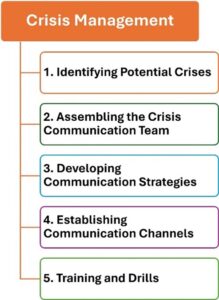
1. Identifying Potential Crises
Start by conducting a thorough risk assessment to identify potential crises that could impact your organization. This process involves analyzing internal operations, industry trends, and external factors such as political, economic, social, technological, environmental, and legal influences. Prioritize identified risks based on their likelihood of occurrence and potential impact on the organization. This prioritization helps focus efforts on planning for scenarios that could have the most significant consequences.
2. Assembling the Crisis Communication Team
The next step involves assembling a Crisis Communication Team. This team should comprise members from various departments, including leadership, public relations, legal, HR, and operational. Each member should have clear roles and responsibilities, ensuring a multi-disciplinary approach to crisis communication and management.
3. Developing Communication Strategies
Develop tailored communication strategies and messages for each identified crisis scenario. These should address key stakeholders, including employees, customers, suppliers, regulators, and the media. Crafting message templates in advance ensures consistency and speed in communication during a crisis. However, it’s crucial to customize these templates to the specifics of the actual crisis when it occurs.
4. Establishing Communication Channels
Determine the most effective channels for disseminating crisis communication. This decision should consider the nature of the crisis, the affected stakeholders, and the urgency of the communication. Depending on the scenario, traditional media, social media, direct emails, and internal communication systems can all play pivotal roles.
5. Training and Drills
Lastly, training and conducting drills for the Crisis Communication Team are essential. Regular training sessions ensure team members are familiar with the crisis communication plan and their roles within it. Drills simulating various crisis scenarios help identify potential weaknesses in the plan and the team’s readiness, providing opportunities for refinement.

Case Study
BP initially struggled with crisis communication after the Deepwater Horizon oil spill. Learning from this, BP overhauled its approach to emphasize transparency and regular updates during environmental crises. This strategy has helped improve public perception and stakeholder trust during subsequent incidents, highlighting the importance of prepared communication strategies.
Executing Crisis Communication
Crisis situations are fluid and require adaptable communication strategies. As new information becomes available, regular updates should be provided, and messages should be adjusted based on the evolving nature of the crisis and stakeholder feedback.
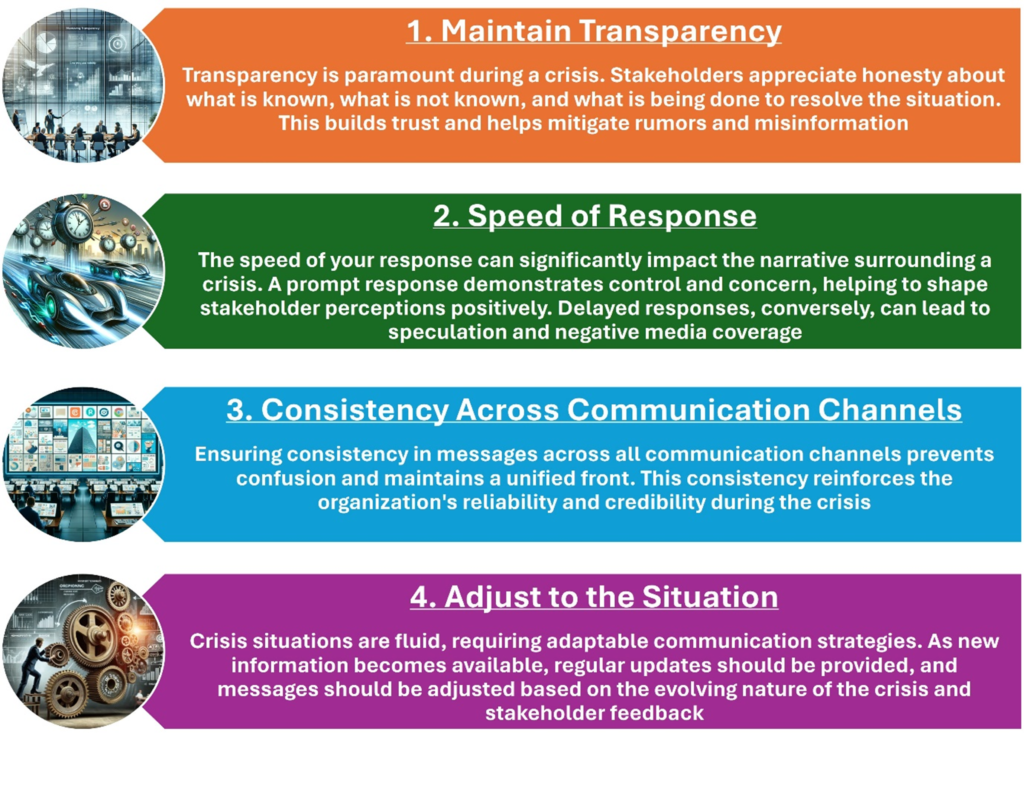
Keeping Alignment in Sight During Crises
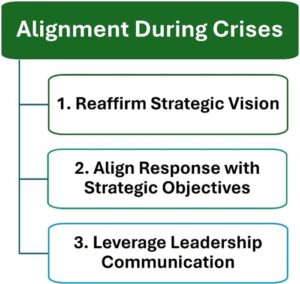
Amid a crisis, keeping the organization’s strategic vision and values at the forefront of every communication is imperative. This does more than maintain focus—it reassures stakeholders that the immediate responses are not just reactive moves but are steps taken within the framework of long-term goals. Effective communication during these times reminds us that the organization remains committed to its principles, helping to sustain trust and stability among internal and external stakeholders.
Crisis management demands that every decision and action address immediate concerns and align with the organization’s broader strategic objectives. This alignment is crucial as it ensures the organization stays on its intended course, even when navigating uncertainty. By consistently evaluating crisis responses against these objectives, the organization can stay within its core path and maintain a clear direction toward its long-term goals.
During a crisis, leadership communication becomes more significant than ever. Leaders must be visible and communicative, providing clear, consistent messages reinforcing the organization’s strategic direction. Their communication should articulate the reasons behind response strategies, linking them to the organization’s vision. This helps manage the current situation more effectively and strengthens the leadership’s role as a guiding force, ensuring that every layer of the organization remains aligned and focused during tumultuous times.
Maintaining strategic alignment during crises involves reaffirming core values, ensuring that each response is strategically oriented, and leveraging strong leadership communication. This approach helps manage the situation effectively and positions the organization for smoother transitions back to normalcy and continued progression toward its goals.

Case Study
In response to a significant volcanic eruption, the New Zealand Tourism Board implemented an immediate crisis communication strategy to manage tourist safety and information dissemination, using multiple channels to reach affected parties swiftly. This approach maintained the integrity of New Zealand’s image as a safe tourist destination and effectively managed the crisis, demonstrating the effectiveness of well-prepared crisis communications in the tourism industry.
Leveraging Crisis Experiences for Strategic Improvement
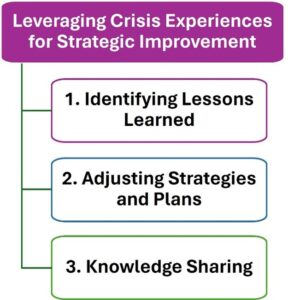 Following the resolution of a crisis, conducting a comprehensive evaluation of how it was managed is essential. This review should cover several key areas: the effectiveness of the communication plan, how well the Crisis Communication Team implemented the plan, and the overall impact of the response on stakeholders.
Following the resolution of a crisis, conducting a comprehensive evaluation of how it was managed is essential. This review should cover several key areas: the effectiveness of the communication plan, how well the Crisis Communication Team implemented the plan, and the overall impact of the response on stakeholders.
A critical evaluation component is to distill lessons learned from the crisis. This involves a detailed analysis to identify what worked well and what did not, highlighting strengths and areas needing improvement. These lessons are invaluable as they provide specific insights that can help refine the crisis communication plan and enhance the organization’s overall resilience.
Armed with the insights gained from the evaluation, making informed adjustments to strategies and plans is necessary. This may include updating risk assessments to reflect new vulnerabilities discovered during the crisis, revising communication strategies to address shortcomings, or enhancing training programs to improve the Crisis Communication Team’s readiness for future challenges. These adjustments ensure the organization is better equipped to handle similar situations and respond more effectively.
An often overlooked but crucial step is sharing the knowledge gained from the crisis across the organization. This practice helps foster a culture of continuous improvement and resilience. By transparently sharing experiences and updates made post-crisis, the organization ensures that all team members learn from the event and contribute to a collective state of readiness. This strengthens the organization’s strategic alignment and enhances its operational excellence, ensuring that each crisis becomes a stepping stone toward improved organizational fortitude.


Course Manual 8: Innovation and Strategic Alignment
Core Objective: To equip participants with the knowledge and tools to embrace and manage innovation to align with strategic goals for sustained growth and competitive advantage.

Fostering Innovation within a Strategic Context
Understanding the Innovation Ecosystem
The innovation ecosystem is a dynamic and interconnected environment that fosters the generation and implementation of new ideas, products, and processes. At its core, this ecosystem comprises three primary elements: people, processes, and technology, each playing a crucial role in driving innovation toward achieving strategic goals.
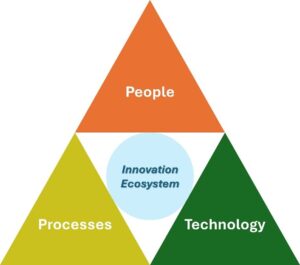
At the core of any innovation ecosystem are the people, from the leadership at the top to the frontline employees who bring diverse perspectives to every challenge. Cultivating a culture that encourages exploration and experimentation is vital. It’s essential that everyone in the organization feels empowered to share their ideas and try new approaches. The richness of an organization’s innovation often stems from its diversity—different thoughts, backgrounds, and expertise contribute to a fertile ground for generating creative and effective solutions.
Processes are the scaffolding that supports the journey of innovation from the initial spark of an idea to its final execution. Adopting methodologies such as agile development, design thinking, and continuous improvement practices are crucial for keeping pace with rapidly changing market demands. These frameworks help organizations streamline the path from concept to market, ensuring ideas are generated and effectively implemented, creating real and valuable outcomes.
Technology serves as a critical enabler in the innovation process. Cutting-edge technologies like artificial intelligence (AI), blockchain, and the Internet of Things (IoT) are tools and catalysts that open up new possibilities for developing products and services. They also streamline and optimize internal processes, making it easier for organizations to innovate more efficiently. By integrating advanced technologies, companies can leverage these powerful resources to push the boundaries of what’s possible and gain significant competitive advantages in their respective industries.
These three pillars—people, processes, and technology—create a robust innovation ecosystem that enables organizations to stay dynamic and competitive. By investing in and nurturing each component, companies can foster an environment where innovation thrives, leading to sustained growth and success.

Exercise: Tech Swap Brainstorm
• Two teams of five.
• To think about how technology from one industry can innovate processes in another.
• Each team picks an industry and discusses a leading technology in that field.
• Teams brainstorm how this technology could be adapted to improve their industry or work area.
• Each team discusses their outputs with the entire group.
• Participants gain insights into cross-industry innovation and develop ideas for leveraging technology in unexpected ways to solve problems in their sectors.
Aligning Innovation with Strategic Vision
Innovation must be purposeful and intricately aligned with an organization’s strategic vision and long-term objectives to drive it forward. This alignment is critical, as it ensures that innovation efforts foster immediate gains and contribute to sustainable growth and a robust competitive advantage.
To achieve this alignment, it is essential to develop a clear innovation strategy that bridges day-to-day operations and the organization’s broader strategic goals. This strategy should pinpoint areas for innovation focus, such as penetrating new markets or developing new products. By defining these focus areas, the organization can channel its creative energies toward initiatives with the most significant potential to advance its strategic vision.
Leadership involvement is crucial in setting and communicating the priorities for innovation. When executives champion innovation initiatives, they receive the necessary resources and organizational attention to succeed. More importantly, involving leadership ensures that these initiatives align with the company’s overall direction and strategic goals. This top-down support motivates the team and aligns every innovative effort with the company’s long-term objectives.
A robust governance model is vital to ensure further that innovation efforts align with strategic objectives. This model should guide the selection and management of innovation projects, ensuring that resources are allocated efficiently and effectively to initiatives that offer the highest strategic value. Such a governance framework helps maintain focus on strategic alignment throughout the innovation process, from ideation through to execution.
By methodically aligning innovation with the strategic vision, organizations can ensure that their innovative efforts are not just creative experiments but strategic endeavors that enhance their market position and pave the way for future success. This strategic alignment optimizes resource utilization and sharpens the organization’s competitive edge in a fast-evolving marketplace.
Creating a Culture of Innovation
A culture that fosters innovation is characterized by openness, creativity, and a willingness to take risks. Building such a culture requires a concerted effort across several dimensions:
• Leadership Roles: Leaders should act as innovation champions, demonstrating a commitment to innovation through their actions and decisions. Encouraging risk-taking and learning from failure are essential leadership behaviors to cultivate an innovative culture.
• Rewards and Recognition: Develop recognition and reward systems that celebrate innovative efforts and successes. This could range from formal award ceremonies to informal recognition in team meetings.
• Collaborative Environment: Promote cross-functional collaboration to break down silos and encourage the exchange of ideas. Physical and virtual spaces that facilitate collaboration can significantly enhance creativity.
Innovation Metrics and Measurement
Measuring the impact of innovation is critical for understanding its contribution to strategic goals and for continuous improvement of the innovation process. For example:
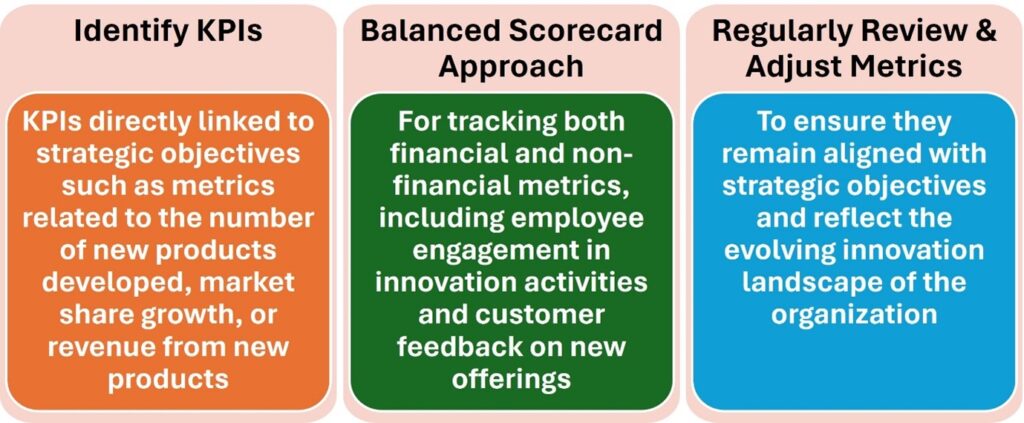
Leveraging External Innovation
External sources of innovation can provide fresh insights and technologies that complement internal efforts. For example:
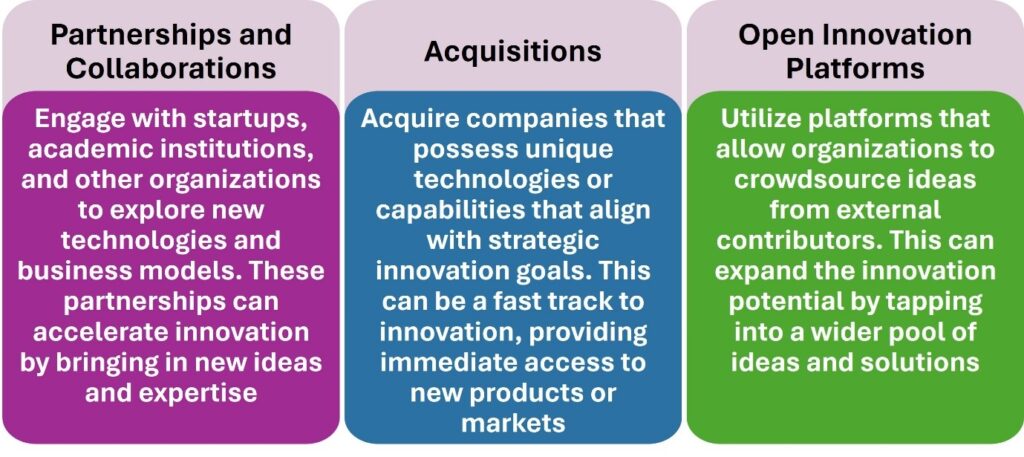

Balancing Innovation and Operational Excellence
The Synergy between Innovation and Operations
Operational excellence is both the beginning and the end goal of a journey toward sustainable innovation. It creates a stable foundation upon which the edifice of innovation can be built. Operational excellence, through its focus on process optimization, reliability, and efficiency, ensures that an organization’s essential functions perform at an exceptional level, thereby freeing up resources—both time and money—that can be invested in innovation. This synergy is crucial as it allows for a seamless flow of ideas to be tested and implemented without disrupting the core operations. Moreover, the disciplined approach of operational excellence provides a framework for evaluating and scaling innovations effectively. By fostering a culture that values both operational discipline and creativity, organizations can achieve a dynamic balance where operational efficiency and innovation reinforce each other, leading to sustained growth and competitive advantage.
Managing the Innovation Portfolio
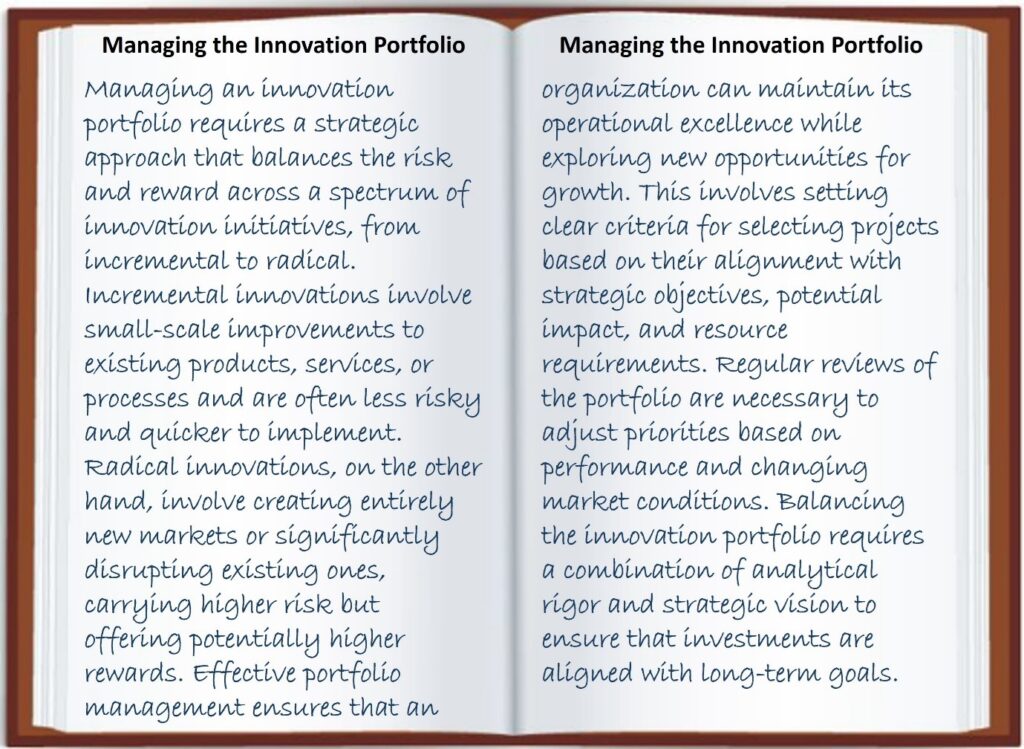
Risk Management in Innovation
Innovation inherently involves risk, but managing these risks is crucial to ensure they uphold operational excellence. Effective risk management in innovation begins with identifying potential risks at the outset of an innovation project. These risks range from technical feasibility and market acceptance to regulatory and intellectual property issues. Once risks are identified, assessing their likelihood and potential impact allows organizations to prioritize their management efforts. Strategies to mitigate risks include diversifying the innovation portfolio, developing contingency plans, and fostering a culture of learning from failure. Moreover, integrating risk management into the innovation process ensures that it becomes a proactive rather than reactive practice, enabling organizations to pursue bold ideas while maintaining operational integrity.
Resource Allocation for Innovation and Operations
Balancing the allocation of resources between innovation projects and operational needs is critical to sustaining long-term growth and day-to-day excellence. This involves not only financial resources but also staffing and time. Effective resource allocation starts with strategic planning that aligns resource deployment with organizational priorities. It requires a clear understanding of the current and future resource demands by both operational functions and innovation projects. Techniques such as zero-based budgeting can ensure that every dollar spent is justified in terms of its contribution to strategic objectives. Furthermore, allocating resources for innovation must include considerations for flexibility and agility, allowing for rapid pivoting in response to new insights or market changes. Regular reviews and adjustments to resource allocations ensure that the organization remains responsive to immediate operational needs and long-term strategic goals.
Integrating Innovation into Business Processes
Integrating innovation into existing business processes and operations is essential for realizing its benefits in terms of efficiency and effectiveness. This integration requires a systematic approach that identifies innovation opportunities to add value or solve existing problems. It involves cross-functional collaboration to ensure that innovative solutions are feasible within current operations and align with strategic objectives. Change management plays a crucial role in this process, as introducing new ideas often requires shifts in mindset, culture, and workflows. Training and development programs can equip employees with the skills to embrace and implement innovations. Finally, measuring the impact of innovations on business processes and operations is critical to understanding their effectiveness and guiding future integration efforts. Through careful planning and execution, innovation can be woven into the fabric of daily operations, driving continuous improvement and competitive advantage.

Innovative Problem-Solving for Strategic Challenges
Identifying Strategic Challenges
Identifying strategic challenges ripe for innovative solutions is critical in fostering organizational growth and maintaining competitive advantage. To undertake this task effectively, one must understand the organization’s overarching vision and objectives. This understanding forms the foundation for thoroughly analyzing internal operations and the broader external market conditions.

The process of identifying these challenges involves several key actions. Key steps include:
1. Environmental Scanning: Regularly monitor external and internal environments to identify emerging trends, challenges, and opportunities.
2. Stakeholder Feedback: Engage with customers, employees, and partners to gather insights on potential areas for innovation.
3. Data Analysis: Use data analytics to identify patterns, inefficiencies, or market gaps that could be addressed through innovative solutions.
4. Prioritization: Utilize frameworks such as the Eisenhower Matrix or the ICE (Impact, Confidence, Ease) score to prioritize challenges based on their potential impact, solvability, and alignment with organizational goals.
The systematic identification and prioritization of strategic challenges are foundational to driving organizational innovation. By understanding the organization’s goals, continuously scanning the environment, engaging stakeholders for insights, and leveraging data for informed decision-making, a company can address its most pressing challenges and seize opportunities to innovate and grow. This proactive approach ensures that innovation efforts are strategically aligned and geared toward sustainable success.
Design Thinking for Strategic Innovation
Design Thinking is a human-centered approach that revolutionizes innovation by harmonizing people’s needs, technology’s potential, and demands for business success. This methodology is particularly effective when applied to strategic innovation, as it promotes a profound understanding of challenges from the user’s perspective and leads to solutions that are not only innovative but also practical and implementable.

The Design Thinking process unfolds through five distinct phases:
1. Empathize: Conduct research to gain an empathetic understanding of the problem from the perspective of those affected.
2. Define: Clearly articulate the problem to be solved, focusing on human needs and insights gained during the Empathize phase.
3. Ideate: Generate various possible solutions, encouraging creative thinking beyond traditional boundaries.
4. Prototype: Develop scaled-down versions of the product or solution, facilitating the exploration of potential solutions.
5. Test: Rigorously test the prototypes with end-users, collecting feedback to refine and improve the solution.
Design Thinking is a powerful tool for strategic innovation. Emphasizing understanding and addressing real human needs ensures that the solutions developed are innovative but also viable and effective. Through its structured yet flexible process, Design Thinking enables organizations to navigate complex problems and emerge with creative and practical solutions, ultimately leading to enhanced business success and customer satisfaction.
Collaborative Innovation
Collaborative innovation harnesses the collective intelligence of cross-functional teams, uniting diverse perspectives and expertise to address strategic challenges effectively. This approach not only leverages the varied skills within an organization but also cultivates a culture of open communication and shared objectives, which are crucial for fostering an innovative environment.
Key strategies include:
• Cross-Functional Teams: Form teams with members from different departments and levels to encourage diverse perspectives.
• Co-Creation Workshops: Organize workshops where team members can collaborate on generating ideas and solutions.
• Open Innovation: Engage with external partners, such as startups, academia, and customers, to bring fresh ideas and approaches.
• Collaboration Tools: Utilize digital collaboration platforms to facilitate communication and idea sharing among team members, regardless of location.
Collaborative innovation is a powerful approach to solving complex problems and achieving strategic goals. By embracing diversity, fostering cross-functional collaboration, and integrating internal and external insights, organizations can unlock a higher level of creativity and problem-solving capability. This accelerates innovation and enhances the quality and applicability of the solutions developed, driving the organization toward tremendous success in an increasingly competitive landscape.

Case Study
Grameen Bank revolutionized microfinance by providing small loans to impoverished individuals without requiring collateral, addressing the significant challenge of financial inclusion. Their innovative lending model has helped lift millions from poverty, showcasing how financial innovation can lead to profound social impact.
Leveraging Technology for Innovation
Leveraging technology for innovation provides organizations with unparalleled opportunities to tackle strategic challenges and gain a competitive edge. By staying informed about technological advancements, companies can effectively utilize emerging tools to transform their operations and service offerings.
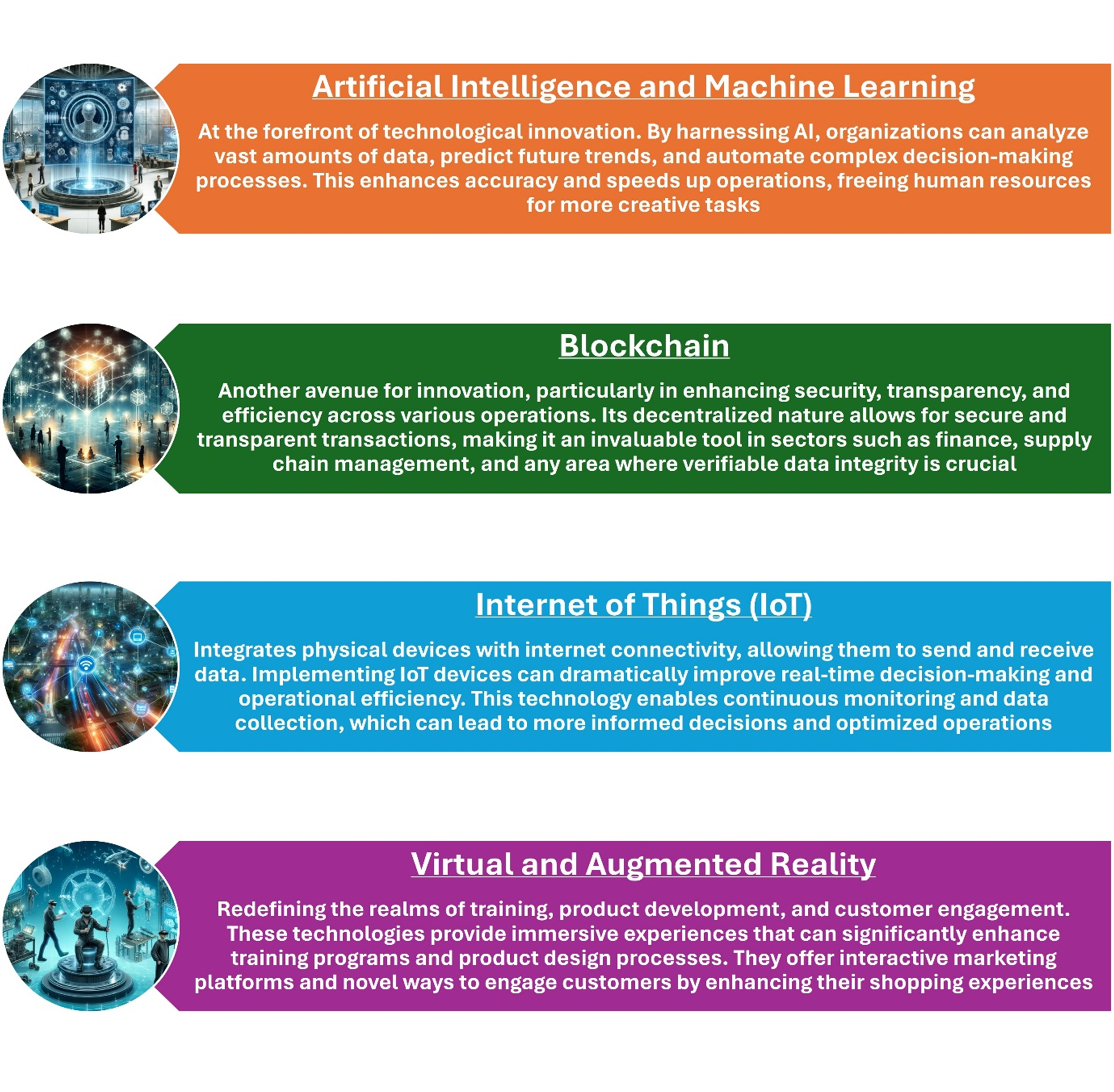
Leveraging emerging technologies such as AI, blockchain, IoT, and VR/AR allows organizations to address complex challenges creatively and efficiently. By integrating these technologies into their operations, companies can enhance their decision-making processes, improve operational efficiencies, and create more engaging and personalized customer experiences. Embracing technological innovation is not just about keeping up with trends; it’s about staying ahead in a rapidly evolving business landscape, driving growth, and building a sustainable competitive advantage.
Evaluating and Selecting Innovative Solutions
Evaluating and selecting innovative solutions is critical to ensuring that these innovations align with an organization’s strategic goals and possess the potential for significant impact. This requires a structured and comprehensive approach to decision-making that considers several critical aspects of each potential solution.

Key strategies include:
• Feasibility: Assess the technical and operational feasibility of implementing the solution.
• Viability: Evaluate the economic viability, including cost-benefit analysis and potential ROI.
• Desirability: Determine the solution’s desirability from the user’s and stakeholders’ perspectives.
• Pilot Testing: Conduct pilot tests of the selected solution in controlled environments to gather data on its effectiveness and potential for scale.
• Decision Frameworks: Utilize decision-making frameworks, such as decision matrices or cost-benefit analysis, to objectively compare potential solutions.

Scaling Innovations for Strategic Impact
Navigating the Growth Path
Scaling an innovation from a pilot project to full-scale implementation is akin to navigating a complex landscape, where every turn and obstacle must be meticulously planned. The journey begins with a successful pilot, which serves as a proof of concept demonstrating the feasibility and potential impact of the innovation. However, scaling requires a strategic approach that considers the broader implications on the organization. Common pitfalls during this phase include underestimating resource requirements, failing to adapt the innovation to broader market needs, and overlooking the importance of cross-departmental collaboration. Success factors hinge on robust planning, iterative feedback loops with stakeholders, and a clear vision that aligns the innovation with the organization’s strategic goals. Securing and maintaining leadership’s commitment is essential, along with preserving the flexibility to adapt to innovation as scalability increases.

Case Study
Bosch faced a challenge with decreasing tool life in their production lines. Implementing a predictive maintenance system using IoT solved the issue and increased tool life by 20%, significantly reducing downtime and maintenance costs.
Building Scalable Business Models
Developing a scalable business model is the cornerstone of ensuring that an innovation can achieve strategic impact. A scalable business model can exponentially grow revenue without a corresponding cost increase. Key to this is identifying and leveraging value propositions that meet untapped customer needs or create new markets. This involves conducting thorough market analysis, customer segmentation, and competitive analysis to refine the innovation’s unique selling points. The model should detail revenue streams, cost structures, key partners, and operational processes, ensuring they are all aligned to scale efficiently. Scalability also depends on the innovation’s ability to adapt to different markets and contexts, requiring a flexible approach to product development and marketing strategies.
Change Management for Scaling Innovation
Effective change management is crucial for scaling innovation in organizations. It entails readying and supporting individuals, teams, and the entire organization to adopt changes. Central to success is aligning stakeholders, from frontline workers to top management, with the innovation’s vision, benefits, and strategic relevance.
Measuring the Impact of Scaled Innovations
To understand the strategic impact of scaled innovations, it is crucial to establish a framework for measurement that includes both quantitative and qualitative metrics. Quantitative metrics consist of performance indicators such as revenue growth, market share expansion, cost savings, and efficiency improvements. Qualitative metrics, on the other hand, assess the innovation’s impact on customer satisfaction, employee engagement, brand reputation, and competitive advantage. Setting up a balanced scorecard that combines these metrics can provide a holistic view of the innovation’s impact. Benchmarking these metrics against industry standards and best practices is essential to gauge relative success. Regular reviews and adjustments to the measurement framework ensure it remains relevant and aligned with strategic objectives.
Sustaining Innovation at Scale
Sustaining innovation at scale requires a strategic focus on continuous improvement and the agility to adapt to new challenges and opportunities. It involves embedding a culture of innovation within the organization, where ideas are encouraged and risk-taking is supported. Key strategies include establishing ongoing idea generation and evaluation processes, leveraging technology to enhance product development and operational efficiency, and fostering partnerships that can expand the innovation ecosystem. Continuous learning and adaptation are essential, requiring mechanisms for capturing lessons learned and integrating them into future innovation efforts. Additionally, sustaining innovation at scale may involve diversifying the innovation portfolio to mitigate risks and capitalize on new market opportunities.


Course Manual 9: Strategic Decision-Making
Core Objective: To equip participants with practical and theoretical insights into strategic decision-making, enhancing their ability to navigate complex business environments effectively.

Frameworks for Strategic Decision-Making
Overview of Strategic Decision-Making Models
Strategic decision-making is a pivotal activity in business strategy, involving selecting pathways that will guide an organization toward its long-term goals. Various models have been developed to frame and enhance the decision-making process:
• The Rational Model posits that decision-makers have complete information and can thus make the optimum decision by following a logical, stepwise process. This model emphasizes comprehensive analysis and forecasting to guide decisions, but it may be limited by the complexity of real-world situations and the impossibility of having all possible information.
• Bounded Rationality acknowledges the limits of our ability to process information and time and cognitive capacity constraints. It suggests that rather than seeking the optimal solution, decision-makers settle for a satisfactory one that meets the minimum criteria for success. This model reflects how decisions are made in practice, underlining the importance of heuristics and rules of thumb.
• The Garbage Can Model represents decision-making in a more chaotic framework, where solutions, problems, and participants are all disconnected and come together randomly. It highlights the role of chance and timing, particularly in organizations characterized by complex and ambiguous environments. This model reminds us that not all strategic decisions follow a clear or rational process.

Case Study
Spotify operates in a rapidly changing technology landscape where quick and innovative responses are crucial. The company’s decision-making process often resembles the Garbage Can Model, where decisions emerge from seemingly chaotic and opportunistic interactions rather than a linear, structured process.
For example, the development of Spotify’s “Discover Weekly” feature exemplifies this model. Originally developed during a hackathon, this feature was not the result of a strategic roadmap but rather the outcome of creative experimentation in a fluid and unstructured environment. The feature uses machine learning algorithms to create personalized playlists for users, a novel approach at the time that leveraged the company’s vast data on user preferences and listening habits.
Discover Weekly quickly became a significant part of the Spotify user experience, leading to a reported 30% increase in user engagement. This feature’s success highlights how agile and adaptive decision-making, in line with the Garbage Can Model, can lead to breakthrough innovations in environments characterized by high uncertainty and rapid change.
Key Tools for Strategic Decision-Making
IMAGE TOO BLURRY
Scenario Planning for Future Readiness
Scenario planning is a robust strategic planning method organizations deploy to create flexible long-term plans. This technique shines in its ability to prepare for the unknown by envisioning various plausible futures and their potential impacts on business operations. The process begins by identifying external forces and significant trends that could influence your industry. Building on this foundation, organizations develop different plausible future scenarios, each crafted around these identified forces and trends.
The next step involves thoroughly analyzing how each scenario might affect the organization. This analysis is critical as it forms the basis for crafting tailored strategies to address each possible future. By preparing for multiple outcomes, the organization equips itself to handle any eventuality.
Scenario planning is more than just a defensive measure—it is a proactive tool that enhances organizational resilience and adaptability. It fosters a forward-thinking and strategic agility culture, enabling businesses to quickly adapt their strategies, seize emerging opportunities, and confidently navigate the ever-changing business landscape. This approach mitigates risks and propels the organization toward sustained success in a dynamic world.

Exercise: Model Match-Up
• Two teams of five participants each.
• To match real-world business situations with the appropriate decision-making model.
• Teams are presented with descriptions of business decisions from famous companies.
• They must discuss and decide which model (Rational, Bounded Rationality, Garbage Can) each company likely used.
• Upon completion, they must explain their reasoning in a one-minute pitch to the other team.
• Encourages collaboration and critical thinking about the practical application of theoretical models, enhancing understanding and retention.

Data-Driven Decision-Making
Fundamentals of Data Analytics in Strategy
The power of data cannot be overstated in the strategic decision-making process. Data analytics is the backbone, supporting organizations in navigating complex business environments. It enables leaders to make informed decisions that propel organizational growth and maintain competitive advantages. This section explores the fundamental types of analytics and their roles in forming business strategies.
• Descriptive Analytics: This is the most basic type of analytics. It helps understand past performances by providing a clear picture of what has happened in the business. Organizations can identify patterns and trends by analyzing historical data through metrics and reports, helping in operational performance reviews and strategic planning.
• Predictive Analytics: As the name suggests, predictive analytics forecasts future possibilities. It uses statistical models and machine learning techniques to predict future events based on past data. This type is crucial for risk management, demand forecasting, and setting realistic expectations for future growth.
• Prescriptive Analytics: This advanced form of analytics goes beyond predicting future trends and suggests actions that could be taken to handle future scenarios. Using complex algorithms, simulation, and optimization helps decision-makers identify the best courses of action under certain conditions.
The effectiveness of data analytics heavily relies on the quality of data. Poor-quality data can lead to inaccurate insights, which can mislead decision-making processes. Data governance frameworks are essential to ensure data integrity and security and establish a standardized approach to managing data across the organization. Understanding the journey of data from its collection stage to generating insights is crucial for effective data analytics. This process includes:
• Data Collection: Gathering raw data from various sources, ensuring it’s relevant and sufficient to address the question at hand.
• Data Processing and Cleaning: Refine the data by removing inaccuracies and inconsistencies to ensure its high quality.
• Data Analysis: Applying analytical tools and techniques to process the data and extract valuable insights.
• Data Visualization: Presenting the data in formats that are easy to understand and interpret, such as charts, graphs, and dashboards.
Aligning analytics initiatives with organizational strategy ensures that the insights generated are relevant and actionable. It involves setting clear objectives, identifying key performance indicators (KPIs), and integrating analytics into daily decision-making processes.
Incorporating data analytics into strategic decision-making enhances understanding of market dynamics and consumer behavior and equips leaders with the tools to foresee and shape the future. As businesses continue to operate in an increasingly data-driven world, mastery of data analytics becomes a key differentiator in achieving sustained organizational success.
Big Data and Its Strategic Implications
Big data is characterized by four critical dimensions, often referred to as the “Four V’s”:
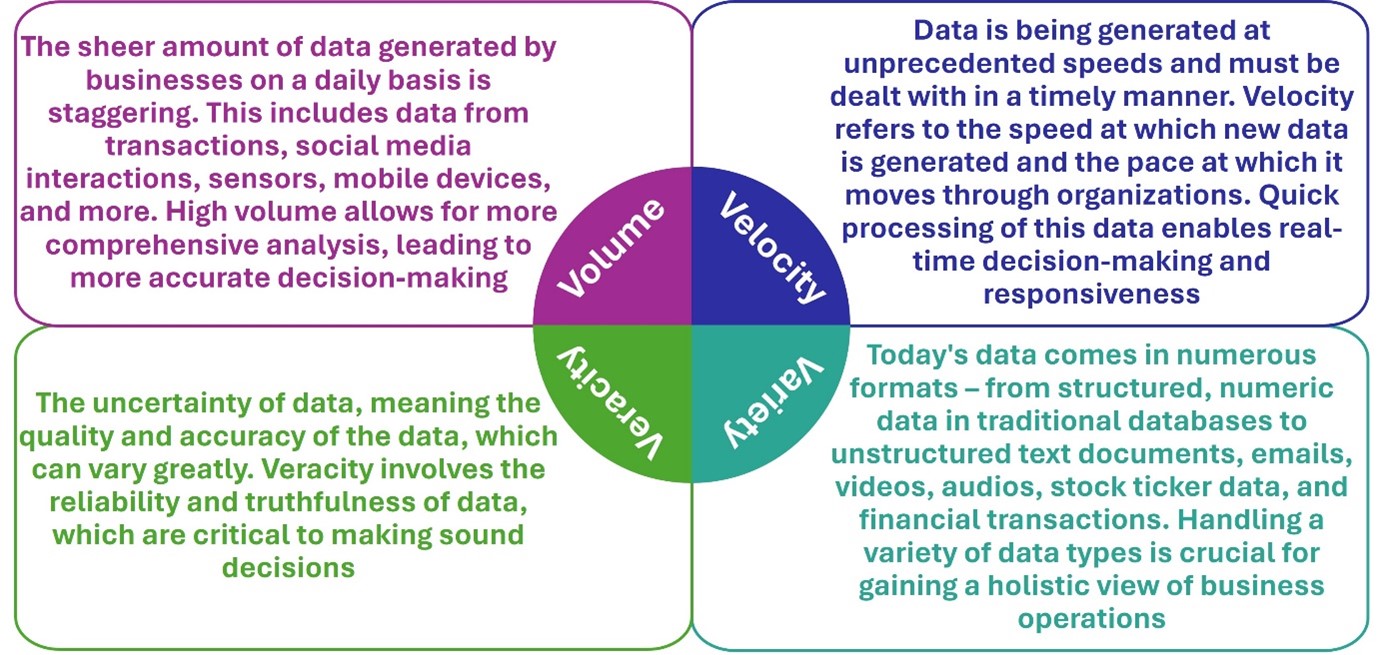
Across industries, the impact of big data is profound, revolutionizing traditional business models and strategies.

Case Study
Walmart employs data-driven decision-making to enhance operational efficiencies and customer experiences. By analyzing large data sets, Walmart makes informed decisions that support its strategic objectives and maintain its market leadership. One of the key applications of Walmart’s data analytics is inventory management and customer experience personalization. Walmart’s implementation of predictive analytics tools allows the company to fine-tune its inventory levels, reducing overstock and understock situations, thereby optimizing supply chain efficiency.
Using predictive analytics to manage inventory levels led to a 15% reduction in unsold inventory costs and a 20% increase in customer satisfaction scores. These improvements demonstrate the strategic advantage of integrating advanced data analytics into decision-making processes. Walmart’s ability to anticipate customer needs and manage resources effectively enhances operational efficiencies and strengthens its competitive position in the retail market.
The use of big data is not without its challenges, which include:
• Data Privacy and Security: Handling large amounts of data increases the risk of data breaches and privacy issues. Organizations must ensure robust security measures are in place to protect sensitive information.
• Data Management Complexity: Managing an ever-increasing volume, velocity, and variety of data requires sophisticated data management tools and technologies. Organizations must invest in and update their data management systems to handle big data efficiently.
• Skill Gap: There is a significant demand for professionals skilled in data analytics. The skill gap can hinder an organization from fully leveraging extensive data capabilities.
Despite these challenges, big data offers substantial opportunities:
• Innovative Business Models: Companies like Uber and Airbnb have used big data to disrupt traditional industries with new service models that enhance customer experiences and operational efficiency.
• Enhanced Customer Insights: Big data analytics enables companies to understand customer preferences and behavior in greater depth, which can lead to the development of more targeted products and services.
Tools and Techniques for Data Analysis
The field of data analysis encompasses a variety of tools, each suited for different types of data tasks and business needs. Here, we examine some of the most influential and widely used tools in data science, business intelligence, and analytics platforms.
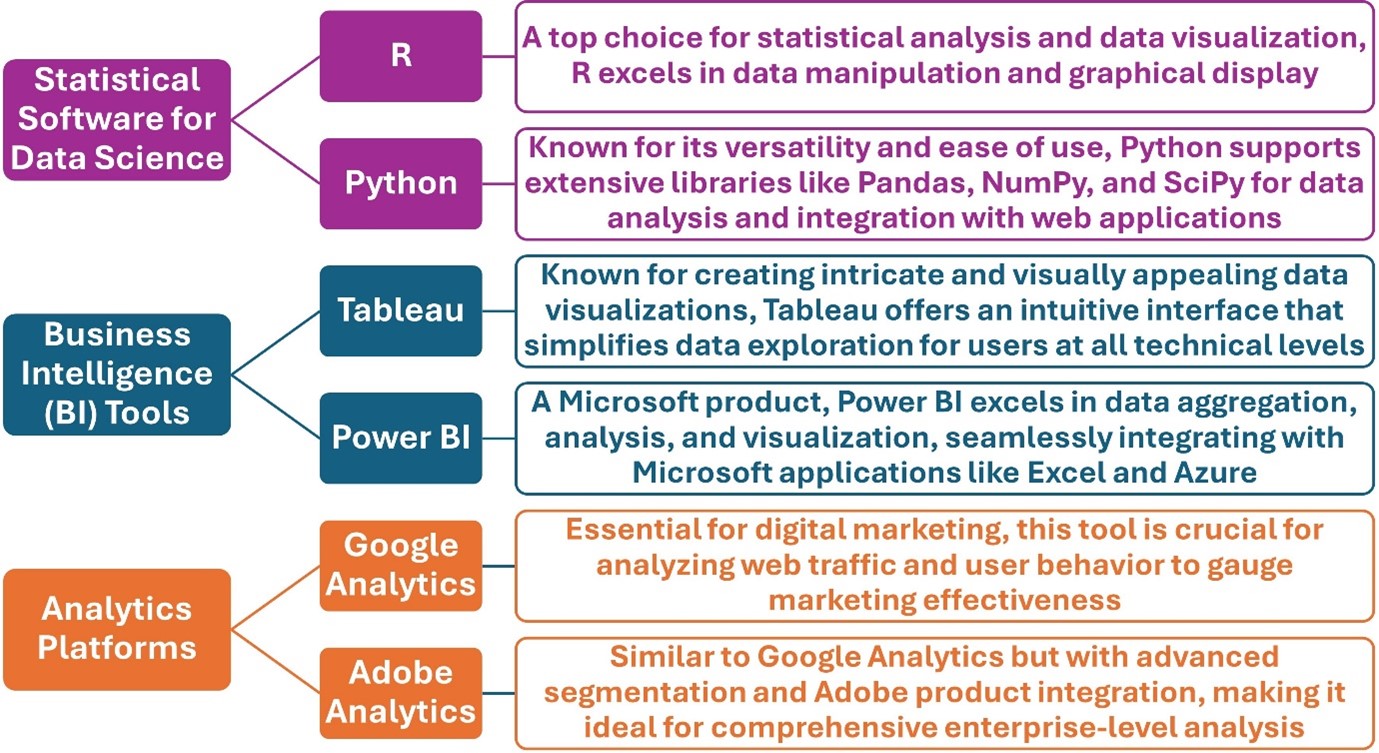
By mastering data analysis tools and techniques, you will be prepared to extract actionable insights from vast amounts of data, empowering you to make informed, data-driven decisions. Finding and using the right tools aligning with your strategic objectives and business needs will help you transform data into a powerful strategic asset.
Integrating Data Insights into Strategic Planning
Integrating data analytics into strategic planning is crucial for converting insights into actionable strategies that propel business growth. This process requires a systematic approach to ensure that data-driven insights are effectively aligned with business objectives, leading to enhanced decision-making processes. Several frameworks and methodologies can aid in embedding analytics into the strategic planning cycle:
• Data-Driven SWOT: Traditional SWOT analysis, identifying strengths, weaknesses, opportunities, and threats, can be significantly enhanced with data insights. For instance, customer data can reveal strengths in market segments where a company performs well or identify threats from emerging competitive trends. Incorporating quantitative data into SWOT enables more objective strategic decisions.
• Predictive Scenario Planning: This involves using predictive analytics to forecast future trends and model possible scenarios. For example, predictive models can help anticipate market conditions, customer behavior changes, or supply chain disruptions. This allows organizations to develop robust strategic plans under various future scenarios.
• Integrating Data Insights: The Balanced Scorecard framework, which measures organizational performance from a financial, customer, internal process, and learning and growth viewpoint, can be enriched with data analytics. Based on data insights, Key Performance Indicators (KPIs) can be defined to measure progress against strategic goals.
To effectively integrate data insights into strategic planning, organizations must ensure that their analytics initiatives are aligned with their strategic goals. This can be done by:
(1) Setting clear objectives to define what you aim to achieve with analytics, ensuring these objectives support broader strategic goals.
(2) Incorporating regular strategy review sessions that include analytics insights to adapt to new information or changing market conditions.
(3) Encouraging collaboration between the data science and strategic planning teams ensures that insights are accurately interpreted and applied.
Organizations must cultivate a culture that values data-driven decision-making:
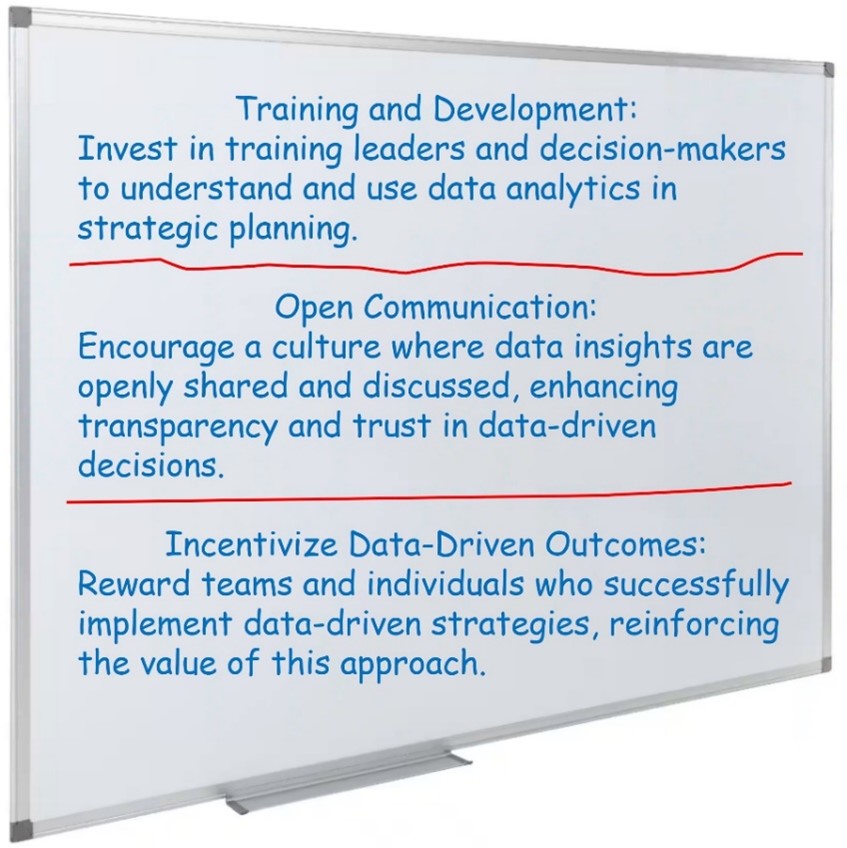
Integrating data insights into strategic planning transforms how organizations approach their future, making them more proactive, predictive, and adaptive. By utilizing robust analytical tools and methodologies, leaders can ensure that their strategic plans are grounded in real-world data and can drive significant business outcomes. This integration is about adopting new tools and transforming the strategic mindset to be continuously informed by data.
Ethical Considerations in Data-Driven Decisions
Integrating data analytics into strategic decision-making brings with it not just opportunities but significant ethical responsibilities. Organizations must navigate these ethical waters carefully to ensure their data use supports profitability and fairness, privacy, and transparency principles.
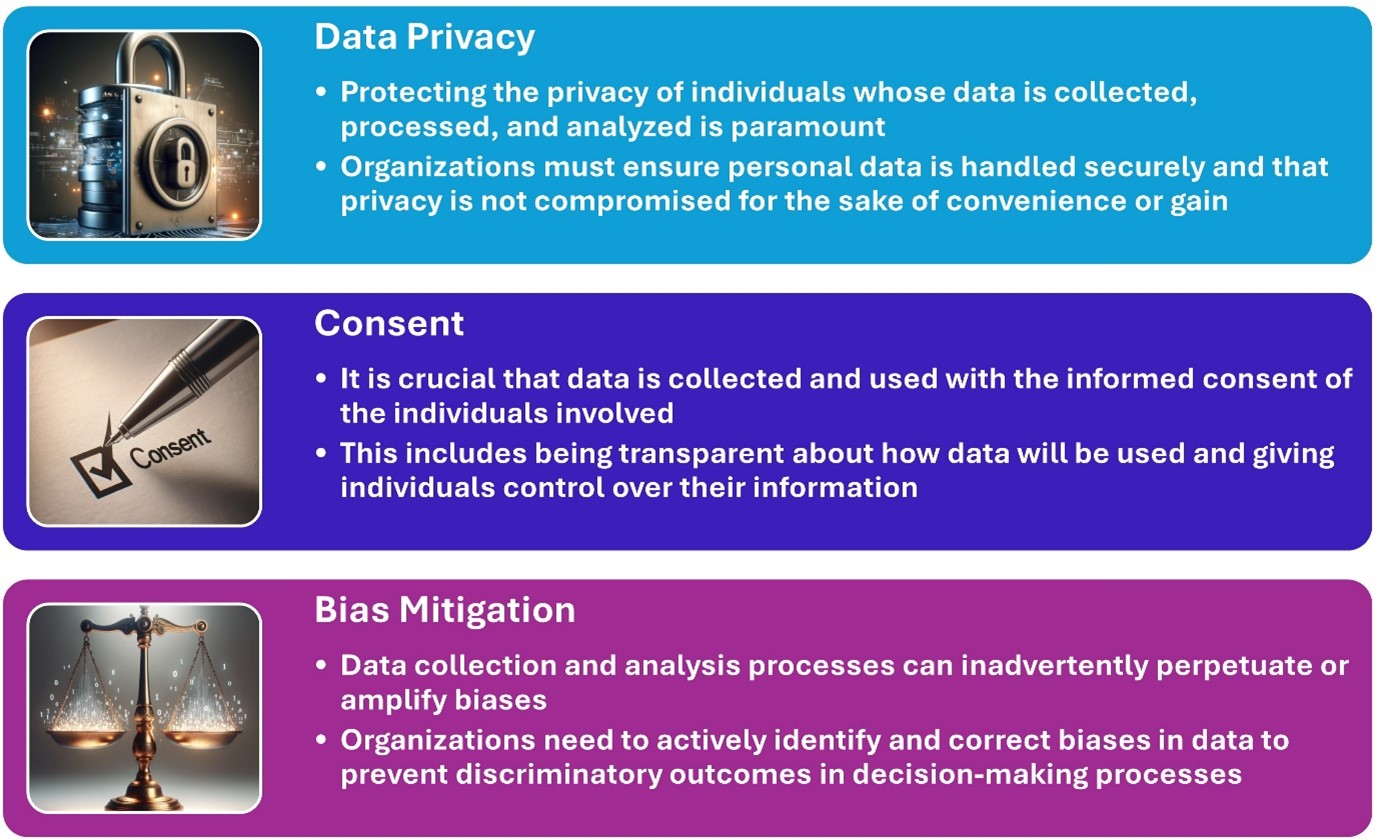
Regulations such as the General Data Protection Regulation (GDPR) in the European Union and the California Consumer Privacy Act (CCPA) in the United States have set new benchmarks for data privacy and consumer rights. These laws underscore the importance of:
• Compliance: Ensuring all data practices comply with legislation to avoid severe penalties.
• Responsibility: Companies are required to demonstrate accountability for their data practices, including how they collect, store, and use data.
To navigate these ethical challenges effectively, organizations can adopt several best practices:
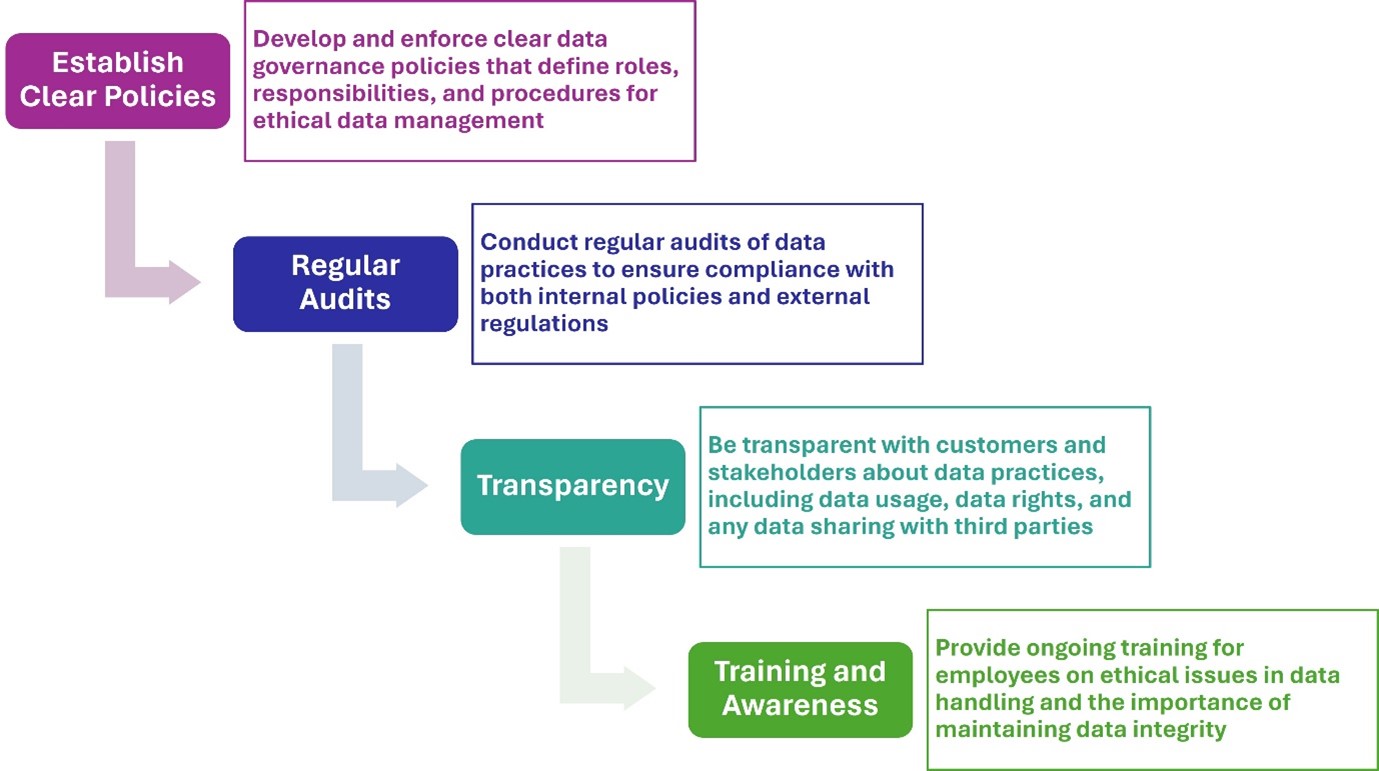
Engaging in continuous discussion and reflection is vital for ethical maturity. Organizations should encourage dialogue about moral dilemmas and case studies related to data-driven decision-making. This helps build a culture that recognizes the importance of ethical considerations and is adept at navigating complex scenarios where ethical and business interests intersect.
In an era when data is a crucial asset for strategic decision-making, it is critical that organizations not only comply with legal standards but also strive to uphold the highest ethical standards. By using ethical practices in data-driven decisions, businesses can ensure that their strategies are practical and respectful of the rights and values of individuals and society. This commitment to ethical data use builds trust with consumers and stakeholders and secures a sustainable path forward in the digital age.

Risks and Rewards in Strategic Decisions
Identifying and Assessing Risks in Strategic Initiatives
Identifying and assessing risks is crucial in the dynamic landscape of strategic initiatives. This begins with a comprehensive risk identification process involving brainstorming sessions with key stakeholders, industry research, and analysis of historical data to pinpoint potential risks. SWOT (Strengths, Weaknesses, Opportunities, Threats) analysis and PESTLE (Political, Economic, Social, Technological, Legal, Environmental) analysis can uncover hidden risks by providing broader perspectives on external factors affecting strategic decisions.
Once risks are identified, assessing their impact involves evaluating the likelihood of occurrence and potential consequences. This can be achieved through qualitative methods, such as expert judgment or scenario analysis, and quantitative methods, including statistical models and sensitivity analysis. The goal is to create a risk matrix that categorizes risks based on severity and likelihood, enabling strategic planners to prioritize risks and allocate resources effectively.
Cost-Benefit Analysis for Decision Making
Cost-benefit analysis (CBA) is a systematic approach to estimating the strengths and weaknesses of alternatives. It helps determine the best approach to achieve benefits while minimizing costs. Essential to strategic decision-making, CBA involves listing all possible costs and benefits of an initiative, both tangible and intangible, and assigning them monetary values.
The process includes discounting future benefits and costs to present value to account for the time value of money, enabling a direct comparison. The decision criterion is straightforward: the initiative is potentially viable if the total benefits outweigh the total costs. CBA not only aids in making informed decisions but also in justifying them to stakeholders by demonstrating value.
Strategies for Risk Mitigation and Management
Mitigating and managing risks is about creating a buffer against potential threats to strategic initiatives. This involves a mix of approaches tailored to the nature of identified risks:
• Diversification: Spreading investments across different assets or sectors to reduce exposure to any single risk.
• Contingency Planning: Developing plans for alternative courses of action if risks materialize, ensuring operational resilience.
• Insurance: Transferring risk to another party by insuring against significant potential losses.
Effective risk management requires continuous monitoring and review of risks and strategies, adapting to new information and changing circumstances to safeguard strategic objectives.
The Role of Risk Tolerance in Strategic Decision-Making
Risk tolerance is the degree of variability in investment returns that an organization is willing to withstand. Understanding an organization’s risk tolerance is critical because it influences strategic decisions, guiding the selection of projects and initiatives aligned with its capacity to absorb potential losses.
Aligning strategic decisions with an organization’s risk appetite ensures that pursuing opportunities does not expose the organization to undue risk, maintaining a balance between achieving strategic goals and ensuring financial stability.
Learning from Failure: Risk Management Post-Mortem
Conducting a post-mortem analysis on failed strategic initiatives offers invaluable insights for improving future risk management practices. This involves a structured review to identify what happened, why, and how similar failures can be prevented.
Learning from failure encourages a culture of transparency and continuous improvement, highlighting the importance of adaptive learning as an ongoing process. By systematically analyzing failures, organizations can enhance their strategic decision-making processes, embed risk management into the organizational culture, and turn setbacks into strategic advantages.

Exercise: Post-Mortem Probers
• Two teams of five participants each.
• To learn from past business failures by analyzing what went wrong.
• Teams select a well-known failure within the business.
• They must identify the critical mistakes as they see them and the lessons learned.
• Upon completion, they must explain their reasoning in a one-minute pitch to the other team and receive feedback.
• Encourages a culture of learning from mistakes.
• Highlights the importance of resilience and adaptability in business.

Decentralizing Decision-Making for Agility
Principles of Decentralized Decision-Making
Decentralized decision-making shifts the locus of decision authority from a central figure or group to individuals and teams closer to the action. This approach is rooted in three core principles: empowerment, autonomy, and accountability.
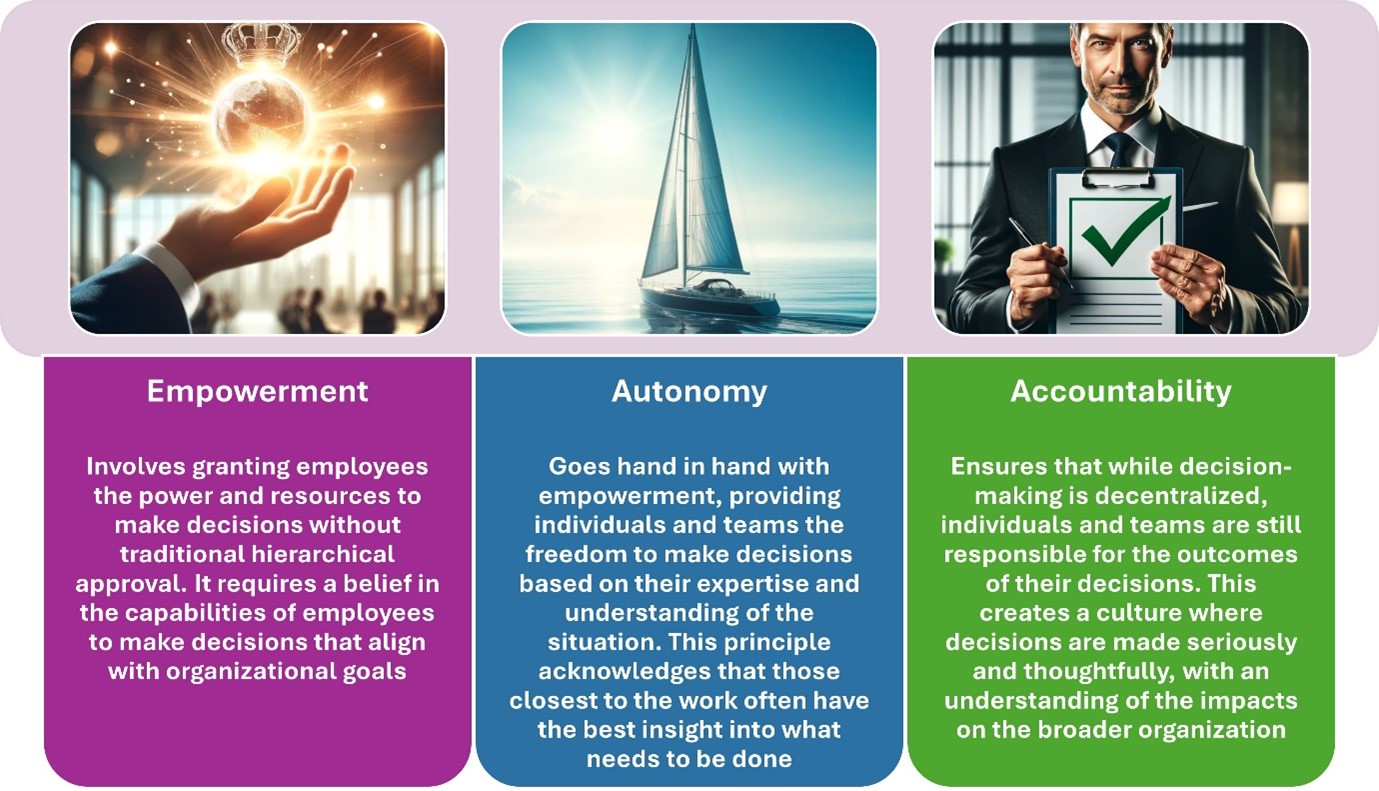
The Impact of Decentralization on Organizational Agility
Decentralizing decision-making enhances organizational agility by allowing quicker responses to market changes and unforeseen challenges. This agility stems from the ability of individuals and teams to make and implement decisions without the delay of moving up and down the hierarchy.
Organizations that embrace decentralization can adapt more rapidly to new opportunities or threats, ensuring they remain competitive in a fast-changing environment. Moreover, this agility facilitates innovation, as teams feel more empowered to experiment and pivot based on real-time feedback and conditions.
Tools and Systems Supporting Decentralized Decisions
A variety of technological tools and management systems support effective decentralized decision-making. These tools provide the necessary information and frameworks to make informed decisions quickly.

Cultivating a Culture that Supports Decentralization
Creating a corporate culture that supports decentralized decision-making focuses on trust and communication. Trust is the foundation, as leaders must believe in their employees’ ability to make decisions that align with organizational objectives. This trust is built through transparency, open communication, and a clear articulation of expectations.
Communication is equally crucial in a decentralized environment. It ensures that all team members understand the organization’s vision, goals, and the strategic framework within which they are expected to make decisions. Regular feedback loops and open channels of communication help maintain alignment and foster a culture of continuous improvement.
Challenges and Solutions in Decentralized Decision-Making
While decentralization offers numerous benefits, it also presents challenges, including maintaining alignment and coherence across the organization. Decentralized decision-making can lead to fragmentation and conflicting decisions without clear communication and a shared understanding of goals.
Solutions involve establishing a solid strategic framework and clear organizational values. These serve as a compass for decision-making, ensuring that even as decisions are made independently, they align with the broader organizational direction. Regular alignment sessions, clear communication channels, and a robust feedback mechanism can help address these challenges, ensuring that decentralization strengthens rather than weakens the organization’s coherence.


Course Manual 10: Performance Management for Strategic Alignment
Core Objective: To equip participants with comprehensive strategies and practical tools for setting, measuring, and achieving performance goals aligned with their organization’s strategic objectives, enhancing overall performance and strategic alignment.

Setting Strategic Performance Goals
Understanding Strategic Objectives
Strategic objectives form the foundation of an organization’s vision and mission, guiding its direction and decision-making processes. Aligning performance goals with these objectives is critical for ensuring that every effort contributes to the overarching vision. To fully comprehend strategic objectives, individuals must delve into the organization’s mission statement, long-term vision, and strategies for achieving these aspirations. This understanding helps formulate performance goals that are not only ambitious but also directly contribute to the broader organizational goals. By interpreting the strategic vision accurately, employees can set goals that resonate with the company’s future direction, ensuring a cohesive effort toward common milestones. Engaging in regular communication with leadership and participating in strategic planning sessions whenever possible is vital, as this fosters a deeper understanding of the strategic objectives and how individual roles play into the larger picture.
Integrating Goals Across Departments
Achieving strategic alignment requires that performance goals across all departments are integrated and mutually supportive, fostering a synergistic approach to achieving the company’s objectives. This integration necessitates robust communication channels and a shared understanding of the organization’s strategic vision. Departments should collaborate in setting goals, ensuring that their objectives complement and support each other. For example, the marketing department’s goal to increase brand awareness should align with sales objectives to convert increased awareness into sales. Regular cross-departmental meetings and integrated planning sessions facilitate this cohesion, allowing departments to understand how their goals fit into the larger strategic picture and adjust their objectives in harmony.
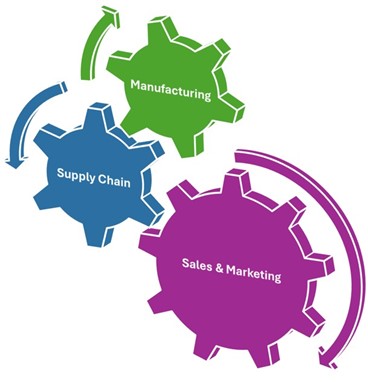
Benchmarking and Goal Setting
Benchmarking involves comparing your organization’s performance against industry standards or leading competitors to identify areas of improvement and to set performance goals that are both ambitious and achievable. This process starts with selecting relevant benchmarks, such as key performance indicators (KPIs), that closely align with your strategic objectives. By analyzing these benchmarks, organizations can set realistic goals that challenge the status quo and push for higher performance. For instance, if benchmarking reveals a gap in customer satisfaction scores compared to industry leaders, a specific goal might involve improving these scores by a certain percentage over a fixed period. This approach ensures that goals are not set in isolation but are informed by the competitive landscape and industry standards, driving efforts toward excellence and strategic alignment.
Feedback Loops and Goal Adjustment
The dynamic nature of business means that strategic objectives and the external environment can shift, necessitating adjustments to performance goals. Feedback loops are crucial for identifying when such adjustments are needed. These loops involve regularly collecting and analyzing data on goal progress and the current market conditions, followed by feedback sessions where this information is discussed. Effective feedback loops are characterized by open communication, where team members feel encouraged to share insights and where there is a willingness to adapt goals in response to new information. This process ensures that goals remain relevant and aligned with the strategic vision, even as circumstances change. Continuous refinement of goals, informed by robust feedback, ensures that the organization remains agile and aligned with its strategic objectives, enhancing its ability to achieve long-term success.

Performance Measurement and Feedback
Key Performance Indicators (KPIs) for Strategic Goals
KPIs are quantifiable measures used to evaluate the success of an organization, employee, or process in achieving key objectives. For strategic alignment, KPIs must be directly linked to the organization’s strategic goals. Start by defining strategic goals clearly and identify the critical success factors associated with these goals. KPIs should be SMART. Examples of strategic KPIs include revenue growth rate, customer loyalty metrics, and operational efficiency ratios.
To monitor these indicators effectively, organizations can use dashboards that provide real-time data visualization, enabling quick identification of trends and anomalies. Regular reviews of these KPIs are essential, involving all stakeholders to ensure collective responsibility for strategic goals. Emphasize the iterative nature of KPI selection and adjustment as strategies evolve and market conditions change.
Effective Performance Feedback Systems
Constructive performance feedback is vital for maintaining strategic alignment. It involves a systematic approach where timely feedback is regularly tied to specific performance metrics. Digital platforms can facilitate continuous feedback, offering features like goal tracking, peer reviews, and instant recognition. However, the effectiveness of these systems hinges on their integration with the organization’s strategic objectives and the overall performance management process.
Regular review meetings are another pillar of effective feedback systems. These meetings should focus on discussing achievements, challenges, and areas for improvement concerning strategic goals. Encourage a culture of openness, where feedback is seen as a tool for growth rather than a punitive measure.
Aligning Feedback with Development Goals
Feedback should assess current performance and guide employees toward their development goals, aligning with the organization’s strategic vision. This requires a personalized approach, where managers work with employees to set short-term and long-term development objectives.
The alignment involves identifying skills and knowledge gaps and providing the resources or training needed to bridge these gaps. Highlight the importance of flexibility, as development goals may evolve with changing strategic priorities or the employee’s personal growth. This approach ensures constructive feedback, focusing on future development rather than past performance.
Data-Driven Decision Making
Leveraging performance data for decision-making ensures that strategic actions are grounded in reality. Illustrate the process of gathering, analyzing, and interpreting performance data to inform decision-making. This includes real-time tactics adjustments in response to performance trends and strategic planning for future goals.
Emphasize the role of technology in facilitating data-driven decisions, such as analytics tools that can process large volumes of data to reveal insights. The key is to balance data-driven decisions and the intuitive judgment of experienced leaders, ensuring that decisions are both informed and adaptable to the complex dynamics of business environments.
Cultural Considerations in Performance Feedback
Cultural factors can significantly influence the effectiveness of performance feedback. It’s essential to recognize and respect the diverse cultural backgrounds of employees when delivering feedback. This includes understanding different communication styles, values, and expectations around authority and autonomy.
Offer strategies for delivering feedback in a culturally sensitive manner, such as using clear, direct language while being mindful of tone and body language. Encourage managers to seek an understanding of each employee’s cultural background and preferences when receiving feedback. This approach fosters a positive feedback culture where employees feel valued and understood, promoting engagement and performance aligned with strategic objectives.

Aligning Incentives with Strategic Goals
Designing Effective Incentive Programs
Before designing an incentive program, it’s crucial to understand the organization’s strategic goals clearly. These goals may range from increasing market share and enhancing customer satisfaction to fostering innovation. The incentive program should directly support these objectives. The following are the steps in designing effective incentive programs:
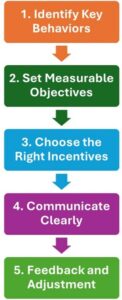
1. Identify Key Behaviors: Determine the behaviors that will drive success toward achieving strategic goals. For example, if the goal is to improve customer service, key behaviors include reducing response times and increasing customer satisfaction scores.
2. Set Measurable Objectives: For incentives to be effective, they must be tied to specific, measurable objectives. If the strategic goal is to increase sales, an objective might be a particular percentage increase in sales volume or revenue within a specified time frame.
3. Choose the Right Incentives: Not all incentives are financial. While bonuses and pay raises can sometimes be effective, non-monetary incentives like recognition programs, career development opportunities, and flexible working conditions can often boost motivation over a longer period.
4. Communicate Clearly: Ensure all employees understand how the incentive program works and its connection to the organization’s strategic goals. Clear communication prevents misunderstandings and aligns all team members toward the same objectives.
5. Feedback and Adjustment: Implement a system for regular feedback and adjust the program as necessary. This helps maintain the program’s relevance and effectiveness in relation to changing organizational goals or market conditions.
Before rolling out the incentive program across the organization, consider conducting a pilot test with a small group. This helps identify any potential issues and make adjustments before full implementation. Once implemented, the program’s effectiveness should be continuously monitored through regular evaluations and adjustments based on employee feedback and changes in strategic goals. Finally, employees who meet their objectives under the incentive program should be publicly recognized and rewarded. This motivates the individual recipient and sets a benchmark for other employees.

Case Study
Salesforce, renowned for its customer relationship management (CRM) solutions, recognized the need to shift focus from mere sales volume to building lasting customer relationships. This insight led to redesigning its incentive programs to emphasize customer success as a critical metric for employee rewards.
Salesforce integrated customer success metrics into their incentive structures. Instead of purely quantifying success through sales volume, they considered metrics such as customer retention rates, customer satisfaction scores, and usage statistics of Salesforce products. Employees were trained to focus on understanding customer needs and providing solutions that contribute to the customer’s long-term success. This included extensive training on Salesforce products and the development of soft skills to enhance customer interactions. Robust feedback systems were put in place to gather customer feedback continuously. This feedback was used to inform both product development and customer service strategies. The outcomes were:
• Increased Customer Lifetime Value: By focusing on the long-term success of their customers, Salesforce was able to increase the lifetime value of customers, as satisfied customers were more likely to renew their contracts and expand their use of Salesforce products.
• Enhanced Customer Satisfaction: Quantifiable data collected from regular customer surveys before and after implementing the new incentive program indicated a significant improvement in how customers rated their satisfaction with Salesforce’s services. The shift to customer-centric incentives led to a 20% improvement in customer satisfaction scores, demonstrating a direct correlation between the incentive program and customer perceptions.
• Employee Engagement: Employees felt more engaged and aligned with organizational goals, knowing that their efforts contributed meaningfully to customer success and were not just aimed at achieving sales targets.
Ethical Considerations in Incentive Design
Incentive programs must be designed and implemented ethically, promoting fairness, transparency, and inclusivity while avoiding potential biases. For example:
• Fairness and Equity: Ensure that incentive programs are accessible to all eligible employees and that the criteria for earning incentives are clear, measurable, and applied consistently. Avoid creating systems disproportionately favoring particular groups over others based on non-performance-related factors.
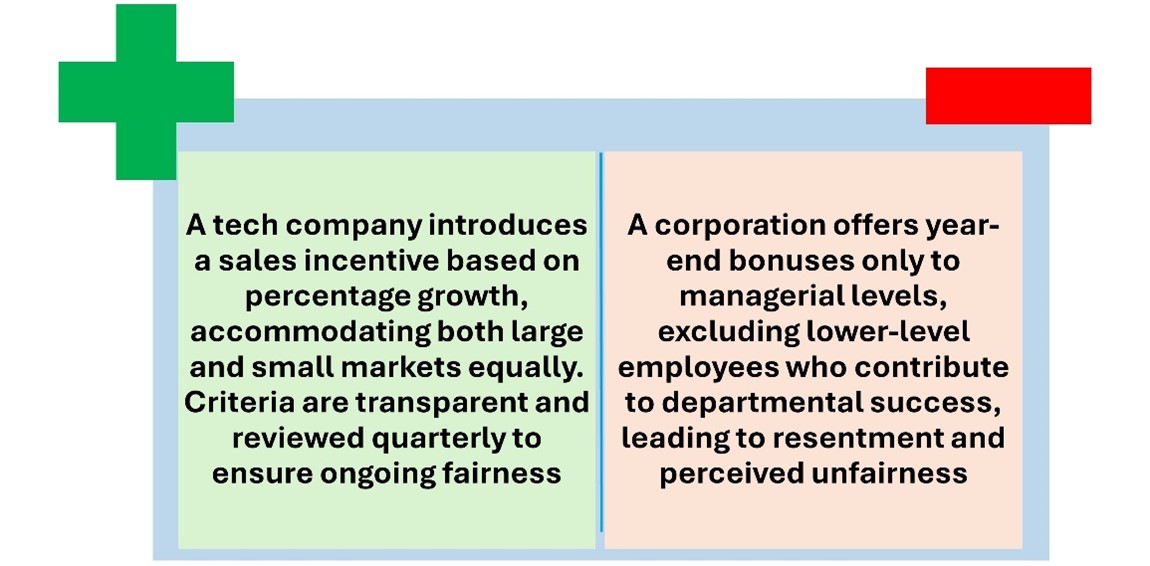
• Transparency: Maintain openness about how incentive programs are structured, how performance is measured, and how decisions regarding incentive awards are made. This transparency helps build trust and buy-in from all stakeholders.
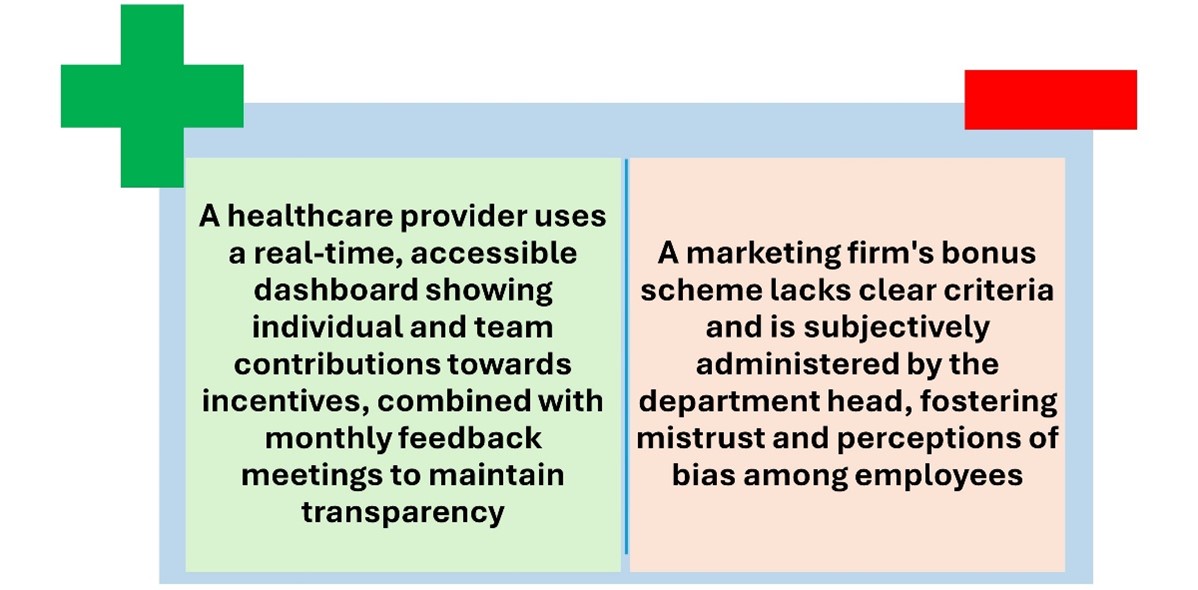
• Avoiding Negative Competition: Design incentives that encourage collaboration and teamwork rather than fostering unhealthy competition or cutthroat behaviors that could harm the organizational culture or employee relationships.
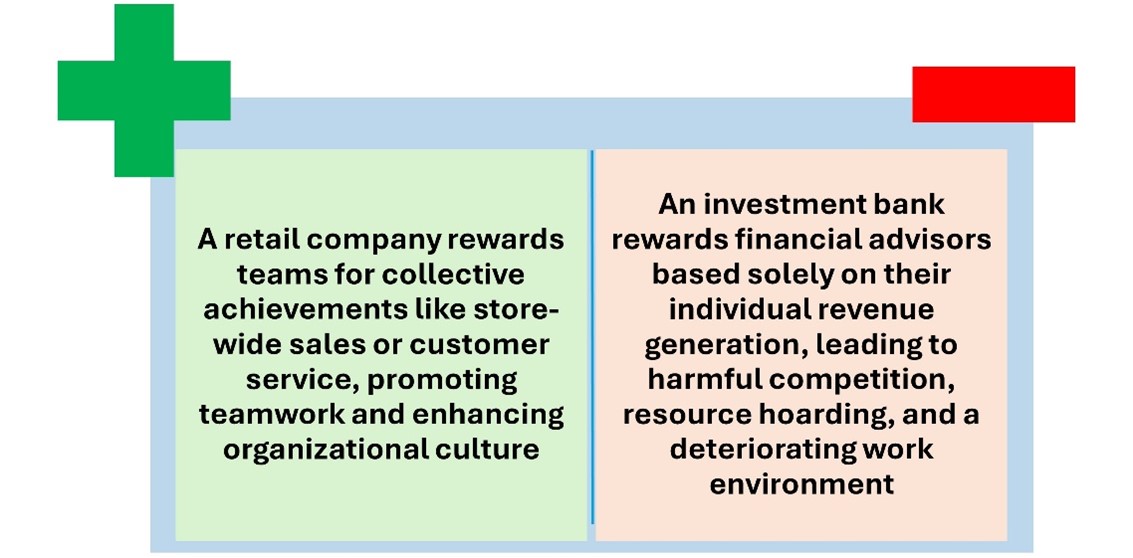

Case Study
The World Wildlife Fund, an organization dedicated to environmental conservation, aimed to enhance its conservation projects’ effectiveness and ethical impact worldwide. Recognizing the need to promote ethical behavior and transparency, WWF redesigned its incentive structures for project teams.
Incentives were linked to adherence to strict ethical standards and the transparency of project reporting. This included regular audits, public disclosures of project results, and the integration of local community feedback into project planning and execution. WWF introduced incentives for teams that successfully engaged local communities in conservation projects. These incentives were based on measurable outcomes such as community satisfaction surveys and the number of local volunteers participating in the projects. Finally, project success was redefined to include both environmental impact and community support, with clear metrics established for each dimension. This holistic approach ensured that incentives were balanced between achieving conservation goals and fostering community trust and cooperation. The result?
• Increased Project Success Rates: By integrating ethical considerations into project management, WWF saw a 35% increase in project success rates, measured by achieving predefined environmental and community engagement targets.
• Strengthened Community Support: The focus on transparency and community involvement led to enhanced support from local communities, which is crucial for the long-term sustainability of conservation efforts.
Personalization of Incentives
Personalizing incentive programs involves tailoring them to match individual employees’ unique motivations, roles, and preferences, thus enhancing their relevance and effectiveness. This personalization strategy starts by understanding what motivates different employees through methods such as surveys, interviews, and analyzing performance data. By gaining these insights, organizations can create a personalized portfolio of incentives that directly cater to their workforce’s diverse needs and desires.
Incentives can also be customized based on the specific responsibilities and goals of different roles within the company. For example, sales positions benefit most from commission-based incentives that directly reward achieving sales targets. In contrast, employees in creative roles are more motivated by recognition and opportunities for professional development. These role-based incentives ensure that each employee feels that their unique contributions are valued and that the incentives are directly relevant to their day-to-day activities.
Furthermore, offering choice and flexibility in incentives is crucial. By allowing employees to select from a menu of incentive options, organizations can cater to personal preferences and professional goals, ensuring that the motivational value of incentives remains high over time. This approach not only boosts individual performance but also enhances overall job satisfaction and loyalty to the company. Organizations can more effectively motivate their employees and align individual efforts with broader strategic goals through personalized and well-structured incentive programs.

Exercise: The Motivation Matrix
• The entire group.
• To explore and identify what motivates different individuals within the context of strategic goals.
• Draw a large grid on a whiteboard.
• Participants place their names in columns under factors that motivate them (e.g., recognition, monetary reward, professional development).
• Discuss how these align with the strategic goals of the business.
• Participants will gain a personalized understanding of incentives, which will encourage them to consider how diverse motivational needs can be strategically aligned to enhance performance.
Measurement and Evaluation of Incentive Impact
The objective of measuring and evaluating incentive programs’ impact is to assess their effectiveness in promoting strategic alignment and enhancing performance through qualitative and quantitative measures. This comprehensive evaluation helps ensure that incentive programs successfully motivate employees and contribute to organizational goals.
To achieve this, organizations develop clear performance metrics that can quantifiably measure incentives’ impact on individual and team performance levels. These metrics may include sales figures, customer satisfaction scores, project completion rates, and other relevant indicators that reflect progress toward strategic goals. This quantitative approach provides a solid foundation for understanding the direct outcomes of incentive initiatives.
In addition to hard metrics, gathering qualitative feedback from employees is crucial. This feedback helps gauge the perceived value and effectiveness of the incentive programs. Employing methods such as surveys, focus groups, and one-on-one interviews can uncover deep insights into how incentives influence employee behavior and motivation. This qualitative data is invaluable for understanding the human elements of incentive impact, such as employee satisfaction and motivation levels.
Furthermore, conducting a Return on Investment (ROI) analysis is critical to evaluating the economic efficiency of incentive programs. This involves calculating the ROI by comparing the costs associated with implementing and maintaining these programs against the benefits they generate, such as increased productivity, higher sales, or improved quality of work. An ROI analysis provides a clear financial perspective on the value that incentive programs bring to an organization, helping leaders make informed decisions about future investments in such schemes.
Together, these methodologies offer a robust framework for assessing the effectiveness of incentive programs, ensuring that they motivate employees and drive significant contributions to the organization’s strategic objectives.

Exercise: The Quick Pitch Challenge
• Two teams of five.
• To articulate the benefits of an incentive program and its strategic alignment.
• Both teams prepare a hypothetical incentive program for the business.
• Both teams prepare a quick pitch on why their assigned incentive program is effective and how it aligns with strategic goals.
• Each team presents their pitch to the other team.
• Discussion follows, with each team critiquing the other’s pitch (pointing out the merits and challenging where appropriate).
• Participants must think critically and creatively about the role of incentives.
• Participants get exposure to the importance of alignment and communication in incentive programs.

Continuous Improvement for Strategic Performance
Principles of Continuous Improvement
Continuous improvement, deeply rooted in the Kaizen philosophy, is a principle that emphasizes the power of small, incremental changes leading to significant enhancements over time. This approach engages all members of an organization, from top management to frontline employees, and spans all aspects of business operations. Here are the key components of continuous improvement:
• Incremental Change: Small, achievable improvements compound over time, offering a less disruptive path to significant enhancements without radical changes.
• Employee Empowerment: Empowering employees to suggest and participate in improvements fosters ownership and accountability.
• Customer Focus: Continually adapting based on customer feedback ensures alignment with customer needs and expectations.
• Process-Oriented Thinking: Focusing on processes rather than outcomes helps identify inefficiencies and set clear targets for enhancement.
• Standardization: Documenting and adhering to best practices ensures consistency and quality, providing a foundation for further improvements.
Leveraging Technology for Improvement
Technology significantly enhances the capability of organizations to implement continuous improvement by streamlining and sophisticating various operational aspects. Automation of data collection reduces human error and frees up resources for strategic analysis. Performance dashboards offer a real-time, at-a-glance view of critical metrics, making it easier to spot trends and areas needing attention swiftly. Collaboration tools break down silos and facilitate smoother interaction across departments and hierarchies, ensuring that ideas and feedback flow freely and efficiently. Process simulation software provides a risk-free environment to test potential changes, minimizing the costs and disruptions of physical trials. Furthermore, e-learning platforms deliver personalized, flexible learning experiences, enabling employees to continually develop skills for driving improvement initiatives.
Employee Engagement in Continuous Improvement
Employee engagement is fundamental to nurturing a culture of continuous improvement. Organizations can harness ground-level insights and innovations by actively involving employees in decision-making. Recognizing and rewarding contributions reinforces positive behaviors and motivates all team members to strive for excellence. Continuous learning opportunities equip employees with the latest tools and techniques, keeping the workforce agile and responsive. Open communication ensures transparency and builds trust while empowering employees to implement changes, cultivating a proactive attitude that can lead to significant operational enhancements.
Learning from Setbacks
Learning from setbacks is an indispensable part of the continuous improvement journey. Adopting a growth mindset helps to normalize setbacks as opportunities for learning rather than failures to be avoided. Organizations can develop strategies to prevent future issues by systematically analyzing where things go wrong. Openly sharing these lessons puts valuable insights into the hands of all employees, enhancing collective knowledge and readiness. Using these experiences as feedback catalyzes ongoing adaptation and refinement of strategies.
Sustaining Improvements Over Time
For the long-term sustainability of improvements, monitoring the outcomes of implemented changes is crucial. Regularly updating benchmarks and standards reflects raised expectations and aligns with enhanced performance levels. Reinforcing changes through ongoing training, clear documentation, and consistent communication helps solidify new practices. Integrating continuous improvement processes into the everyday fabric of the organization ensures that these efforts become routine and embedded, leading to a performance-oriented, resilient, and adaptable organizational culture. This holistic approach elevates operational performance and secures a competitive edge in an ever-evolving business landscape.


Course Manual 11: Technology and Strategic Alignment
Core Objective: To develop mastery in aligning technology initiatives with broader business strategies, ensuring that technological investments contribute directly to organizational goals and competitive advantage.

Leveraging Technology for Strategic Advantage
Identifying Strategic Technologies
In the rapidly evolving technological landscape, identifying strategic technologies is paramount for organizations aiming to maintain a competitive edge. This process begins with a comprehensive analysis of current and emerging technologies relevant to the organization’s industry. Key considerations should include the technology’s potential to disrupt or enhance existing business models, its scalability to meet future demands, and the expected return on investment (ROI).
As previously discussed, organizations can use frameworks like SWOT analysis to systematically evaluate technologies, focusing on leveraging strengths and mitigating weaknesses. Assessing how the technology aligns with strategic goals is vital, particularly in enhancing operational efficiencies, improving customer experiences, and contributing to revenue growth. Organizations should continuously monitor new technological developments, engage with experts, attend industry events, and participate in tech-focused consortiums for insights into emerging technologies to stay ahead.
Case Studies of Successful Implementation
Highlighting successful technology implementation case studies helps learners grasp how technology can be strategically leveraged for business advantage. These case studies outline the organization’s initial state, strategic technology decisions, implementation process, and outcomes.
The focus should be on decision-making, detailing how technologies were assessed against strategic goals, the selection criteria, and challenges faced during implementation. The outcomes discussed include direct benefits like increased efficiency and revenue and indirect benefits such as improved employee satisfaction and enhanced brand reputation. Analyzing relevant case studies teaches effective alignment of technology strategy, risk management, and the critical role of stakeholder engagement.

Exercise: Tech Time Travel
• Two groups of five.
• To explore and predict future technological trends and their potential impact on industries.
• Each group imagines they have traveled five years into the future and determines what the technological landscape of their industry looks like.
• They describe this technological landscape to the other group, focusing on one or two dominant vital technologies.
• The description must include how these technologies impact business operations and customer interactions.
• After sharing their vision, the other group provides a critique based on feasibility and strategic alignment.
• Participants practice forecasting and strategic thinking.
• Participants engage in creative and critical thinking.
• The exercise encourages a deeper understanding of aligning technology with business strategy.
Balancing Innovation with Practicality
Innovation is essential for maintaining a competitive edge in the fast-paced digital era. However, balancing this with practicality is crucial to ensure that new technologies effectively contribute to business operations. A delicate balance exists between embracing cutting-edge technologies and ensuring their practical applications within a business setting.
Organizations must carefully evaluate their infrastructure readiness, cultural adaptability, and existing processes to integrate new technological solutions. A realistic approach to deploying new technologies involves conducting small-scale pilot projects. These pilots serve as a testing ground to gauge the technology’s impact and feasibility, providing a low-risk environment to assess potential benefits and challenges before committing to a full-scale rollout. This method is particularly effective in mitigating the risks associated with investing heavily in technologies that may not yield the expected return.
It’s also critical to cultivate an organizational culture that supports innovation. This means encouraging employees to engage with new technologies and equipping them with the skills to critically evaluate how these technologies can be practically applied in their work. Such a culture promotes innovation and practicality, making technological advancements pioneering and applicable.
Furthermore, when considering the adoption of new technologies, organizations should thoroughly analyze the total cost of ownership (TCO). This includes all costs associated with acquiring, implementing, and maintaining the technology, weighed against the anticipated benefits. This financial assessment helps ensure that investments in new technology are innovative and economically prudent, supporting long-term business growth and stability.
By maintaining this balance, organizations can harness the power of new technologies to drive innovation while ensuring that these advancements deliver tangible benefits and align with the company’s strategic goals.

Exercise: Practical Innovators
• Five pairs.
• To balance the innovative potential of a technology with its practical application in the current business model of the participant’s business.
• Each pair picks a cutting-edge technology and agrees on how it can be practically applied in their workplace.
• They then share their ideas with the group, receiving feedback on practical and innovative aspects.
• Participants learn to think innovatively while considering practical constraints.
• Builds a deeper understanding of practical implementation challenges.
• Promotes the sharing of technological ideas and feedback among peers.
Developing a Technology Roadmap
Developing a technology roadmap is a crucial strategic planning exercise that aligns an organization’s technological progress with its long-term objectives. This essential tool ensures that every technology initiative is deliberate and contributes to the overarching business goals, promoting a unified approach to technology adoption across the company.
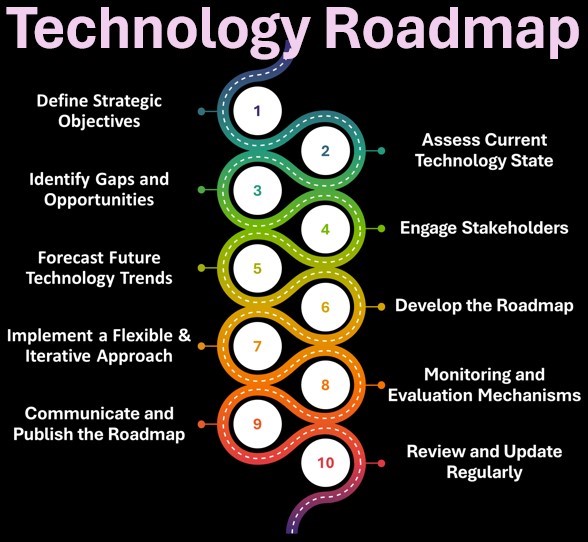
The process begins by setting clear, achievable objectives that the technology will support, requiring a deep understanding of the organization’s current and future technological needs. The roadmap must be detailed yet adaptable, recognizing the rapid and unpredictable changes in technology landscapes. This adaptability enables the organization to embrace new technologies or shift business priorities while focusing on strategic targets.
The roadmap outlines a well-structured timeline for adopting new technologies, identifying key milestones that signal significant progress. These milestones are crucial for evaluating the effectiveness of technology implementations and keeping the organization on track toward achieving its goals. Assigning clear responsibilities for each implementation phase is also essential, specifying who will lead and manage each technological advance. This clarity fosters smooth execution and accountability.
Involving stakeholders from various departments in the development process is critical. This inclusion promotes interdepartmental alignment and support, ensuring the technological changes are comprehensible and endorsed throughout the organization. Early and frequent stakeholder engagement leverages diverse insights and expertise, boosting the roadmap’s relevance and feasibility.
The technology roadmap is a vital communication tool, not just a strategic guide. It outlines the planned technological directions to all stakeholders and explains the expected impacts on different organizational aspects. This transparency helps manage expectations and cultivates a shared commitment to the organization’s technological future.
The success of a technology roadmap depends on its ability to be strategic and flexible. This ensures that technology investments are purposeful and contribute directly to the organization’s continuous growth and success.
To measure the impact of these technological investments, it’s essential to assess how they help achieve strategic objectives. Practical evaluation includes defining key performance indicators (KPIs) and metrics that align with the organization’s goals. These include quantitative metrics like improved operational efficiency, cost savings, increased revenue, and customer satisfaction or qualitative measures like enhanced employee productivity, innovation capacity, and market positioning.
Regular monitoring of these metrics offers insights into the value of technological investments, empowering organizations to make informed decisions regarding future technology strategies. This ongoing evaluation encourages continuous improvement, optimizing technology usage to maximize strategic benefits.
Measuring the Impact of Technological Investments
Assessing the impact of technological investments is critical to understanding their contribution to achieving strategic objectives. Quantitative measures include improved operational efficiency, cost savings, increased revenue, and customer satisfaction. Qualitative measures encompass employee productivity, innovation capacity, and market positioning.
Regularly monitoring these metrics provides insights into the value of technological investments, enabling organizations to make informed decisions about future technology strategies. It also facilitates continuous improvement, allowing for the optimization of technology use to maximize strategic advantages.

Digital Transformation and Strategic Alignment
Foundations of Digital Transformation
Digital transformation integrates digital technology into all business areas, fundamentally changing how it operates and delivers value to customers. It’s not just about adopting new technology; it’s about reshaping organizations to be more agile, innovative, and customer-focused. The significance of digital transformation in strategic alignment lies in its capacity to bridge the gap between current operational practices and the digital-first expectations of the modern marketplace. This transformation enables businesses to better respond to changing customer demands, enhance operational efficiency, and foster innovation. By integrating digital technology into core business strategies, companies can achieve a competitive advantage, adapt to the digital era, and ensure long-term sustainability.
Aligning Digital Strategy with Business Objectives
Aligning digital strategies with overarching business objectives is crucial for successfully implementing digital initiatives. This alignment ensures that digital efforts directly contribute to realizing business goals rather than existing as isolated or misaligned projects. Organizations can employ alignment frameworks such as the Balanced Scorecard or the Objectives and Key Results (OKR) framework, translating strategic objectives into actionable digital projects. This process involves identifying key performance indicators (KPIs) that reflect digital and business objectives, ensuring that every digital initiative has a clear, measurable impact on the organization’s strategic goals. By doing so, companies can ensure their digital transformation efforts are technologically advanced and strategically relevant.
Overcoming Resistance to Digital Change
Resistance to change is a common challenge in digital transformation efforts. To overcome this, organizations must develop comprehensive change management and communication strategies. These strategies should address the concerns and fears of employees and stakeholders by clearly explaining the benefits of digital transformation, both for the organization and individuals. Engaging employees in the transformation process through training programs, workshops, and feedback sessions can also help mitigate resistance. It’s important to highlight how digital tools and methods will enhance their work, improve efficiency, and open up new opportunities for professional growth. By actively involving employees in the digital transformation journey, organizations can foster a culture of innovation and collaboration, making the transition smoother and more effective.

Case Study
General Electric embarked on a sweeping digital transformation initiative to integrate advanced digital tools across its manufacturing processes. The “GE Digital” initiative leveraged the Internet of Things (IoT) and big data analytics to optimize operations and increase productivity. However, the transition faced significant resistance from various organizational levels, ranging from skepticism about the practical utility of such tools to concerns over employee job security.
To address these challenges, GE implemented a comprehensive change management strategy. This strategy included widespread employee training programs tailored to various job functions. The training was designed to familiarize employees with new digital tools and help them understand their role in their daily tasks and the overall benefits for the organization.
Additionally, GE focused on transparent and consistent communication to demonstrate the tangible benefits of digital transformation. They showcased early successes through internal case studies and presentations that detailed the efficiency gains achieved from pilot projects. This approach helped to build trust and reduce fears about the new digital direction.
The digital transformation initiative led to a substantial increase in efficiency across GE’s manufacturing plants. By adopting digital tools like predictive maintenance systems, real-time data monitoring, and automated inventory management, the company achieved a 25% improvement in manufacturing efficiency. These tools enabled GE to reduce downtime, optimize production schedules, and manage supply chains more effectively, directly contributing to lower operational costs and improved product quality.
By addressing resistance through strategic training, clear communication, and the demonstration of tangible benefits, GE was able to enhance its operational efficiencies and advance a culture that embraces continuous innovation and digital advancement. This case study serves as a compelling example for other organizations facing similar resistance to digital change, showing that significant operational improvements are achievable with the right approach.
Evaluating Digital Transformation Success
Evaluating the success of digital transformation efforts is critical to ensuring strategic alignment and realizing business objectives. This evaluation should include qualitative and quantitative measures, such as improvements in customer satisfaction, operational efficiency, and innovation, as well as specific metrics, such as digital sales growth, website traffic, and digital engagement levels. Establishing benchmarks and performance indicators before initiating digital projects allows organizations to measure progress and impact accurately. Regularly assessing these metrics ensures that digital initiatives remain aligned with strategic goals and provides insights for continuous improvement. Success in digital transformation is about achieving short-term goals and fostering a sustainable, digitally integrated business model that can adapt and thrive in a rapidly evolving digital landscape.

Exercise: Digital Transformation Role Play
• Two teams of five.
• To understand the roles and perspectives involved in digital transformation.
• One team acts as the company’s management pushing for digital transformation, the other as skeptical employees.
• They have a structured debate on the pros and cons, ending with a vote on whether to proceed with a proposed digital initiative.
• Enhances empathy and understanding of different organizational perspectives.
• Encourages articulation of business and technology alignment strategies.
• Participants gain insight into overcoming resistance to change.

Technology Integration and Operational Efficiency
Assessing Operational Processes for Technological Integration
To effectively integrate technology and enhance operational efficiency, it’s essential to undertake a thorough assessment of current operational processes. This starts by meticulously documenting all existing workflows, task dependencies, and resource allocations using process mapping tools. These visual aids are crucial for pinpointing bottlenecks and inefficiencies. The next step involves analyzing these maps to identify where technology—like automation or data analytics—can significantly boost productivity, particularly in repetitive, data-heavy tasks or those prone to errors.

Once potential integration points are recognized, evaluating suitable technological solutions becomes critical. This evaluation should consider factors such as system compatibility, scalability, cost-effectiveness, and ease of use, always keeping future needs in mind. Engaging stakeholders from various departments early in the process ensures their valuable insights help shape the practical implementation of technology, addressing potential resistance and operational challenges.
Streamlining Processes through Automation
Automation is pivotal in streamlining processes by handling repetitive, manual tasks and freeing staff to focus on more strategic objectives. Identifying which processes are suitable for automation is critical. These are typically repetitive, rule-based tasks with high error rates, such as data entry and customer support operations.

Selecting the right automation tools is crucial, with choices ranging from simple scripts to sophisticated AI-driven platforms, depending on the task’s complexity and volume. Implementing automation should follow a phased approach, starting with pilot tests to refine the process before full-scale deployment, complemented by comprehensive staff training and robust monitoring systems to evaluate the automated processes’ performance.
Ensuring Data Integrity and Security in Integration
Incorporating new technologies also demands a strong emphasis on maintaining data integrity and security. Protective measures include encrypting data stored and in transit, enforcing strict access controls, and conducting regular security audits. Continuous employee training on data security best practices and threat awareness bolsters these efforts to prevent breaches and ensure data reliability.

Achieving Interoperability Between Systems
Achieving interoperability between different organizational and technological systems is crucial for seamless operations. This involves adopting standardized protocols and utilizing APIs and middleware to enable smooth communication and functionality sharing between disparate systems while avoiding extensive system overhauls. Rigorous testing and validation processes ensure these integrations work seamlessly without introducing new issues.

Continuous Improvement and Technology Upgrades
Lastly, the rapid evolution of technology necessitates continuous monitoring and regular updates to ensure systems remain effective and aligned with operational needs. Establishing metrics to measure the impact of technological solutions on efficiency, satisfaction, and return on investment helps evaluate their effectiveness.

Staying updated on industry trends and technological advancements through conferences and professional networks, alongside developing flexible strategies for incremental technology upgrades, minimizes disruptions and spreads out costs. Incorporating feedback mechanisms from users and stakeholders is vital, ensuring that technological solutions adapt to the changing needs of the organization and its clientele, thereby sustaining long-term operational efficiency and strategic performance.

Managing Technological Change
Planning for Technological Change
When managing technological change, starting with foresight and strategic planning in today’s fast-paced technological environment is imperative. A well-thought-out introduction to planning involves emphasizing the significant effect that anticipating technological trends can have on an organization’s operational capabilities and strategic direction.
The planning phase should begin with a thorough assessment of the current technologies being utilized within the organization and their alignment with strategic goals, including an evaluation of hardware, software, processes, and human skills. Following this, methods for forecasting future technology trends should be introduced, utilizing expert consultations, trend analysis, and industry reports to differentiate between ephemeral trends and those likely to have a lasting impact.
A gap analysis is crucial to identifying discrepancies between current and future needs and assessing the technological capabilities necessary to achieve strategic objectives. This leads to developing a detailed action plan encompassing technology acquisition, timelines, resource allocation, risk management, and contingency planning. Using real-world examples of companies that successfully anticipated technological shifts can encourage critical thinking about potential technological changes in participants’ own industries.
Communicating Change Effectively
Communicating technological change effectively hinges on developing a robust communication strategy. This involves identifying all stakeholders affected by the change, crafting clear and compelling messages that articulate the benefits and rationale, exploring various communication channels, and establishing feedback mechanisms to adjust strategies based on stakeholder reactions. Interactive discussions and role-playing exercises help craft and deliver these messages effectively.
Training and Support Systems
Training and supporting employees through the transition is fundamental. This involves conducting a needs assessment to identify required skills and knowledge, developing customized training solutions that cater to different learning styles and job functions, and providing ongoing support through help desks and mentoring programs. Sharing innovative training approaches like gamification and virtual reality simulations can foster engaging discussions on training challenges in a rapidly evolving technological landscape.
Monitoring and Evaluating Change Impact
Monitoring and evaluating the impact of technological changes is critical for ensuring that the organization remains aligned with its strategic and operational goals. This phase should focus on identifying relevant KPIs, discussing data collection and analysis methods, and reviewing findings regularly to make informed adjustments to technology or strategy. Examples of organizations that effectively monitored and adjusted their technology strategies can inspire participants.
Adapting to External Technological Trends
Finally, adapting to external technological trends requires agility and adaptability to sustain competitive advantage and strategic alignment. Participants should be taught to stay informed through reliable sources, analyze external trends for their potential impact, and adapt organizational strategies accordingly. Horizon scanning exercises and group discussions on strategic responses to hypothetical technological advancements can enhance engagement and practical understanding of adapting to technological trends.


Course Manual 12: Strategic Partnerships and Alliances
Core Objective: To equip participants with the skills and knowledge to identify, evaluate, select, and manage the right strategic partners aligned with their company’s business goals.

Building Strategic Partnerships

Case Study
In 2017, Kohl’s formed a strategic partnership with Amazon to handle Amazon returns at their stores. This move aimed to increase foot traffic at Kohl’s stores while providing Amazon customers with convenient service points. As a result, Kohl’s reported a noticeable increase in in-store traffic, leading to a 1% increase in same-store sales following the partnership’s implementation.
Identifying Strategic Needs
Every strategic partnership should begin with clearly understanding how it aligns with your company’s overarching business goals. We’ve previously discussed how organizations can use frameworks like SWOT analysis to assess their current market position and identify the gaps that hinder progress toward their long-term vision. This initial assessment is crucial as it sets the foundation for identifying areas where potential partnerships can be most beneficial.
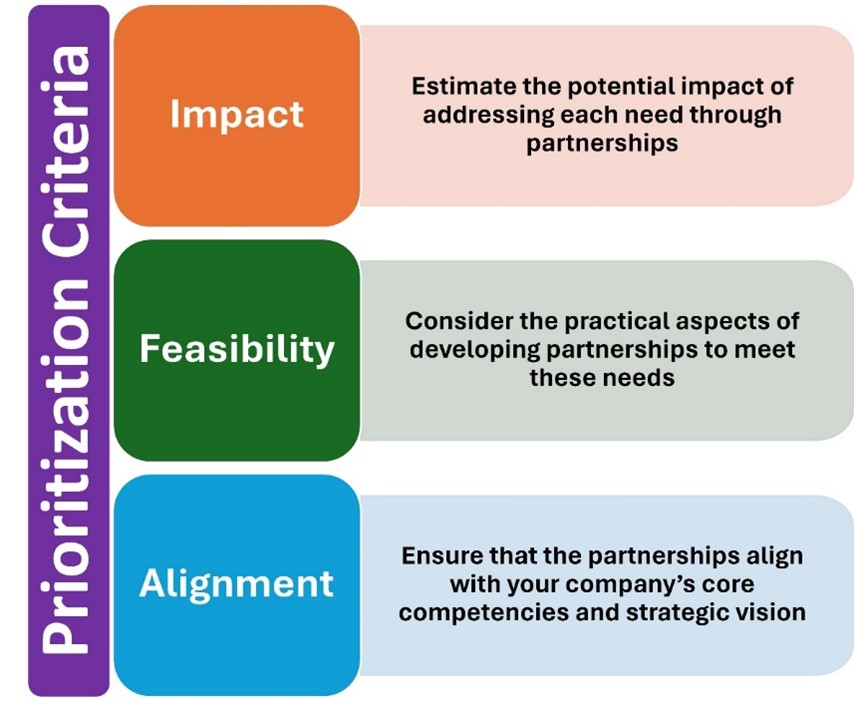
Selecting Potential Partners
Choosing the right partner starts with defining the proper criteria based on previously identified strategic needs. The criteria should reflect your strategic objectives and the operational compatibilities necessary for a successful partnership.
Key criteria to consider are listed below. Each criterion should be aligned with specific strategic needs. They should be prioritized based on the potential impact of the partnership and, where possible, make criteria measurable to facilitate objective evaluation:
• Market Position: Evaluate the potential partner’s market strength. Consider their market share, reputation, and influence within the industry.
• Resource Availability: Assess the resources that the partner can bring into the partnership, including technological, financial, and human resources.
• Compatibility of Values: Ensure that corporate culture and values are strongly aligned. This alignment is crucial for long-term partnership success.
• Innovation Capabilities: Identify the partner’s ability to innovate and adapt. This is particularly important in dynamic sectors where advancing technologically can be a significant advantage.

Case Study
BMW and Toyota embarked on a strategic partnership in 2013 to co-develop fuel cell technology, combining BMW’s luxury car engineering prowess with Toyota’s lead in hybrid technology. This alliance aimed to enhance the technological capabilities of both companies and accelerate the development of eco-friendly vehicles.
Finding the right partners involves effectively leveraging multiple channels and methods to scout potential candidates. To identify and connect with potential business partners effectively, use databases that categorize companies by sector, size, and market presence, which can offer valuable initial insights into their financial stability and market activities. Attending industry-specific events provides a prime opportunity to meet prospective partners in person, allowing you to assess their capabilities and business focus directly. Leveraging online business networks and platforms like LinkedIn is also crucial, enabling you to reach out to potential partners and gain further insights through mutual connections. Moreover, employing professional consultants and specialized matchmaking services can be immensely beneficial; these experts can access extensive networks and uncover hidden opportunities, enhancing your chances of forming strategic alliances.
Once potential partners are identified, a thorough evaluation process is crucial to select the best fit.
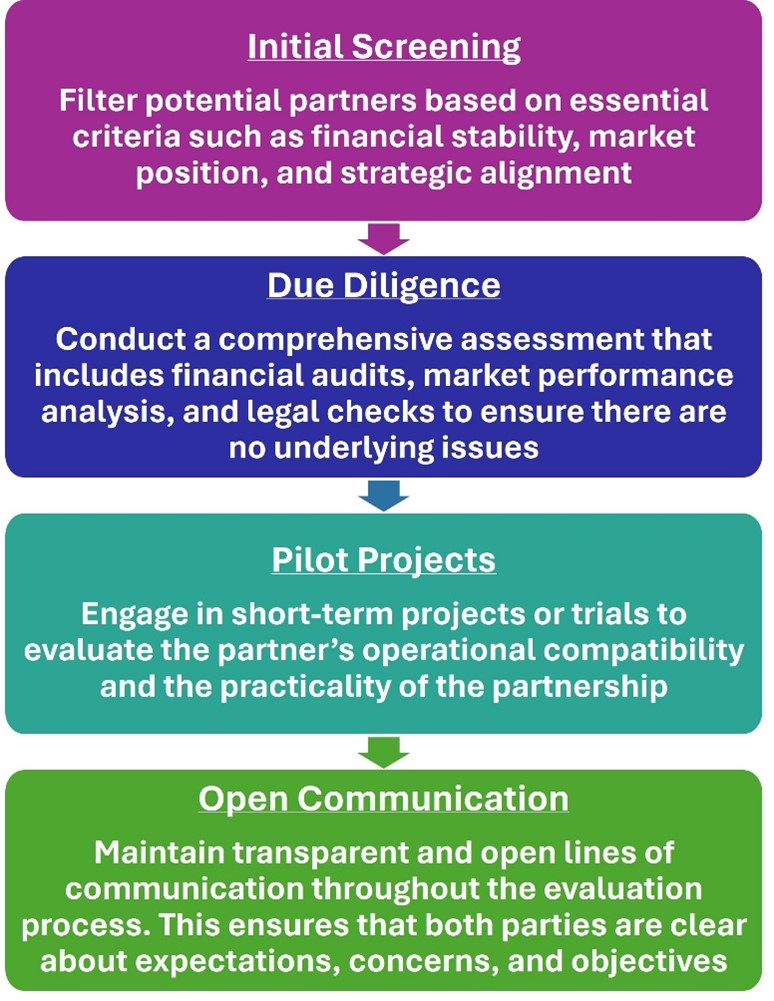
By mastering these criteria, search techniques, and evaluation processes, informed decisions can be made about selecting partners.
Negotiating Partnership Terms
Successful negotiation begins well before the parties sit down at the table. Preparation is crucial to understand what you want from the agreement and what the other party might seek. The following are the preparation steps:
• Understand Your Objectives: Clearly define what you want to achieve from the partnership, including financial goals, access to new markets, technology, or expertise.
• Research the Partner’s Interests: Gather as much information as possible about the potential partner’s business objectives, challenges, and strengths. This information will guide your approach during negotiations.
• Set Clear Negotiation Goals: Establish clear, achievable goals for the negotiation that support your strategic objectives. Be prepared to articulate these goals clearly and confidently.
In negotiations, a robust strategy starts with understanding your BATNA (Best Alternative to a Negotiated Agreement), which equips you with significant leverage by highlighting your best options should talks falter, thus preventing you from settling for a less favorable deal. Adopting a Mutual Gain Approach is essential, focusing on creating solutions that benefit all parties involved. This involves engaging in open discussions to fully understand each party’s needs and preferences and actively seeking synergies. Additionally, it’s crucial to master techniques for handling impasses, such as taking strategic breaks, reevaluating priorities, introducing new data, or even changing negotiators to inject fresh perspectives and breakthrough deadlocks. Together, these strategies ensure a well-rounded and effective negotiation process.
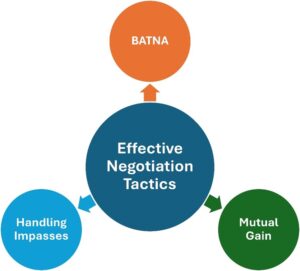
When forming partnerships, it is crucial to meticulously negotiate intellectual property rights to determine clear ownership of new developments, inventions, or work created under the collaboration while considering equitable ways to share intellectual property. Simultaneously, establishing revenue-sharing models is essential; these should detail how profits and costs are divided, with options ranging from fixed percentages to sliding scales based on performance metrics tailored to the project’s specific nature and duration. Additionally, confidentiality agreements are vital to ensure that both parties consent to what information remains confidential and understand the repercussions of any breaches. In all these aspects, seeking legal advice is indispensable. Involving legal counsel in drafting and reviewing all agreement terms provides critical insights into potential pitfalls and helps structure the agreement to avoid future legal complications, ensuring a robust and legally sound partnership framework.
Formalizing Agreements
Creating a solid partnership agreement is critical to its success and clarity. The essential components that must be considered and clearly defined in any partnership agreement include:
• Scope of Collaboration: Define precisely what the partnership will cover, including the projects, products, services, or markets involved. This clarity prevents misunderstandings and scope creep.
• Roles and Responsibilities: Specify each party’s roles and responsibilities clearly to ensure accountability and facilitate smooth collaboration.
• Governance Structures: Establish governance protocols that outline how decisions are made, who makes them, and the processes for resolving disputes. This might include forming a joint management committee or board.
• Exit Strategies: Include clear terms for how the partnership can be dissolved amicably, detailing the conditions under which a party can exit the partnership and the steps involved in termination.
When crafting partnership agreements, using clear and specific language to eliminate ambiguity is paramount. This involves defining technical terms and providing detailed descriptions of partnership activities to ensure all parties have a mutual understanding. Including flexibility in the agreement allows for adjustments in response to changes in the business environment, such as renegotiating terms or modifying the scope of work. Additionally, conducting iterative reviews with all stakeholders is essential. These review sessions help refine the agreement, ensuring it aligns with the goals and capabilities of both parties. Moreover, it is strongly recommended that legal counsel review all agreement drafts. Legal experts play a crucial role in ensuring the agreement complies with all applicable laws and regulations and that its terms are enforceable, safeguarding the interests of all parties involved.

Before progressing to signing a partnership agreement, it is crucial to secure approvals from all relevant stakeholders, including senior management, legal departments, and board members, depending on each organization’s structure. Discussing and arranging the logistics of the signing process is also vital, including details on the location of the signing, the required attendees, and the number of copies that need to be signed to ensure all parties have a record. Furthermore, confirming that all legal prerequisites are met before signing is essential. This includes obtaining regulatory approvals or completing compliance checks to guarantee the agreement’s legality and validity. These steps collectively ensure a smooth finalization process, protecting the interests of all parties involved.
By mastering the art of drafting and formalizing agreements, you will be equipped to create robust, effective, and enforceable partnership agreements. These agreements will protect your business’s interests and provide a clear framework for successful and sustainable partnerships.
Building Trust and Commitment
Trust is the cornerstone of any successful partnership. Engaging in shared activities can significantly enhance trust levels between partners by improving communication, understanding, and cooperation. Effective trust-building strategies include:
• Joint Workshops: Conduct workshops that involve members from both organizations. Focus these workshops on collaborative problem-solving related to the partnership’s goals.
• Team Building Activities: Organize activities not strictly business-focused, such as retreats or team sports. These help break down formal barriers and foster personal connections among team members.
• Regular Stakeholder Meetings: Meet stakeholders from both sides frequently to discuss progress, address concerns, and adjust strategies as necessary. Regular communication keeps everyone informed and engaged.
To foster a harmonious partnership, arranging cultural awareness sessions where partners can share insights into their organizational cultures, work practices, and core values is beneficial. This mutual understanding helps mitigate potential cultural clashes and aligns operations more closely. Additionally, implementing regular cultural exchanges, such as staff rotations between the two organizations, allows team members to experience and understand each other’s working environments firsthand. This direct interaction promotes deeper collaboration and integration. Furthermore, conducting alignment workshops designed to synchronize business practices and operational procedures can further harmonize the working relationship, ensuring a smoother and more effective partnership.
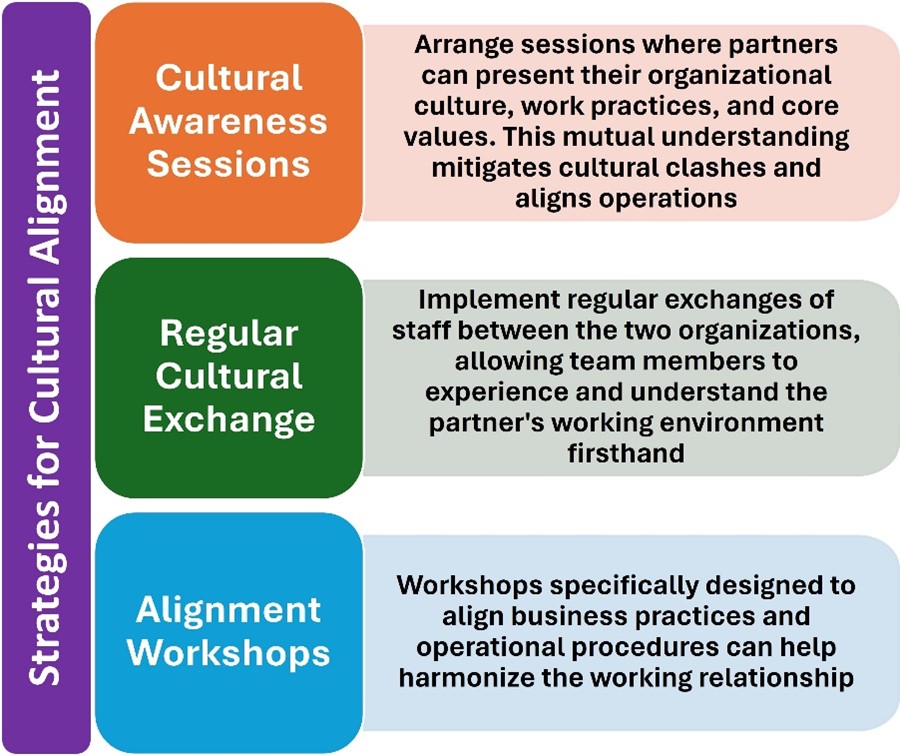
To ensure the ongoing health and success of a partnership, it is essential to schedule regular review sessions. These sessions are opportunities to assess the partnership’s dynamics, celebrate achievements, and identify areas for improvement. Celebrating significant milestones within the partnership boosts team morale and emphasizes the partnership’s value, reinforcing commitment among all parties. Additionally, fostering a culture of openness and transparency is crucial. Encouraging stakeholders to address challenges and concerns directly and constructively helps prevent minor issues from escalating into significant obstacles, maintaining the health and productivity of the partnership. This integrated approach of regular reviews, milestone celebrations, and open communication builds a robust framework for a successful collaboration.
Building trust and commitment in strategic partnerships involves more than just good intentions. It requires deliberate, consistent actions to develop deep mutual respect, alignment of organizational cultures, and continuous engagement. By implementing these strategies, you can establish and maintain strong, effective partnerships that stand the test of time and bring mutual benefits.

Managing Partner and Stakeholder Relationships
Understanding Stakeholder Expectations
Mastering the art of identifying and understanding stakeholders’ diverse expectations to ensure alignment with the strategic partnership’s goals is essential. This involves a multifaceted and dynamic approach and should be revisited regularly as the partnership evolves and new stakeholders emerge.
Effective Communication Plans
Create a detailed communication plan to address the diverse needs of stakeholders. Begin by classifying stakeholders according to their influence, interests, and preferred communication methods. This allows for tailored messaging that resonates with each group’s unique concerns and expectations.
For example, digital platforms like email and company intranets can be utilized for continuous low-stakes updates, and direct meetings or video conferences can be reserved for high-impact communications. Regular newsletters can summarize key developments, while detailed progress reports may be scheduled quarterly to provide deeper insights into project advancements or strategic shifts.
Ensure all communication tools are leveraged to maintain a consistent message across all channels, reinforcing transparency and accountability. Encourage stakeholder feedback through surveys or direct channels to foster a sense of involvement and to continuously refine communication strategies based on stakeholder input. Monitor the effectiveness of different communication methods and adjust to enhance clarity and engagement, ensuring that all parties remain well-informed and aligned with the partnership’s goals.

Case Study
SpaceX’s partnership with NASA for the Commercial Crew Program has revolutionized space travel and showcased effective stakeholder management, balancing governmental expectations with commercial goals. The collaboration led to the successful launch of Crew Dragon, marking a new era in space exploration. This demonstrates how understanding and managing diverse stakeholder expectations can lead to groundbreaking successes and pioneer new industry standards.
Proactive Conflict Identification and Resolution Techniques
Develop clear channels for timely communication and feedback to identify and address potential conflicts quickly. Introduce training sessions focused on negotiation and mediation techniques, equipping team members with the skills to manage disputes effectively and maintain positive stakeholder relationships.
View conflicts as opportunities for improvement, approaching each situation with a mindset geared toward constructive resolution. Establish a structured conflict resolution process, which includes clear escalation procedures to ensure disputes are addressed promptly and fairly. This structured approach helps preserve the integrity of the partnership by resolving issues before they escalate and maintaining trust and cooperation among stakeholders.
Performance Monitoring and Feedback
Similar to what has been discussed in other areas of this workshop, define key performance indicators (KPIs) that align with the strategic objectives of the partnership. These should cover various aspects of the partnership, including financial performance, operational efficiency, and relationship dynamics. Assess these KPIs using techniques such as the balanced scorecard to provide a holistic view of the partnership’s health. Schedule routine review meetings to discuss these indicators, allowing stakeholders to share insights and adjust strategies as necessary. Promote an open feedback culture where stakeholders can voice concerns and suggestions without hesitation, which supports a collaborative and adaptive operational environment.
Navigating Changes in Partnership Agreements and Market Conditions
Prepare for changes by incorporating flexibility into partnership agreements, allowing adjustments as business environments evolve. Develop a comprehensive change management plan that includes monitoring mechanisms for external market shifts and internal changes in stakeholder expectations.
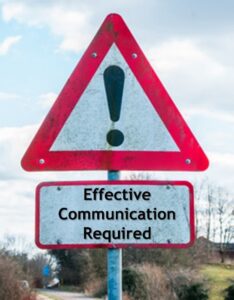
Effective communication is crucial in managing change. Ensure that all stakeholders are regularly informed about potential changes, understand the reasons behind these changes, and are actively involved in the transition process. This inclusive approach helps mitigate resistance and maintains alignment among all parties during periods of change.
Deepening Stakeholder Long-term Engagement
Maintain regular communication about the partnership’s progress and involve stakeholders in decision-making processes to foster a more profound sense of engagement and ownership. Implement structures like stakeholder advisory boards and annual partnership forums to provide platforms for continuous involvement and feedback.
Recognition programs can also be beneficial, highlighting and rewarding stakeholders’ contributions to the partnership’s success. These efforts should build trust, demonstrate ongoing value, and align the collaboration with stakeholders’ evolving needs and expectations, ensuring sustained commitment and mutual benefit.


Exercise: The Negotiation Game
• Two teams of five.
• To practice partnership negotiation skills in a low-stakes environment.
• Each team identifies a hypothetical business within which they are stakeholders.
• The hypothetical business and a brief description of what they do is disclosed to the other team.
• Each team creates a set of secret objectives without letting the other team know what they are.
• Both teams then meet and negotiate to form a partnership that meets their undisclosed objectives.
• When complete, each team discloses its secret objectives, and a short discussion follows to discuss how each team could have negotiated better.
• Participants learn the importance of preparation and strategy in negotiations.
• Reinforces the skill of advocating for one’s interests while accommodating the partner’s needs.
Aligning Interests for Mutual Success
Strategic Goal Alignment
Aligning strategic goals is essential for the success of strategic partnerships and alliances. This alignment process includes understanding each partner’s long-term objectives and core values and openly communicating individual goals to pinpoint intersections and complementarities. Partners should develop a shared vision and establish a formal agreement delineating overarching objectives, timelines, and key performance indicators (KPIs). Regular strategic review meetings are crucial to monitor progress and adapt strategies to align with shifting market dynamics or organizational priorities. Such meticulous alignment ensures that all parties work in synergy, significantly enhancing the prospects for long-term success.

Case Study
Tesla and Panasonic collaborated to build the Gigafactory for battery production, aligning their mutual interests in promoting electric vehicles and sustainable energy solutions. The partnership reduced battery costs by 30% and increased production efficiency.
Creating Value Together
Creating partnership value involves leveraging each partner’s strengths and capabilities to uncover collaborative opportunities. Partners should engage in innovative thinking and organize co-creation workshops to brainstorm new ideas, developing joint value propositions that benefit all stakeholders. An effective governance structure is vital to oversee these initiatives and ensure they align with strategic objectives. Regular performance measurements are necessary to refine strategies and optimize benefits, ensuring the partnership continuously generates value.
Shared Risk Management
In strategic partnerships, managing risks requires a collaborative approach to identifying, evaluating, and handling risks associated with market volatility, operational challenges, and strategic alignments. Partners should develop a joint risk management plan that includes clear strategies for risk mitigation and responsive actions. Maintaining open lines of communication and sharing information transparently is critical to staying informed about potential risks and enabling a coordinated response.
Incentive and Reward Systems
Effective incentive and reward systems align individual and collective efforts with the partnership’s strategic goals. These systems should encompass financial incentives, such as profit sharing and performance bonuses, and non-financial incentives, including recognition programs and professional development opportunities. Tailored to the specific context of the partnership, these rewards must be commensurate with the value created and flexible enough to remain relevant and motivating through regular reviews.
Continuous Alignment Processes
Maintaining strategic congruence over time demands regular reviews of goals, strategies, and performance. Structured alignment sessions are essential for discussing achievements and responding to changes in the external business environment. Clear communication channels and feedback mechanisms support ongoing adjustments and adaptation, embedding flexibility in the partnership agreement to facilitate dynamic adjustments as necessary.
Building Resilient Partnerships
Building resilience in partnerships hinges on establishing a foundation of trust and mutual understanding. It involves outlining precise mechanisms for conflict resolution and adaptability in agreements, diversifying areas of collaboration, and investing in joint capabilities to enhance responsiveness to changes. Promoting continuous learning and innovation is also crucial, enabling partners to navigate uncertainties and seize emerging opportunities efficiently.

Project Studies
Project Study (Part 1) – strategic Alignment Review
The Head of this Department is to provide a detailed report relating to the Strategic Alignment process that has been implemented within their department, together with all key stakeholders, as a result of conducting this workshop, incorporating process: planning; development; implementation; management; and review. Your process should feature the following 12 parts:
Objective:
Develop an analytical report evaluating each individual training participant’s department’s current state of strategic alignment.
Scope:
In Scope: Assessment of current operations alignment with strategic goals, identification of misalignment causes, and stakeholder engagement.
Out of Scope: Detailed organizational structure redesign, comprehensive market or competitive analysis.
Instructions:
Participants will review the organization’s strategic goals and operations, interview key stakeholders, and identify discrepancies or misalignments between stated objectives and operational reality.
Expected Outcome:
A detailed report outlining the current alignment state, with identified gaps and preliminary recommendations for alignment improvements.
Success Criteria:
Accuracy and depth of the alignment evaluation, clarity in identifying misalignment causes, and actionable preliminary recommendations.
Please include the results of the initial evaluation and assessment.
Project Study (Part 2) – Operational Enhancement Initiative
The Head of this Department is to provide a detailed report relating to the Strategic Alignment process that has been implemented within their department, together with all key stakeholders, as a result of conducting this workshop, incorporating process: planning; development; implementation; management; and review. Your process should feature the following 12 parts:
Objective:
Design and propose an operational enhancement initiative that directly supports the strategic alignment improvements identified in Part 1.
Scope:
In Scope: Identifying and developing specific operational changes, such as process improvements or resource reallocation.
Out of Scope: Changes that require significant capital investments.
Instructions:
Based on the alignment review, participants will design an operational enhancement initiative, plan its implementation, and outline expected impacts.
Expected Outcome:
A comprehensive proposal for an operational enhancement initiative, including implementation steps, required resources, and expected benefits.
Success Criteria:
Feasibility and relevance of the proposed operational changes, detailed planning, and alignment with organizational strategic goals.
Please include the results of the initial evaluation and assessment.
Project Study (Part 3) – Leadership Alignment and Development
The Head of this Department is to provide a detailed report relating to the Strategic Alignment process that has been implemented within their department, together with all key stakeholders, as a result of conducting this workshop, incorporating process: planning; development; implementation; management; and review. Your process should feature the following 12 parts:
Objective:
Develop and implement a leadership training program to enhance strategic alignment through improved organizational leadership effectiveness.
Scope:
In Scope: Identification of leadership alignment gaps, development and delivery of a leadership training program, and assessment of leadership effectiveness.
Out of Scope: General employee training programs and recruitment of new leadership positions.
Instructions:
Participants will identify key leadership behaviors that enhance strategic alignment, develop a training program to enhance these behaviors, and measure the program’s effectiveness through pre- and post-assessment tools.
Expected Outcome:
A structured leadership development program tailored to enhancing strategic alignment, complete with implementation guidelines and effectiveness evaluation metrics.
Success Criteria:
Successful rollout of the training program, demonstrable improvements in leadership behaviors related to strategic alignment, and positive feedback from program participants.
Please include the results of the initial evaluation and assessment.
Project Study (Part 4) – Initiative Implementation and Monitoring
The Head of this Department is to provide a detailed report relating to the Strategic Alignment process that has been implemented within their department, together with all key stakeholders, as a result of conducting this workshop, incorporating process: planning; development; implementation; management; and review. Your process should feature the following 12 parts:
Objective:
Implement the operational enhancement initiative proposed in Part 2 within the organization, together with a robust, sustainable monitoring plan.
Scope:
In Scope: Executing the operational changes, monitoring of implementation progress, and initial impact assessment.
Out of Scope: Long-term impact evaluation that exceeds the project’s timeframe.
Instructions:
Participants will oversee the implementation of the operational enhancement initiative, monitor the process through specific KPIs, and gather initial impact data.
Expected Outcome:
Successful implementation of the operational enhancement initiative and an initial report on its impact based on predefined KPIs.
Success Criteria:
Effective and timely implementation of the initiative, achievement of early-stage KPIs, and positive feedback from stakeholders.
Please include the results of the initial evaluation and assessment.
Project Study (Part 5) – Customer Alignment Initiative
The Head of this Department is to provide a detailed report relating to the Strategic Alignment process that has been implemented within their department, together with all key stakeholders, as a result of conducting this workshop, incorporating process: planning; development; implementation; management; and review. Your process should feature the following 12 parts:
Objective:
Design and implement an initiative to better align the organization’s offerings and interactions with customer needs and expectations, enhancing strategic alignment with market demands.
Note: Customers may be internal (next stage, internal departments that rely on us to fulfill their job duties) and/or external (end-users who are not part of the organization itself).
Scope:
In Scope: Analysis of current customer alignment and feedback, development of customer engagement strategies, implementation of targeted initiatives.
Out of Scope: Broad market analysis, new product development outside existing strategic goals.
Instructions:
Participants will gather and analyze customer feedback to assess current alignment, develop strategies to enhance customer engagement and satisfaction and implement specific initiatives to improve customer alignment.
Expected Outcome:
An operational plan for improving customer engagement, detailed initiative proposals, and initial metrics for measuring customer response and satisfaction improvements.
Success Criteria:
Effective execution of customer-focused initiatives, positive changes in customer satisfaction metrics, and alignment of customer feedback with strategic goals.
Please include the results of the initial evaluation and assessment.
Program Benefits
Finance
- Improved Performance
- Enhanced Capital
- Cashflow Optimization
- Process Streamlining
- Financial Reporting
- Forecasting Accuracy
- Budget Control
- Profit Maximization
- Prioritization Planning
- Revenue Growth
Management
- Informed Decision-Making
- Streamlined Operations
- Increased Productivity
- Effective Communication
- Cost Reduction
- Enhanced Visibility
- Growth Enabler
- Stakeholder Satisfaction
- Accelerated Innovation
- Strategic Alignment
Marketing
- Competitive Advantage
- Improved Conversion
- Enhanced CRM
- Scalable Sales
- Higher Profitability
- Better Forecasting
- Enhanced Negotiation
- Stronger Pipeline
- Efficient Prospecting
- Effective Upselling
Client Telephone Conference (CTC)
If you have any questions or if you would like to arrange a Client Telephone Conference (CTC) to discuss this particular Unique Consulting Service Proposition (UCSP) in more detail, please CLICK HERE.











